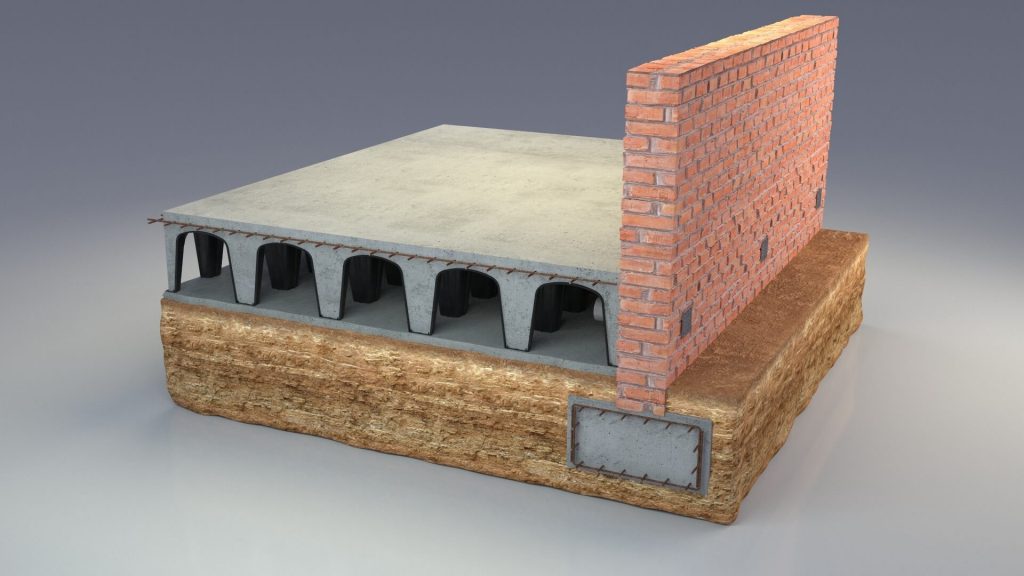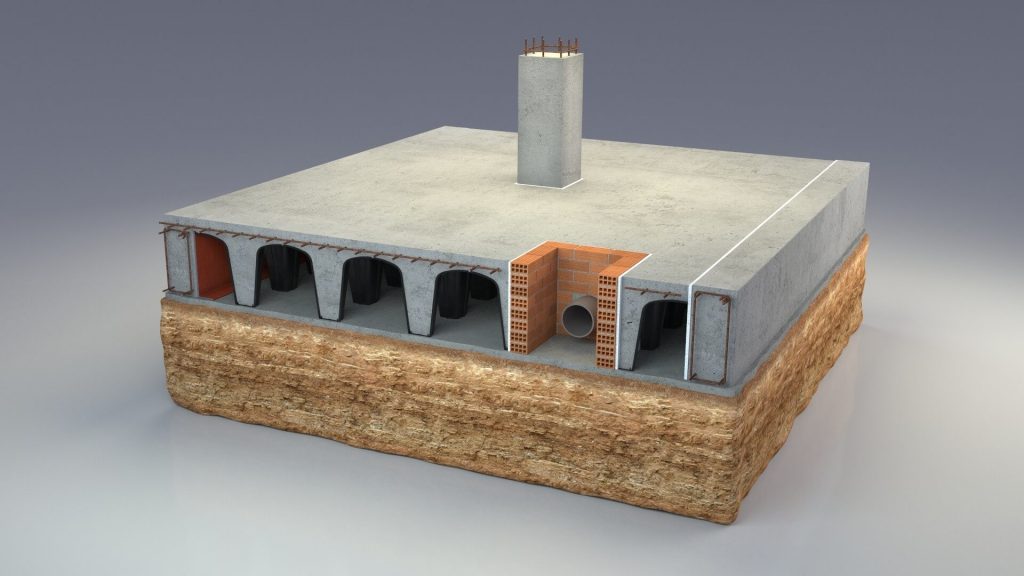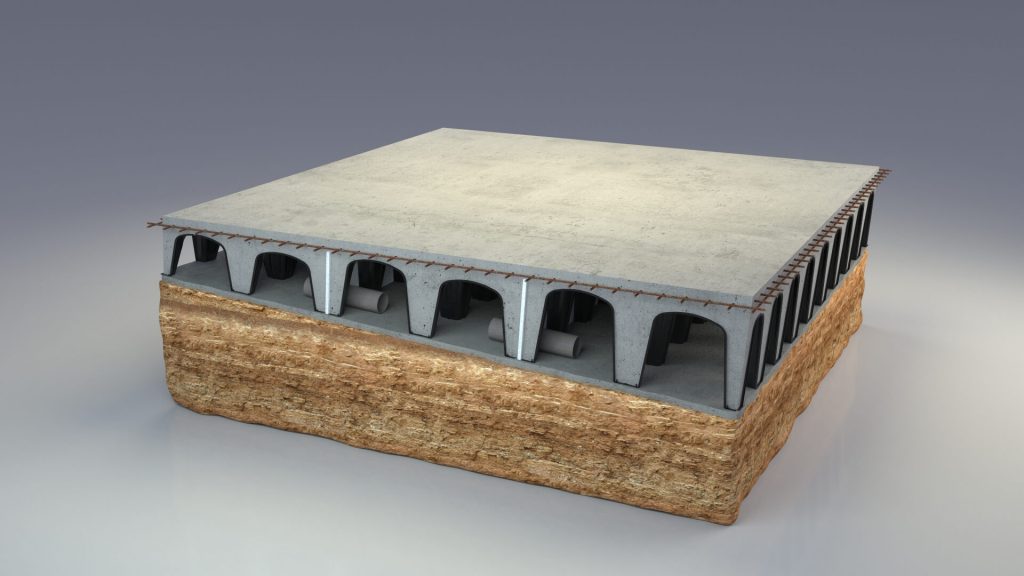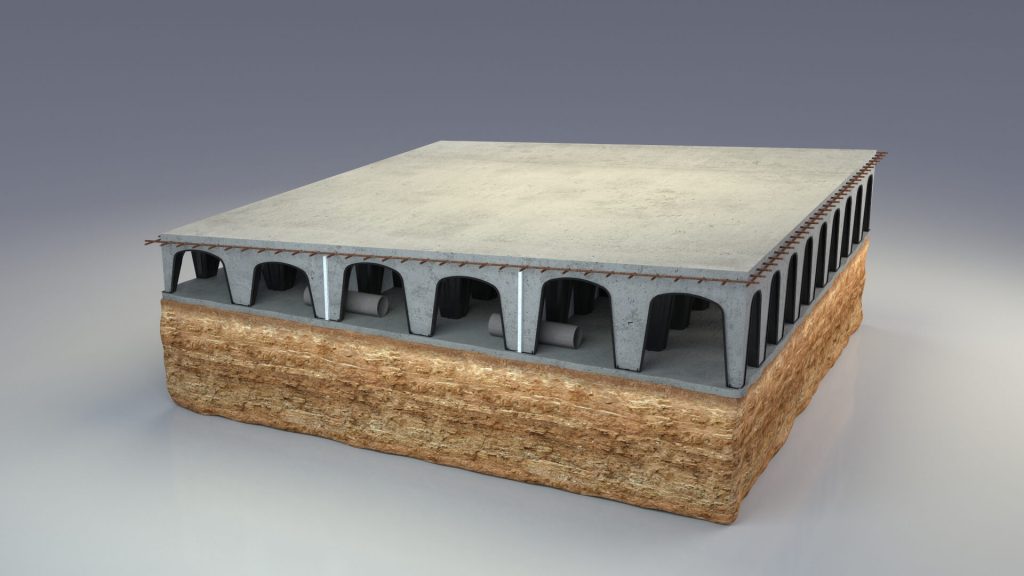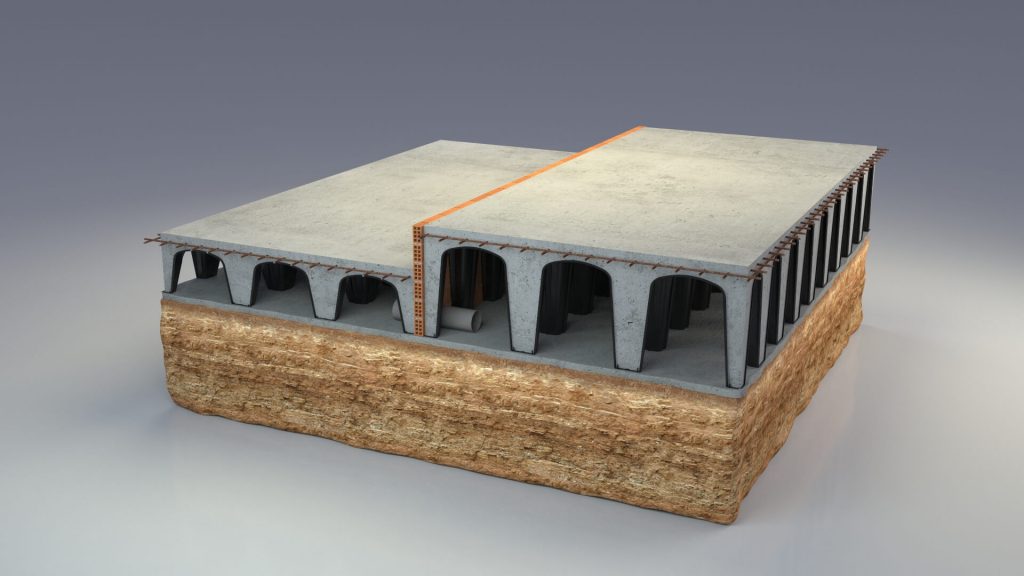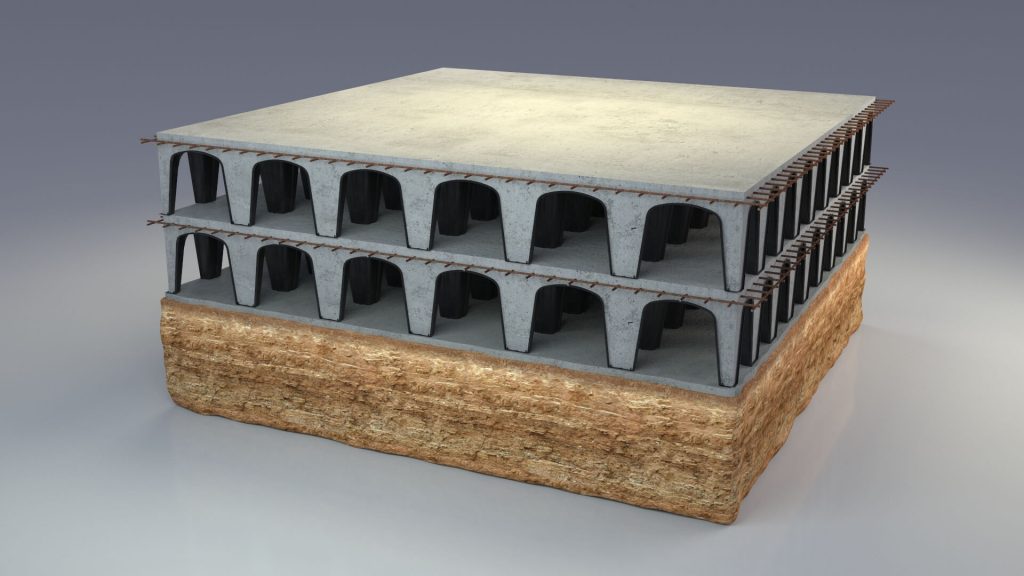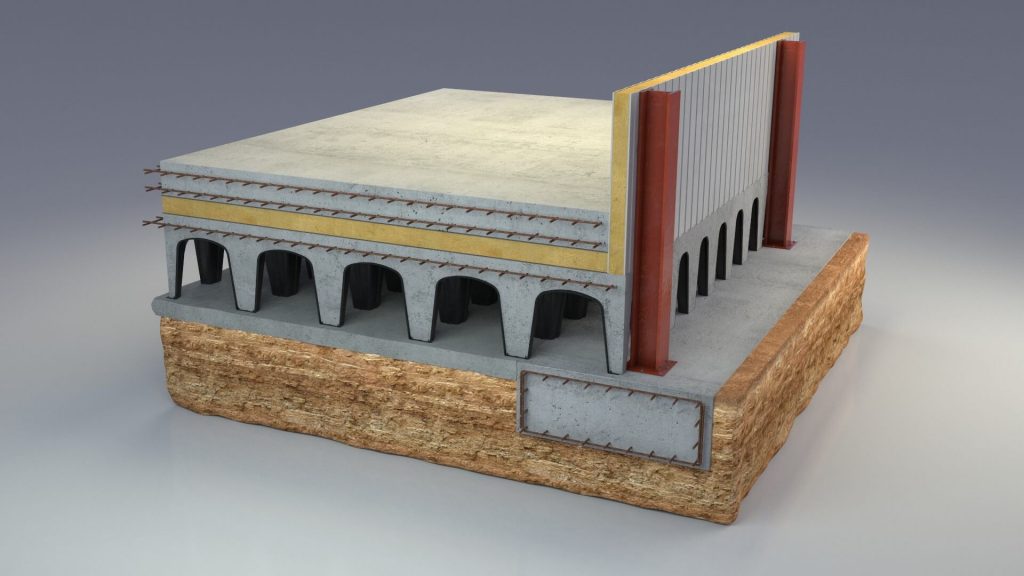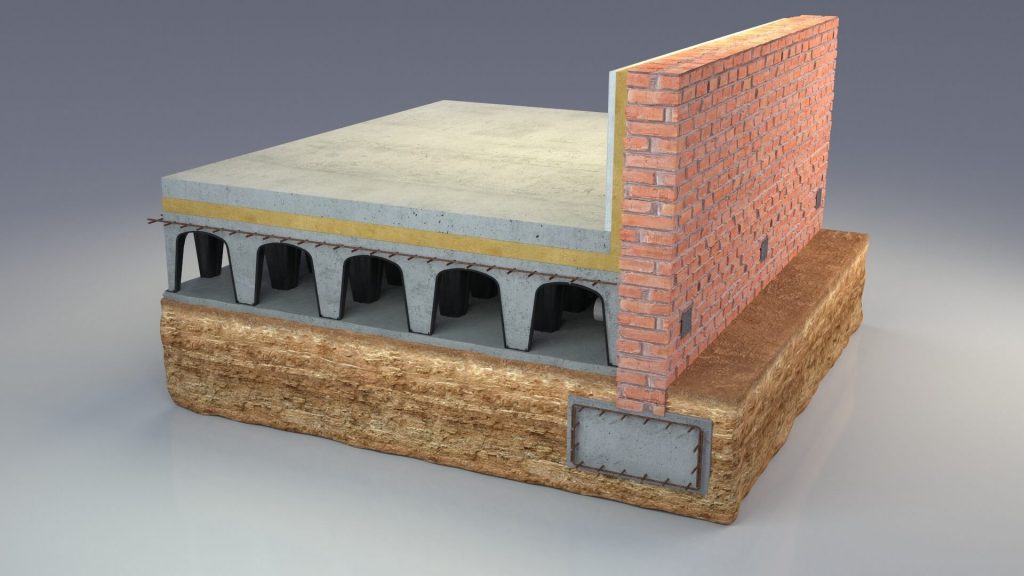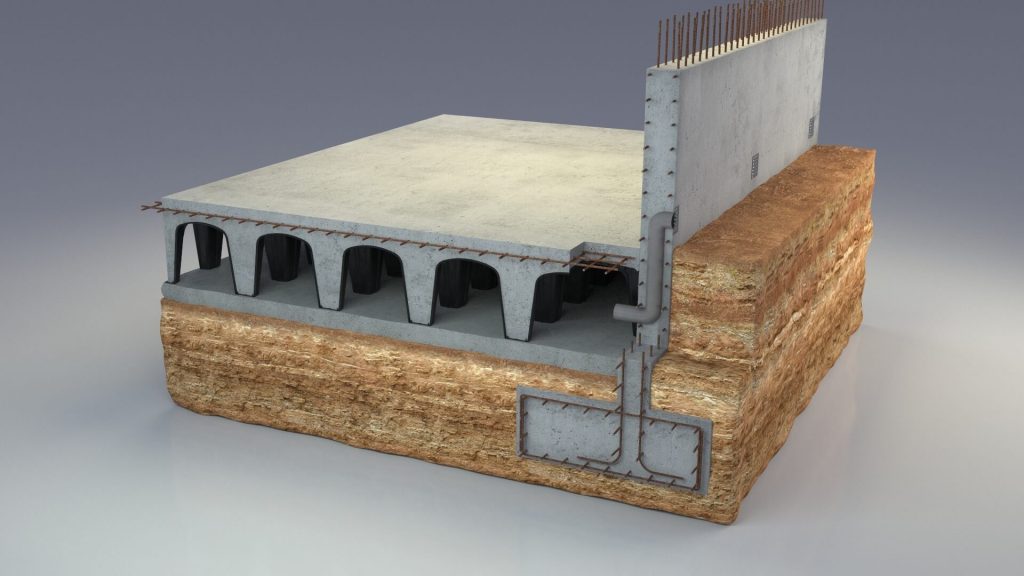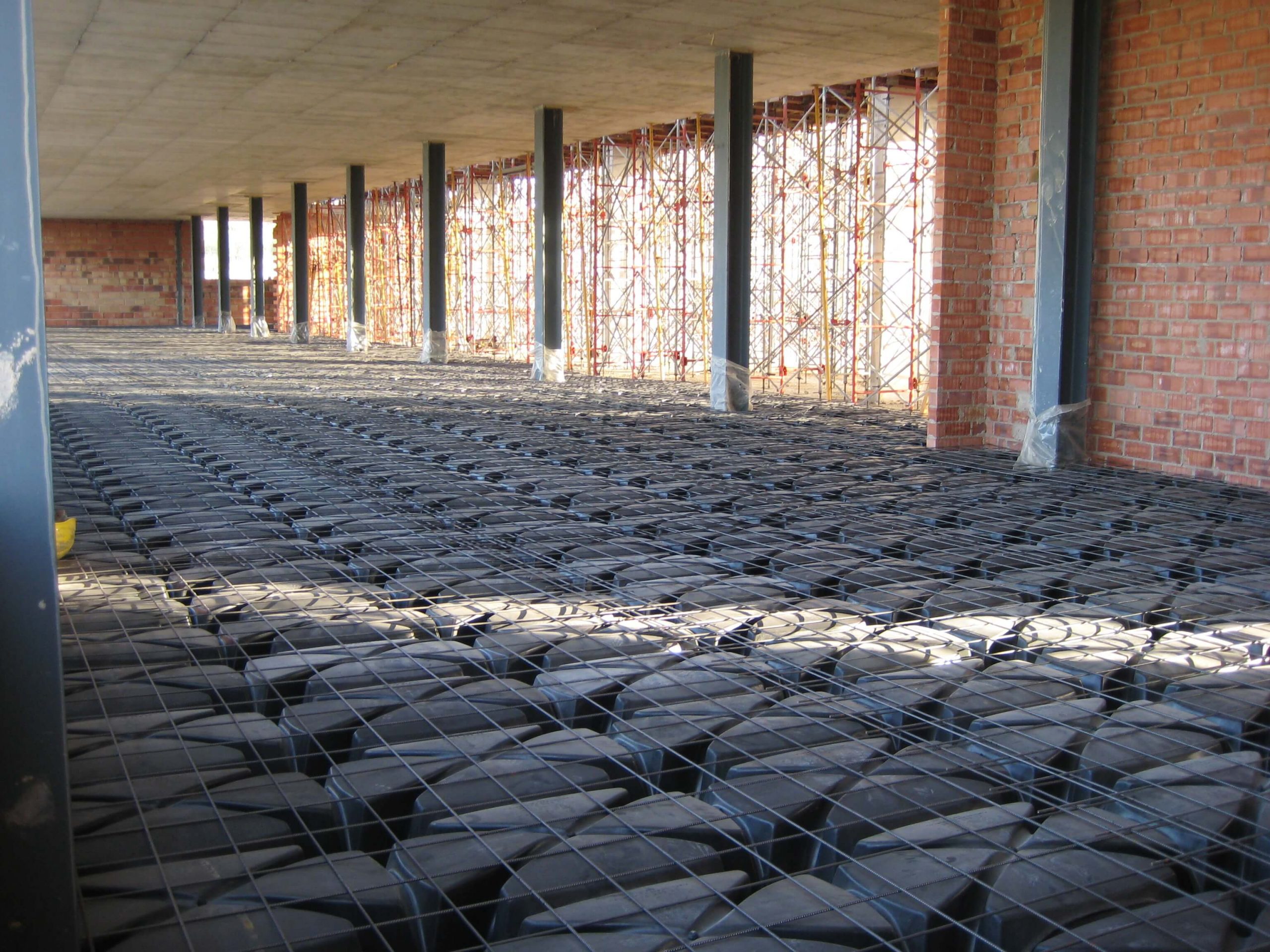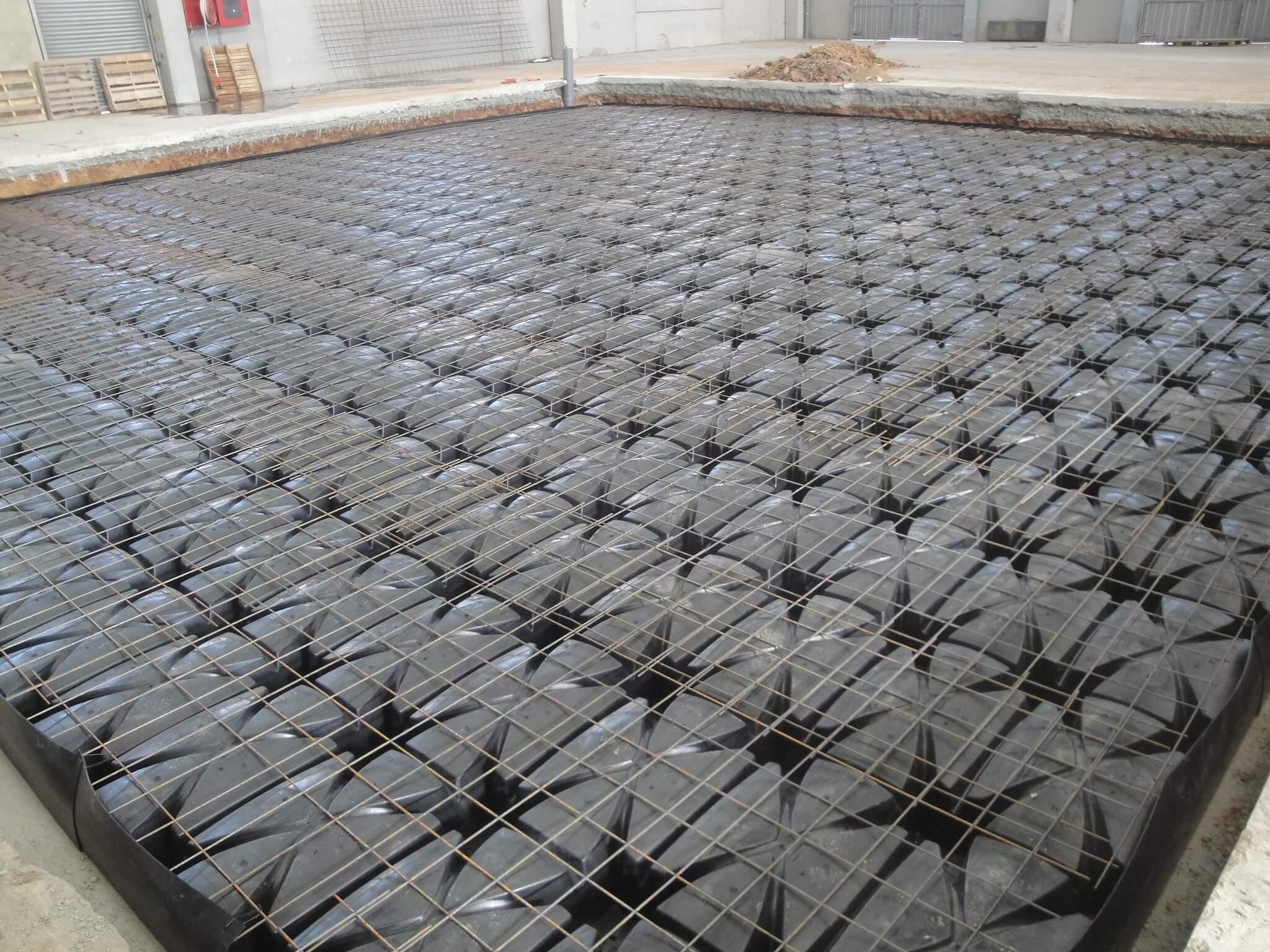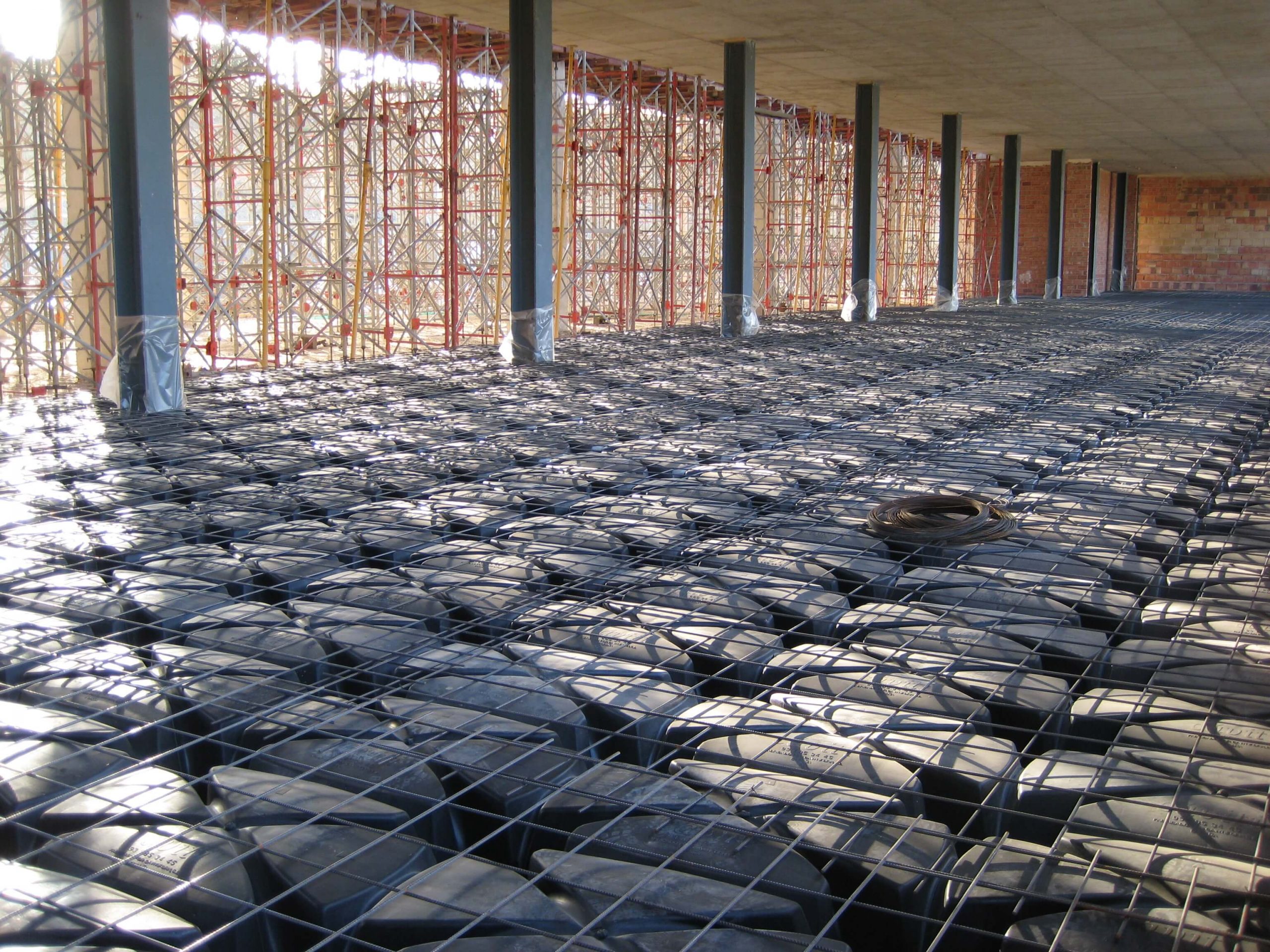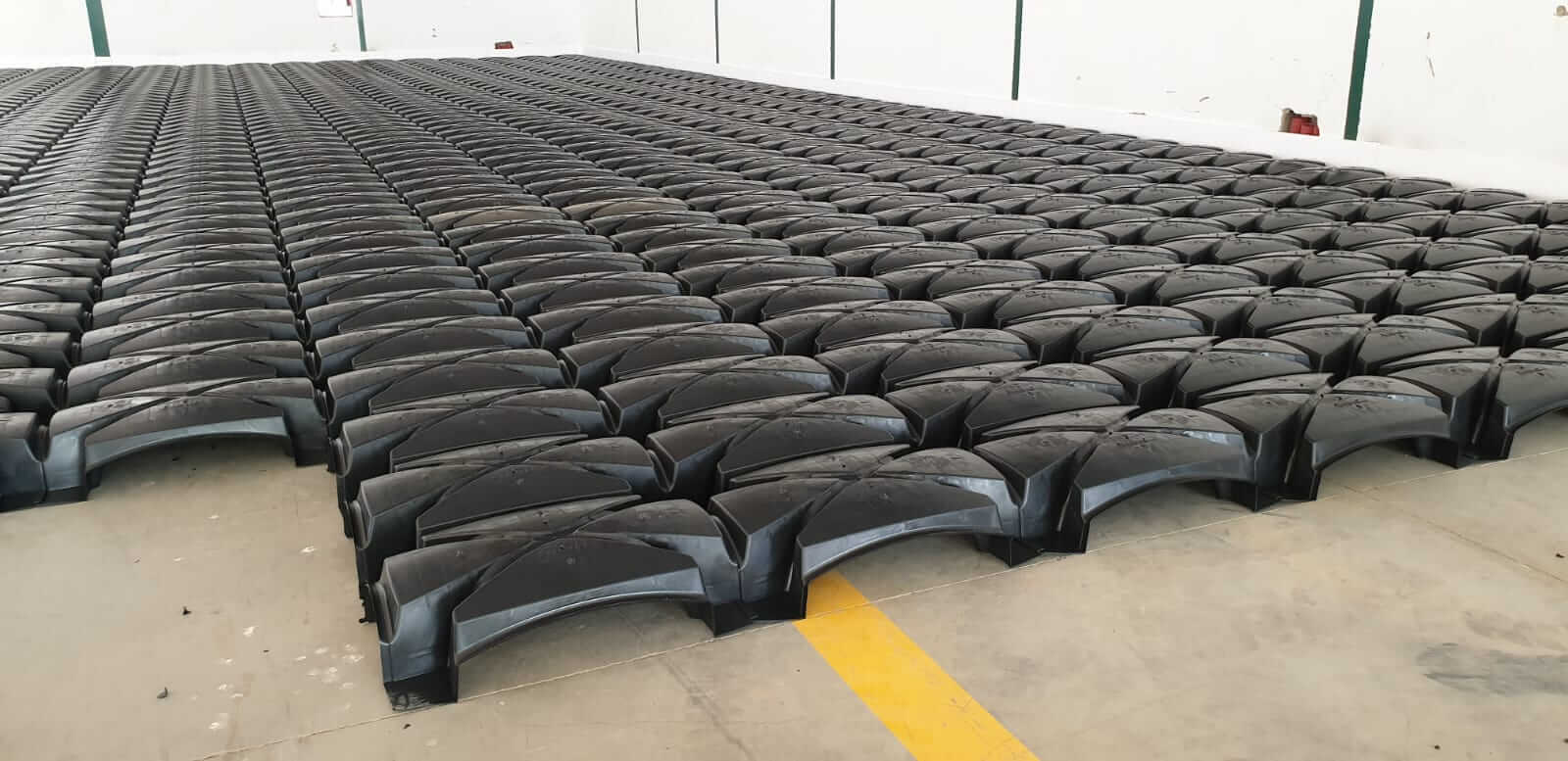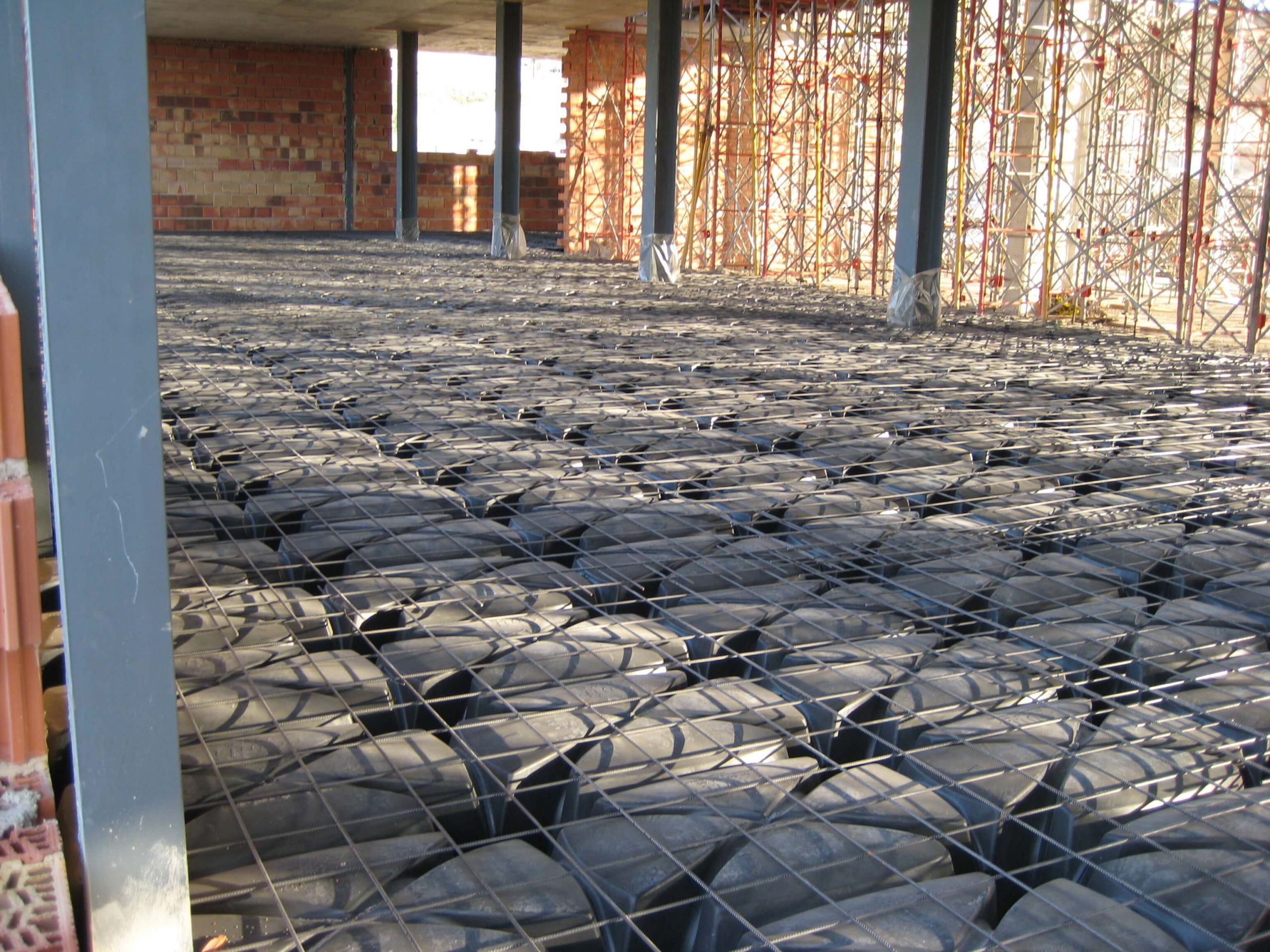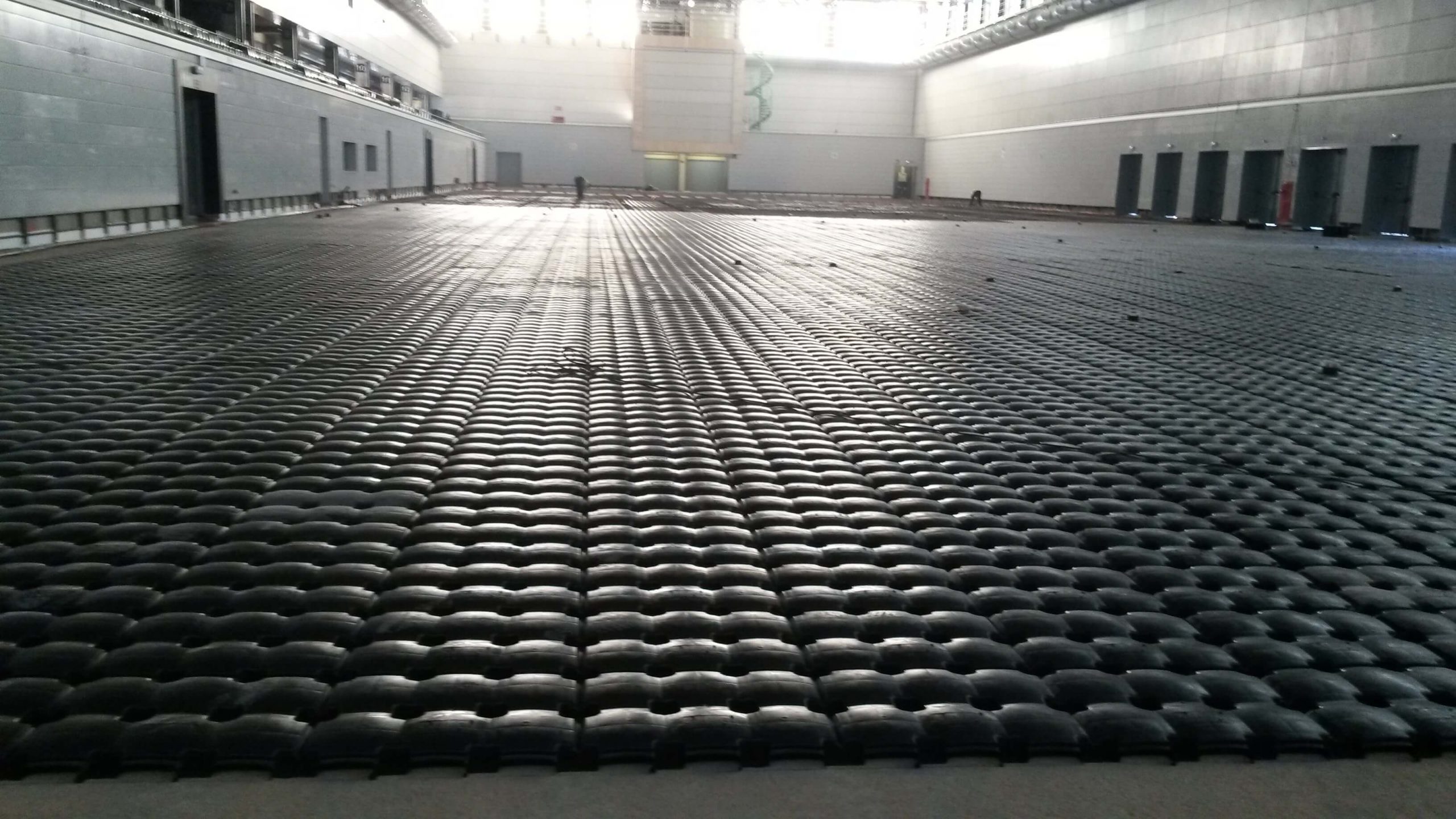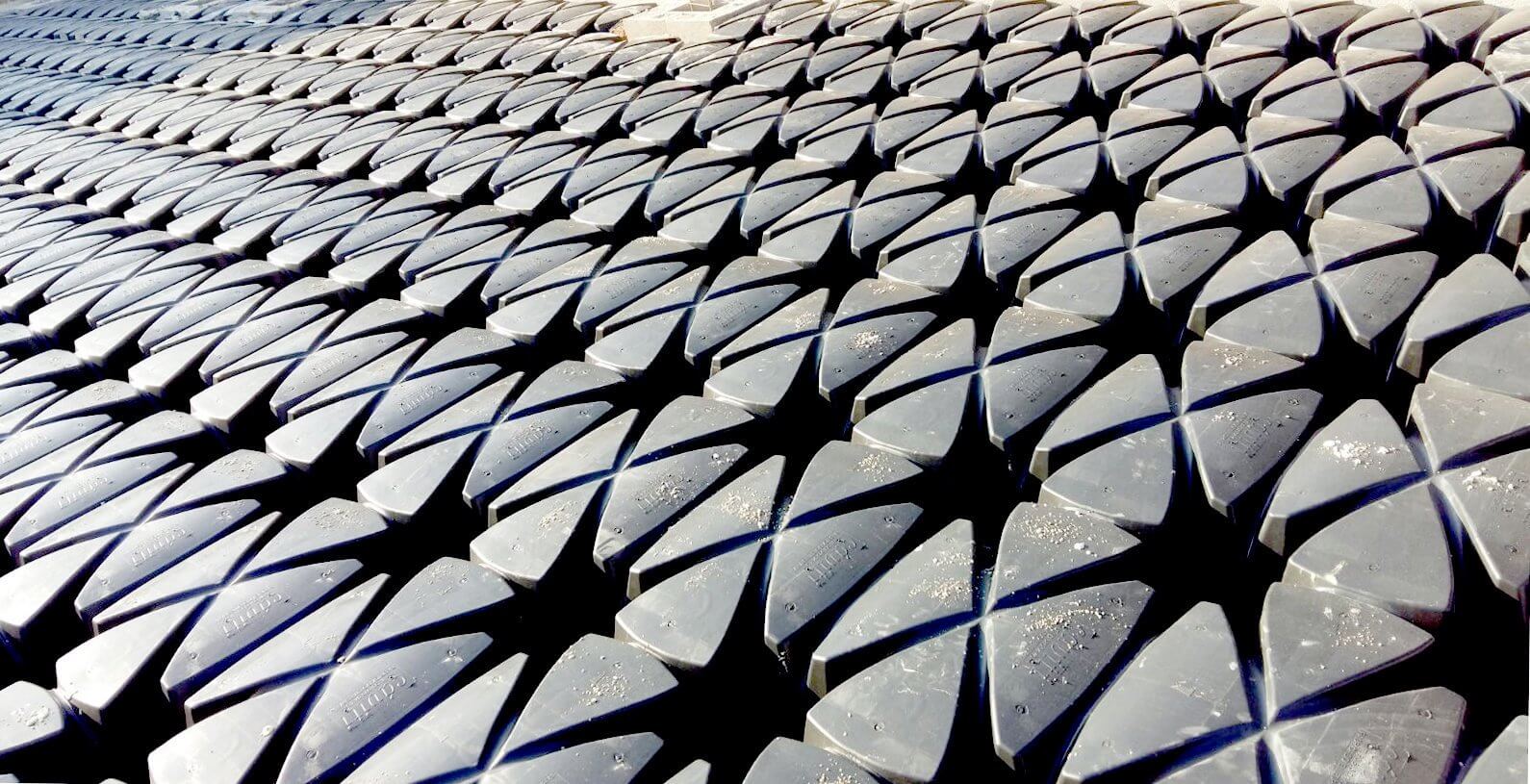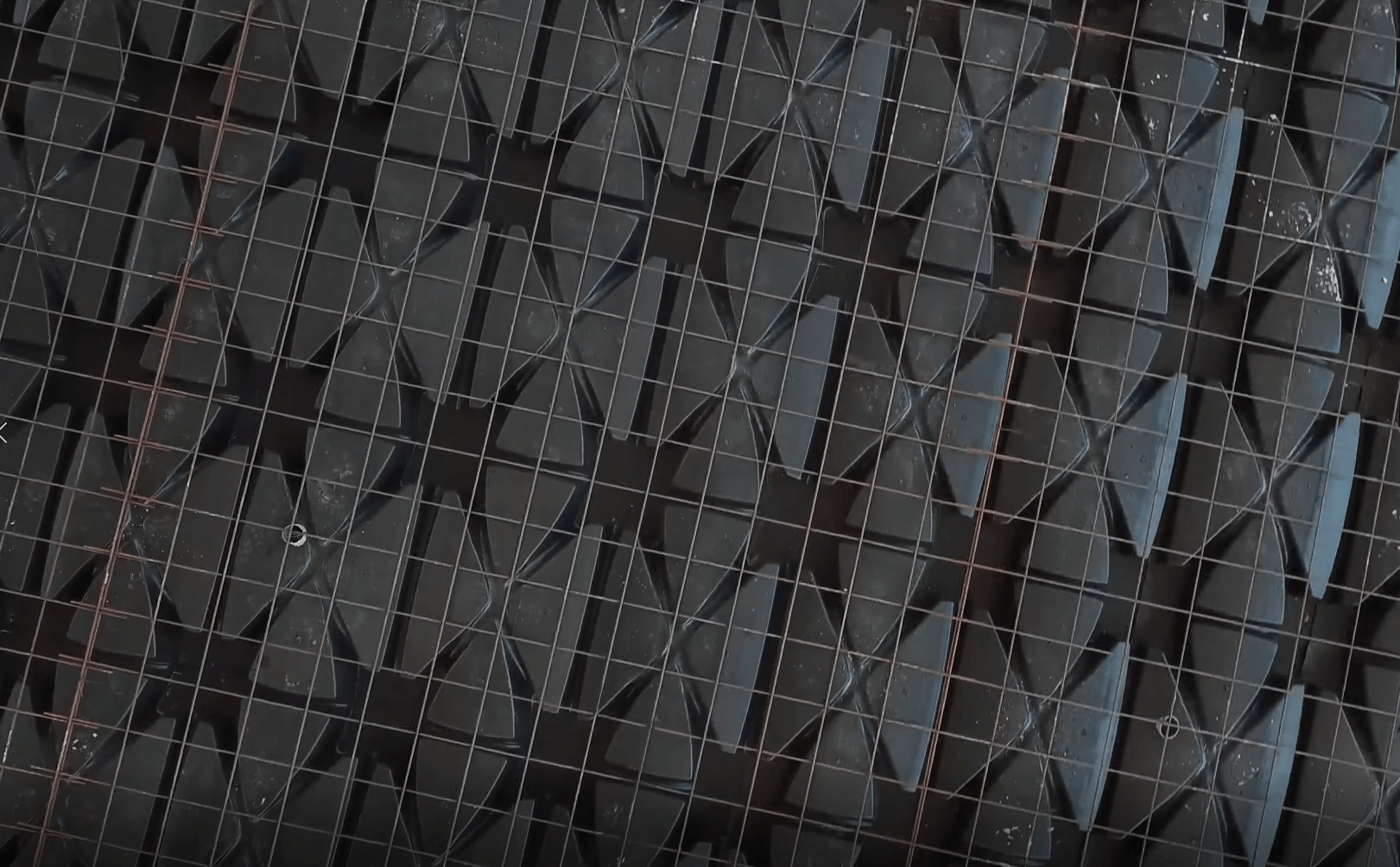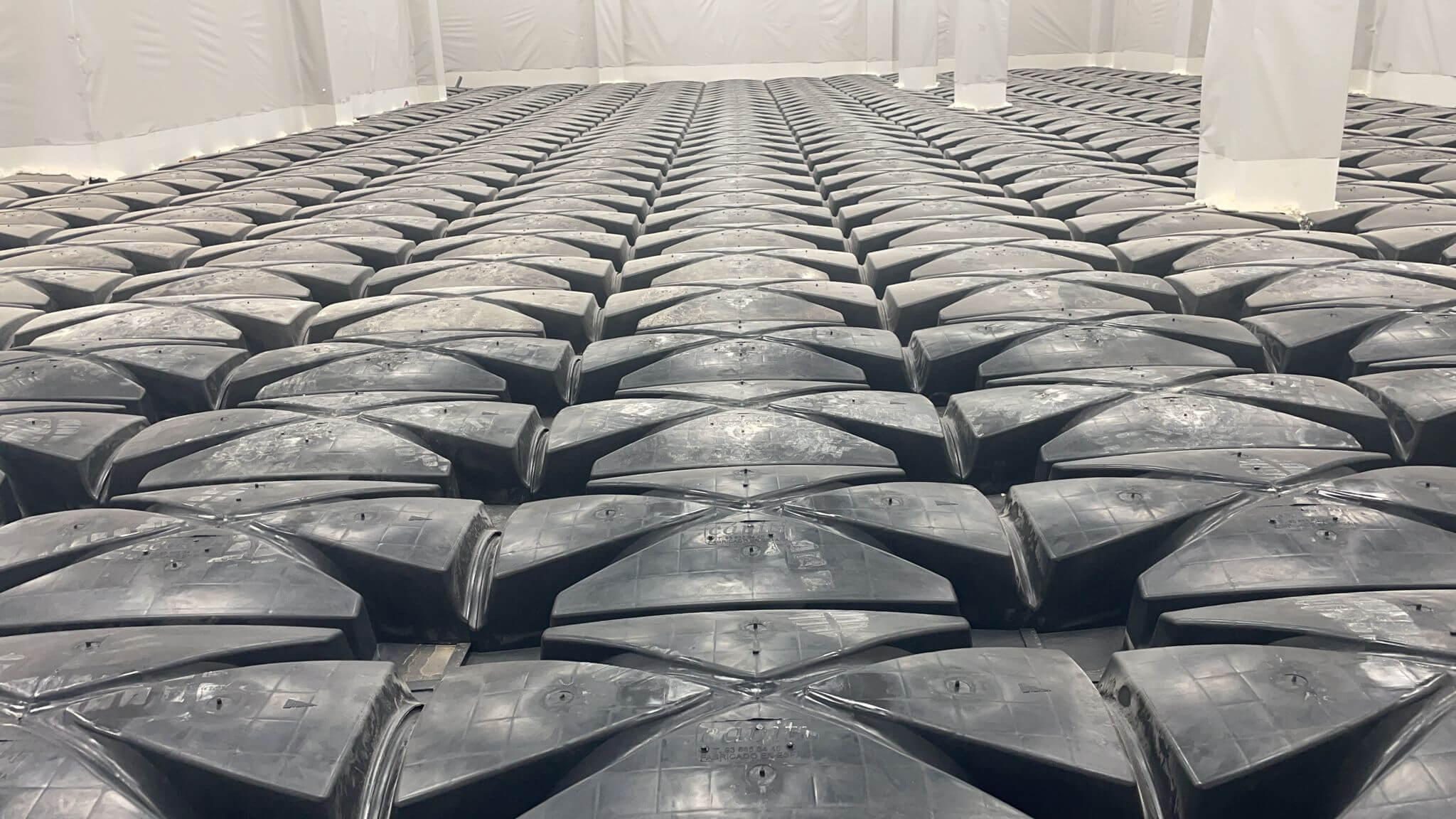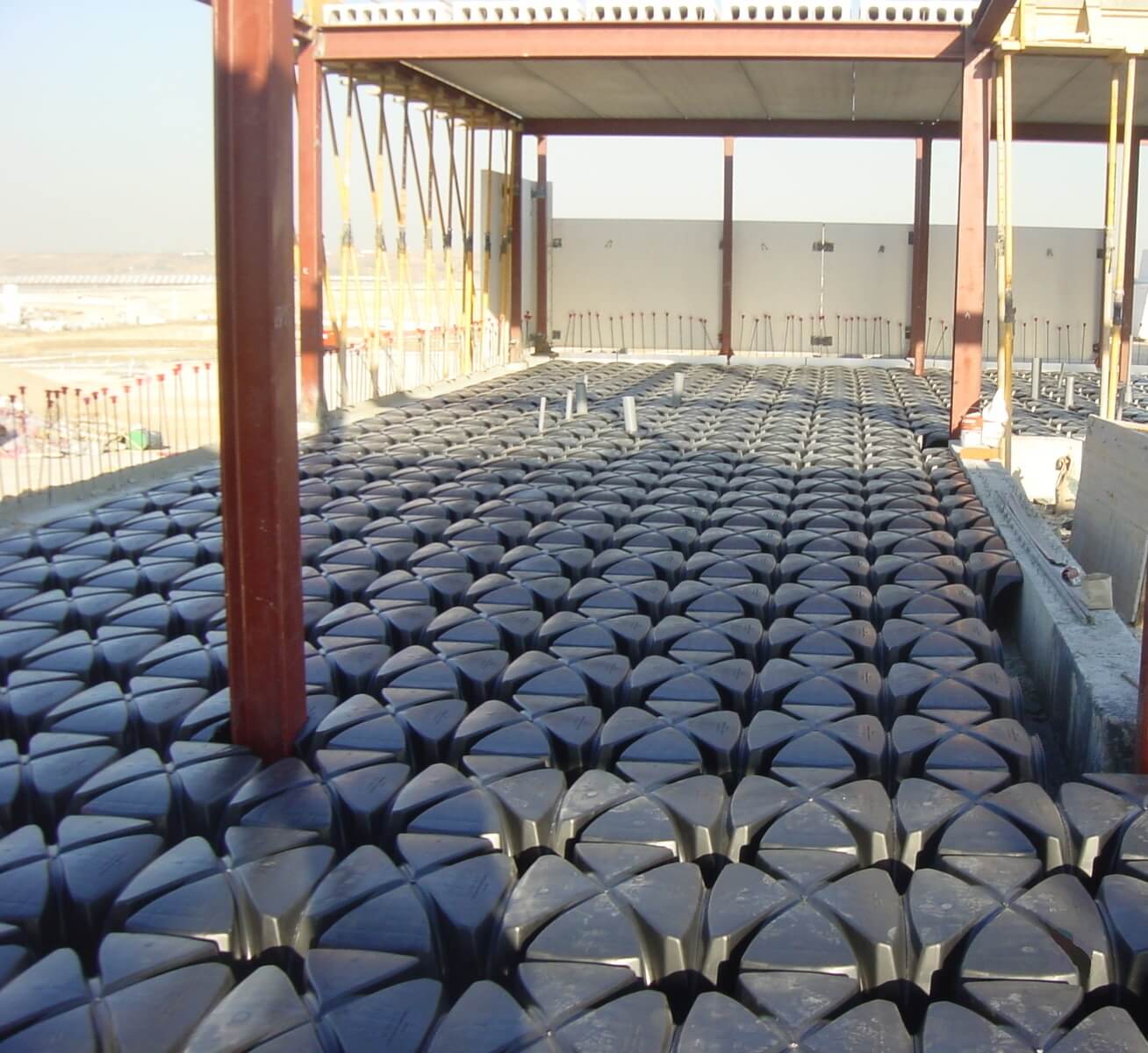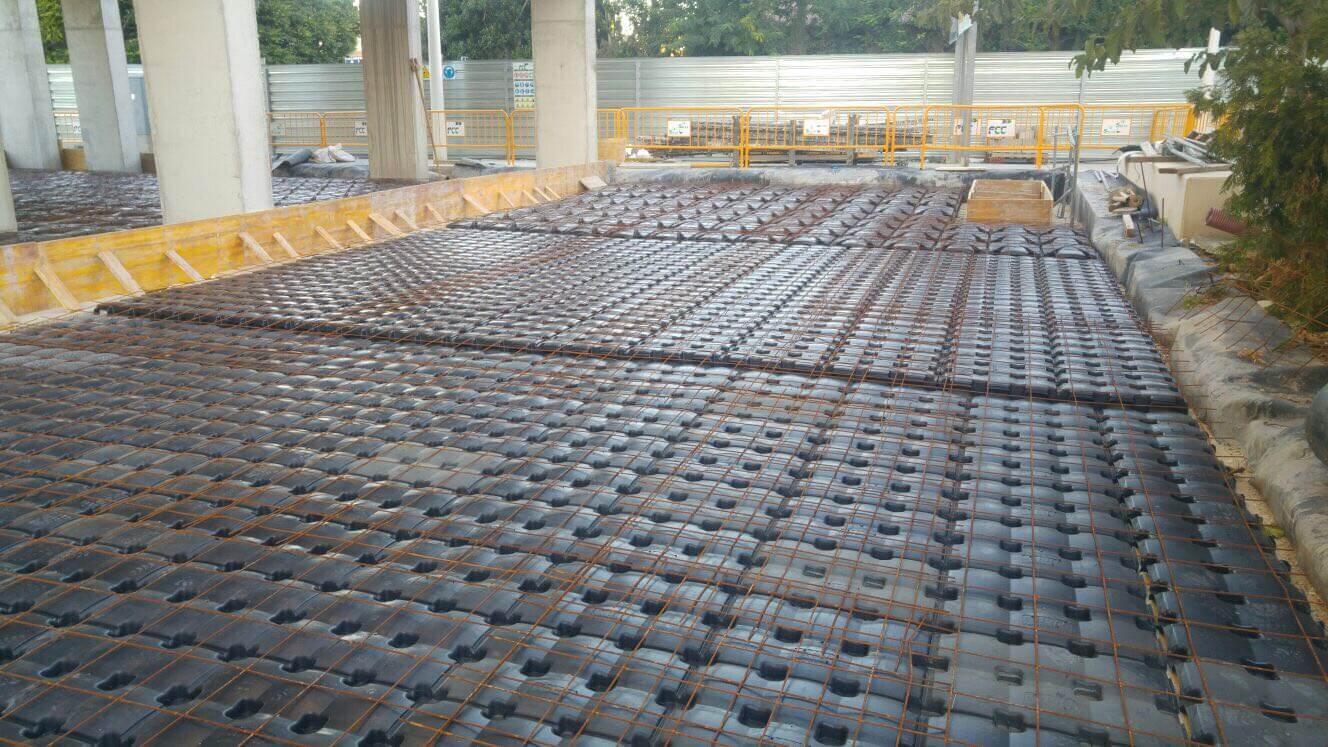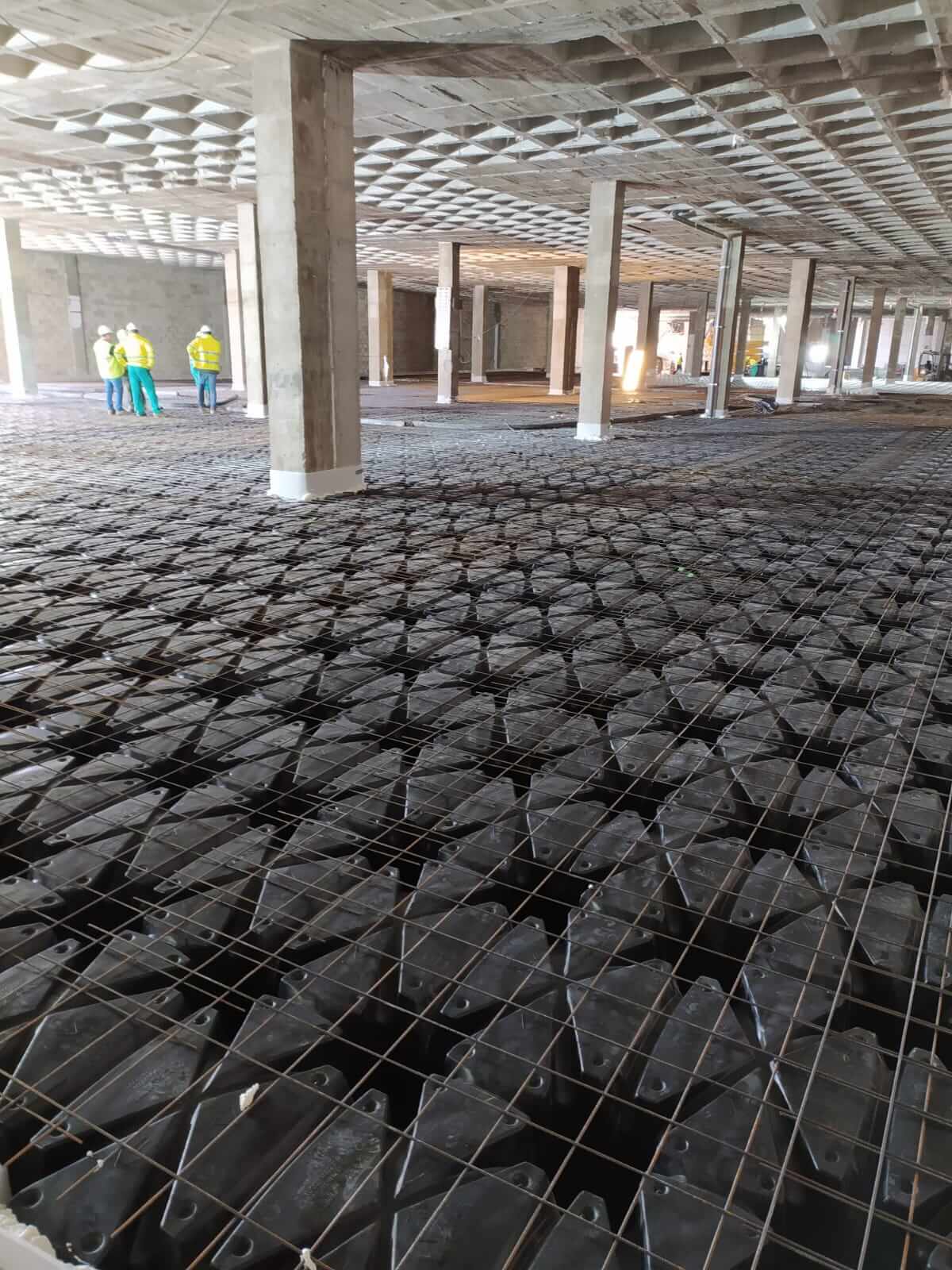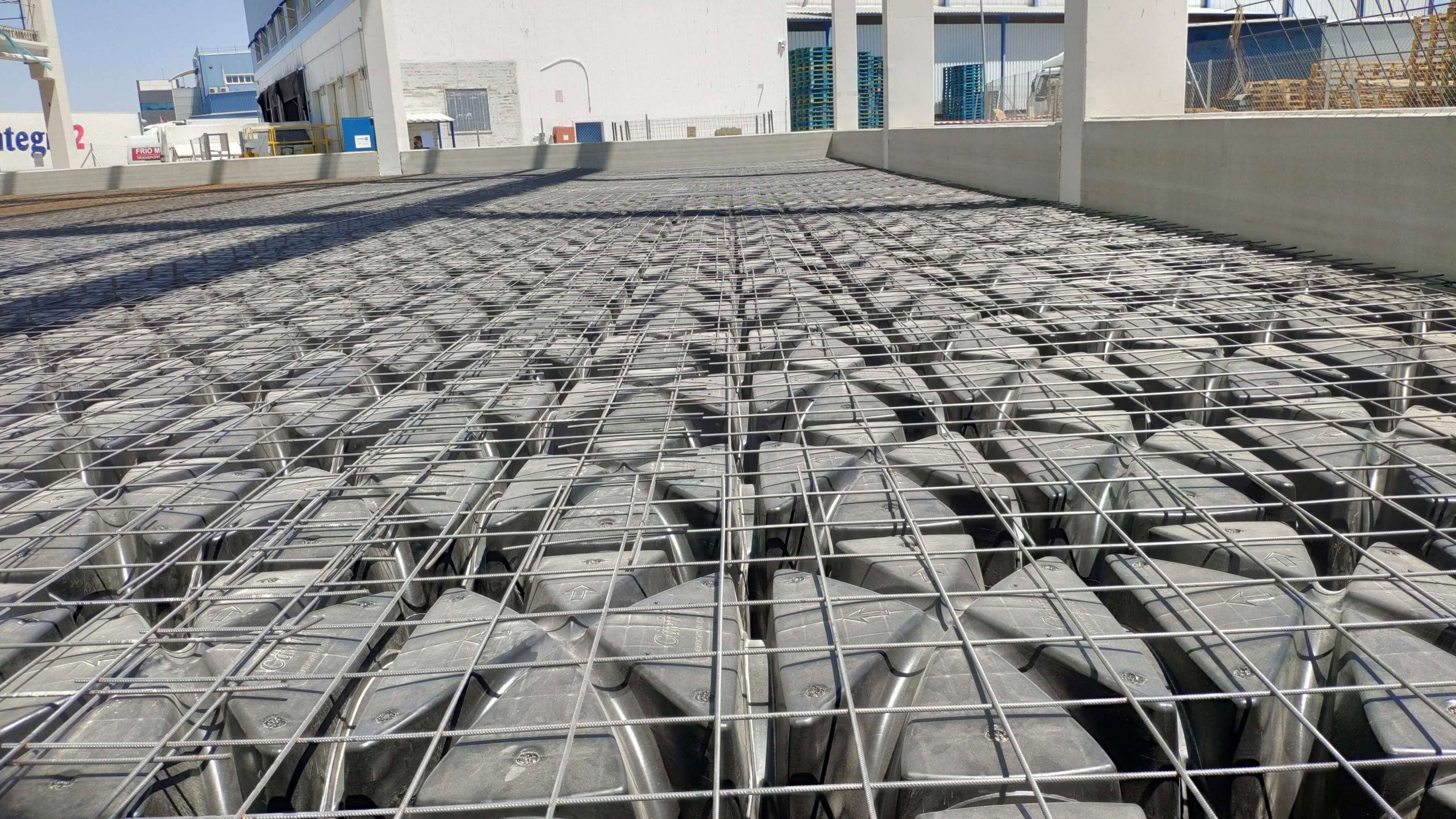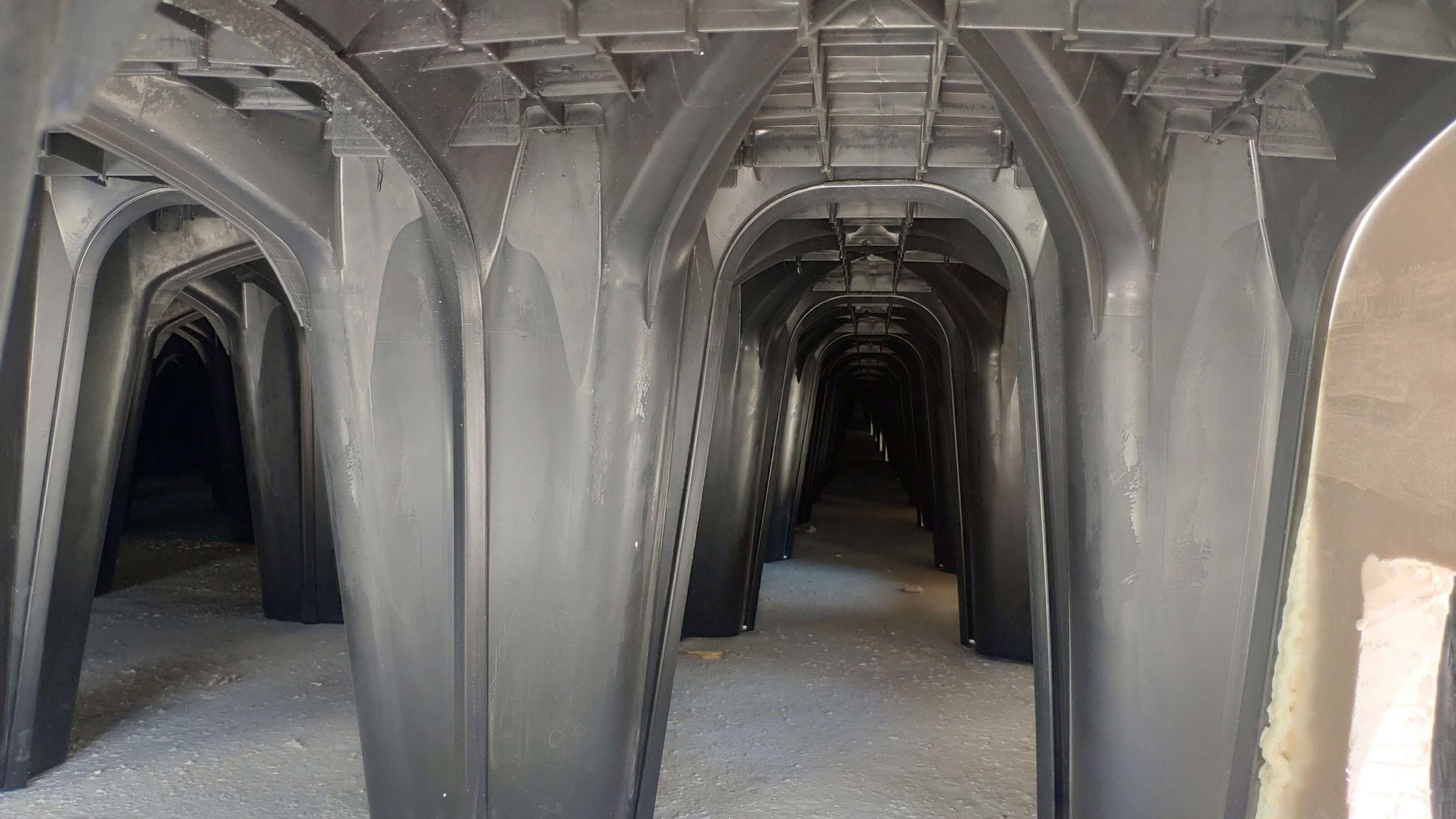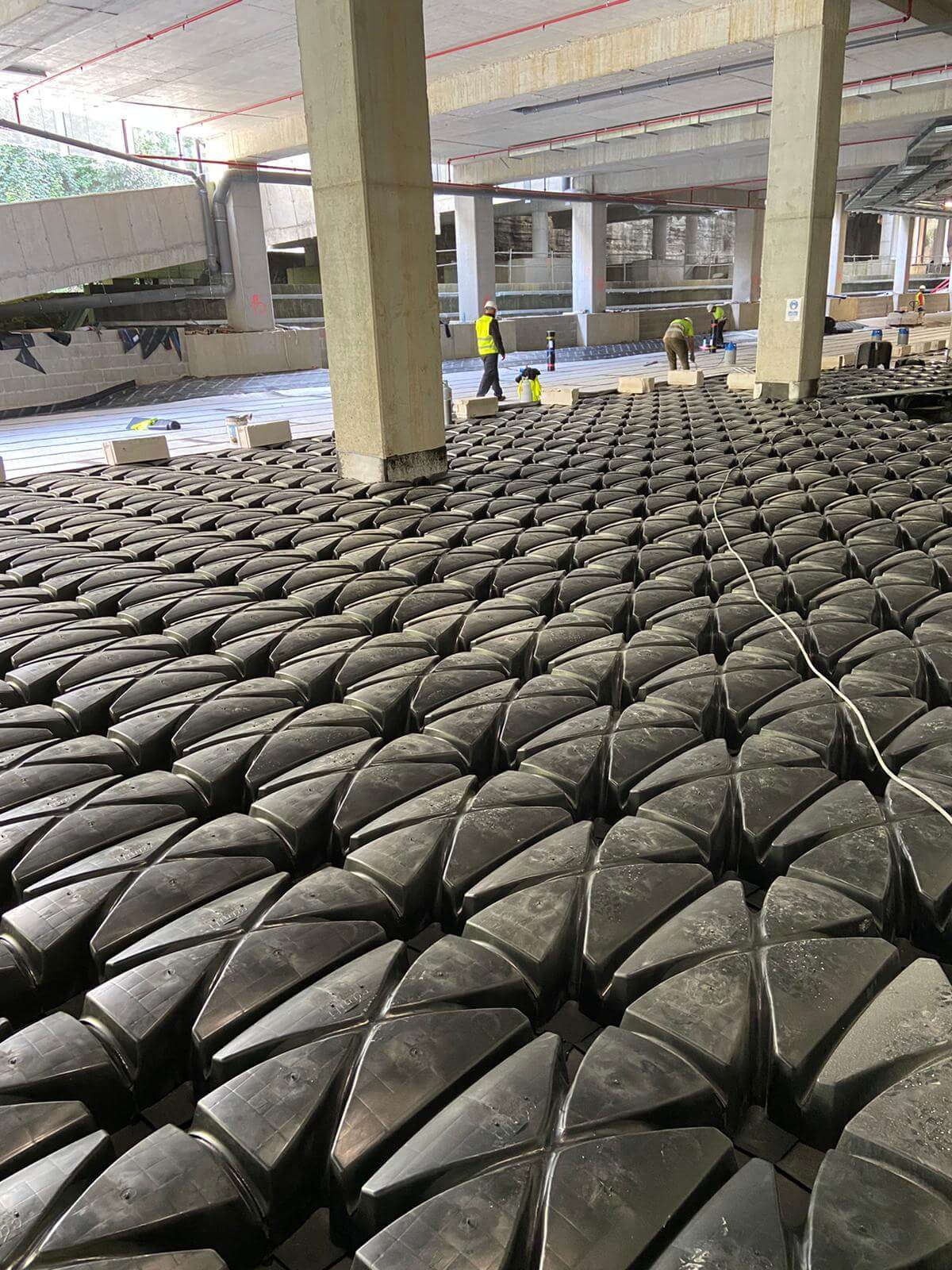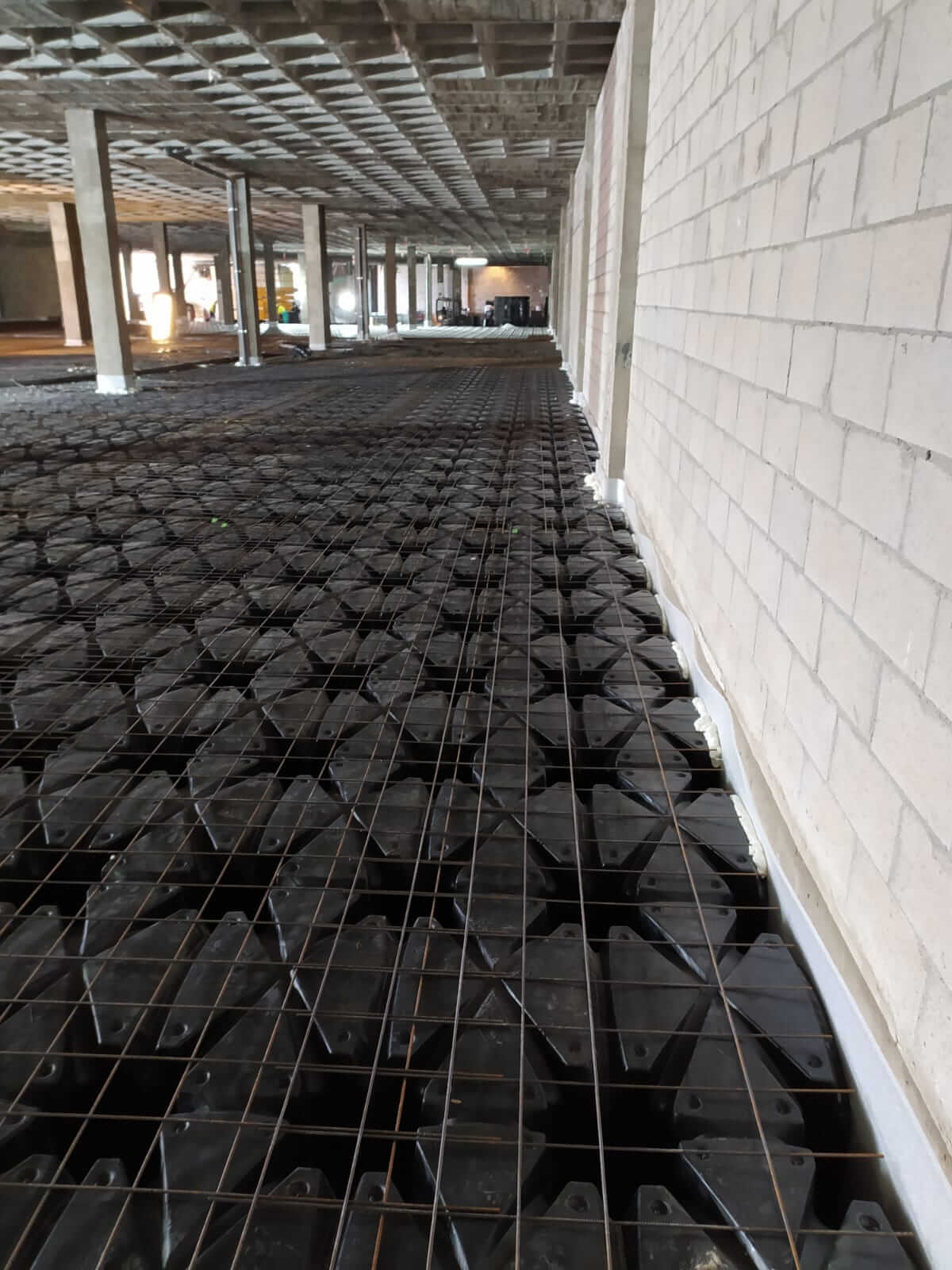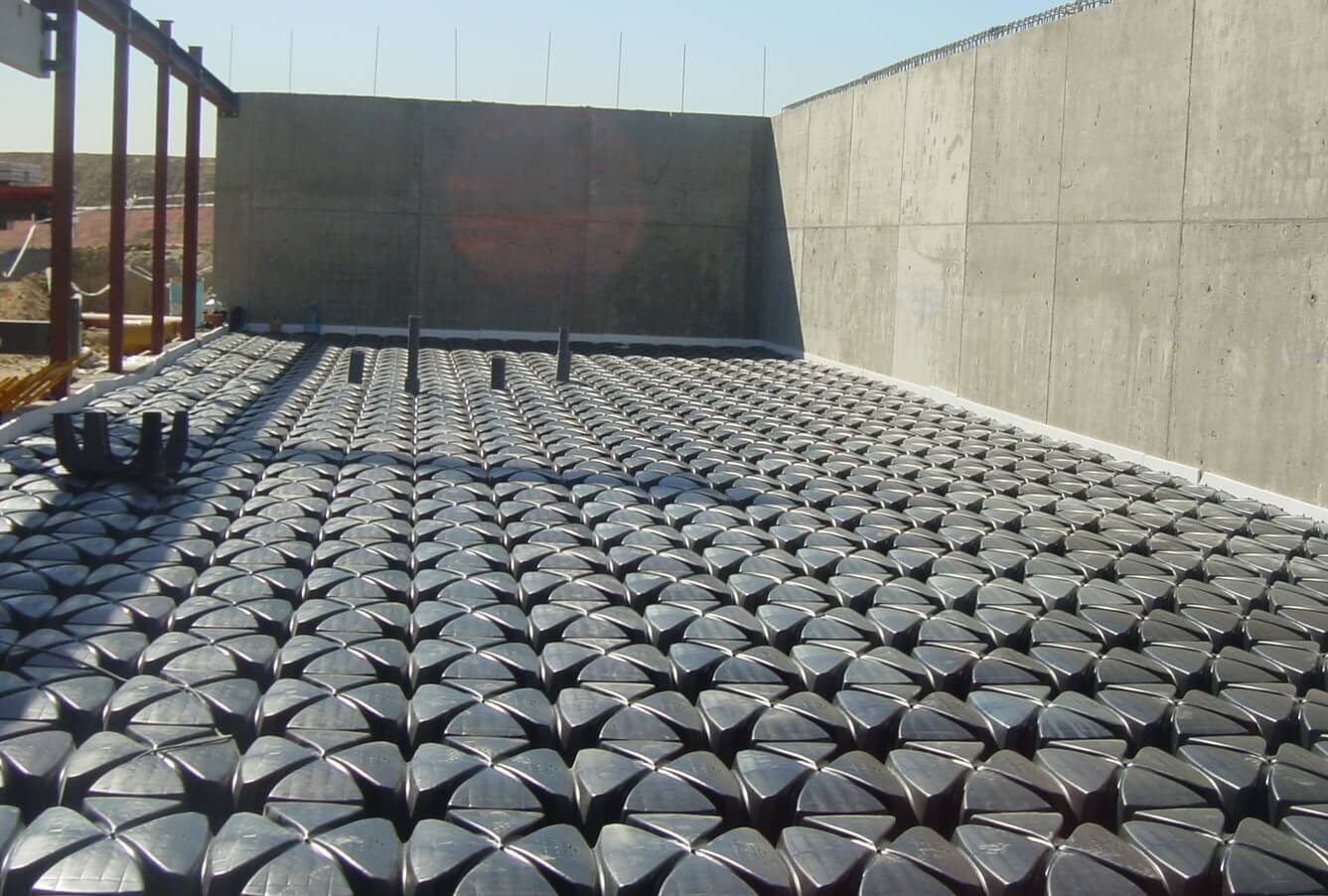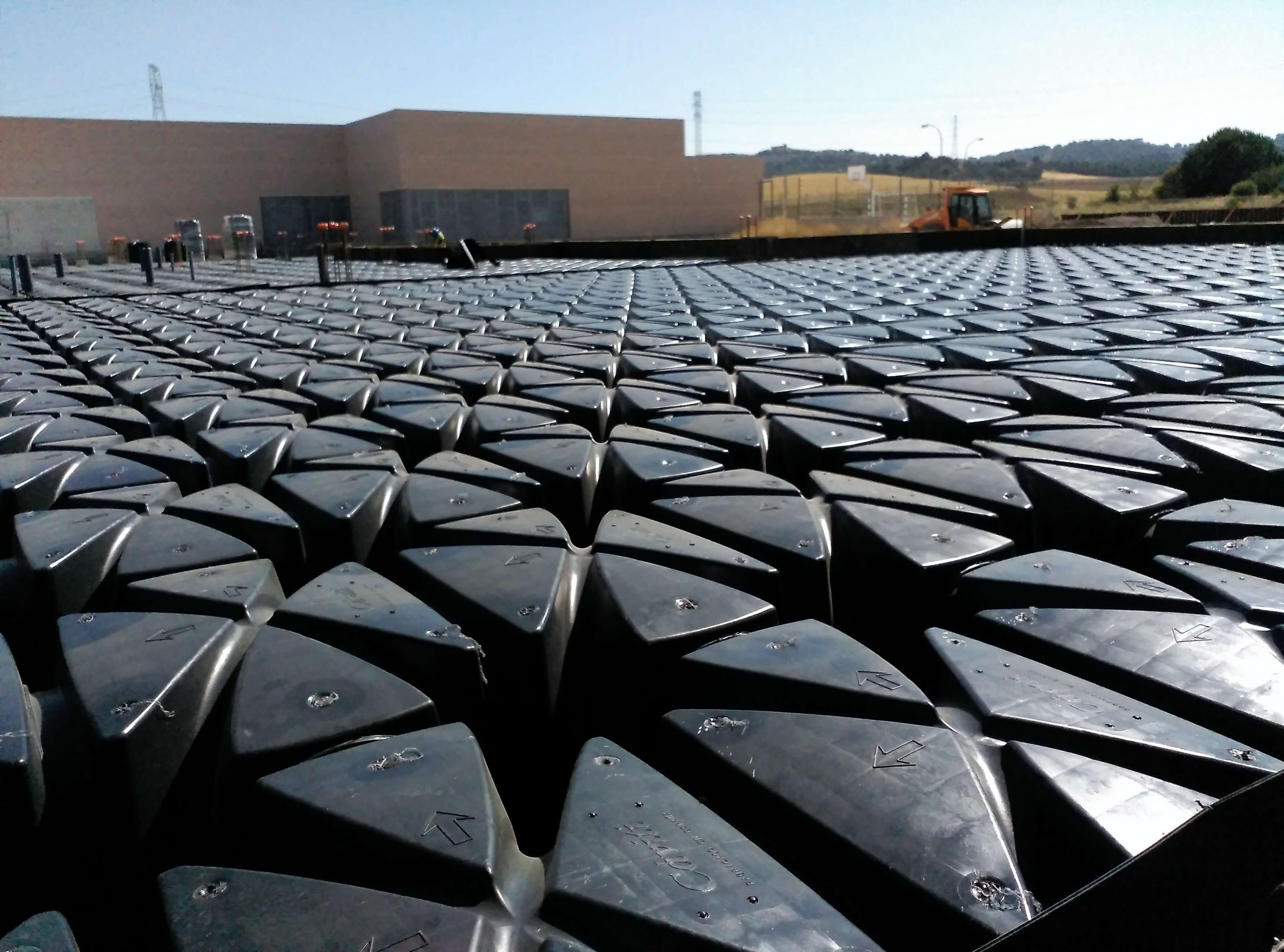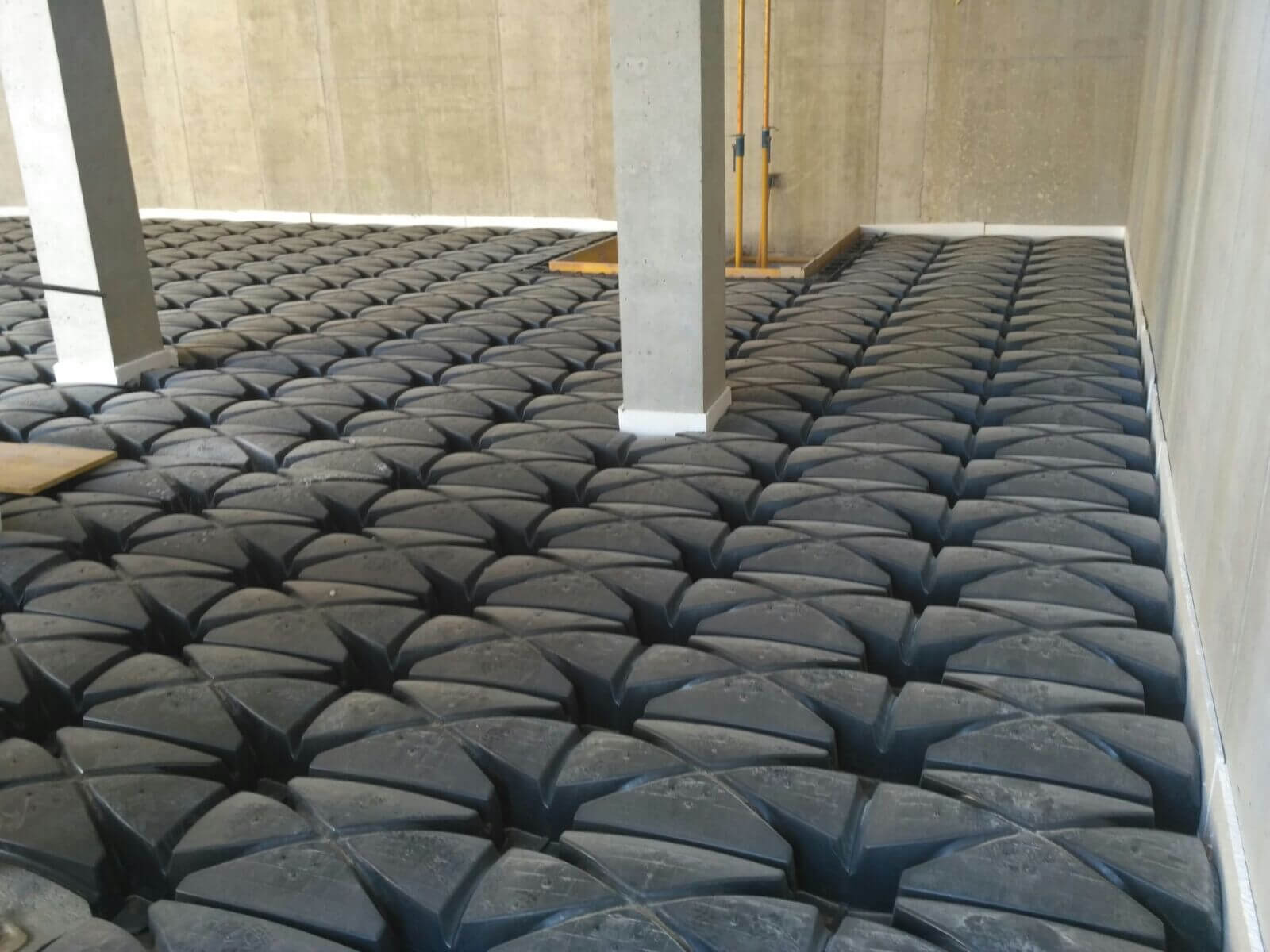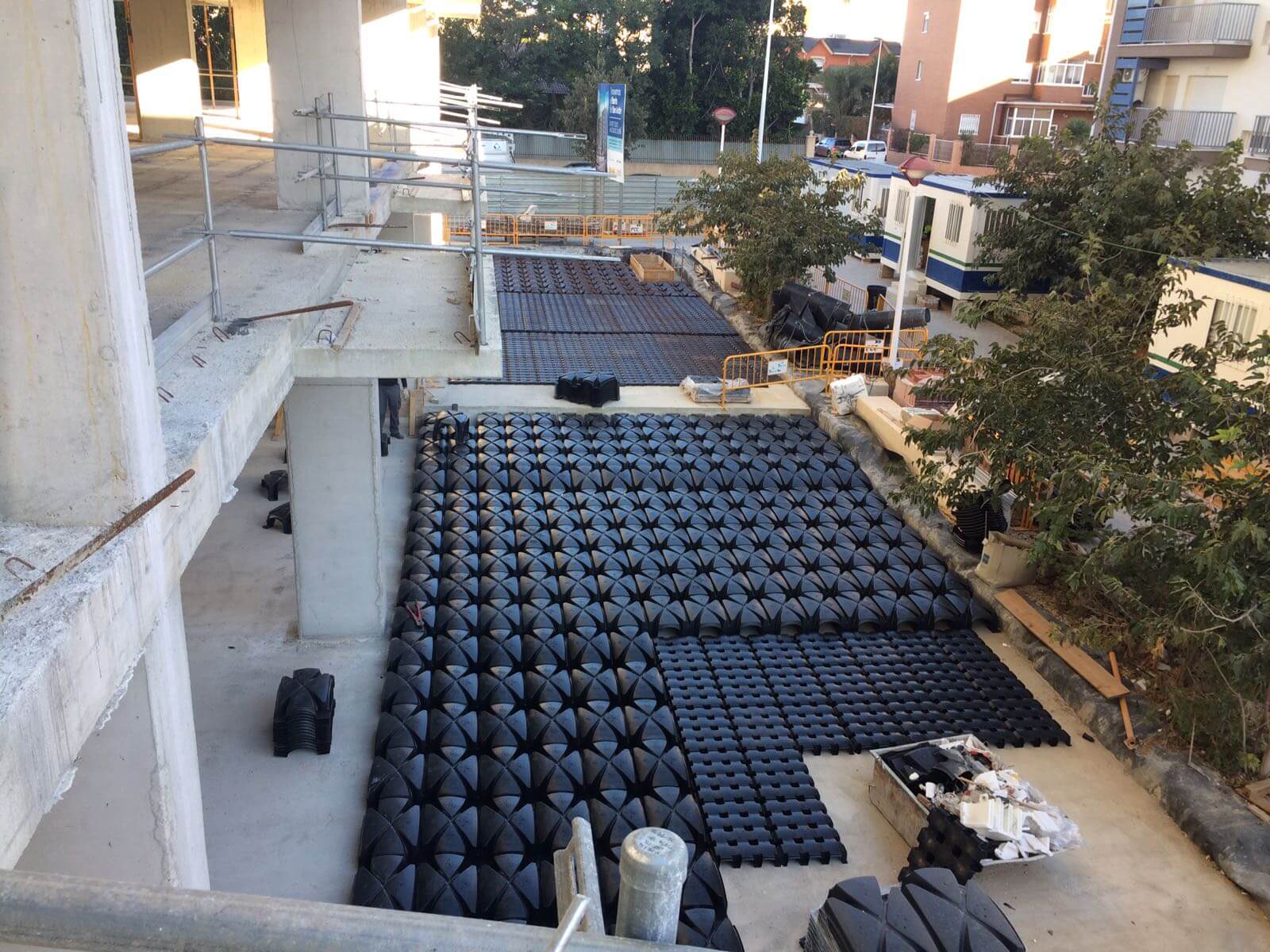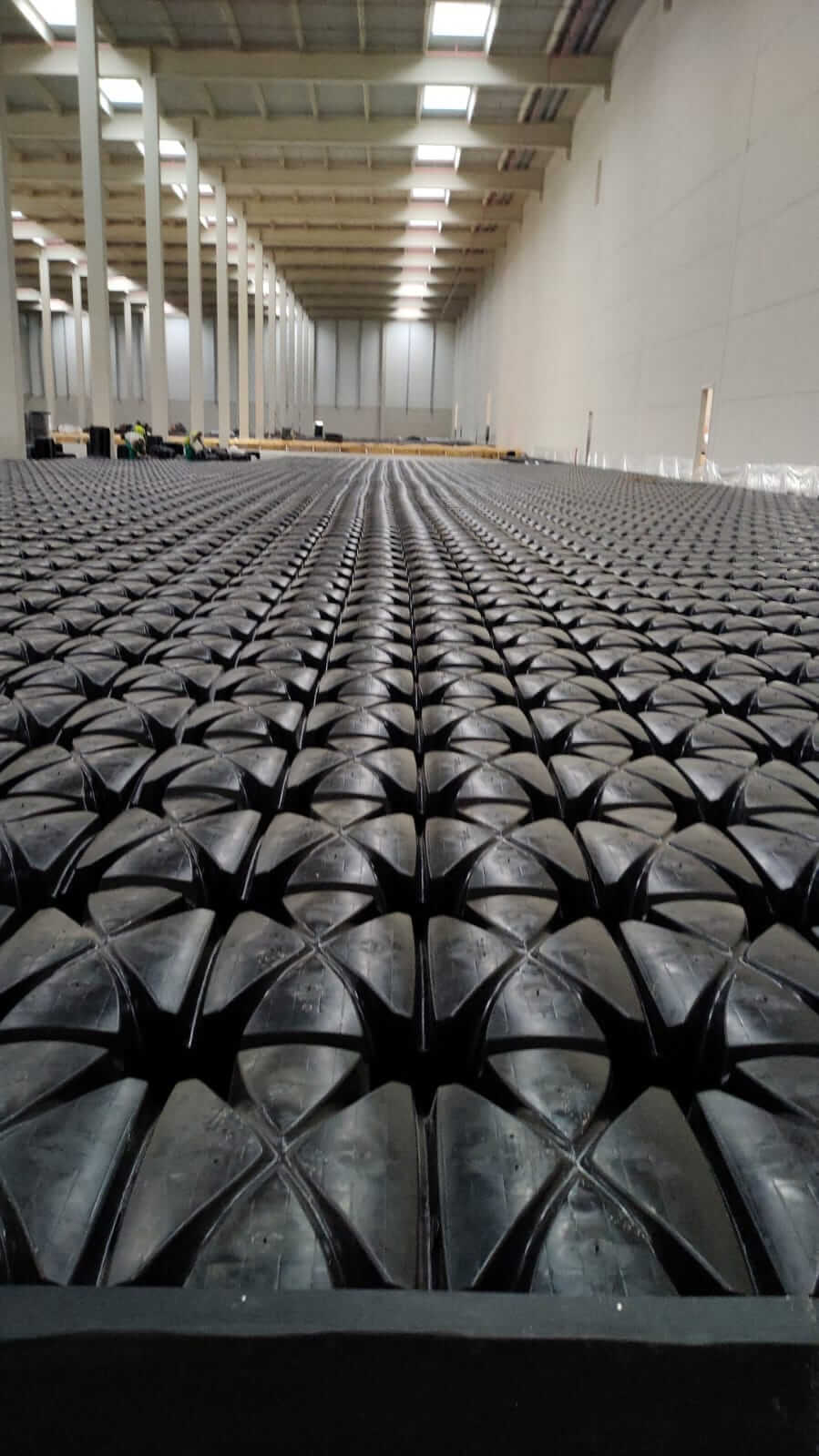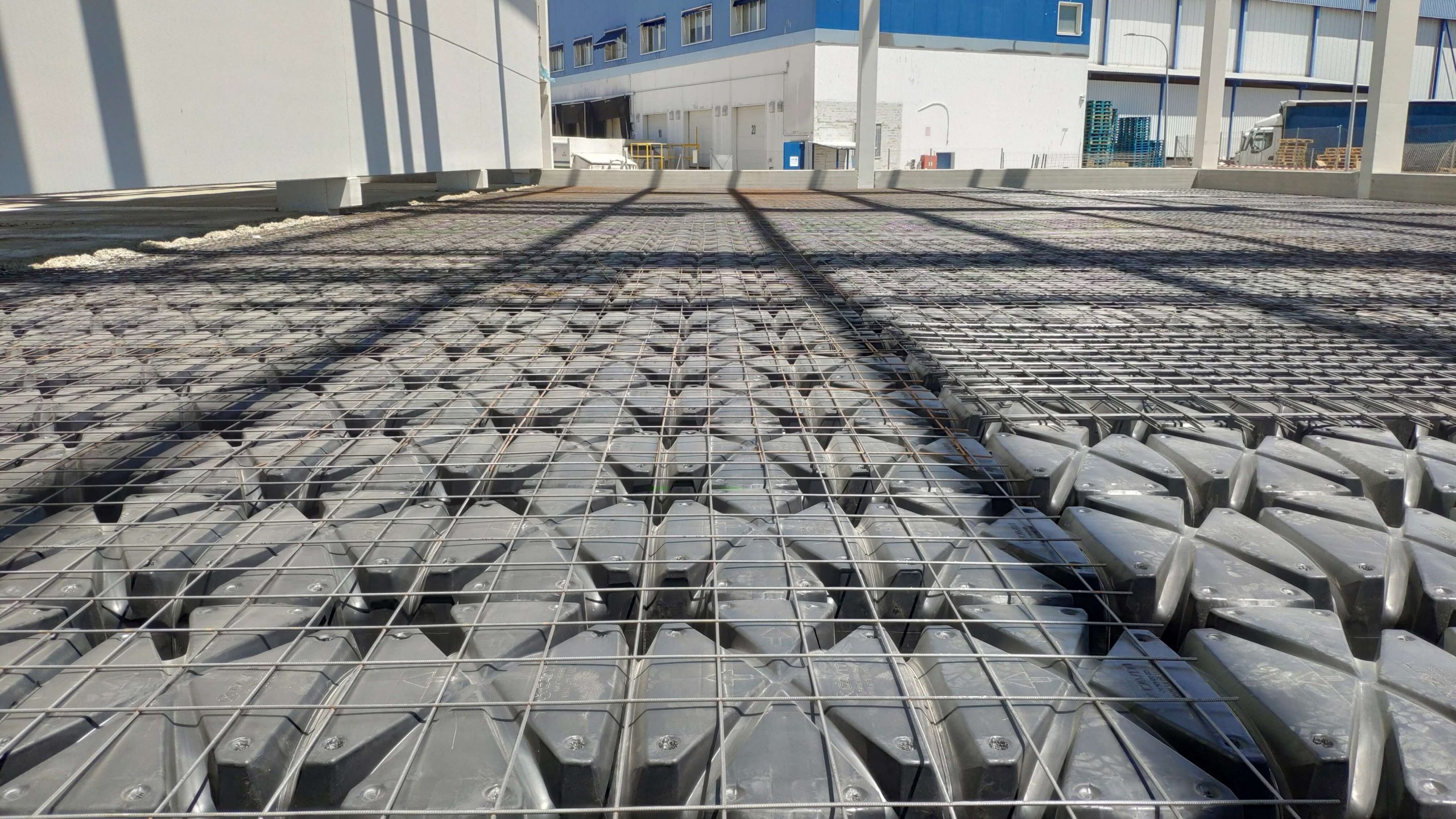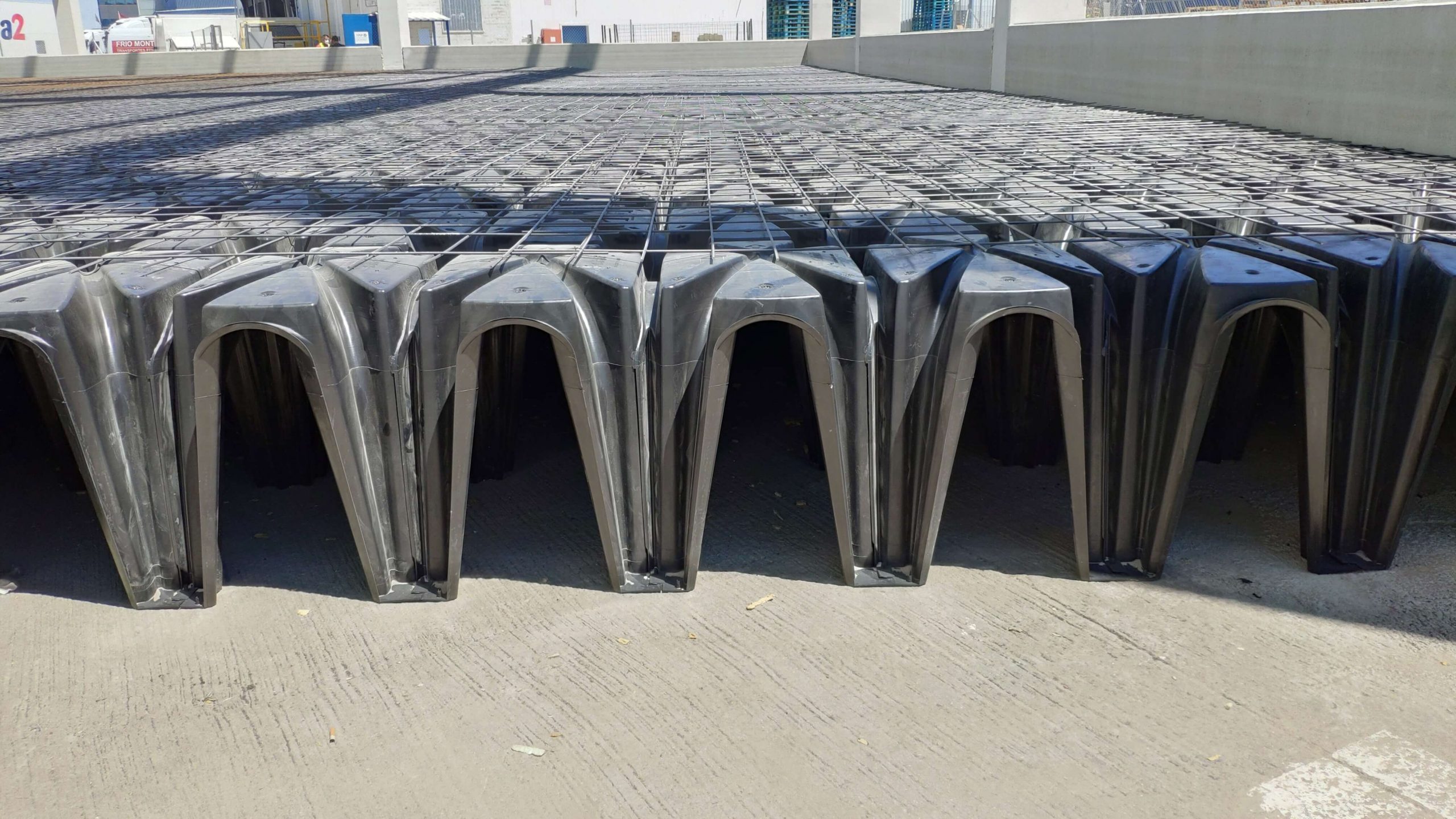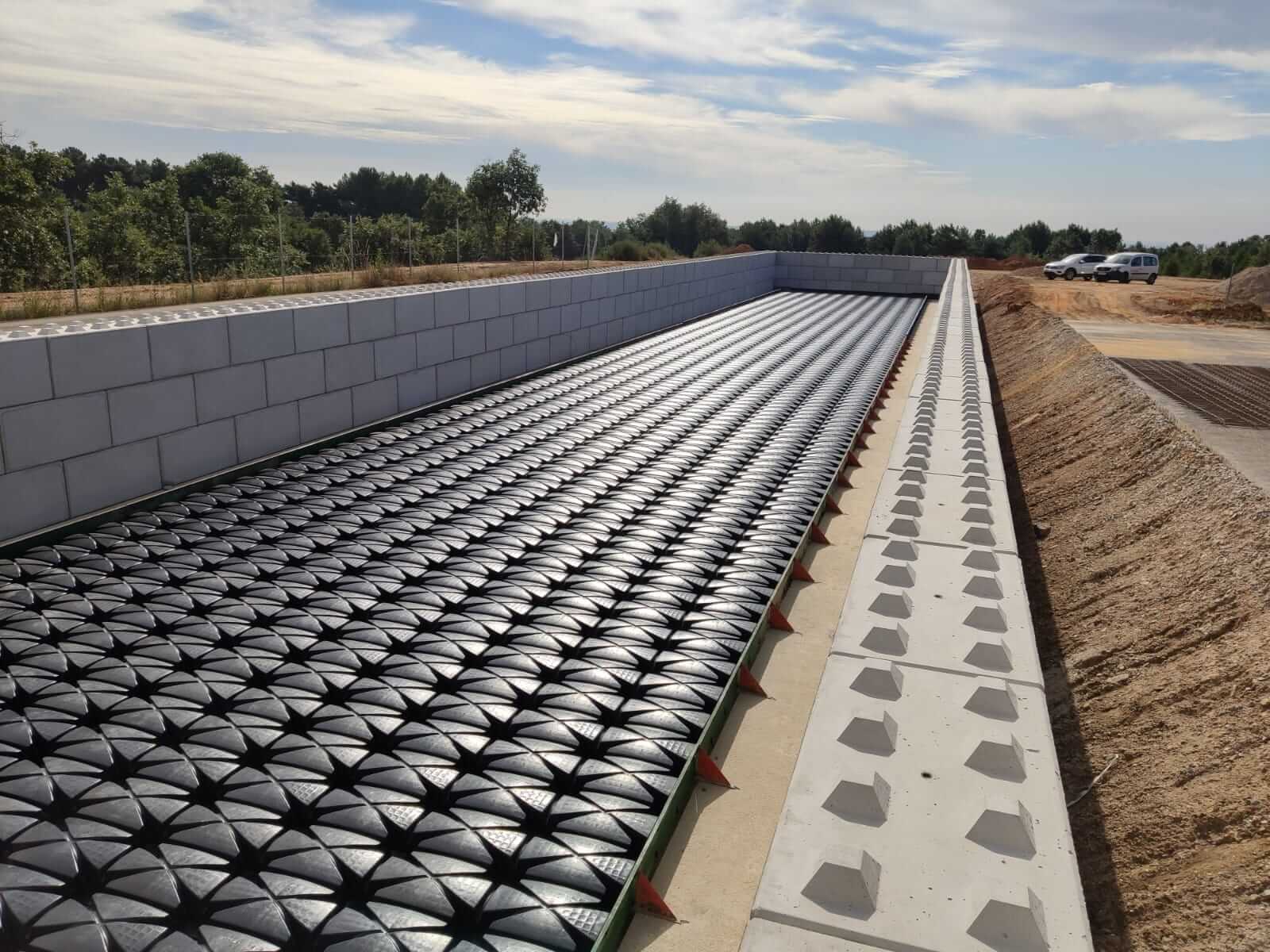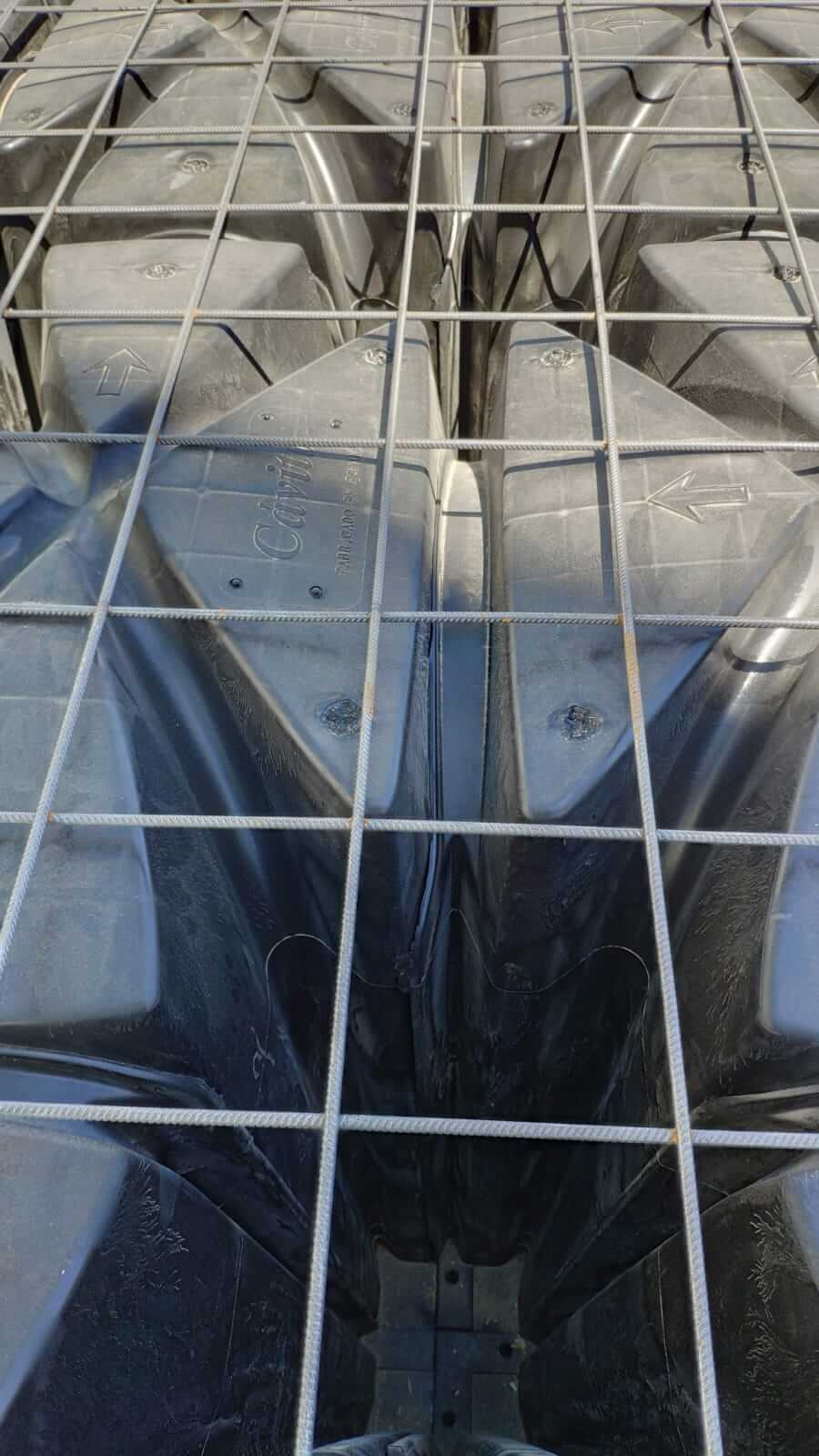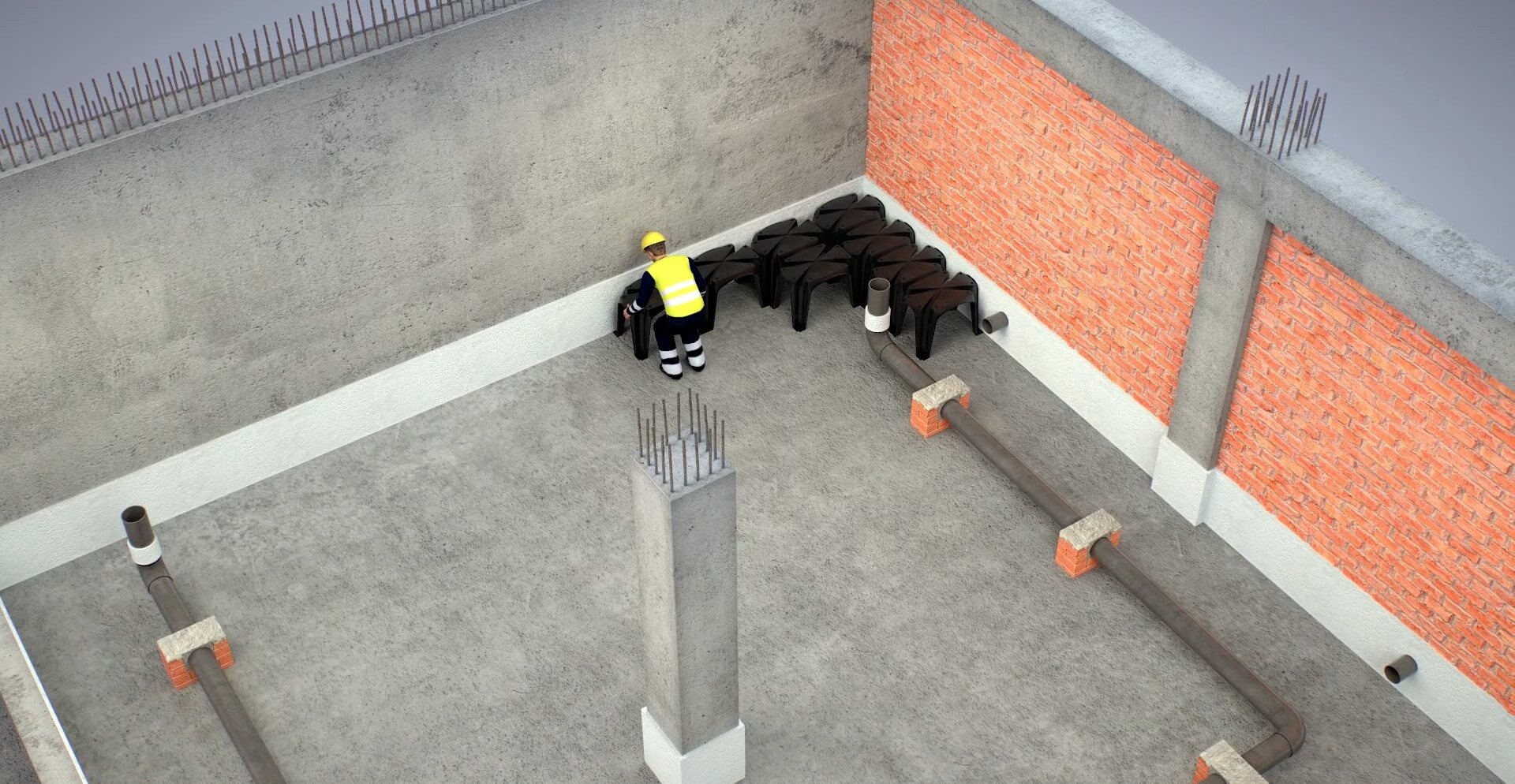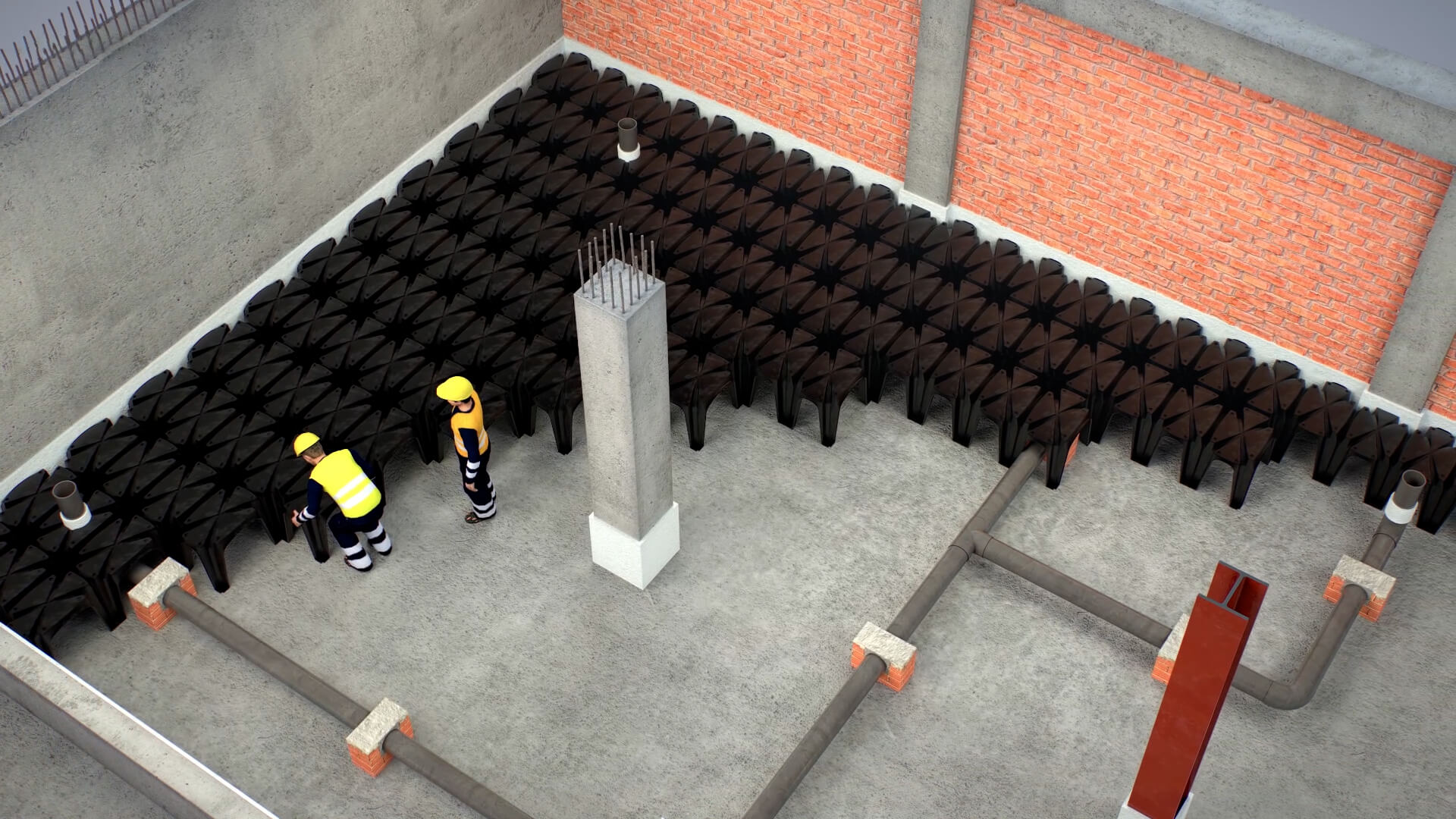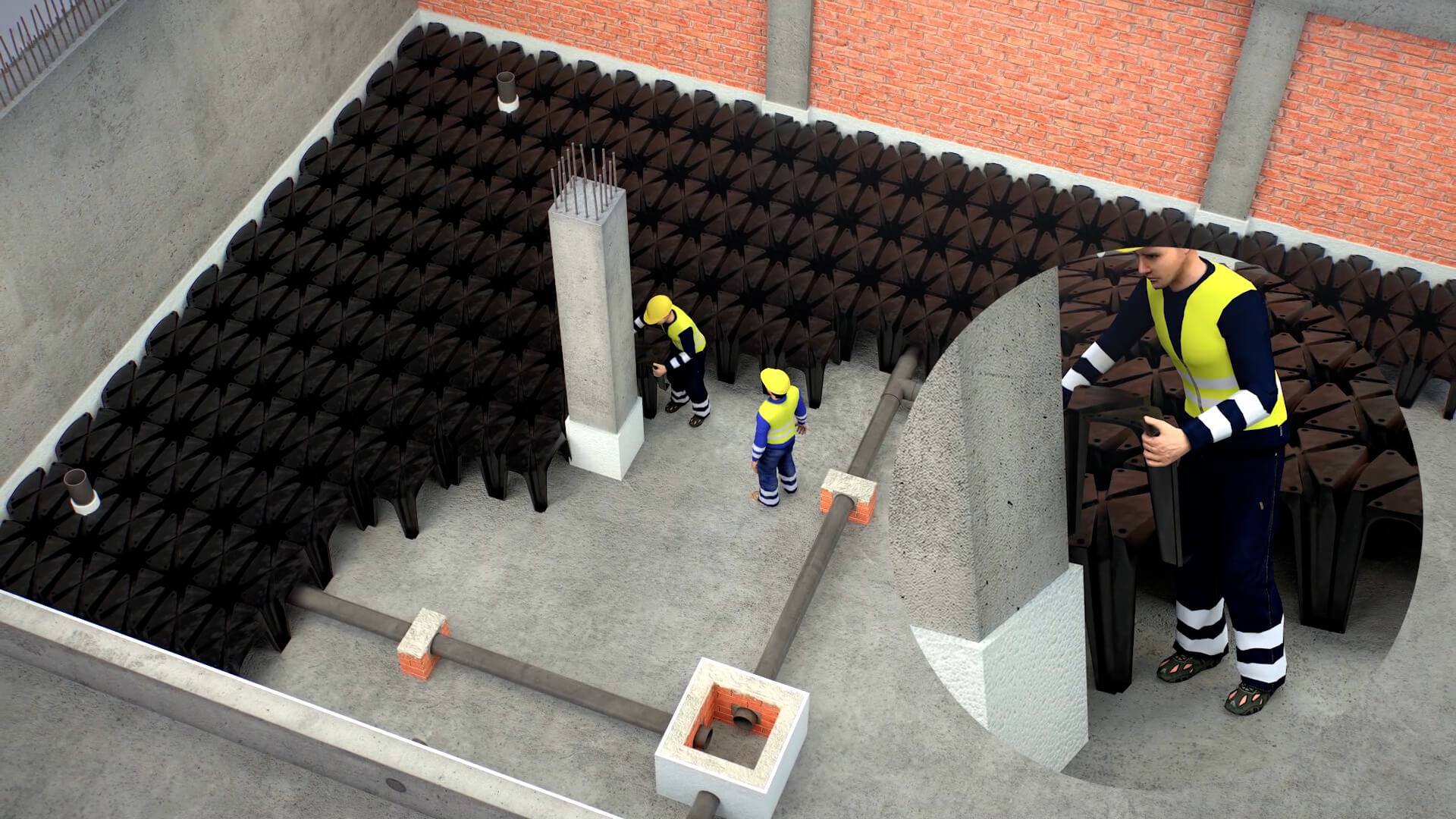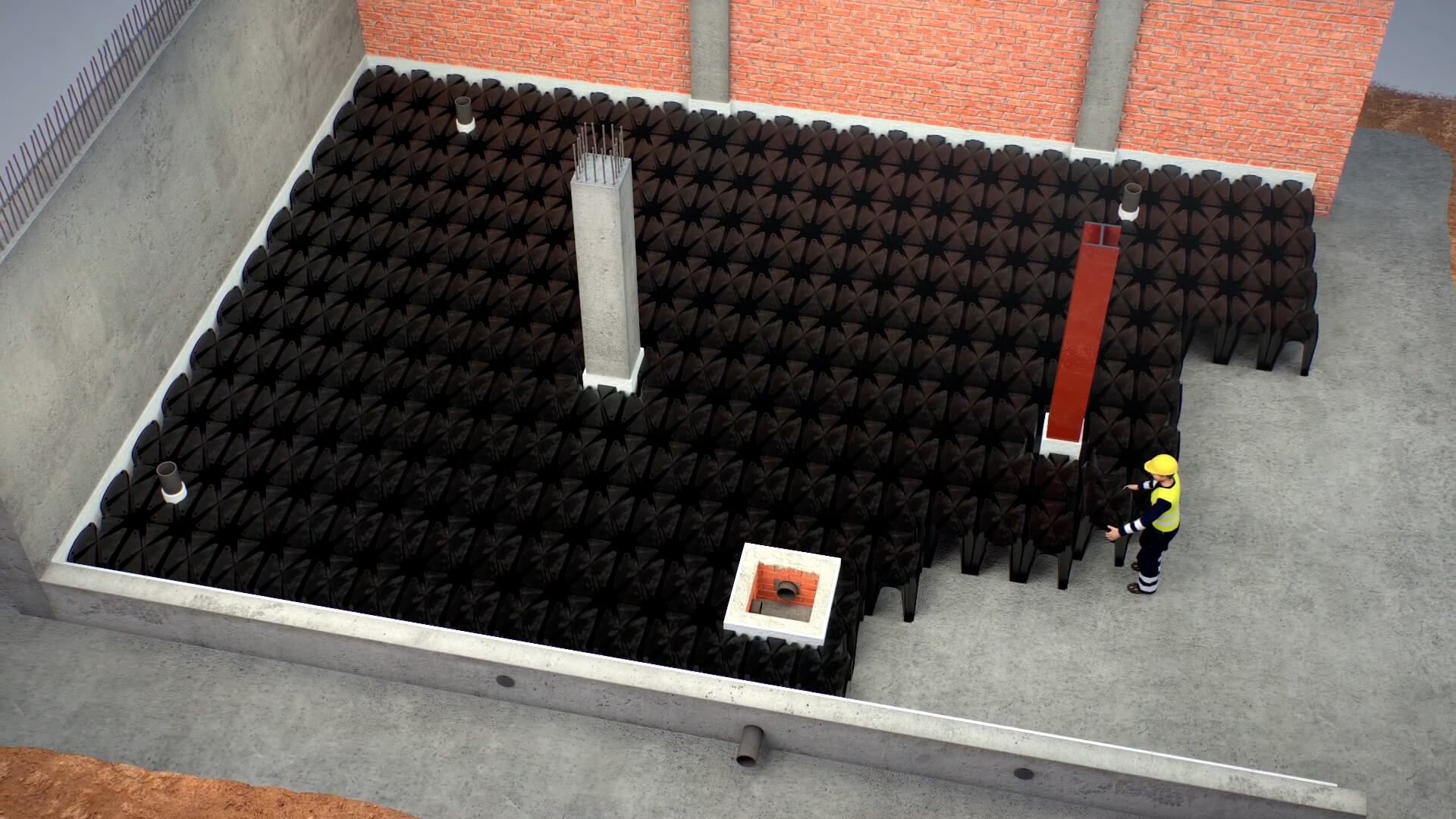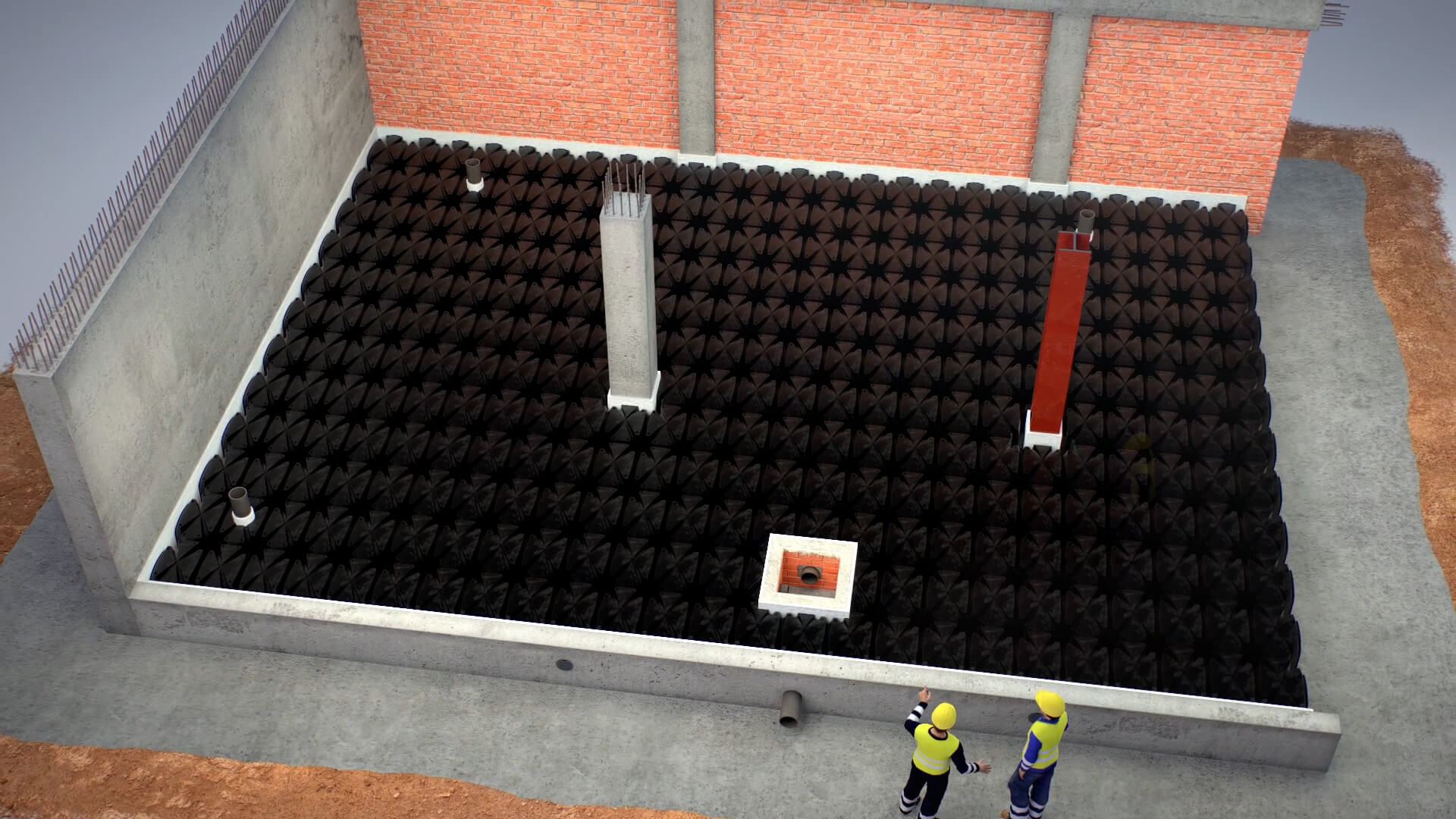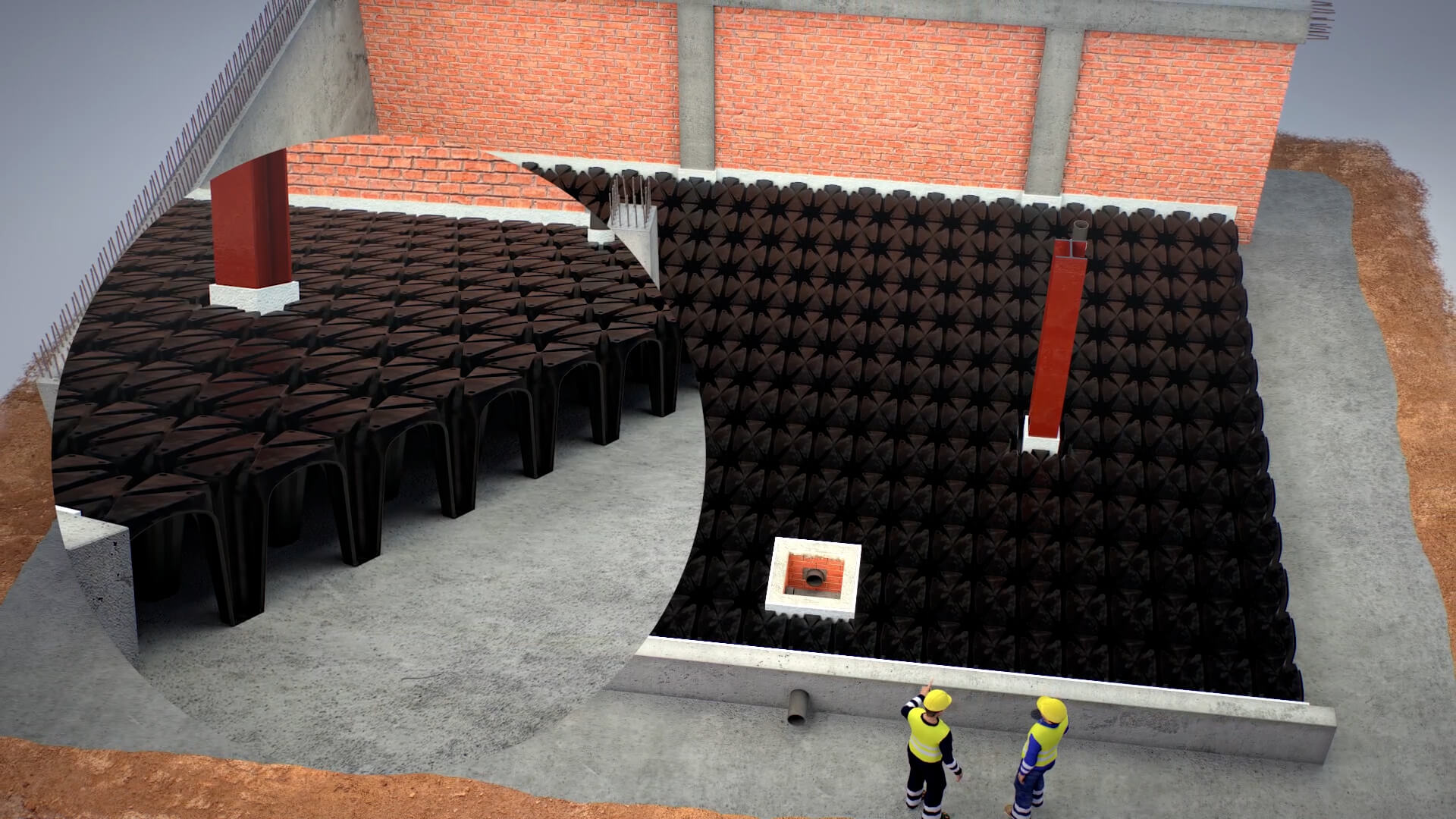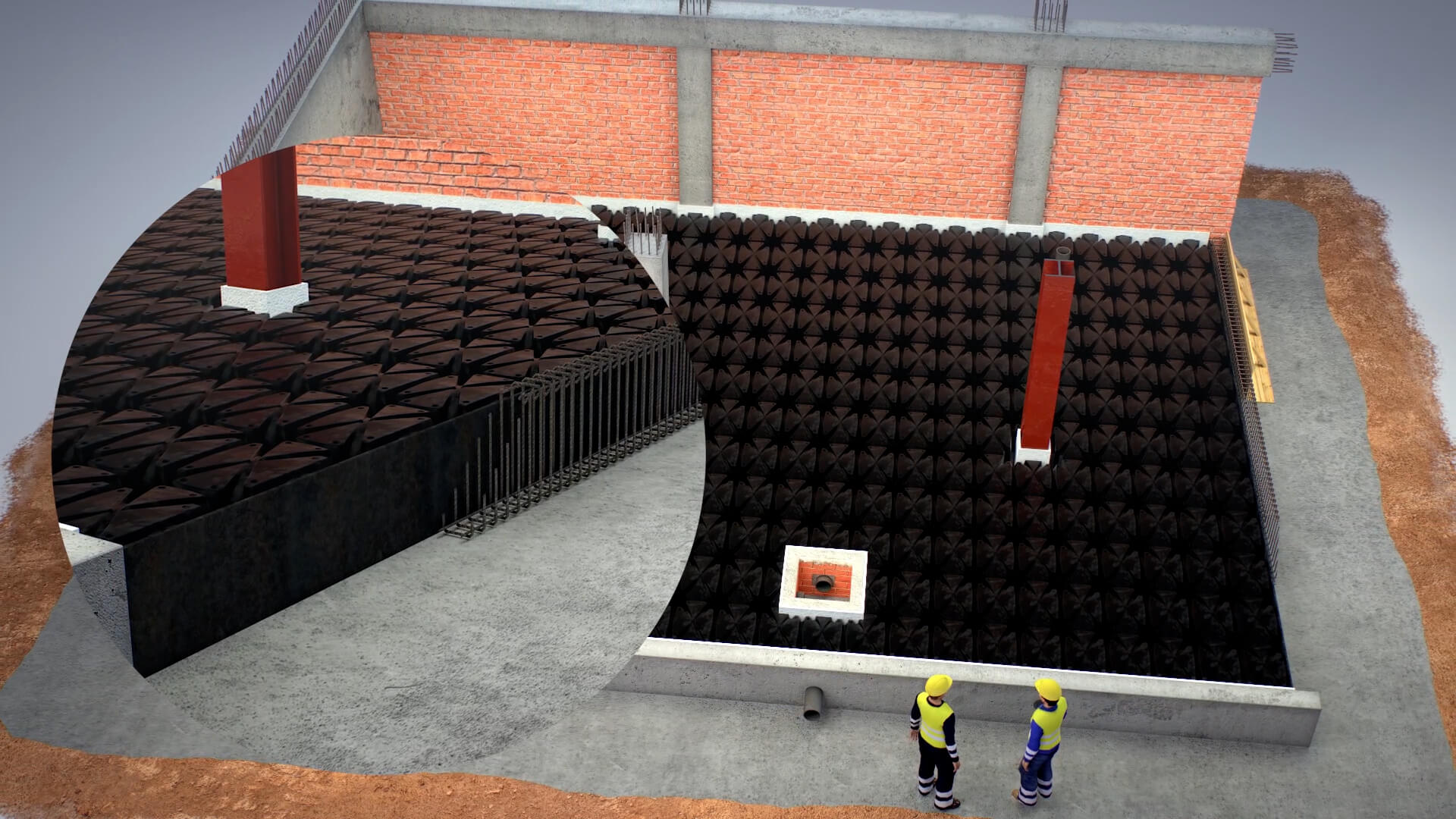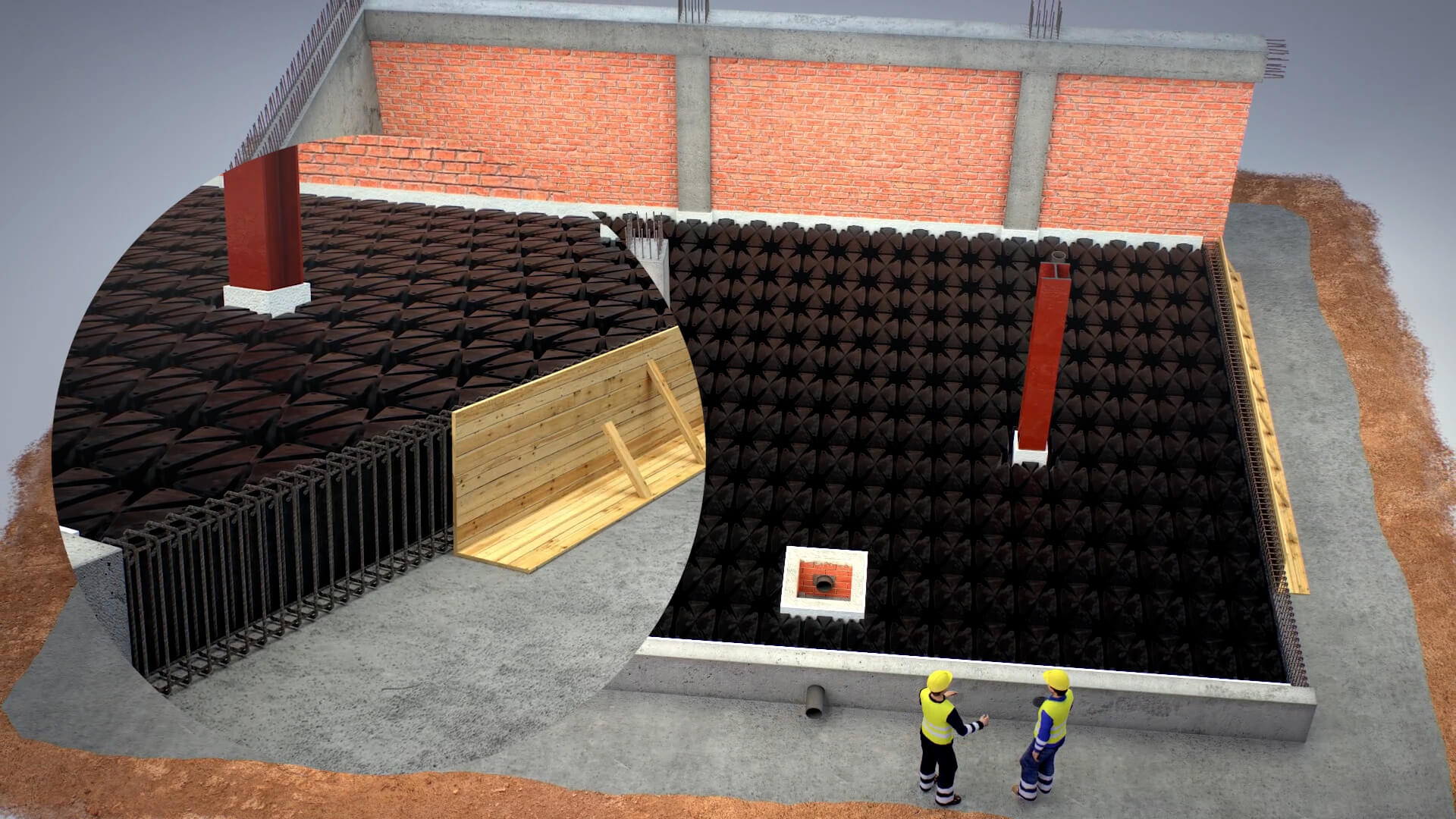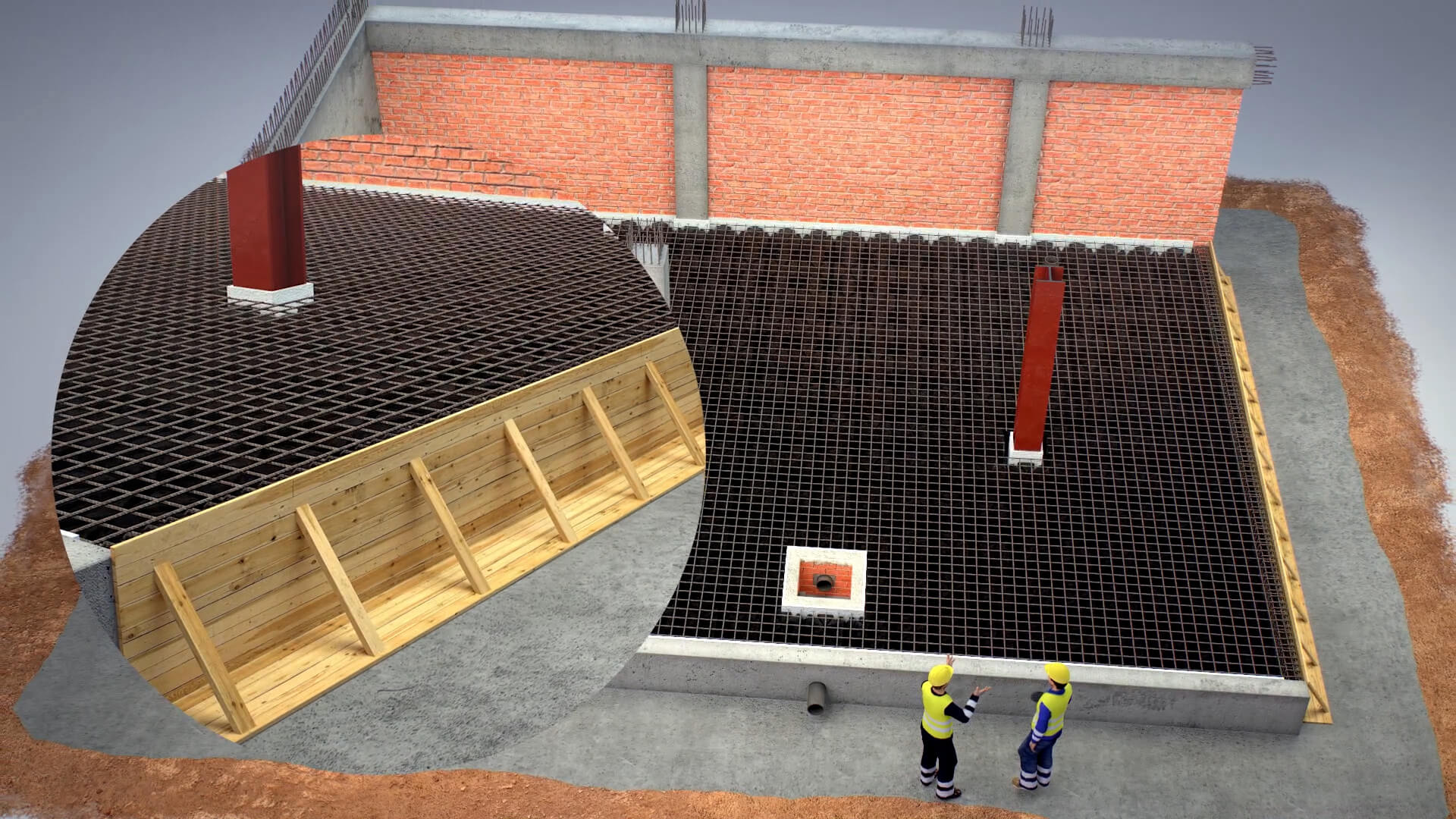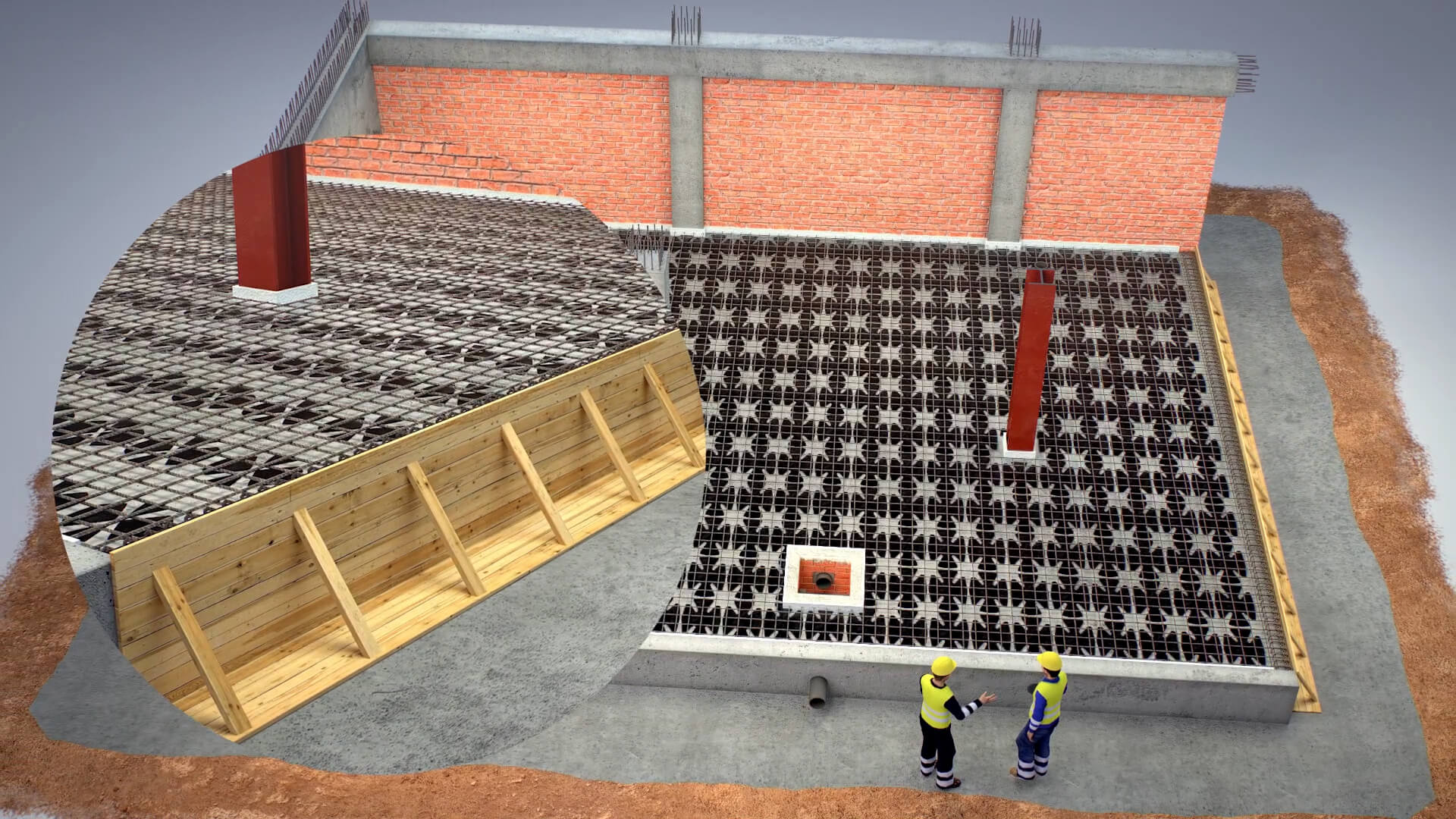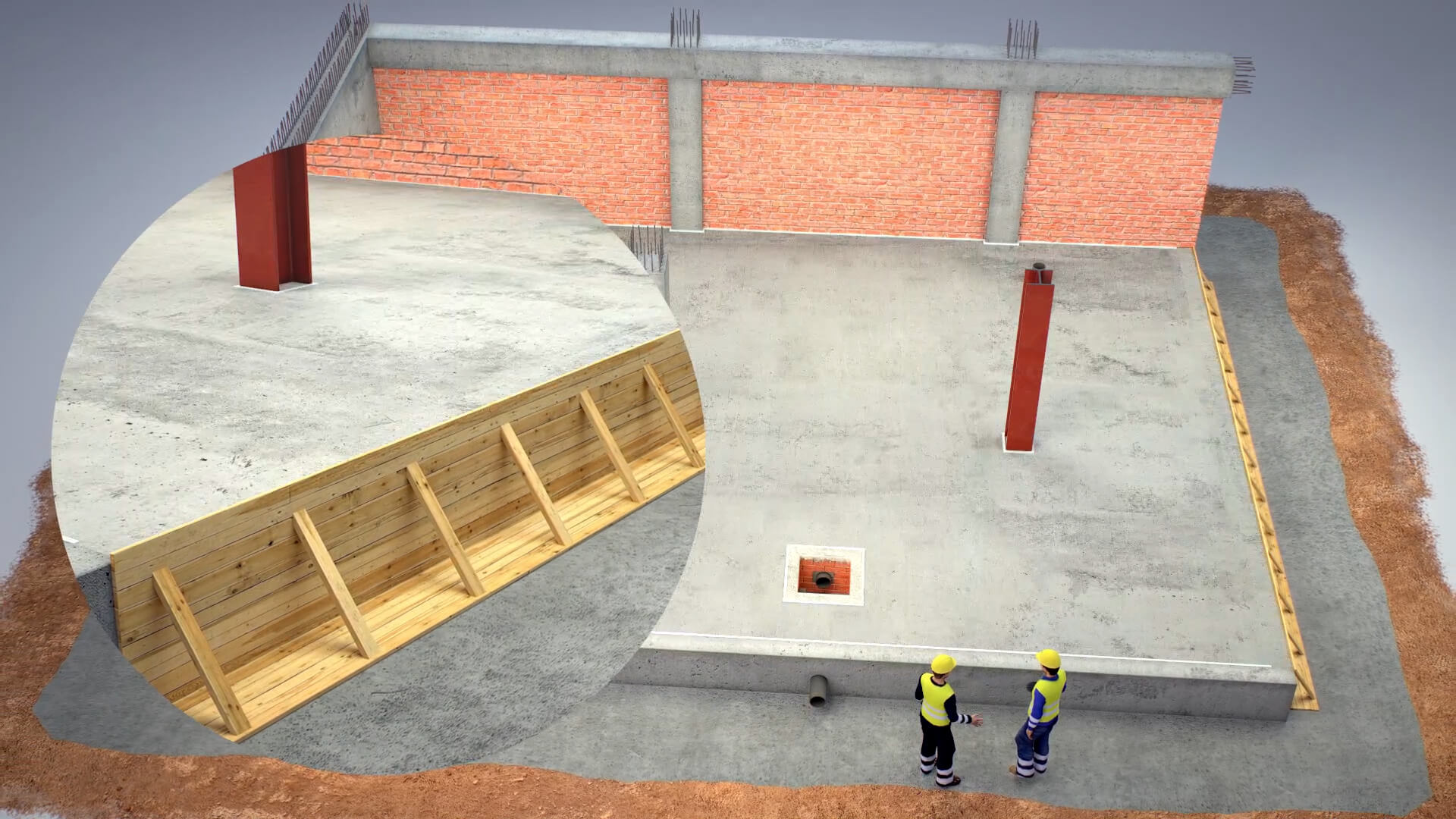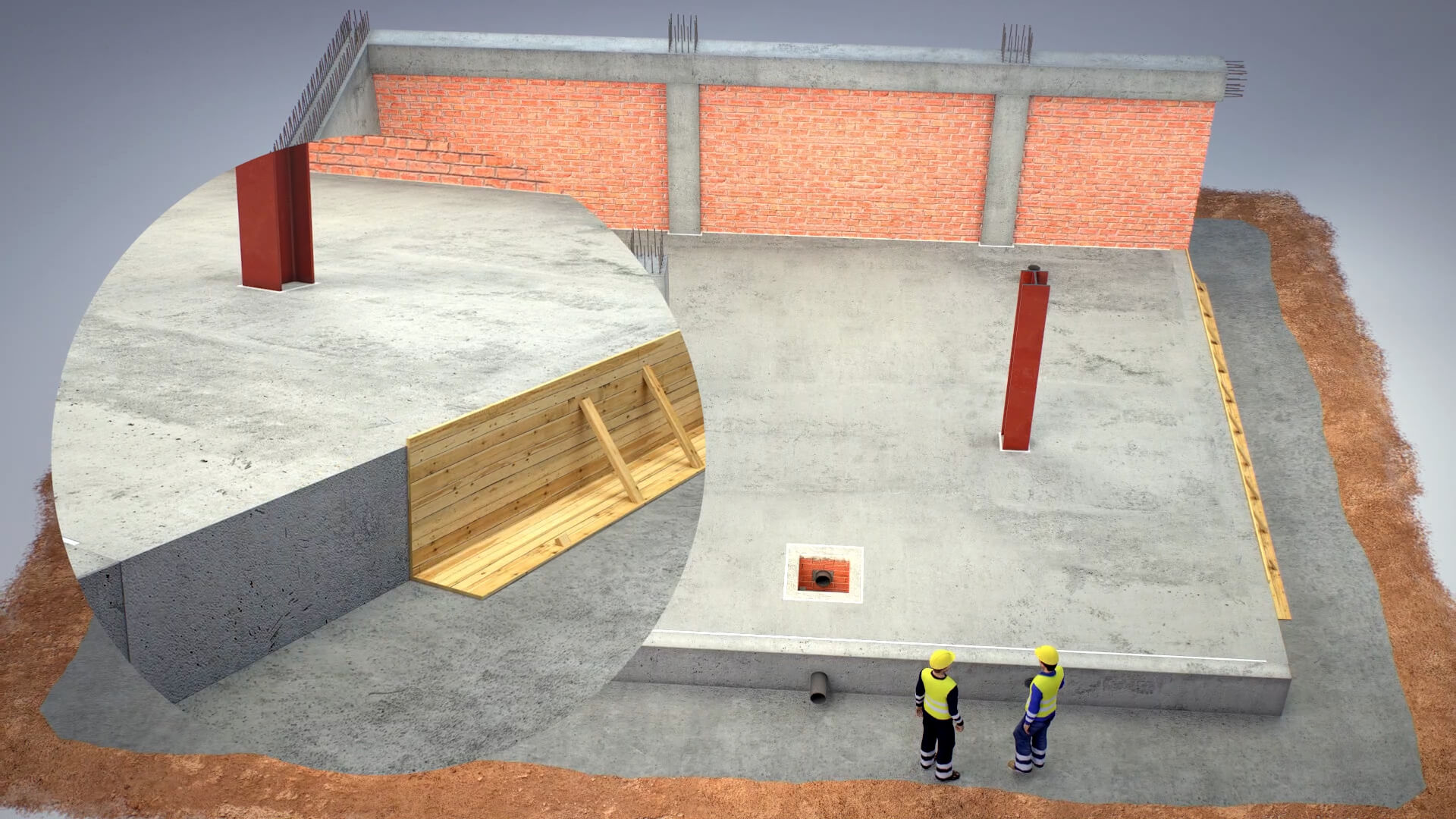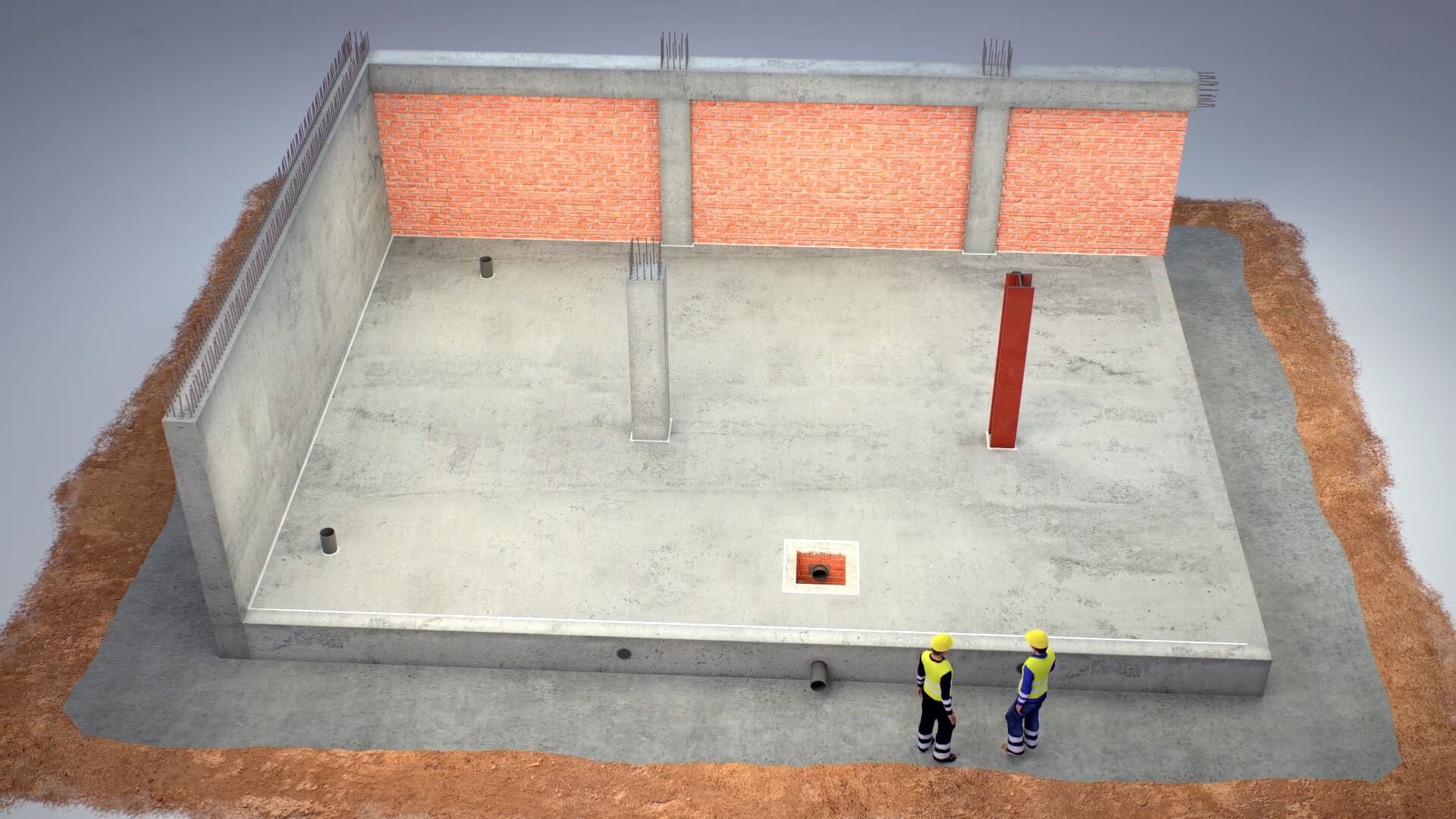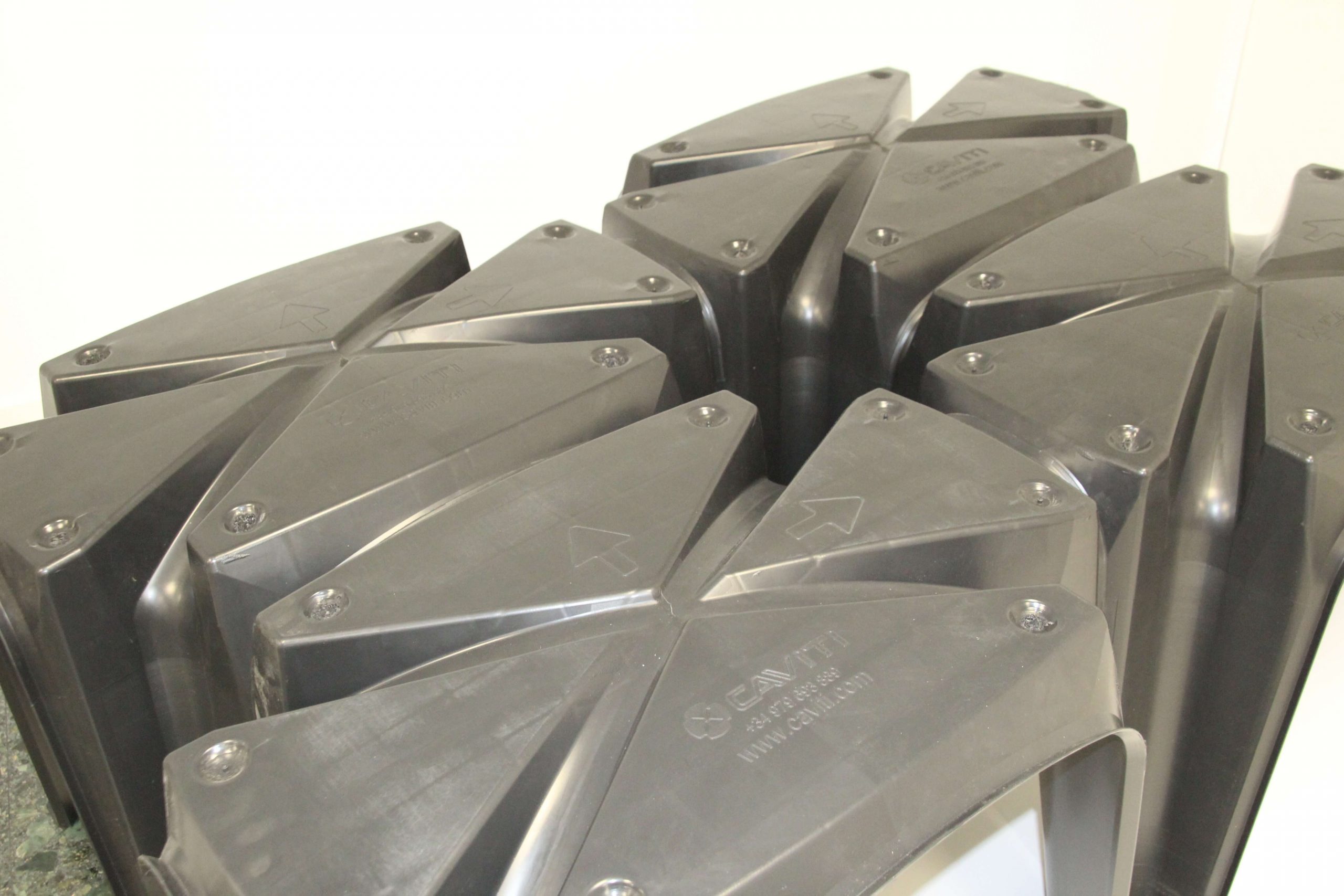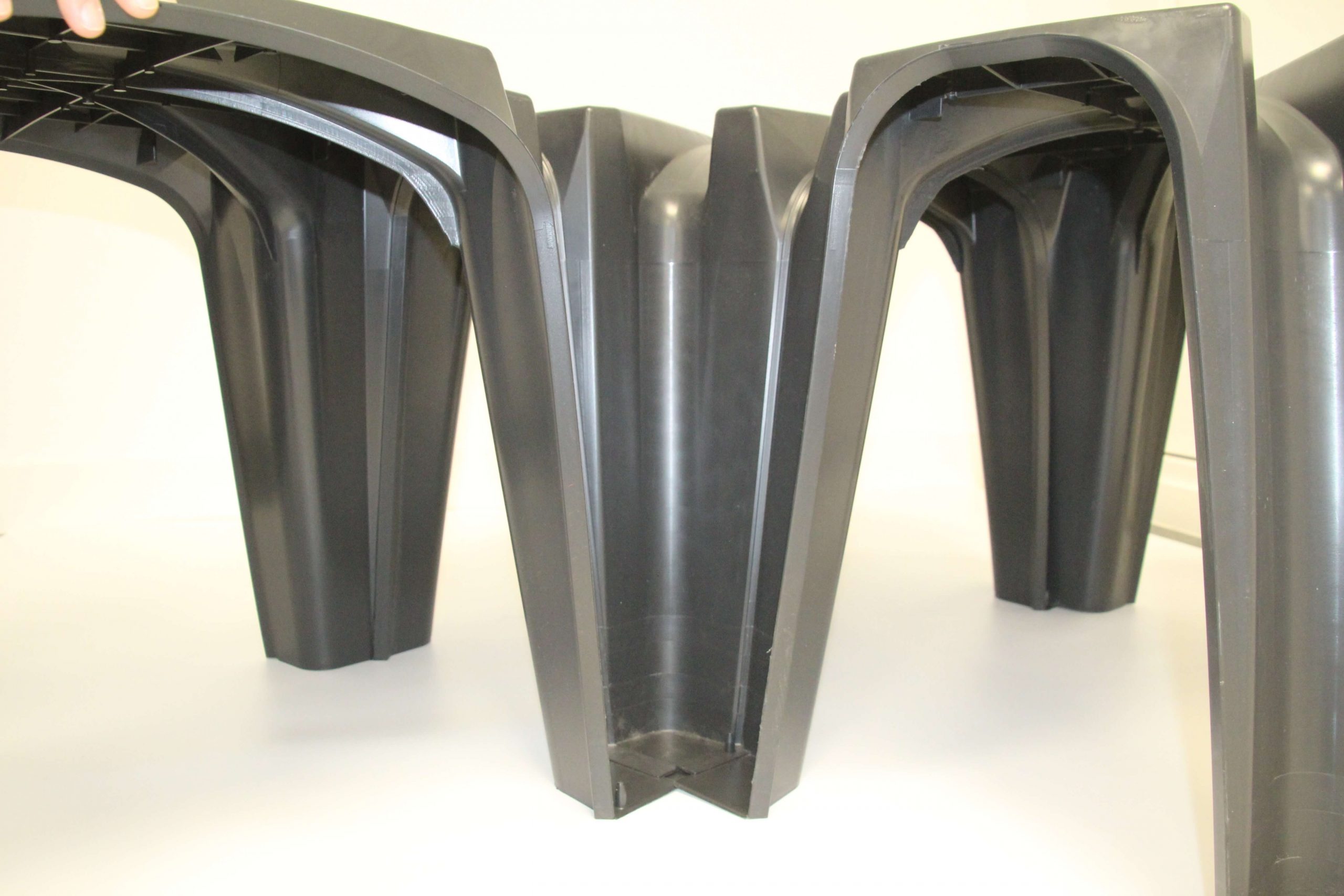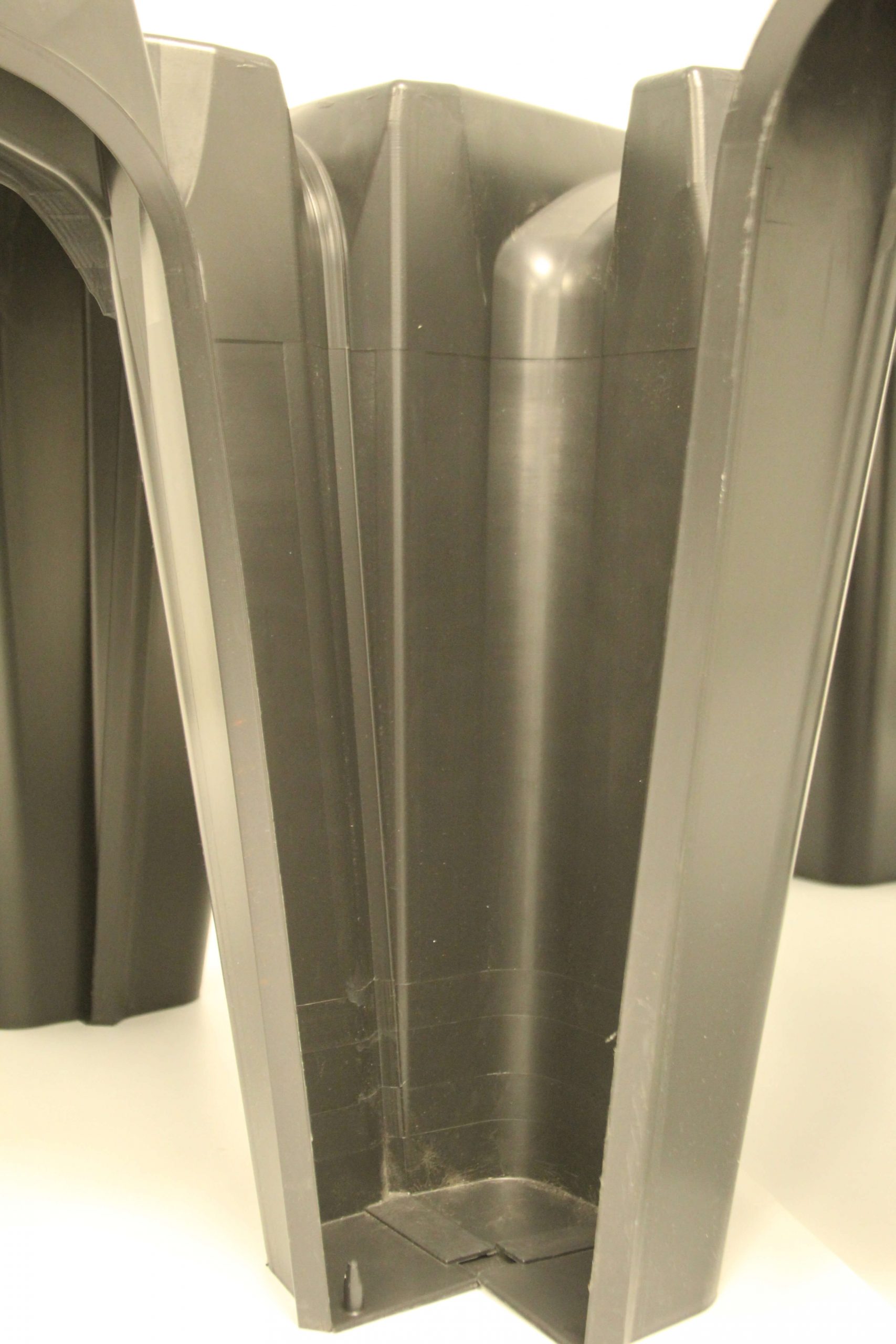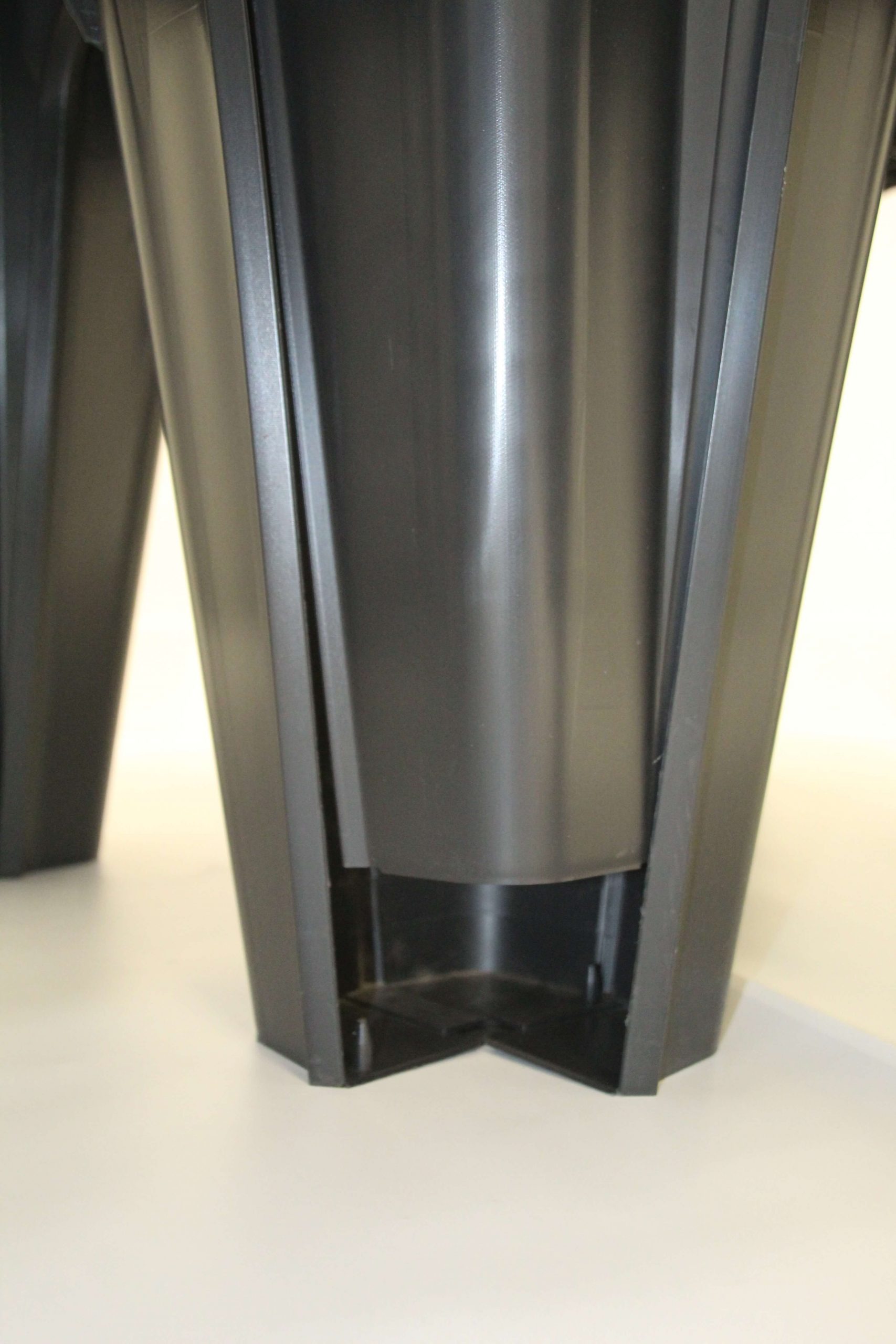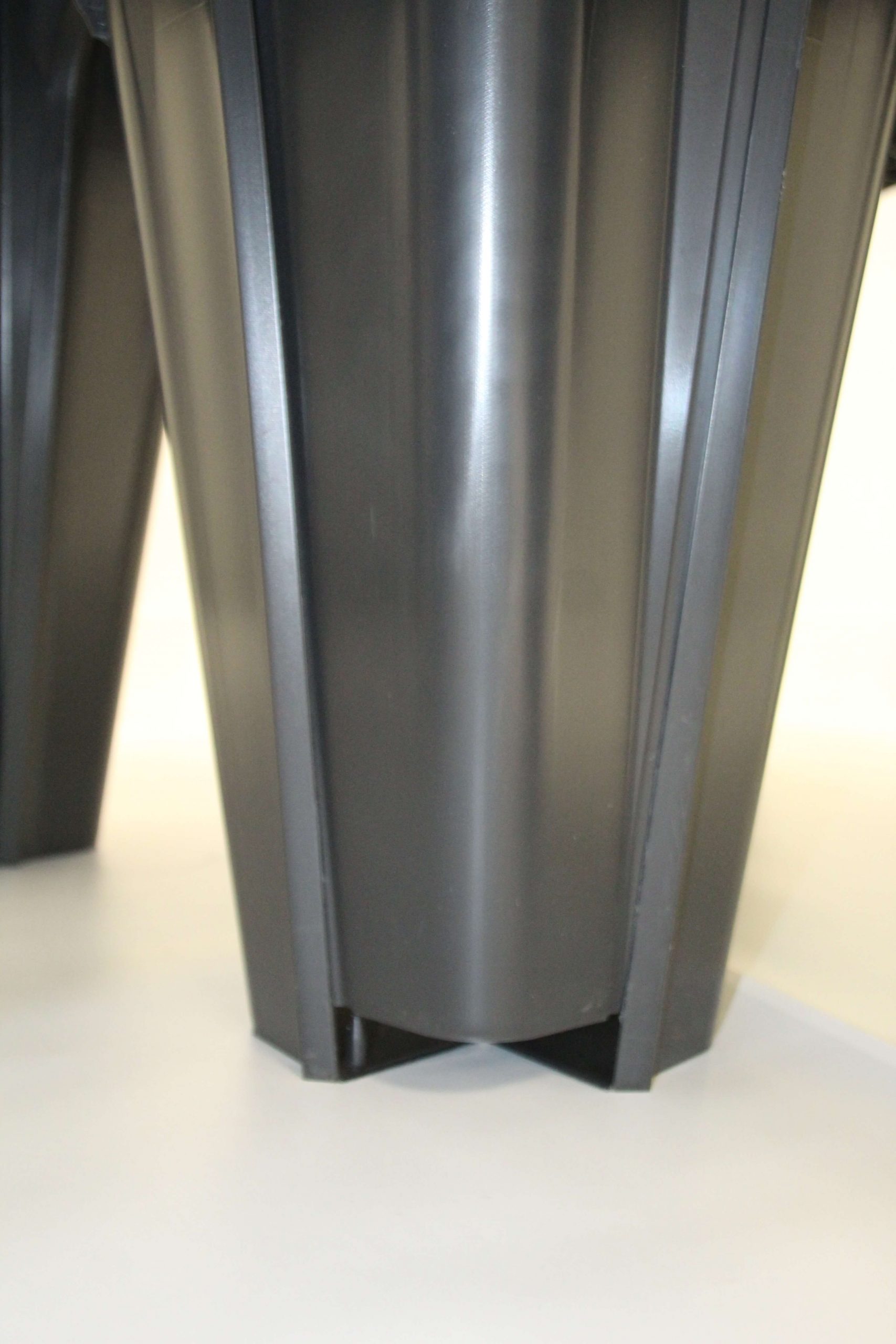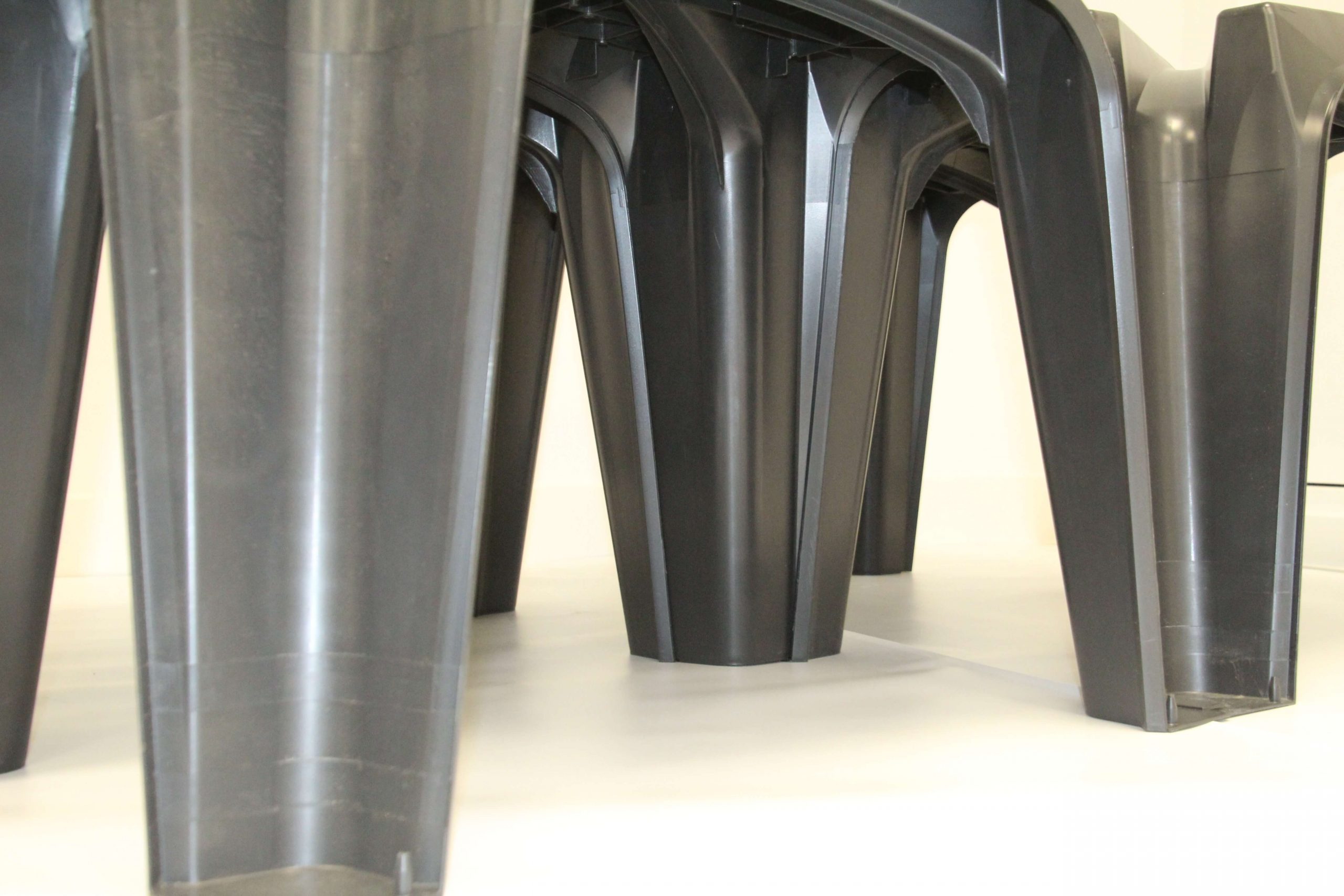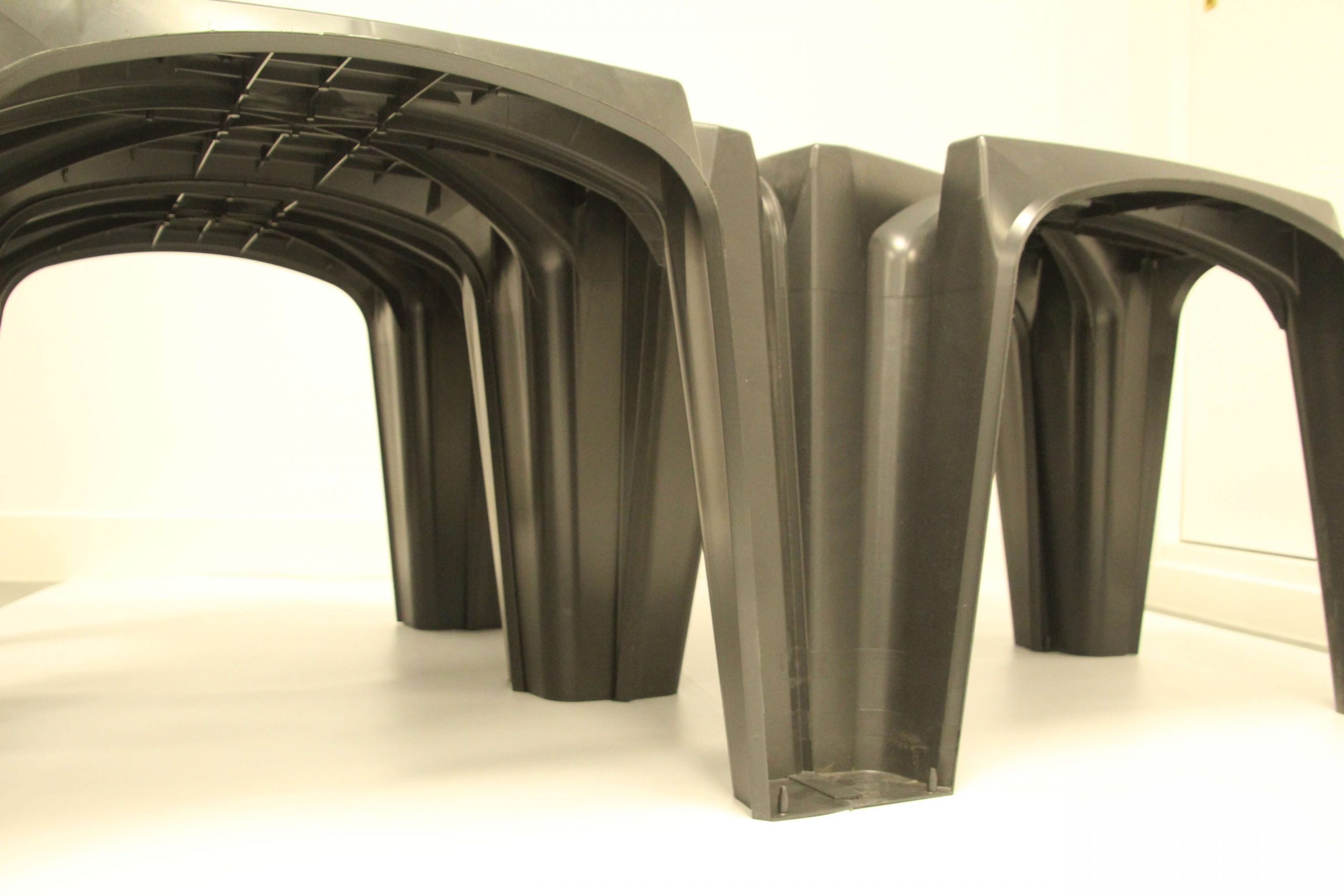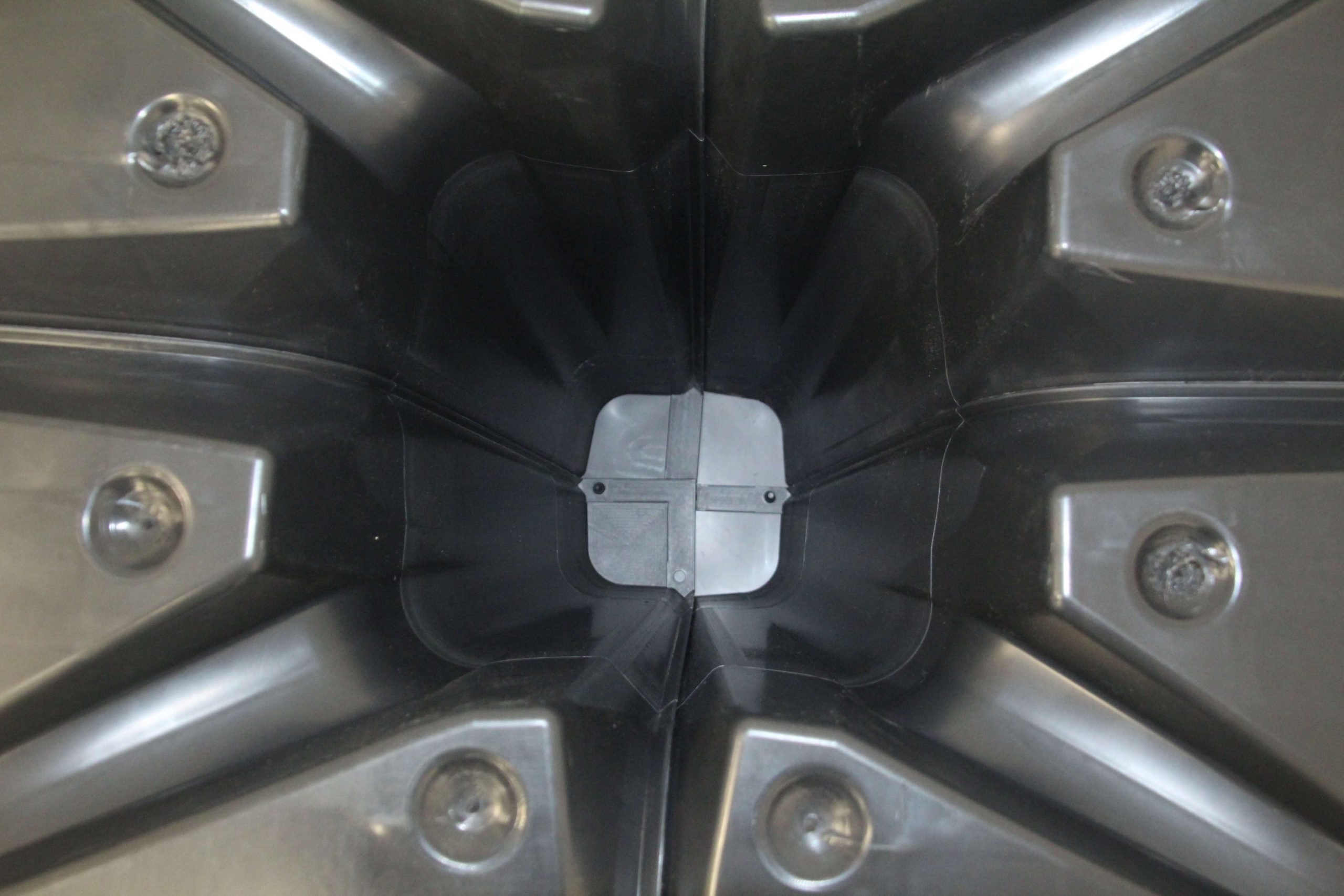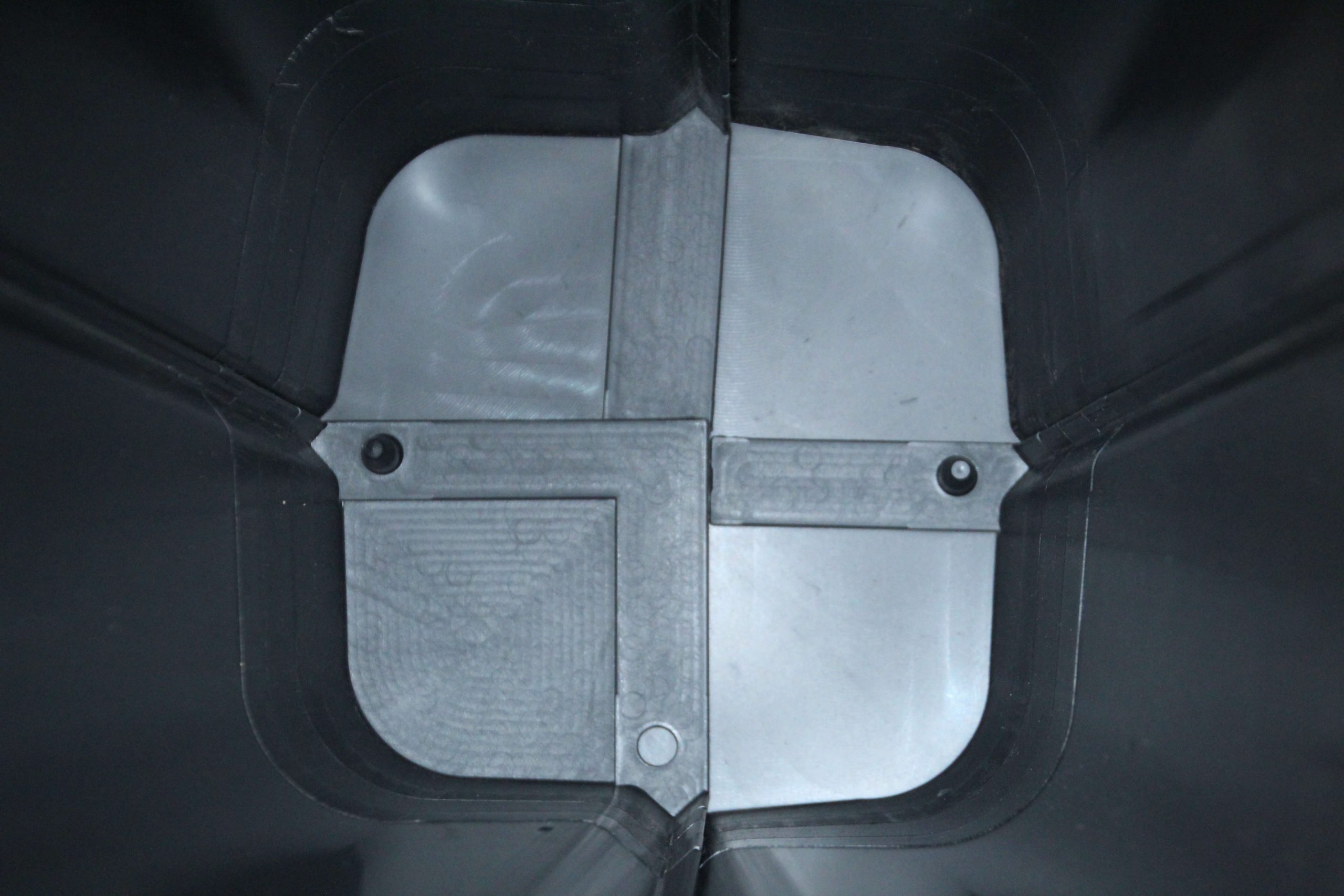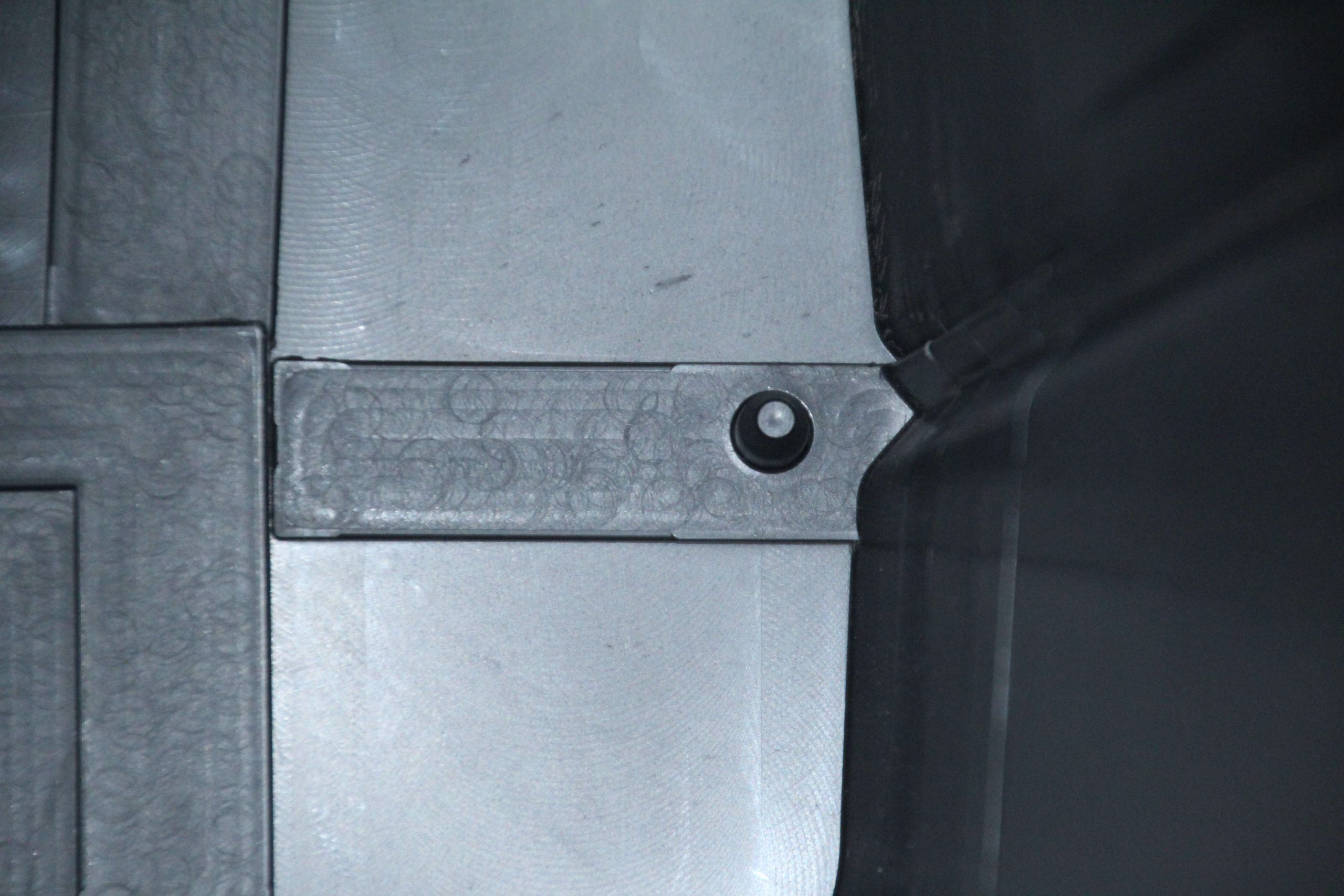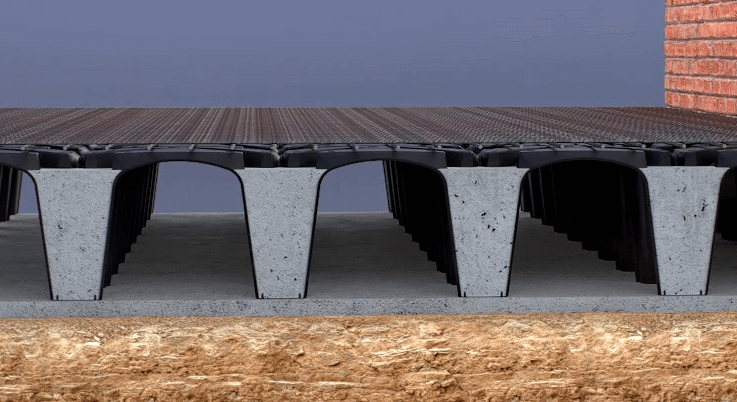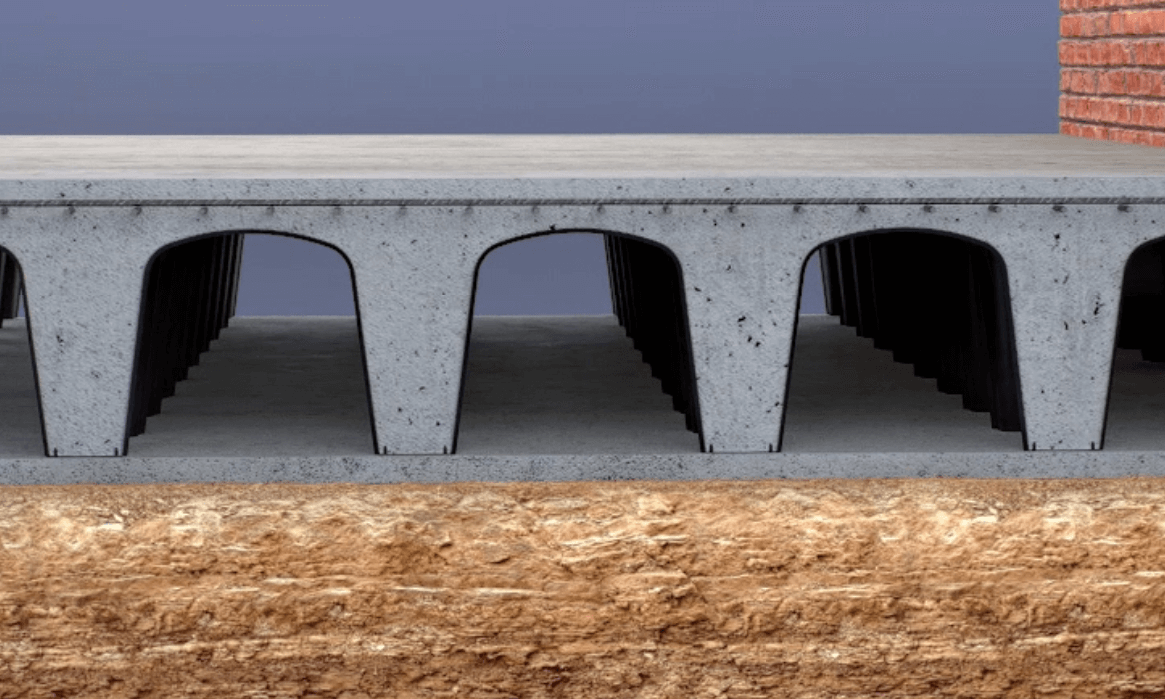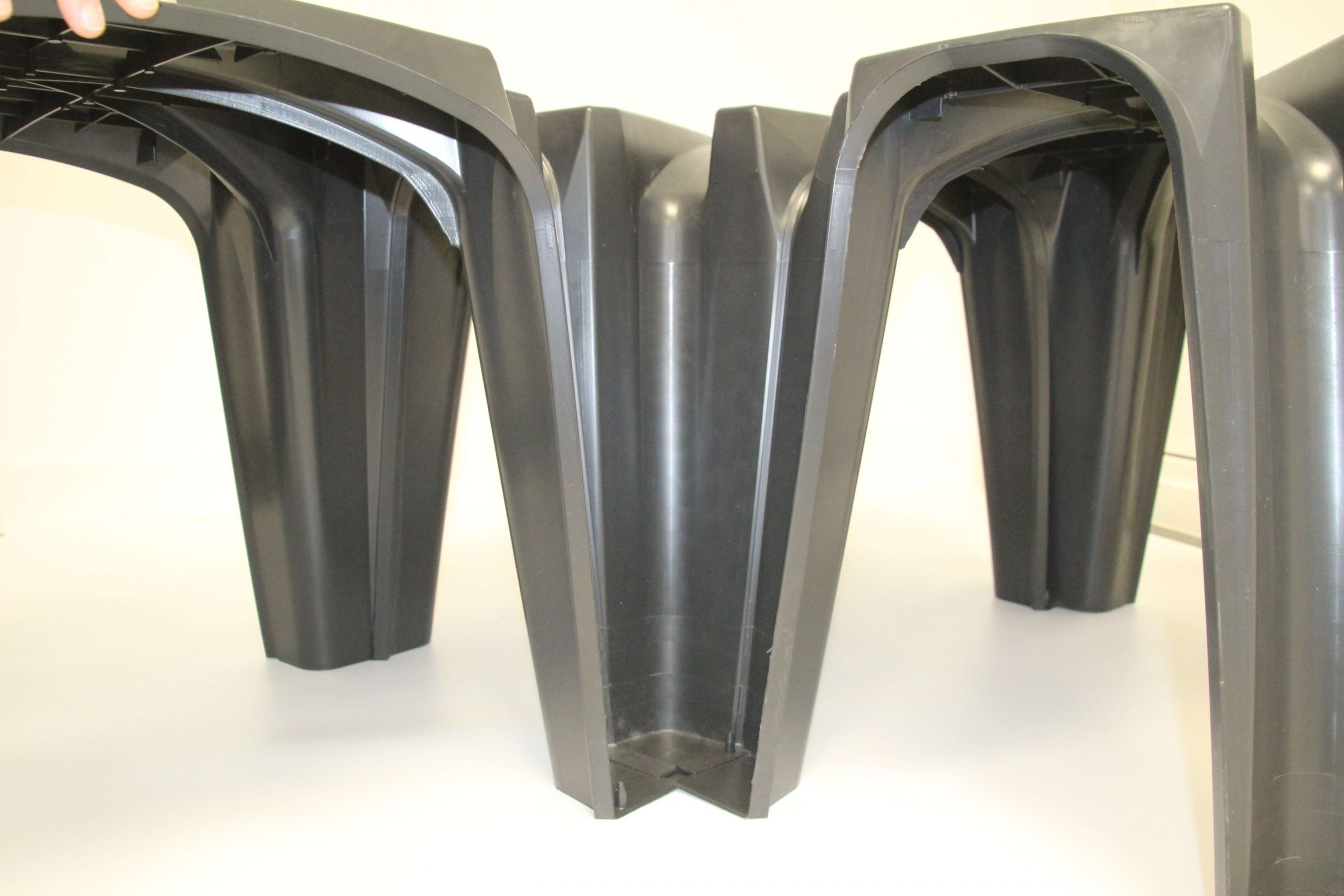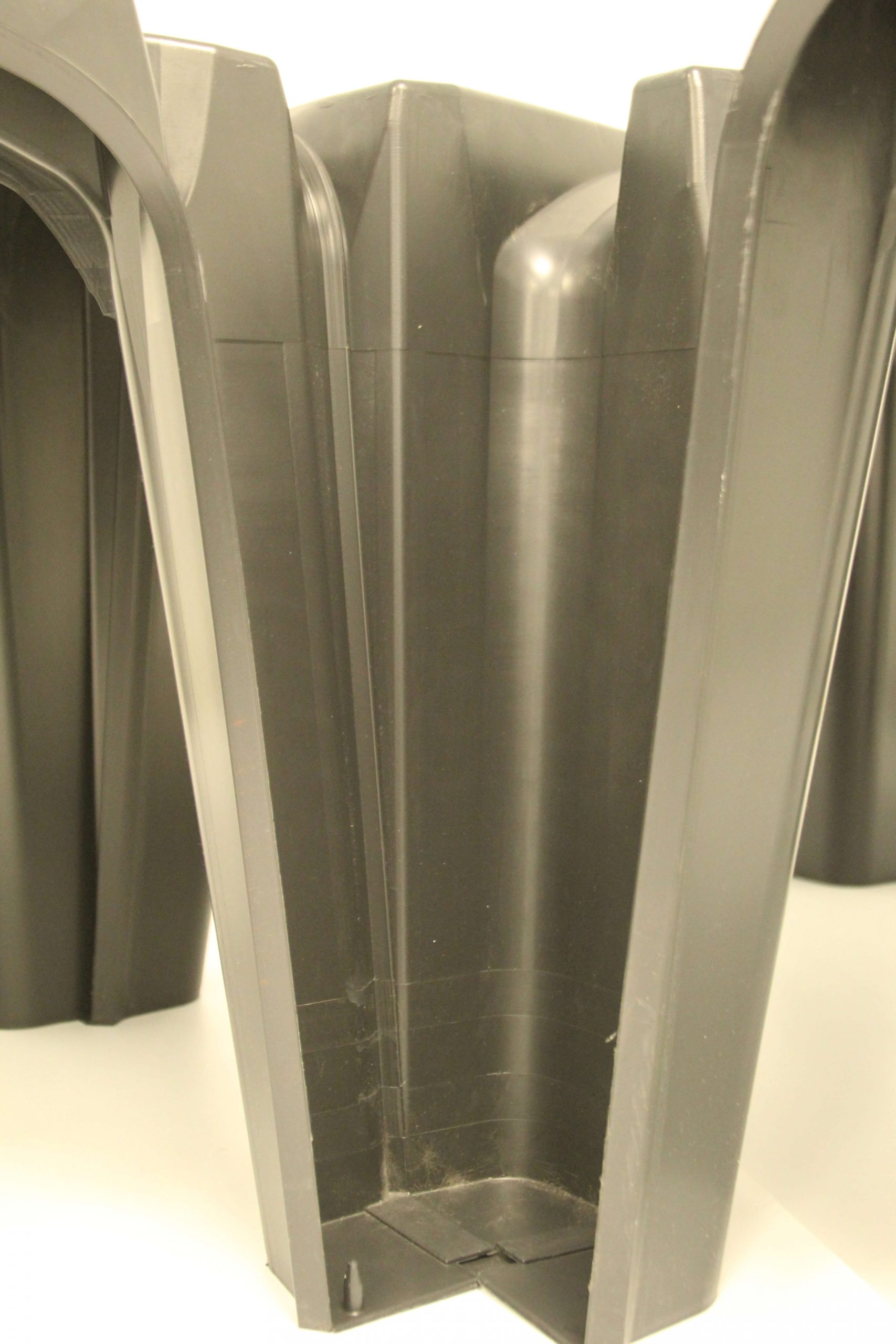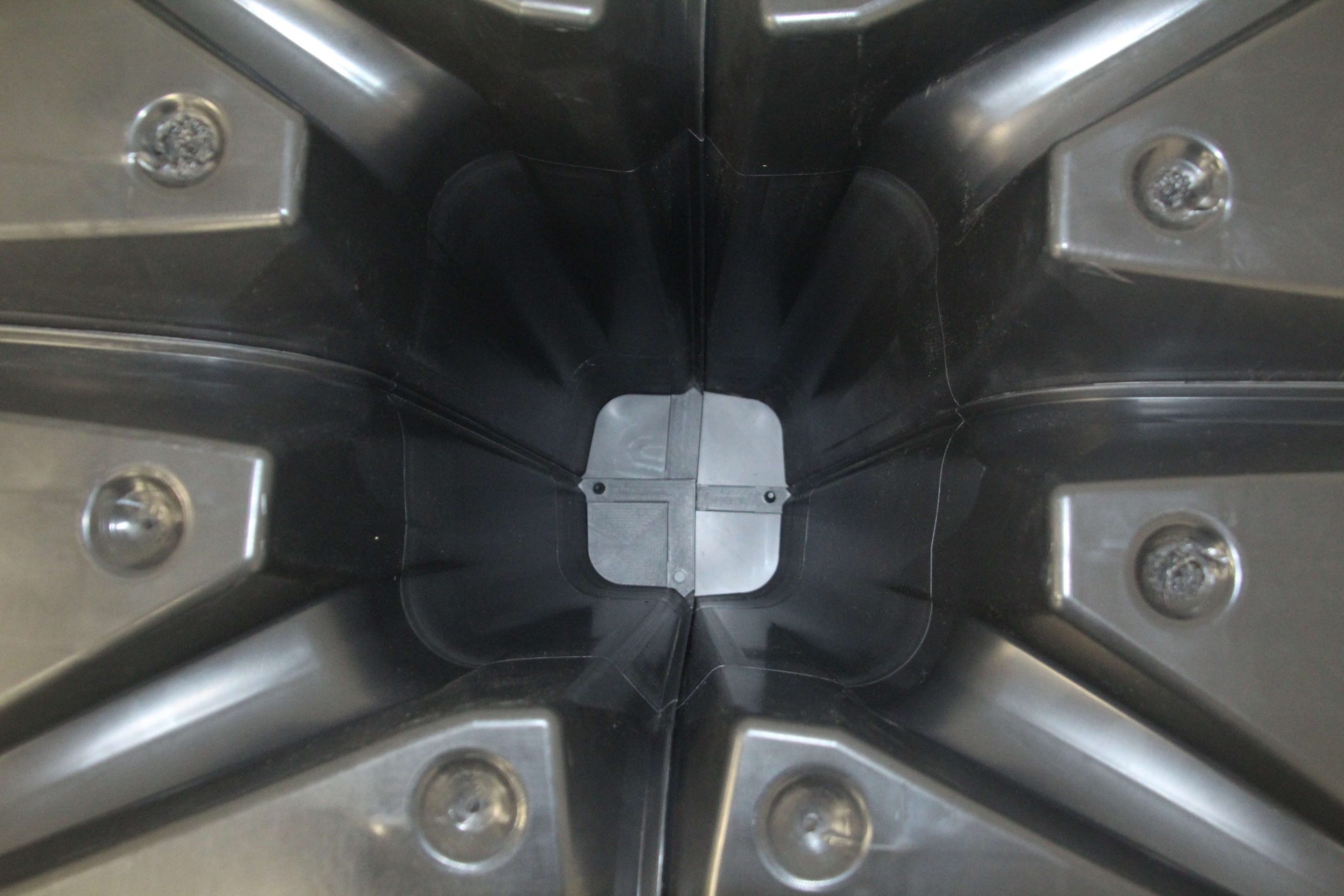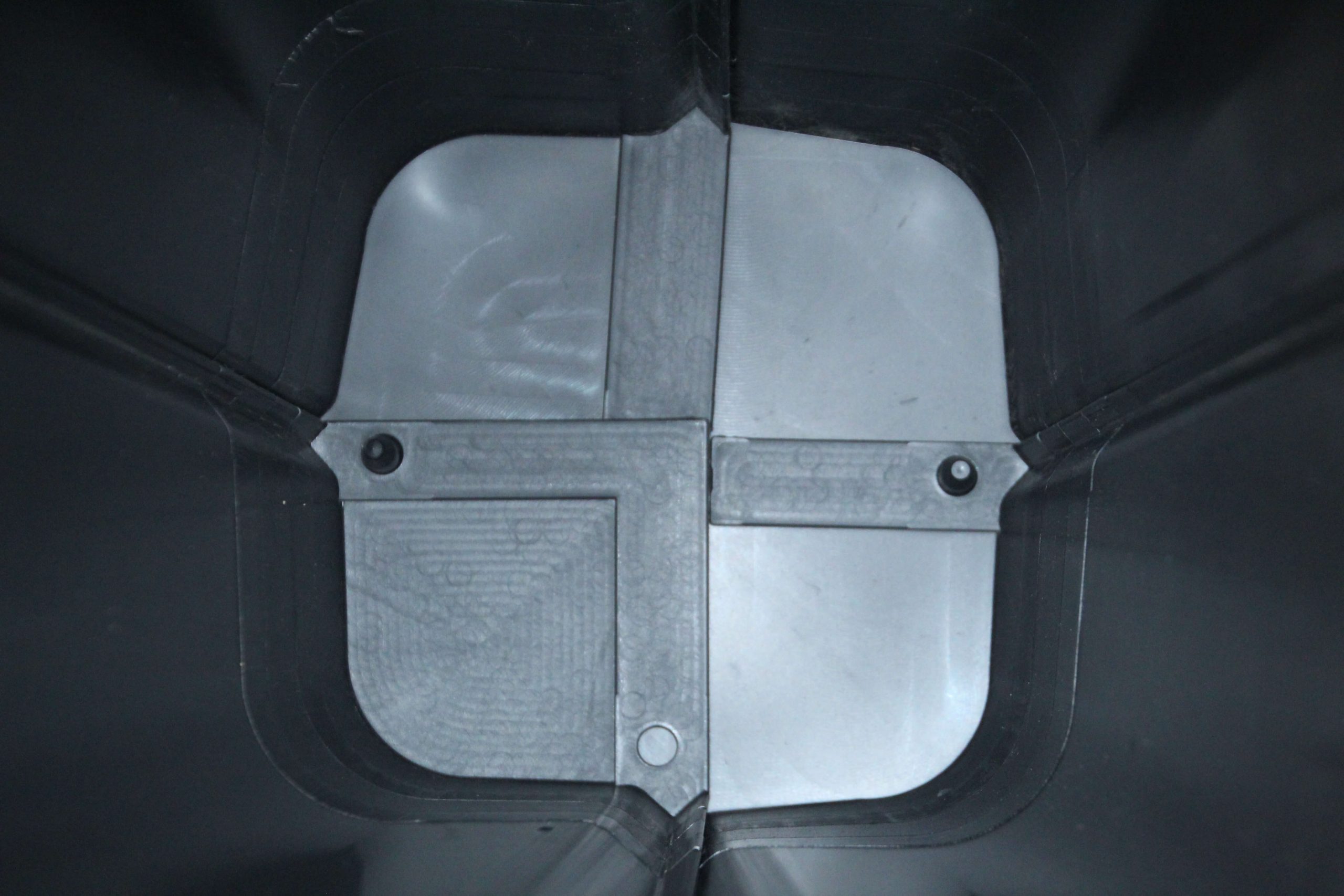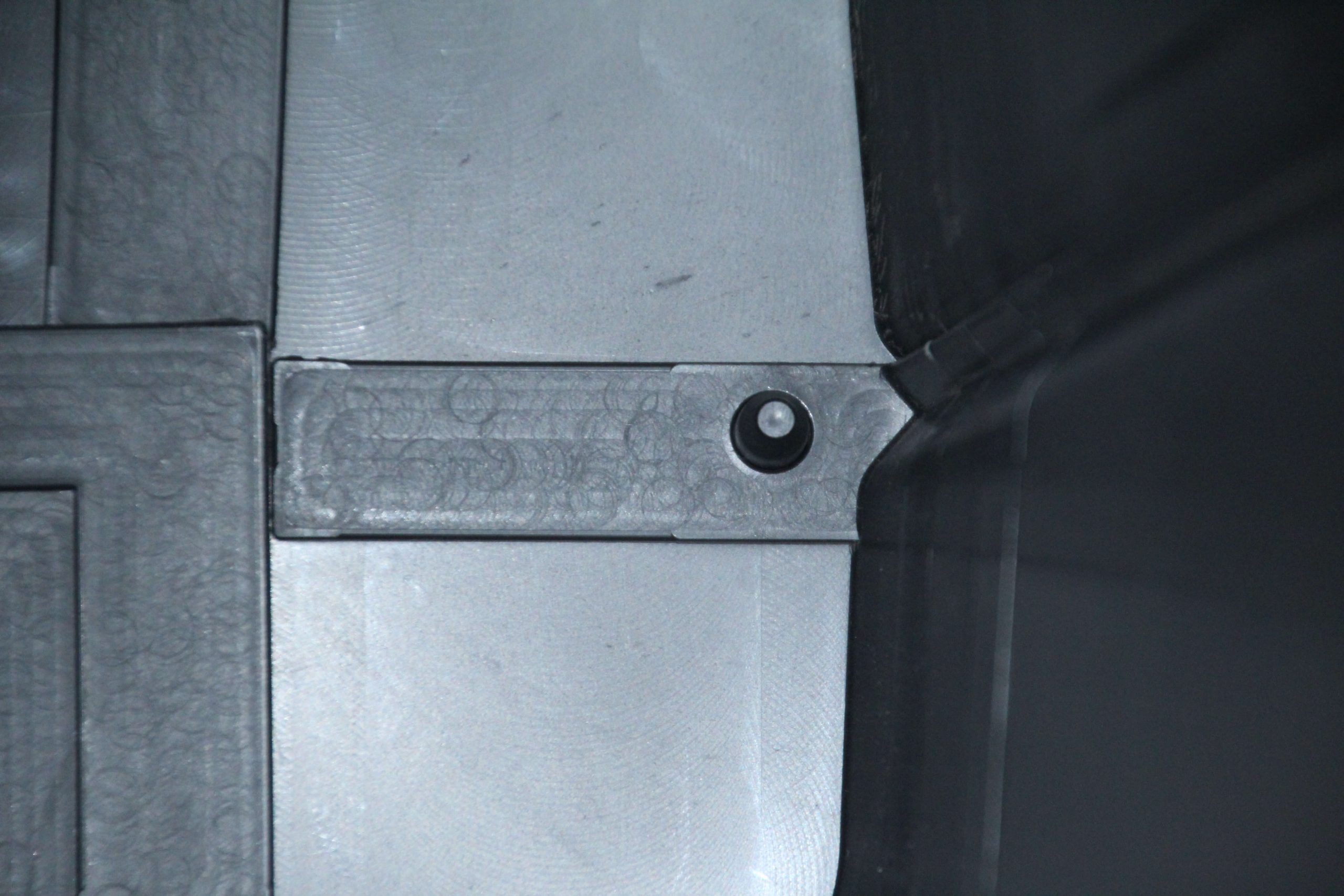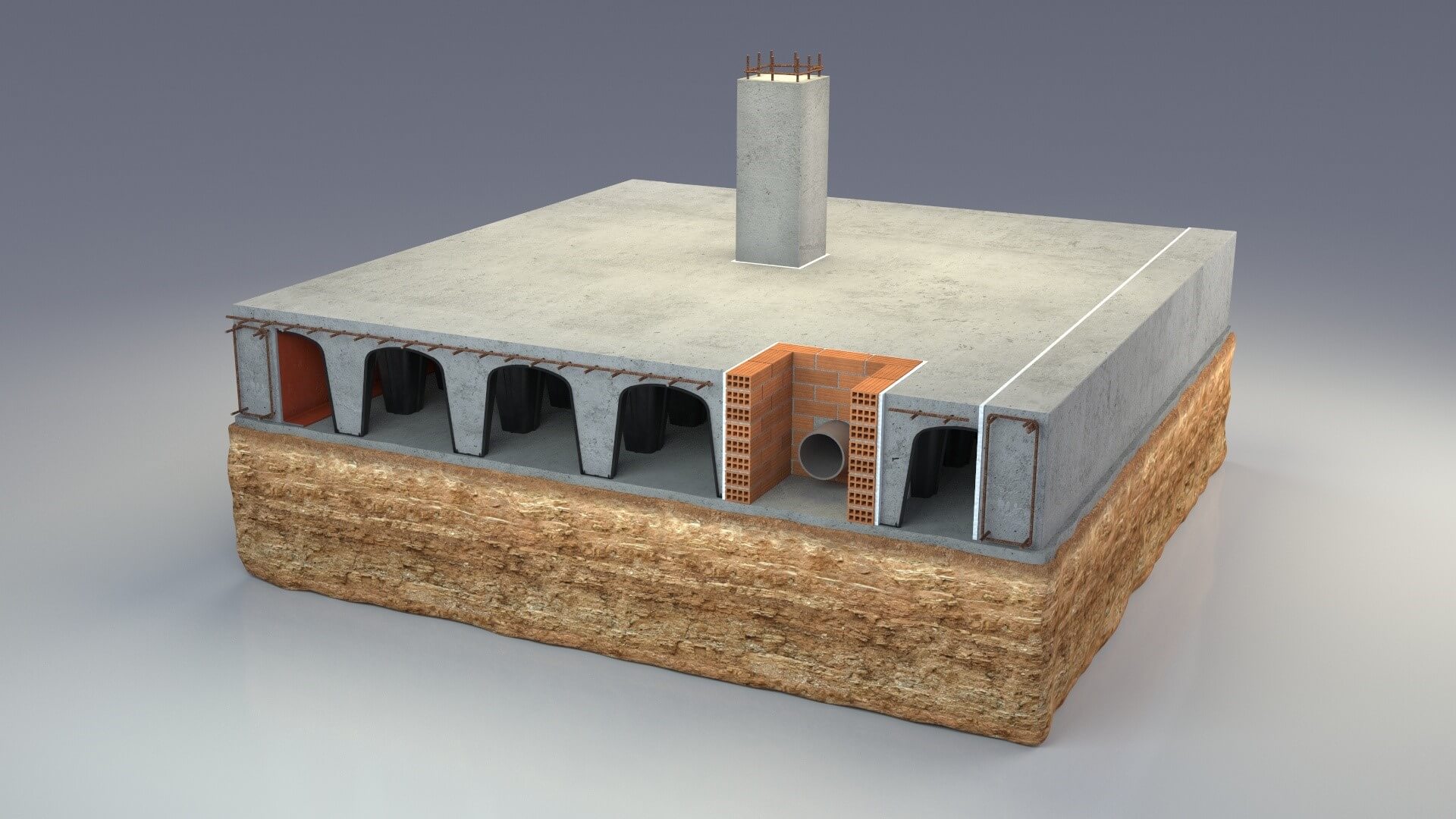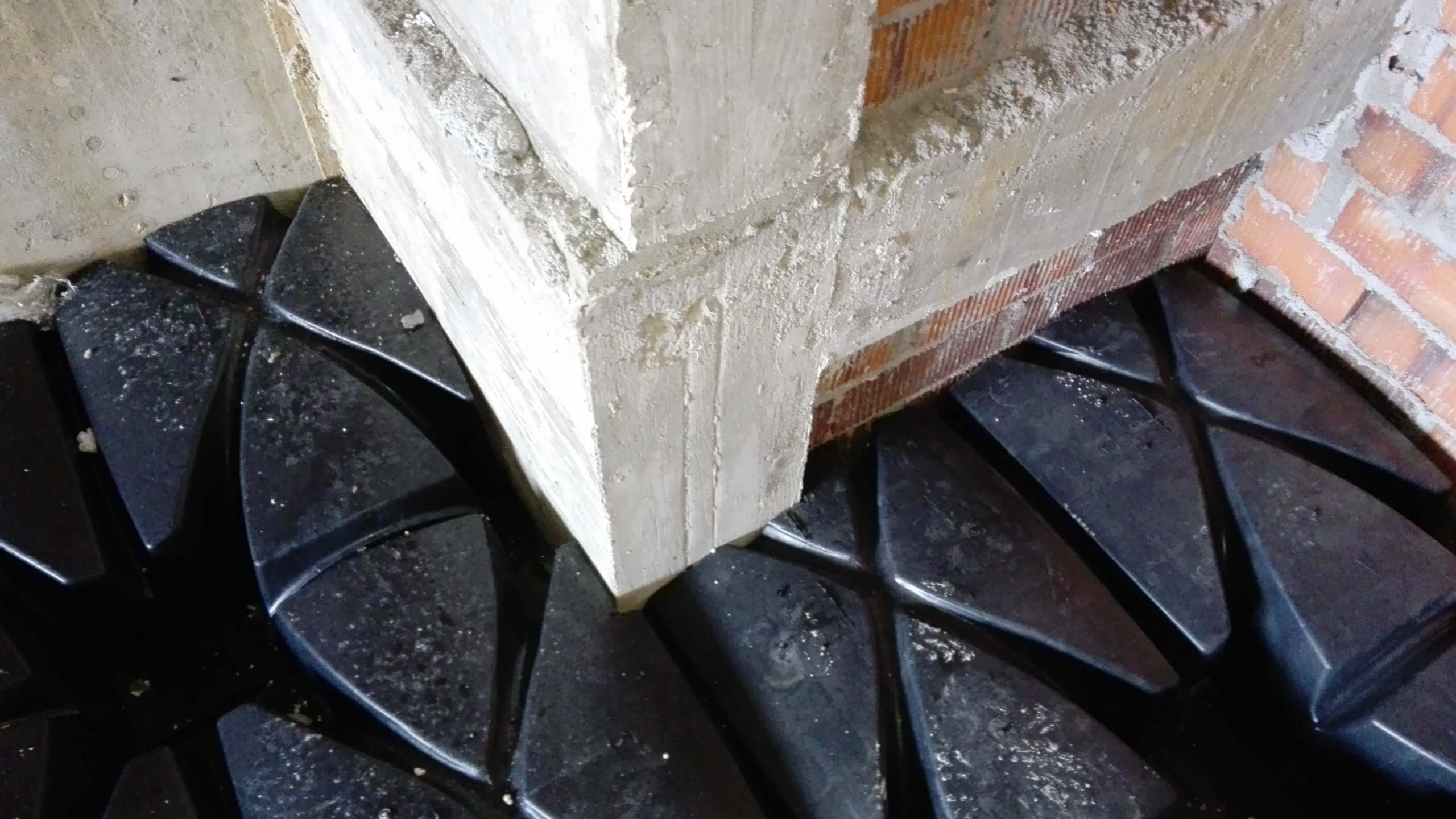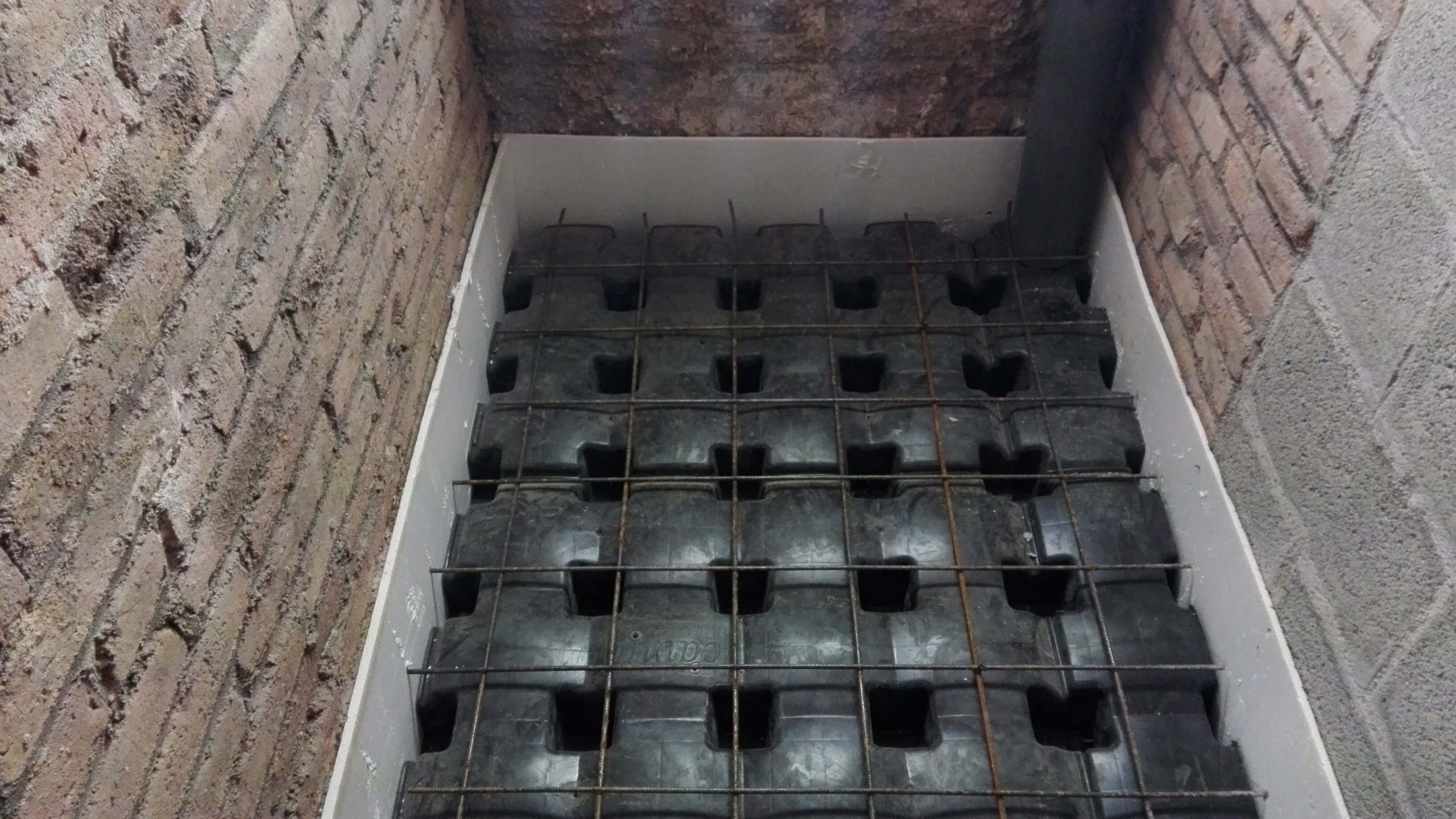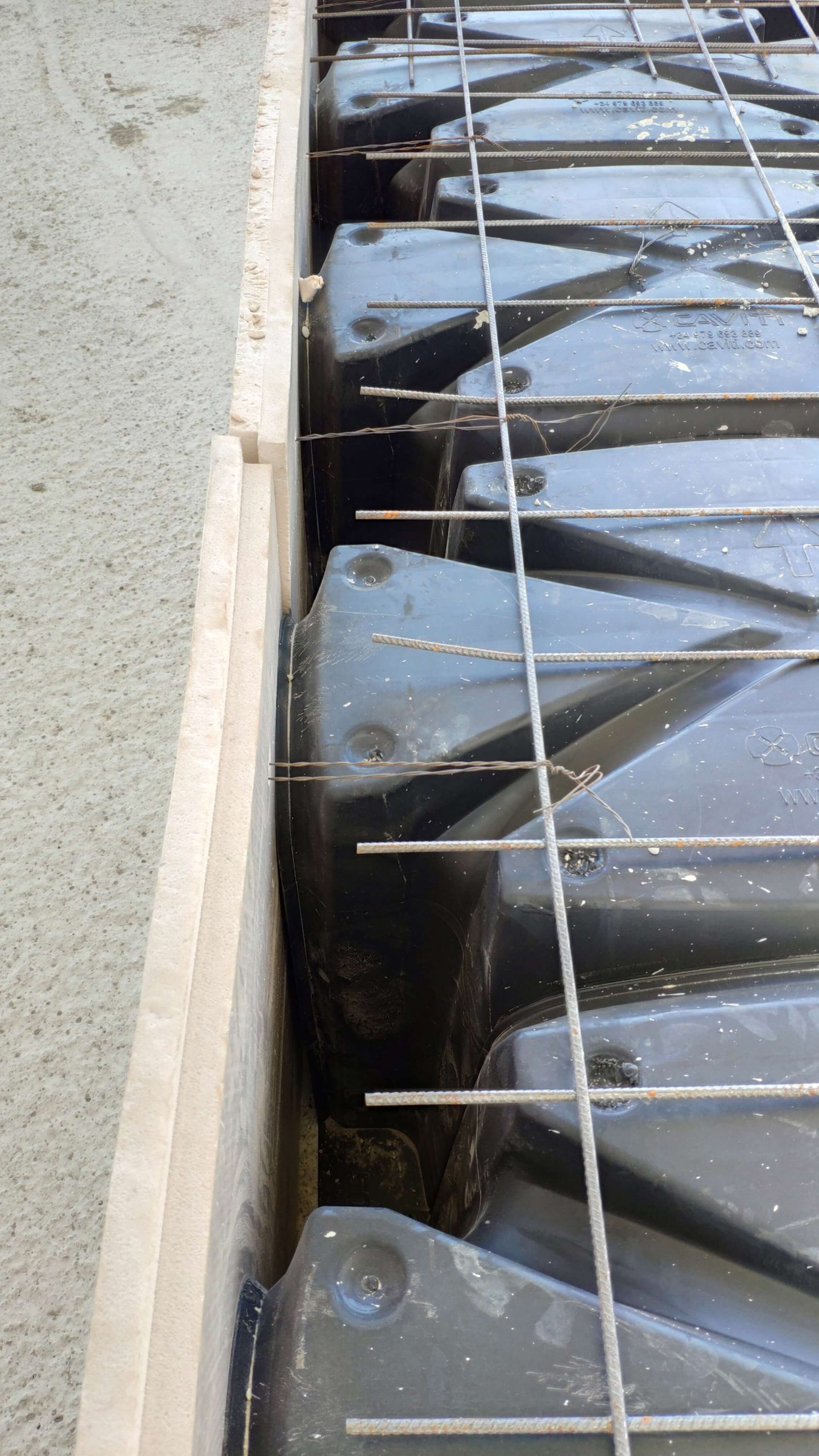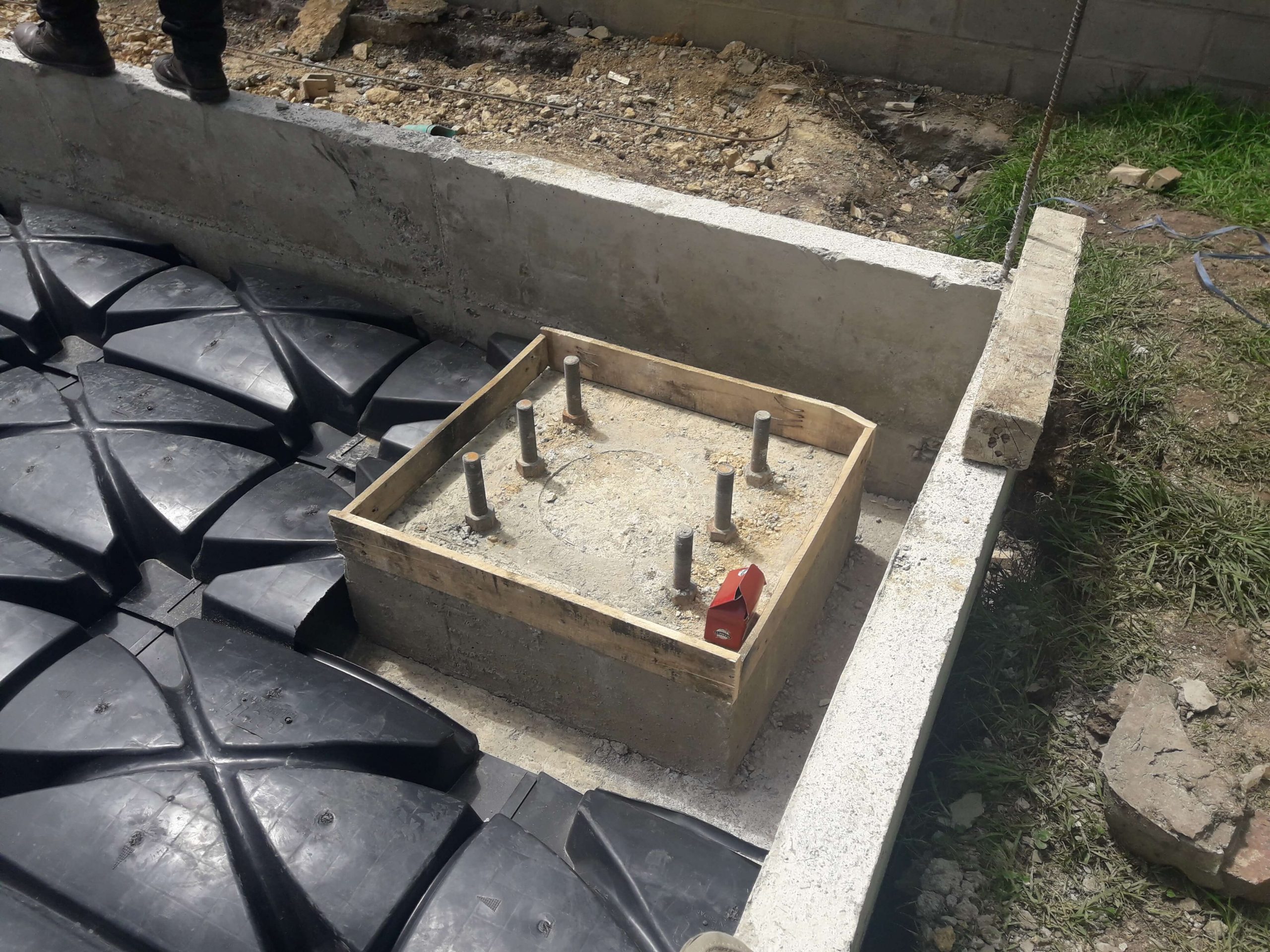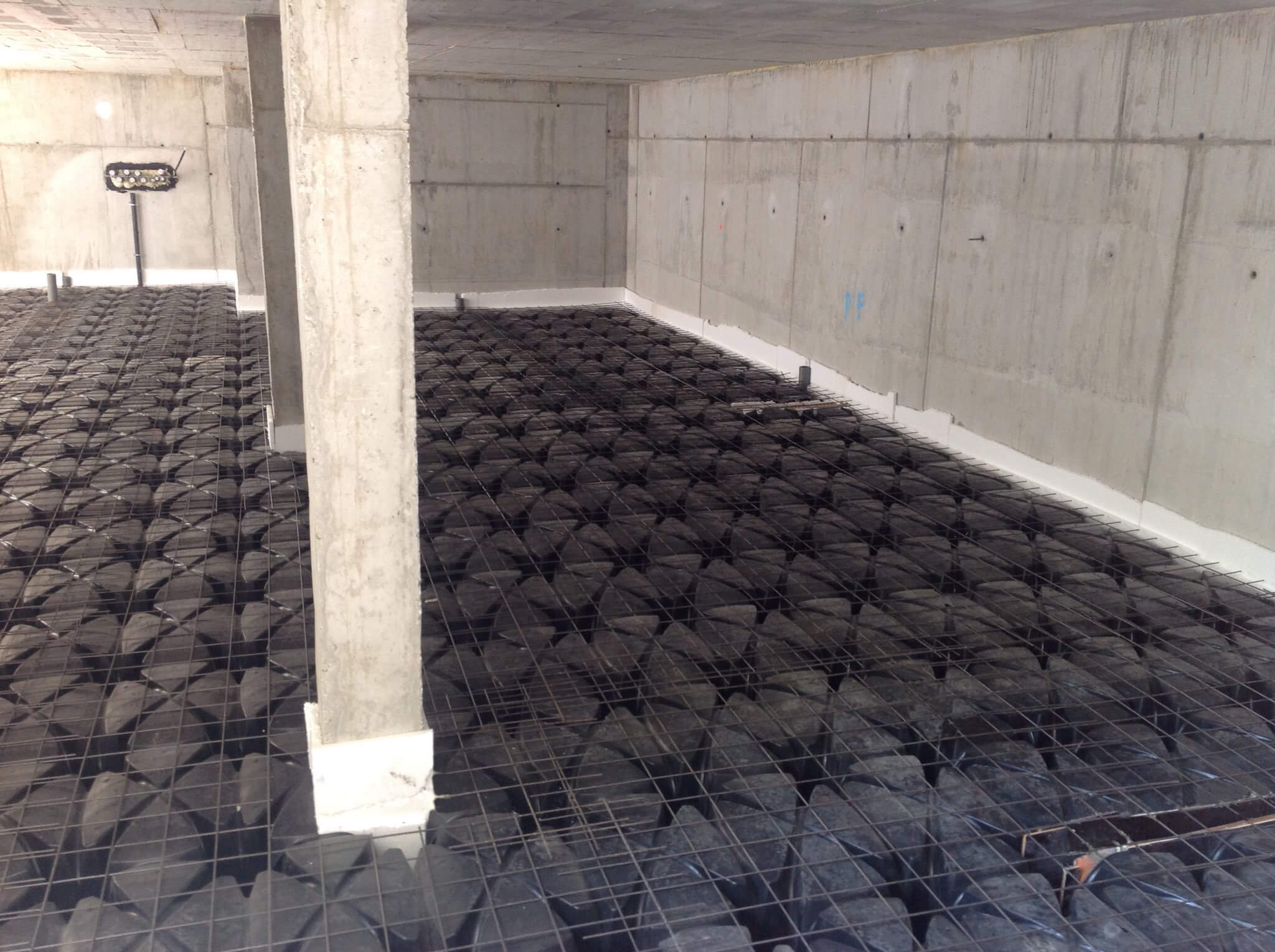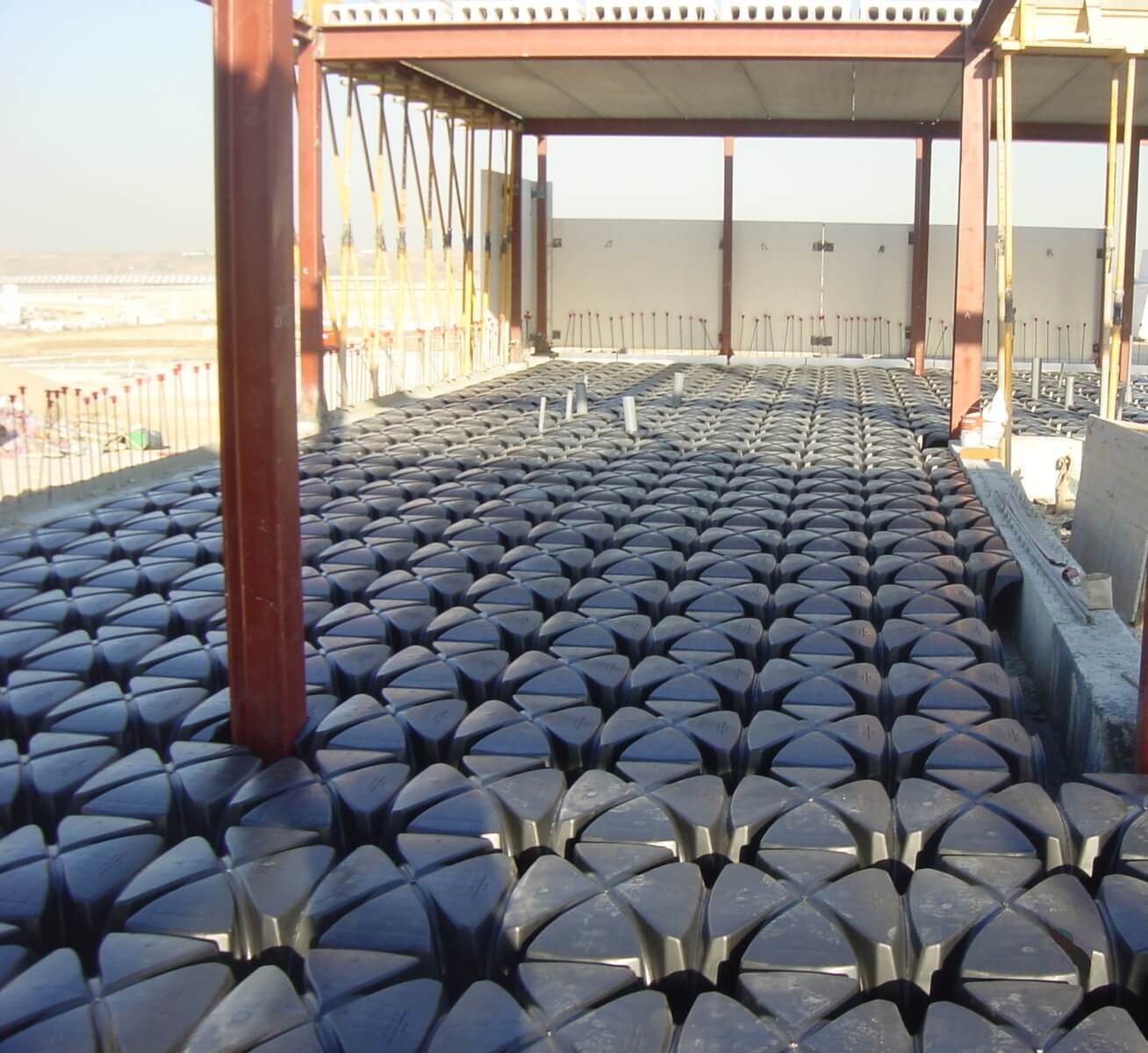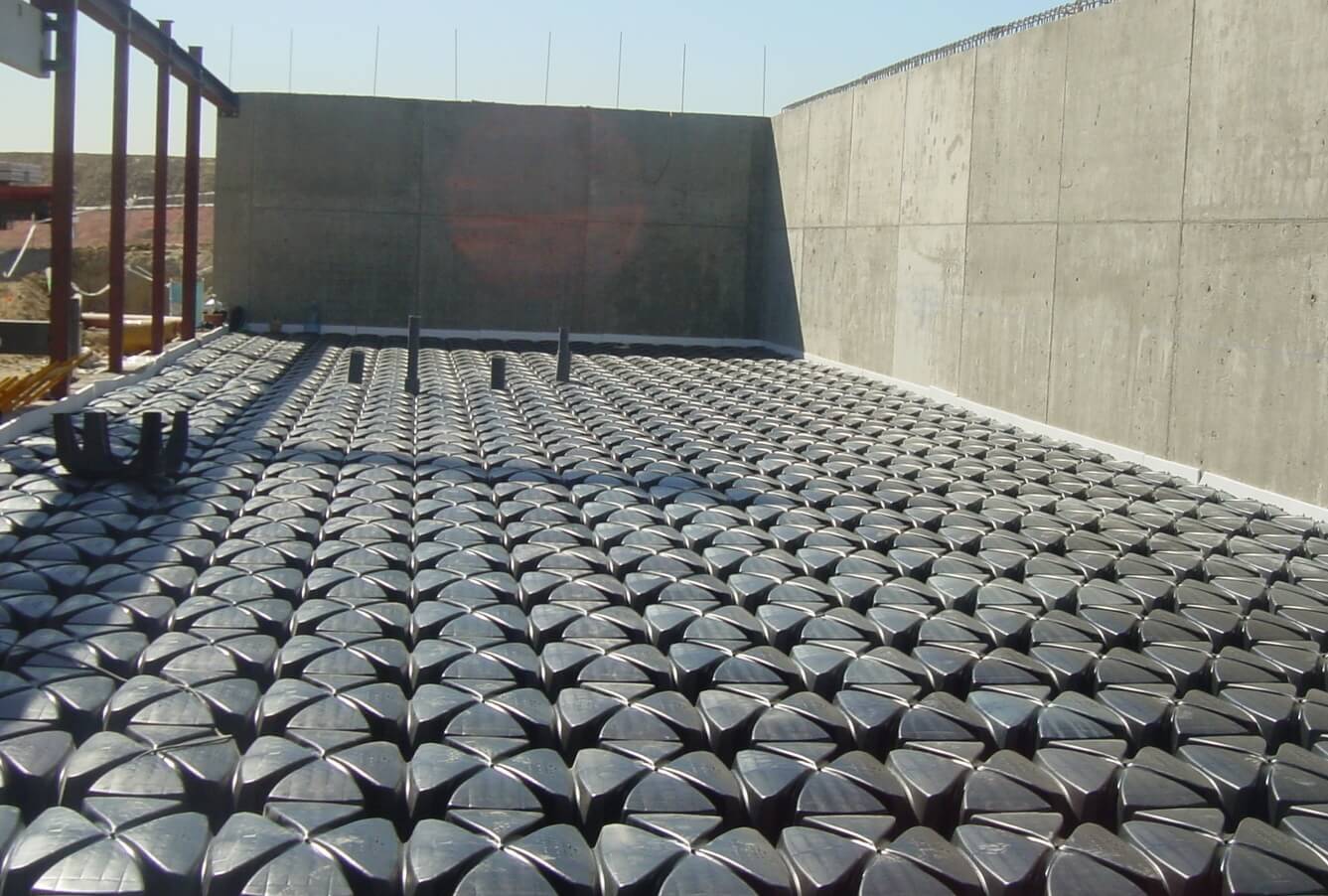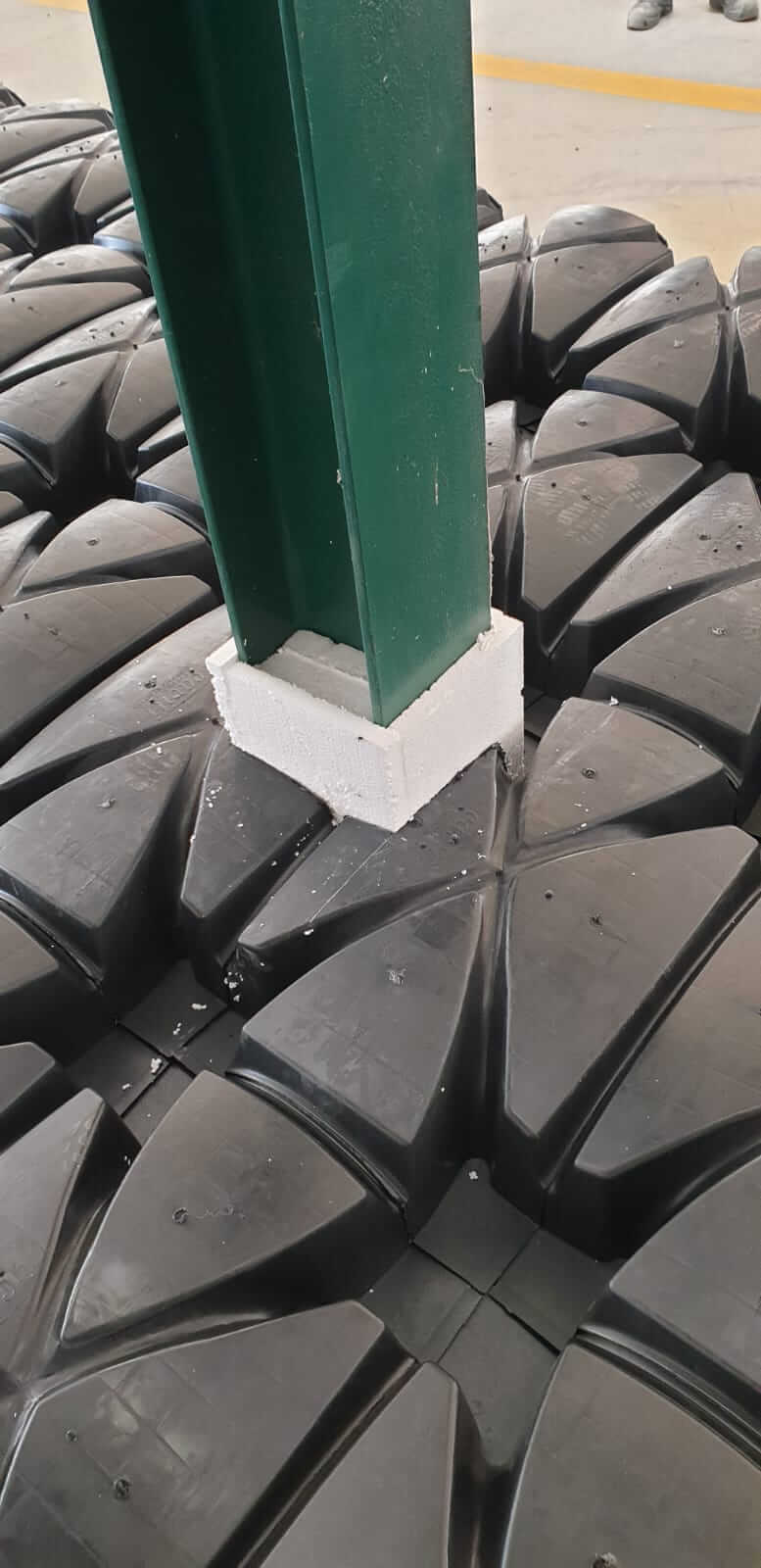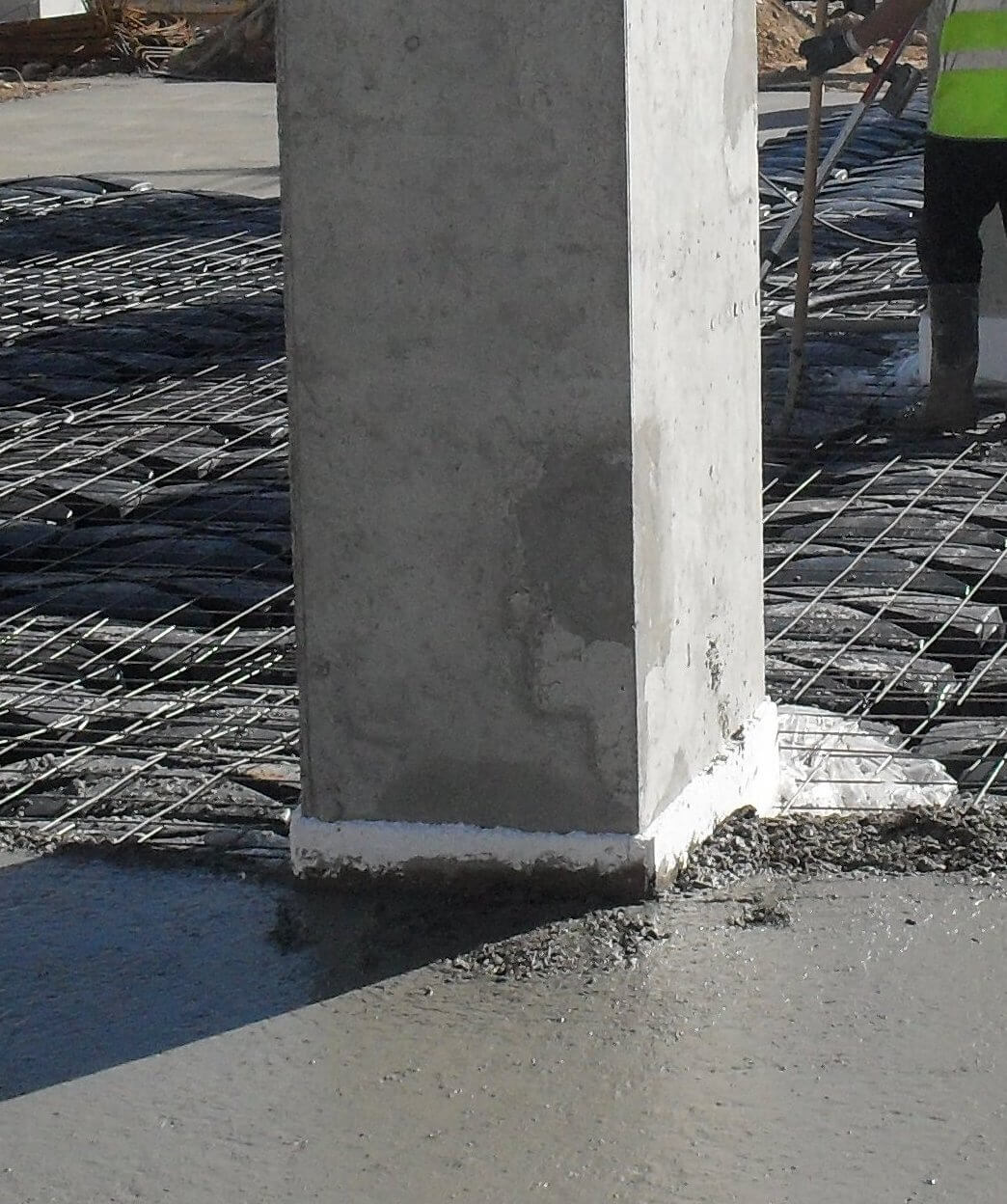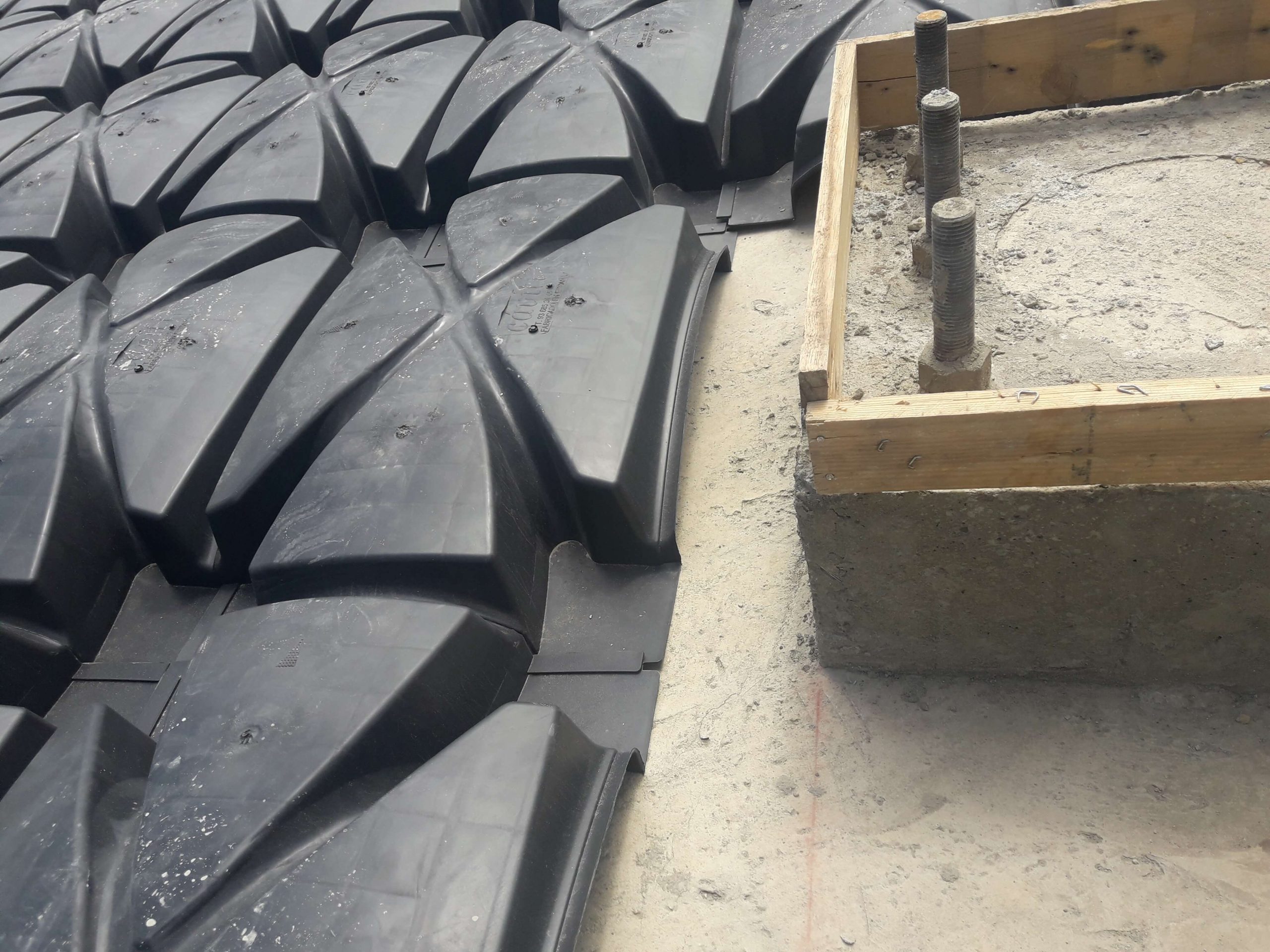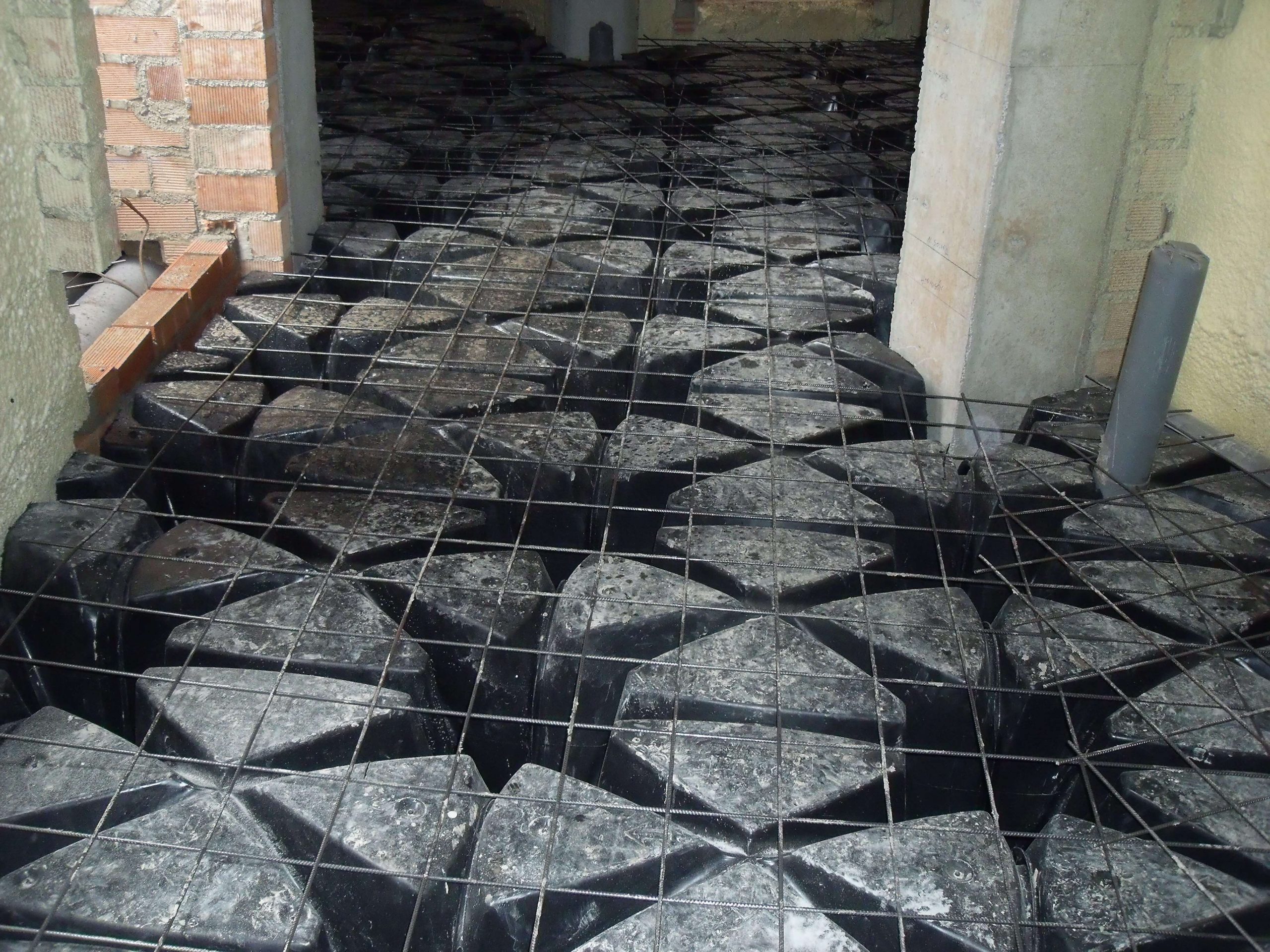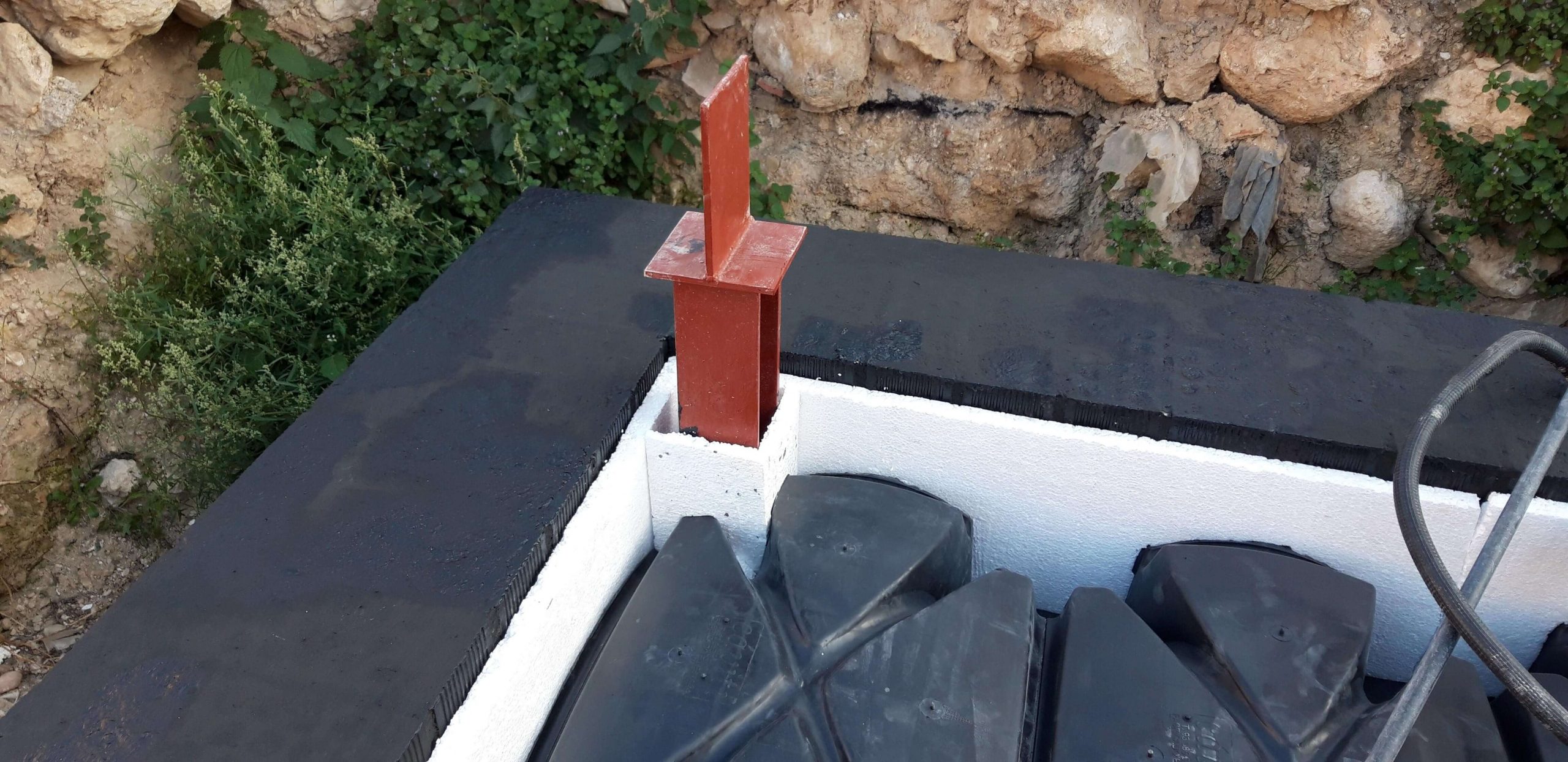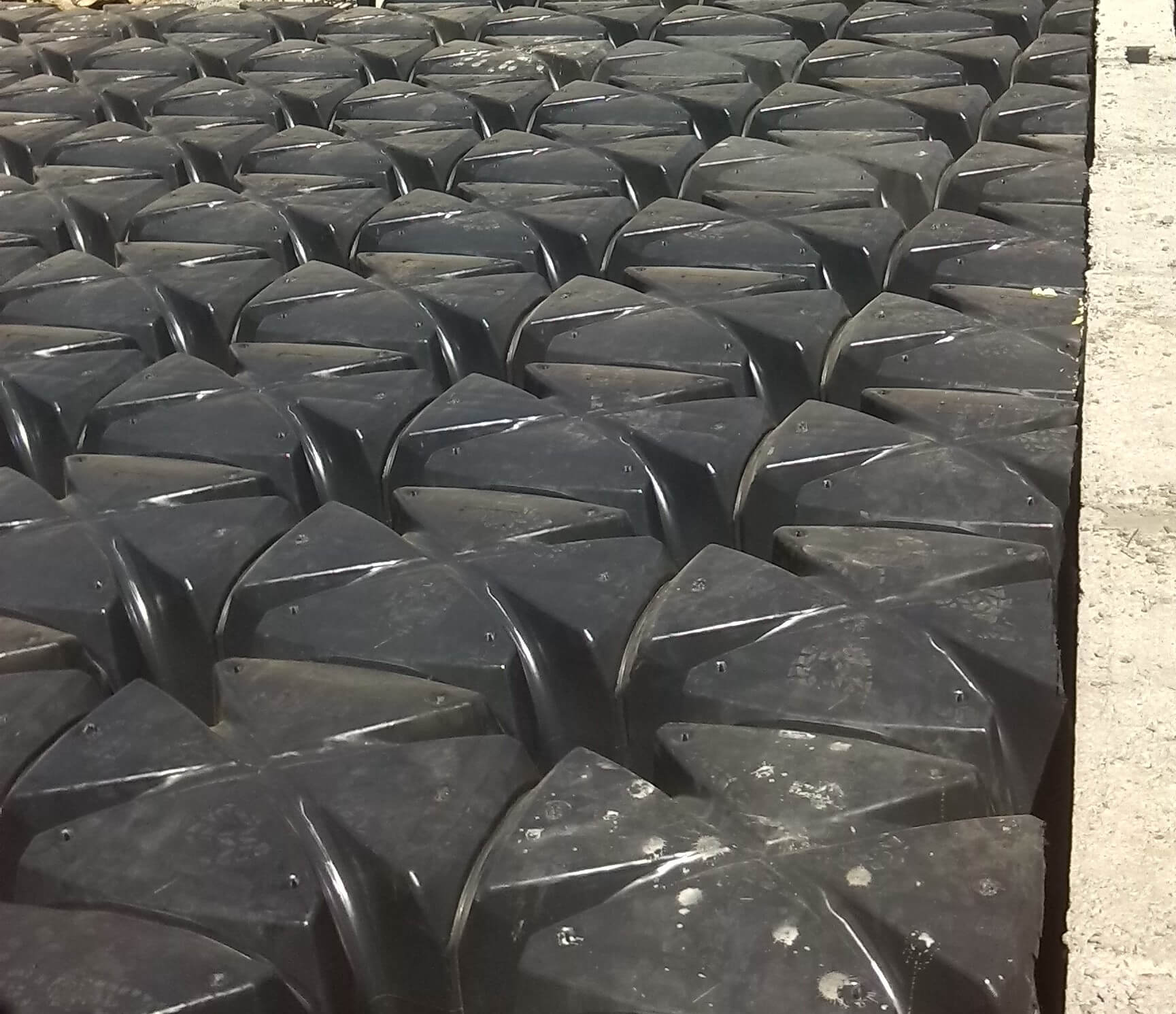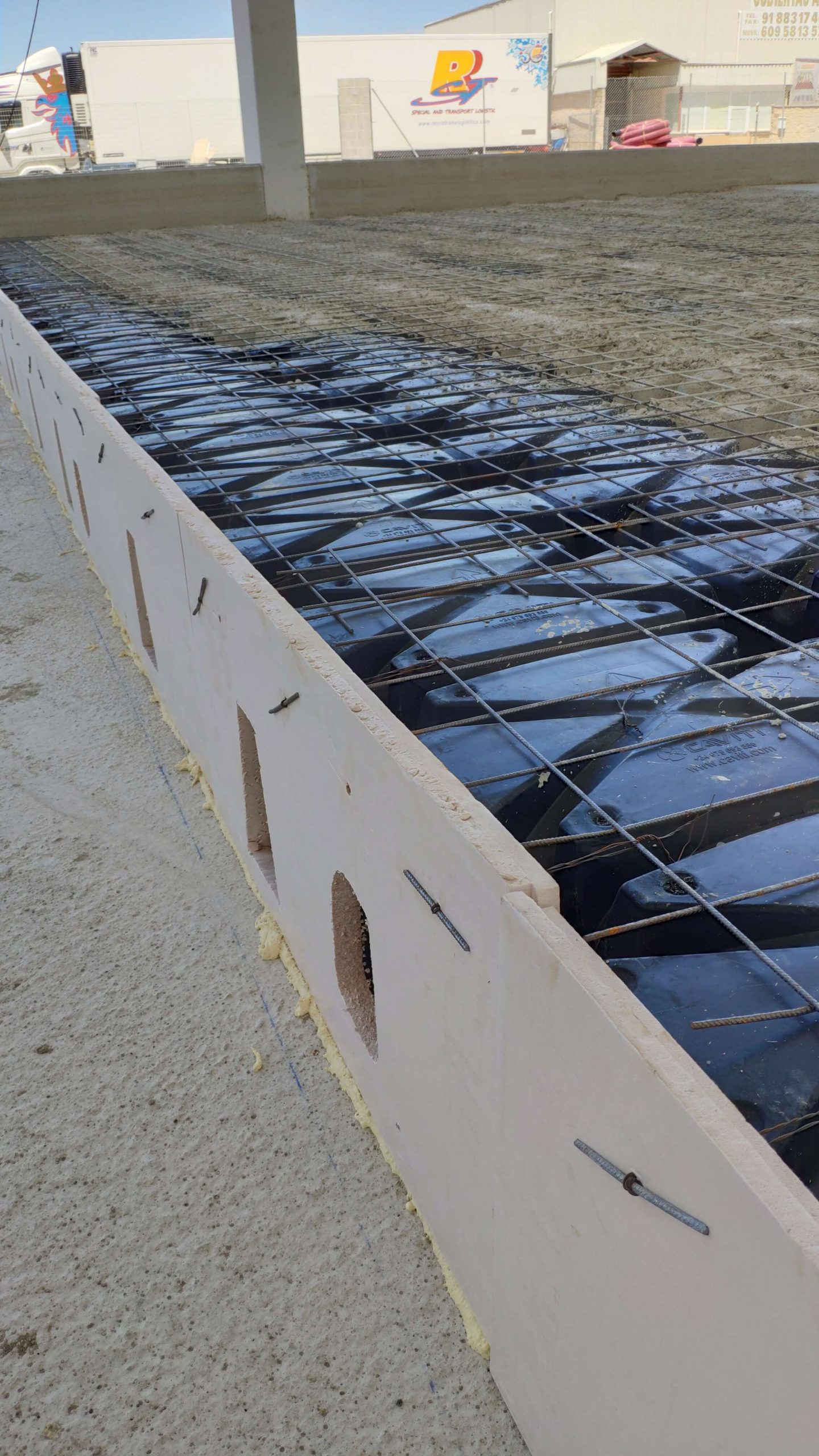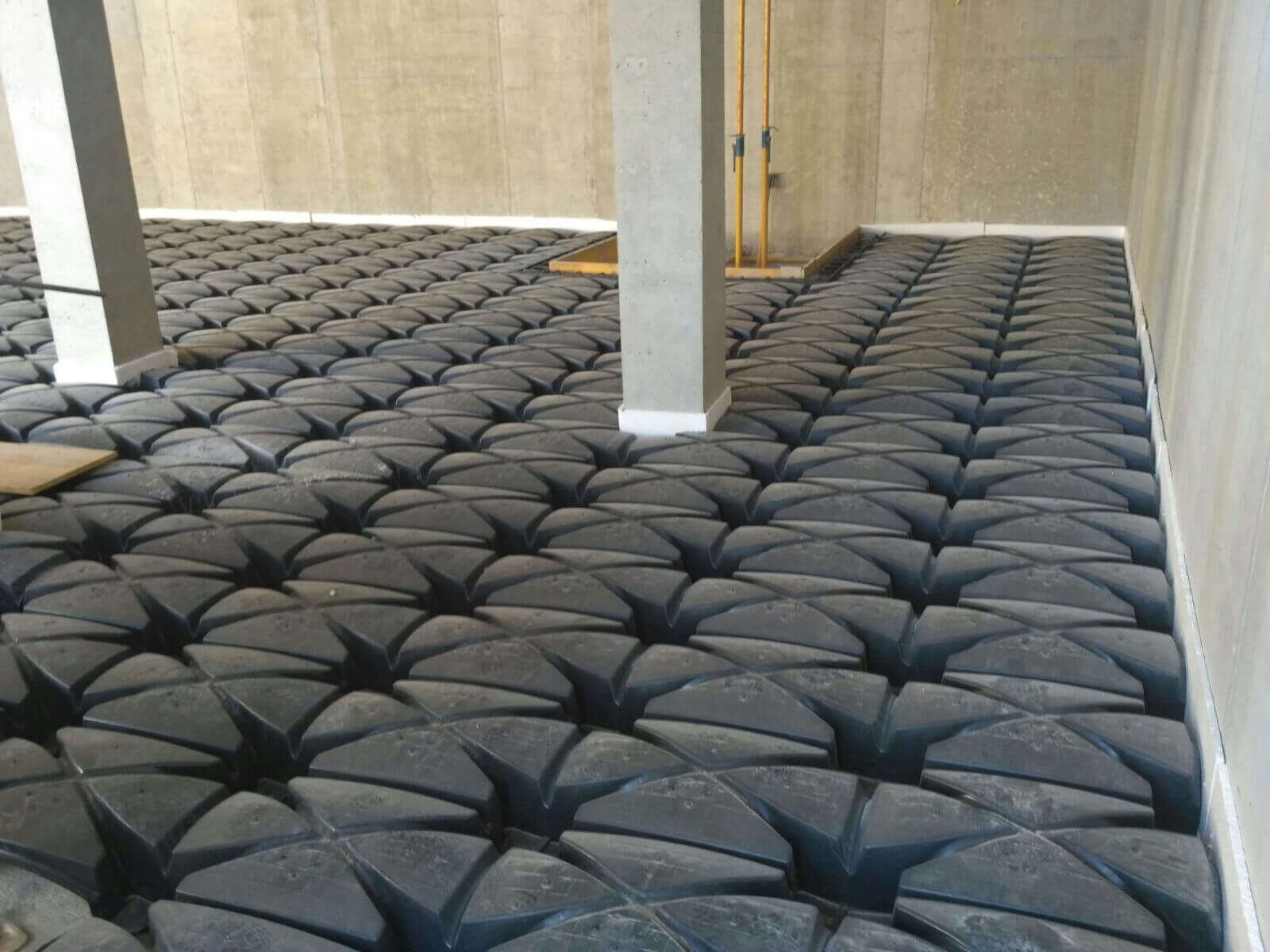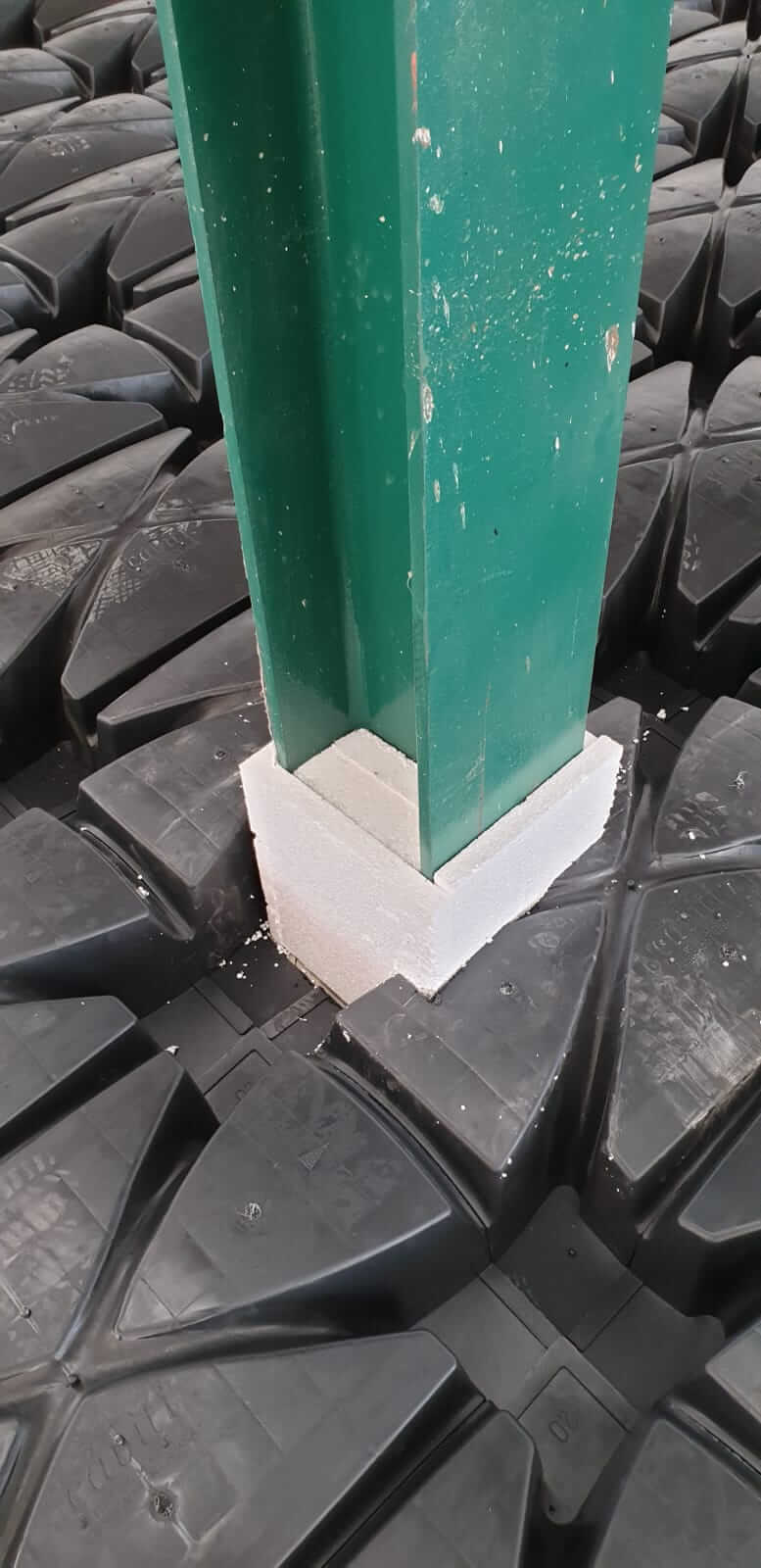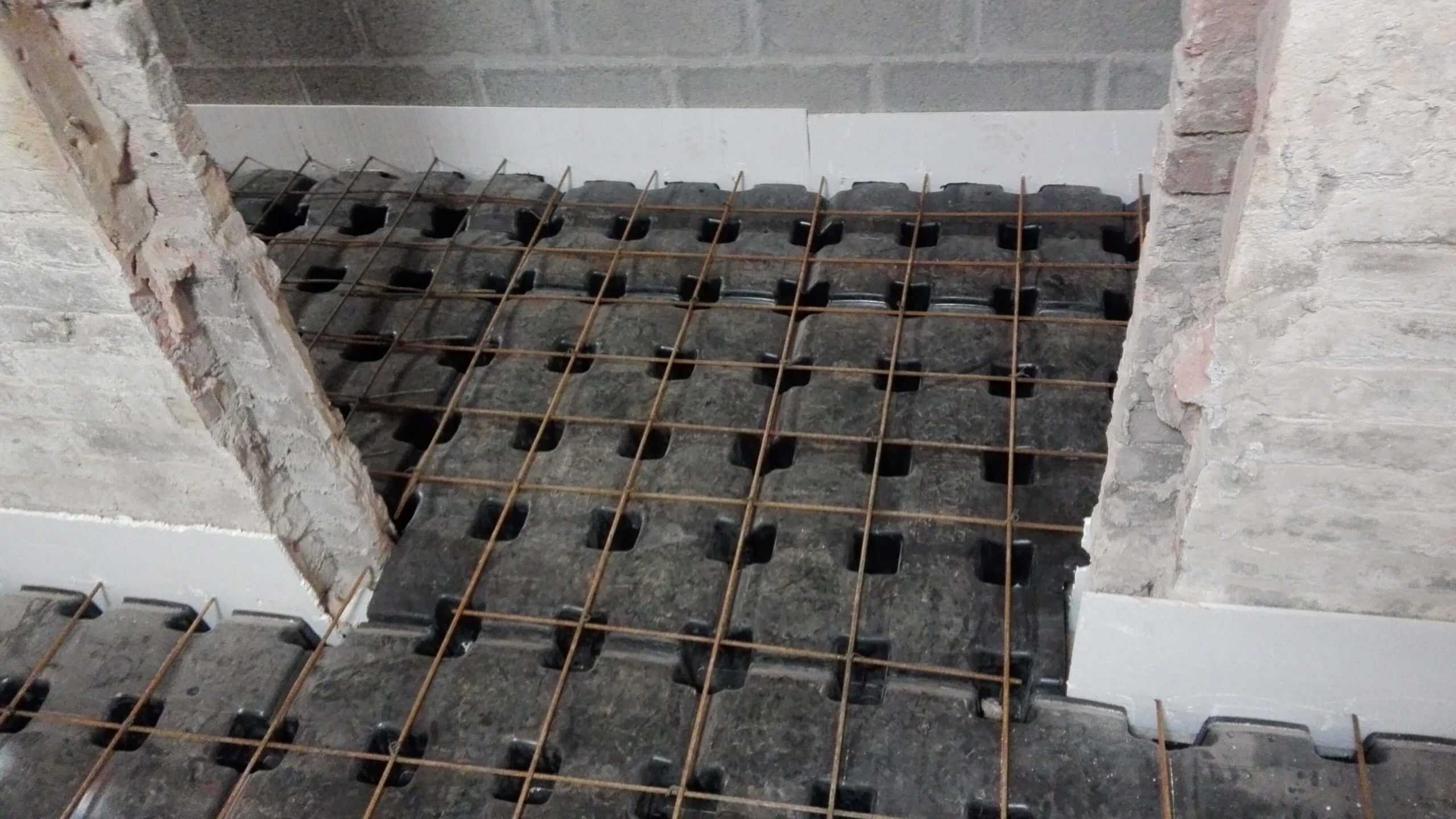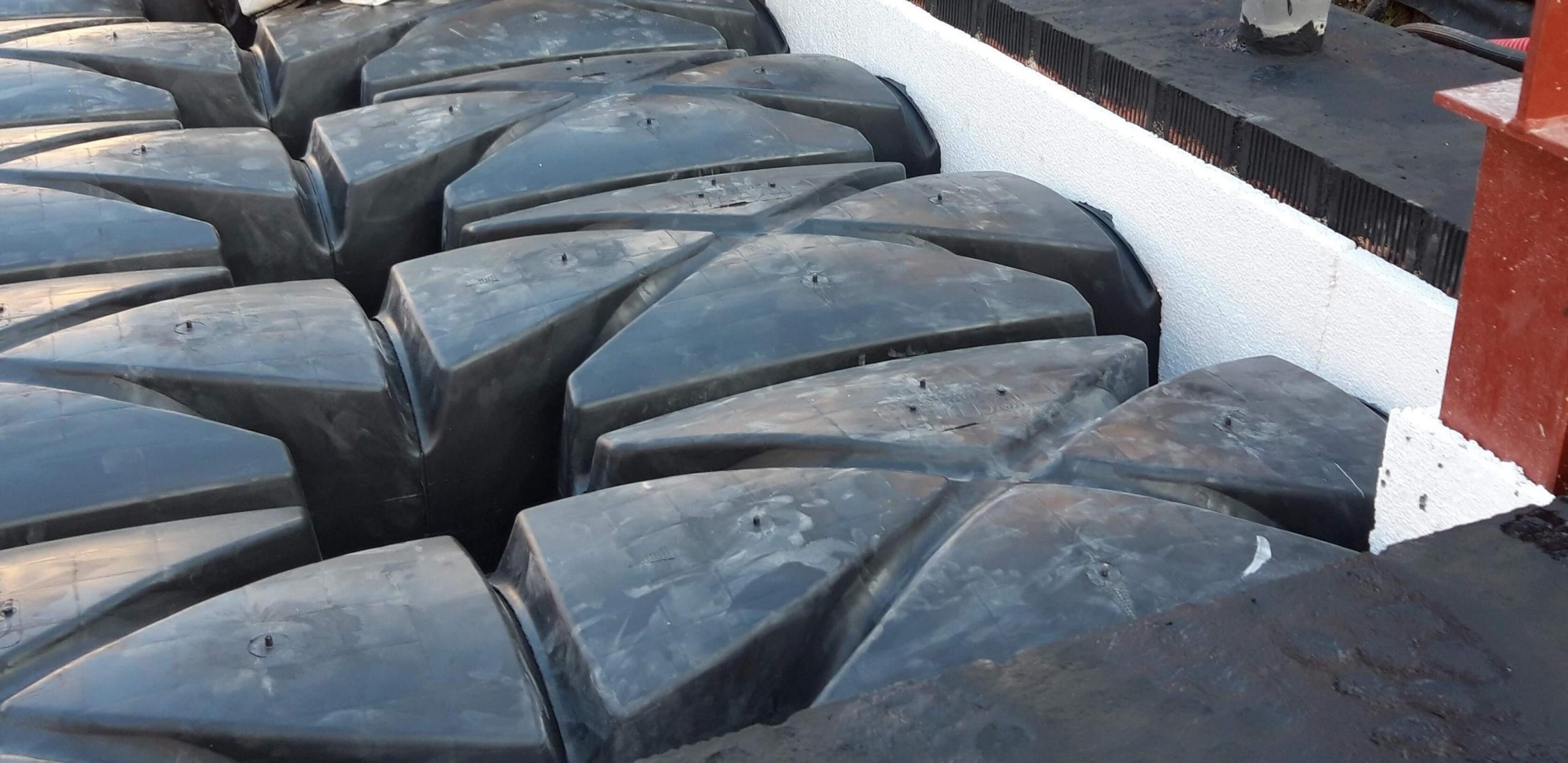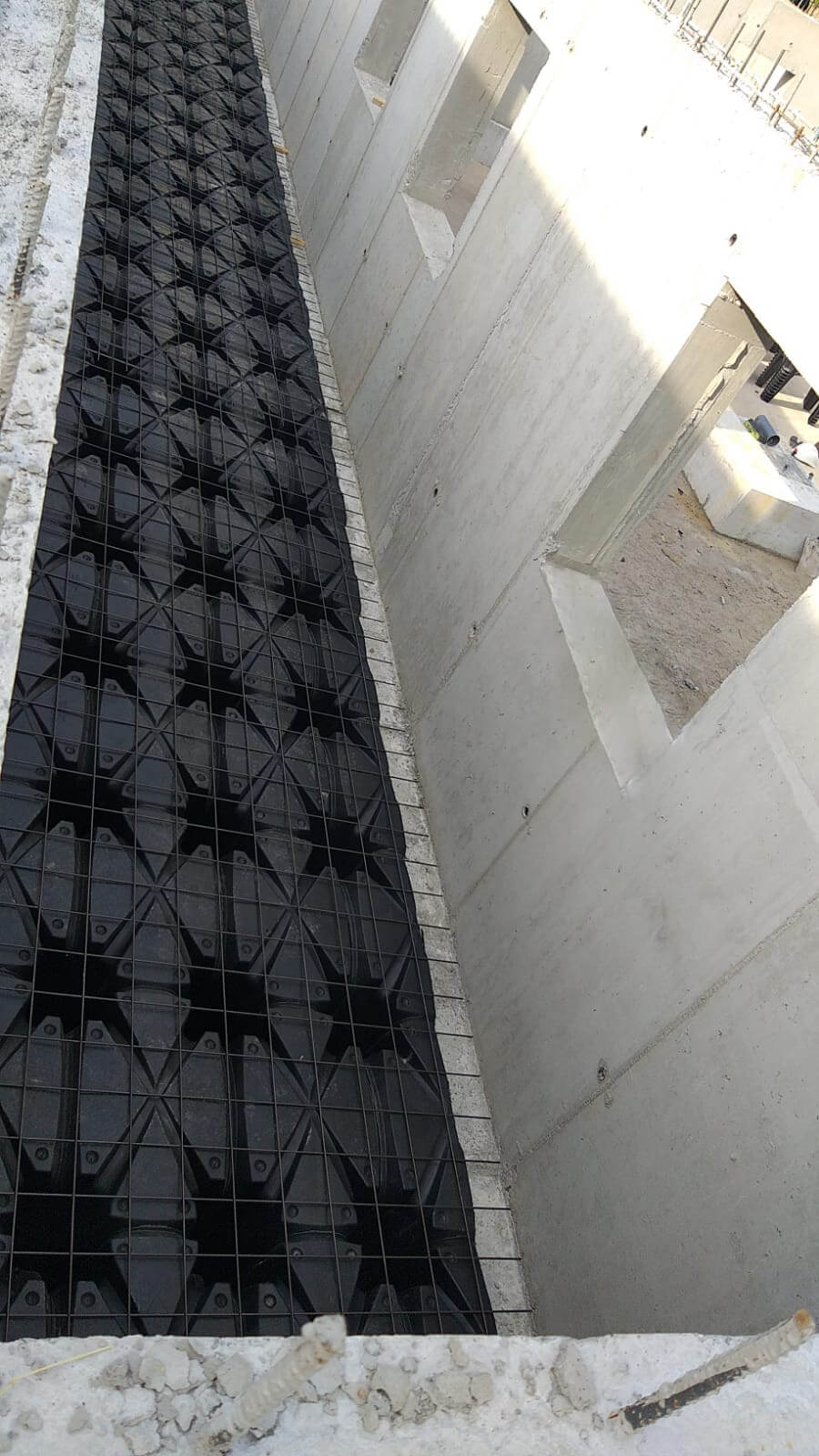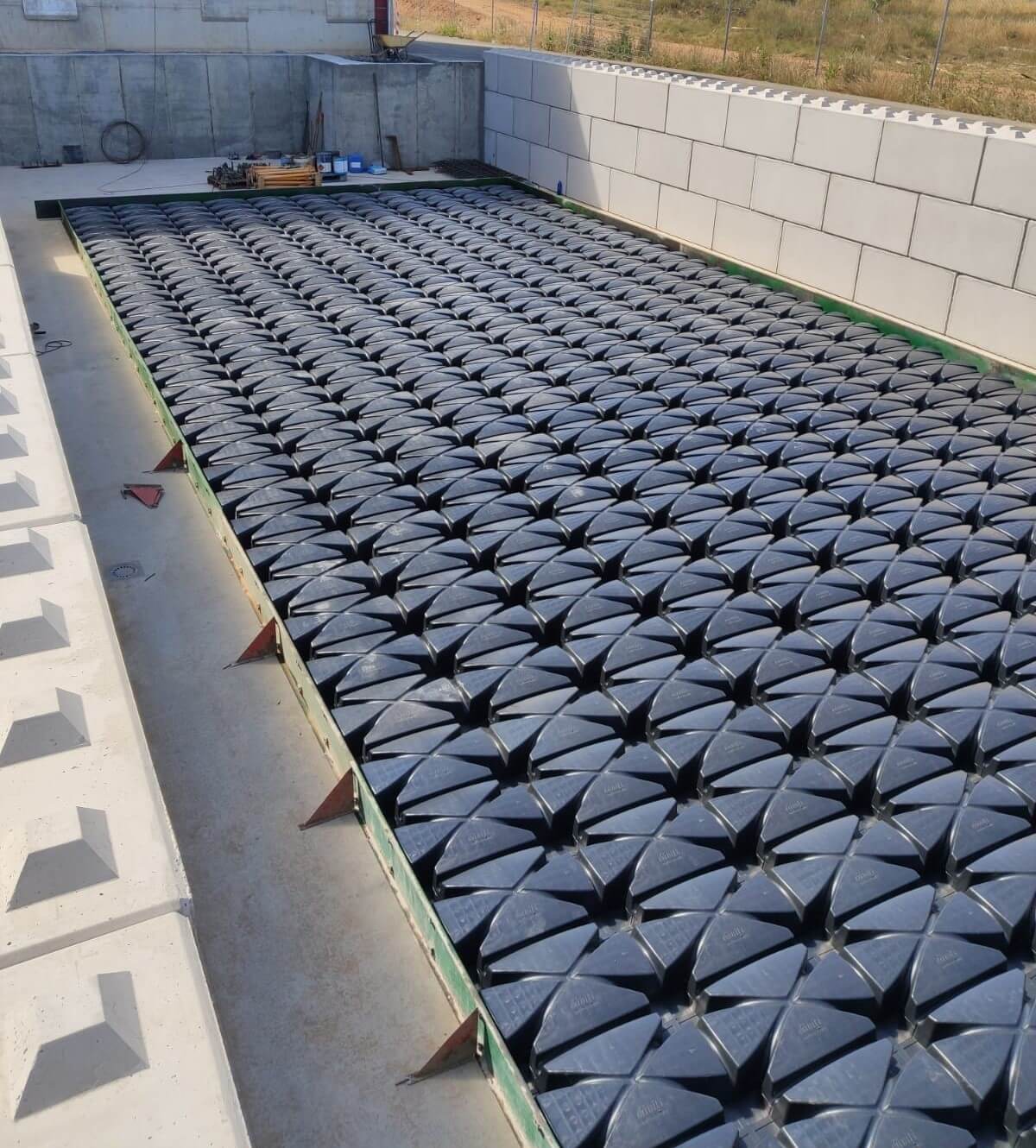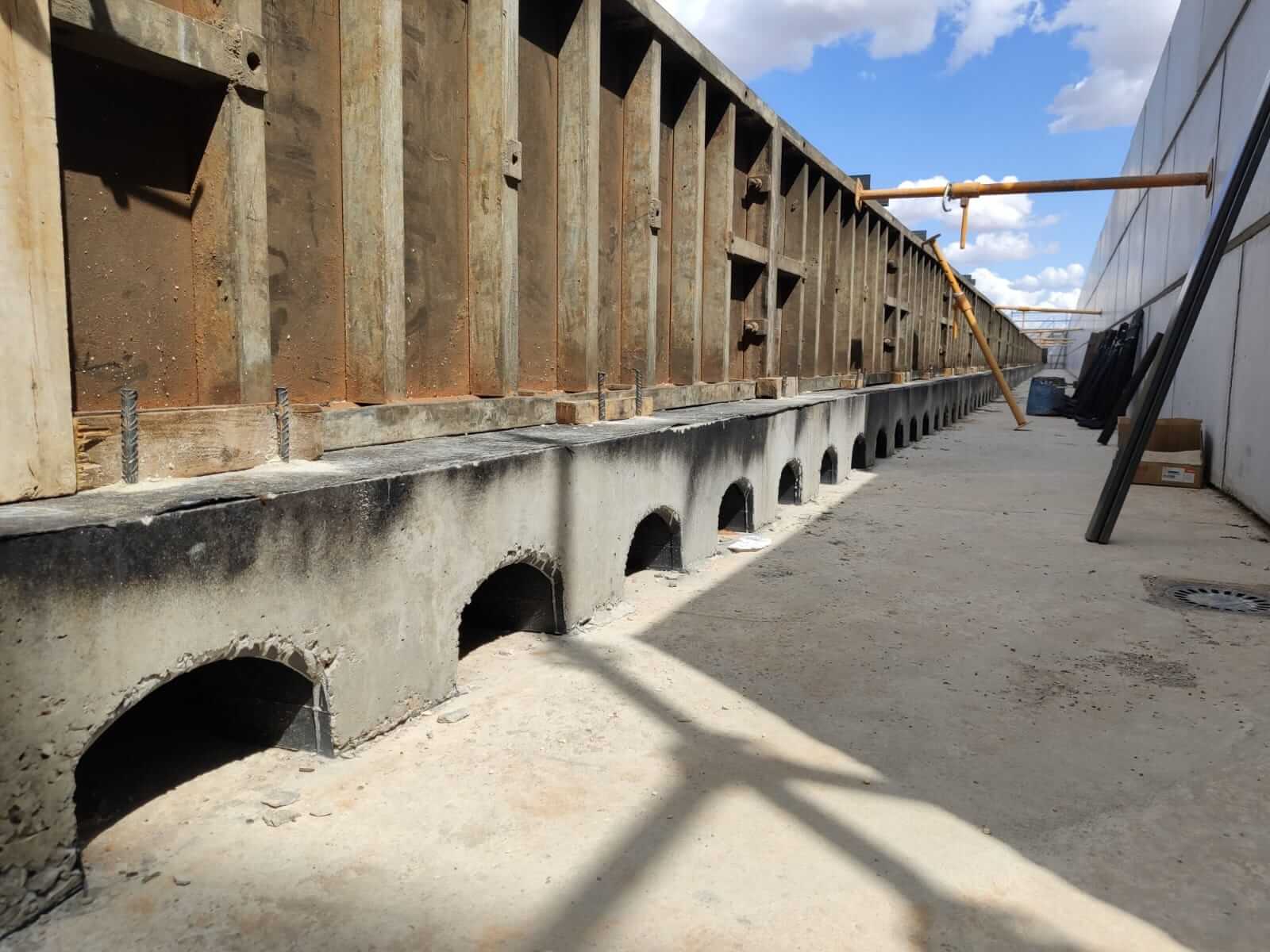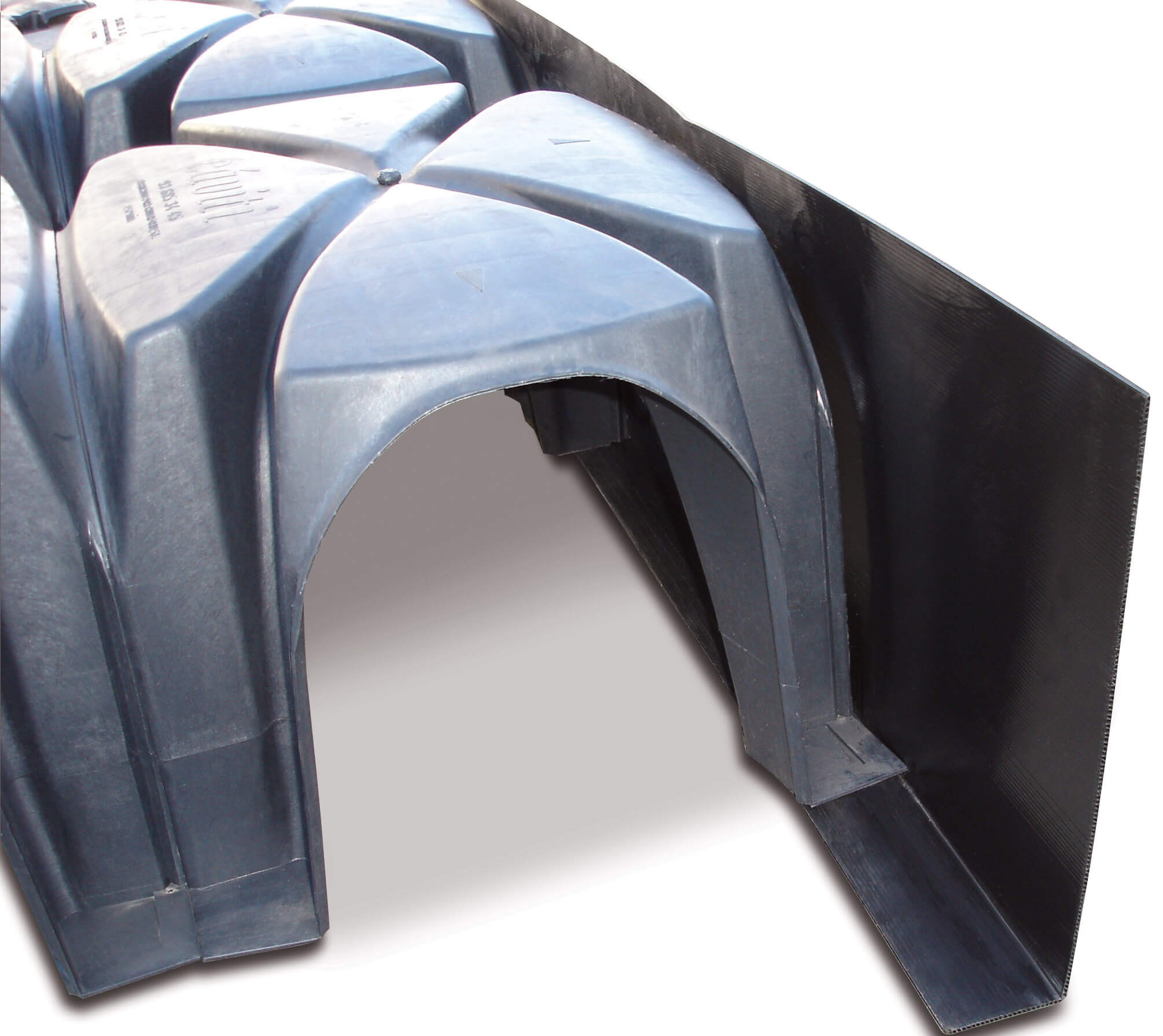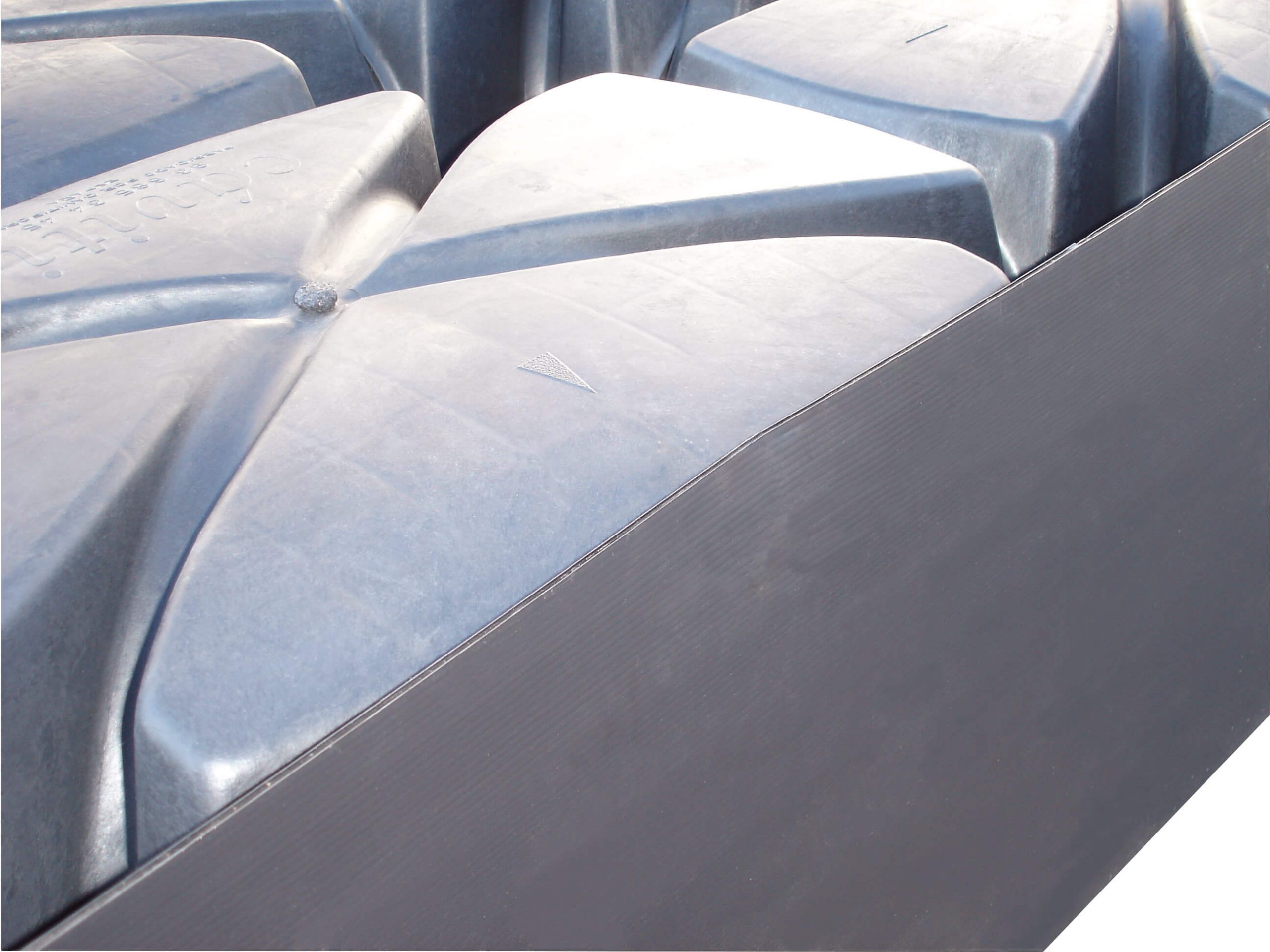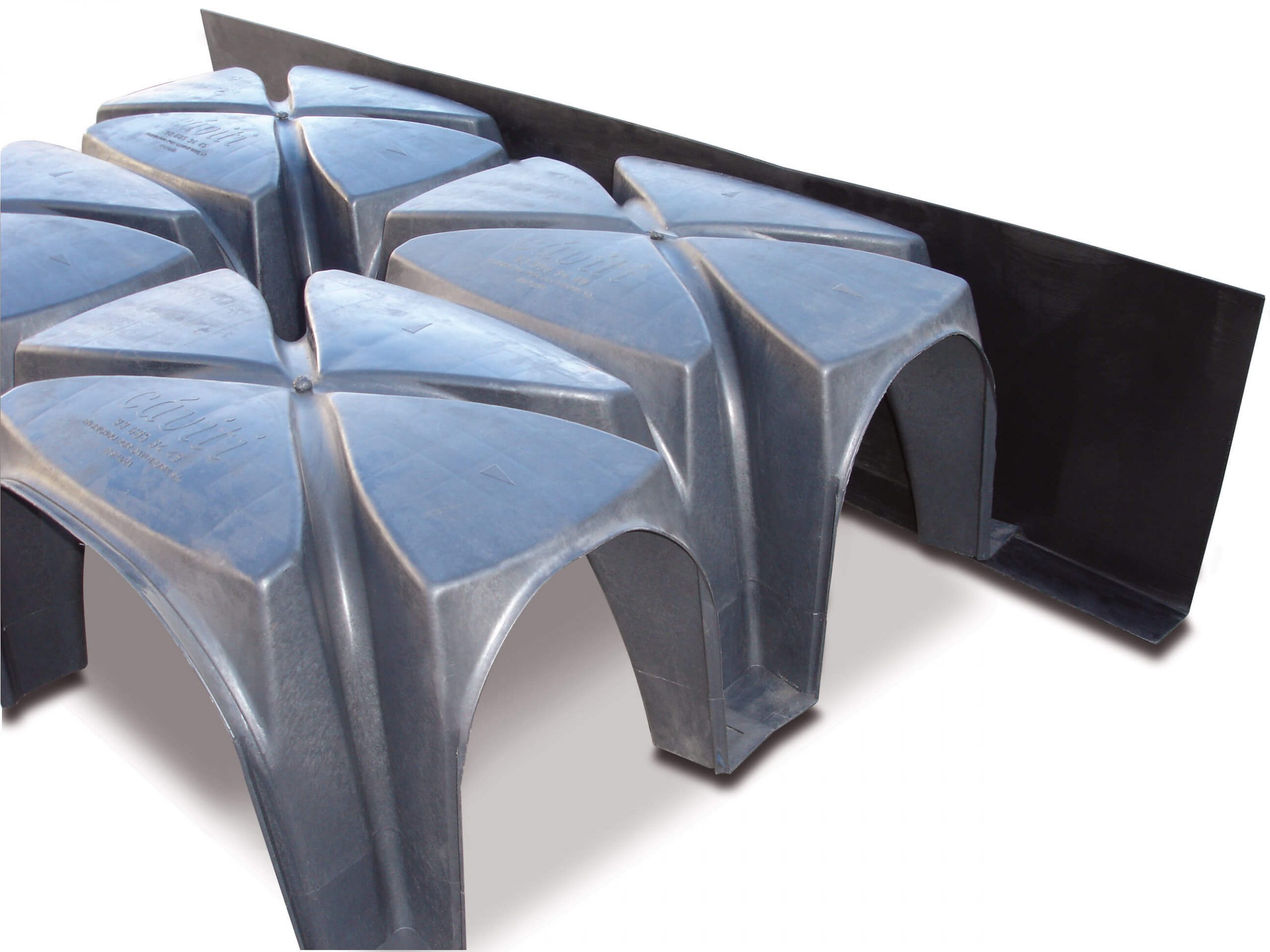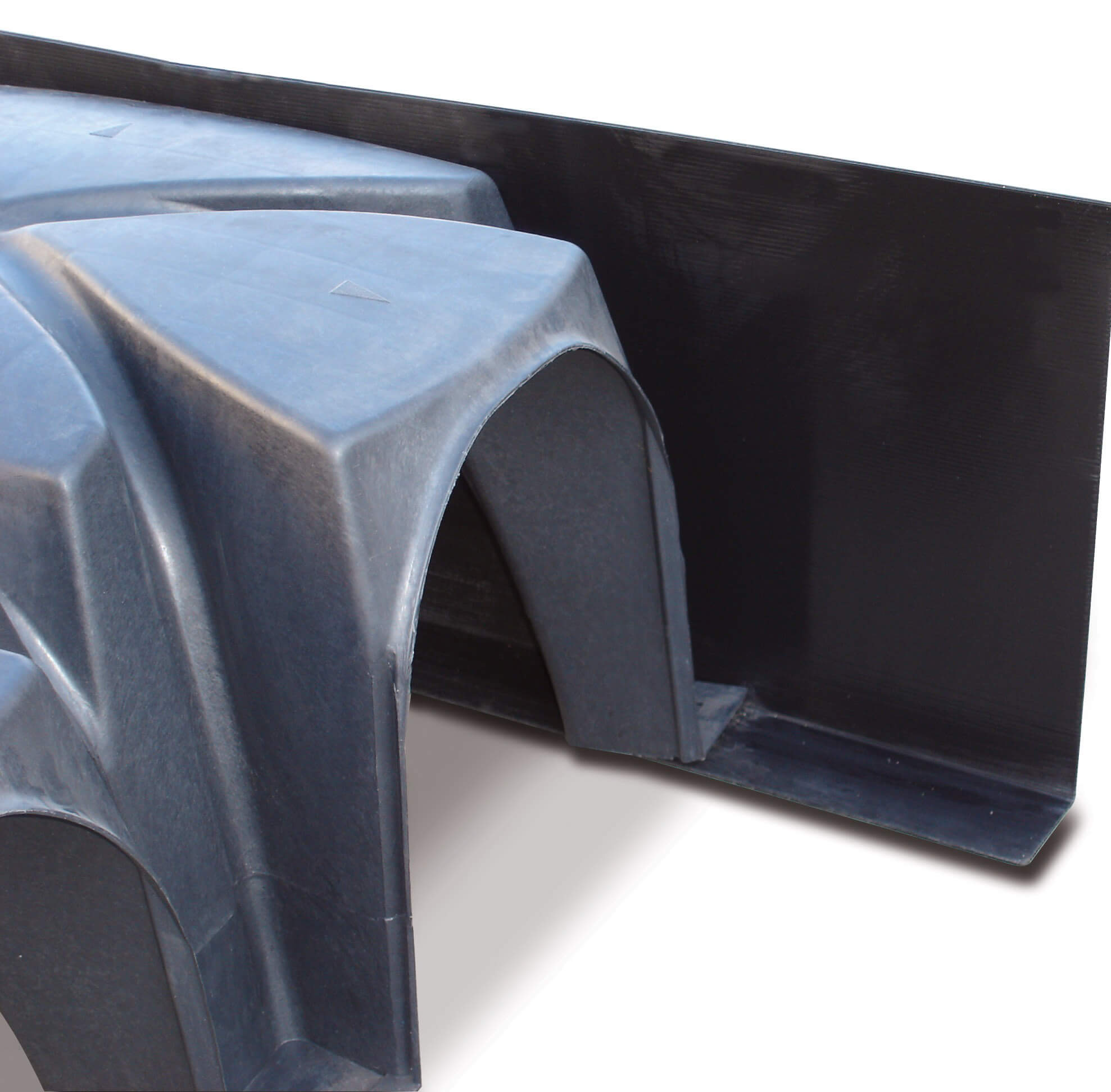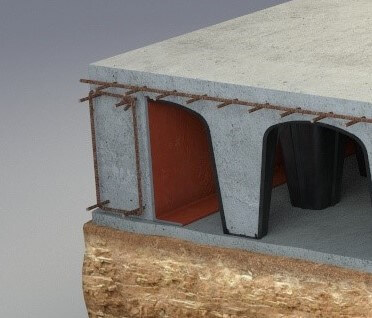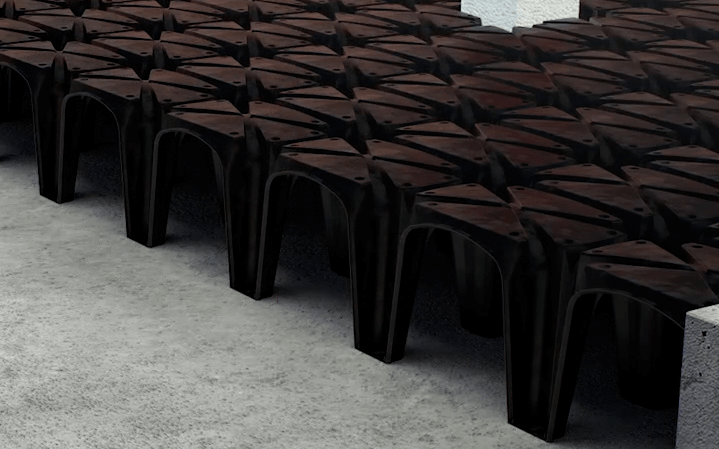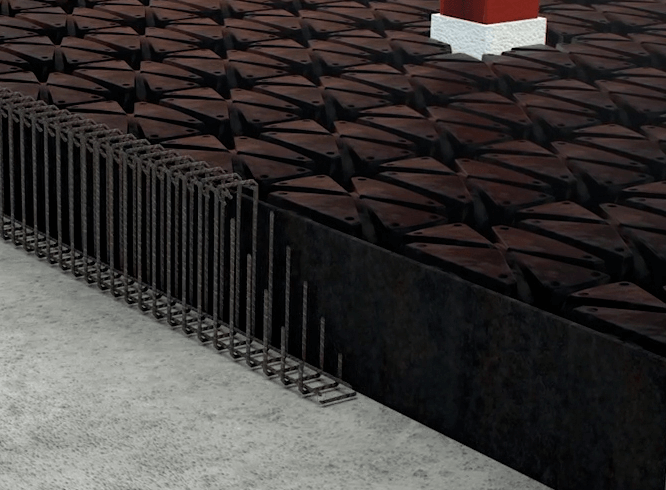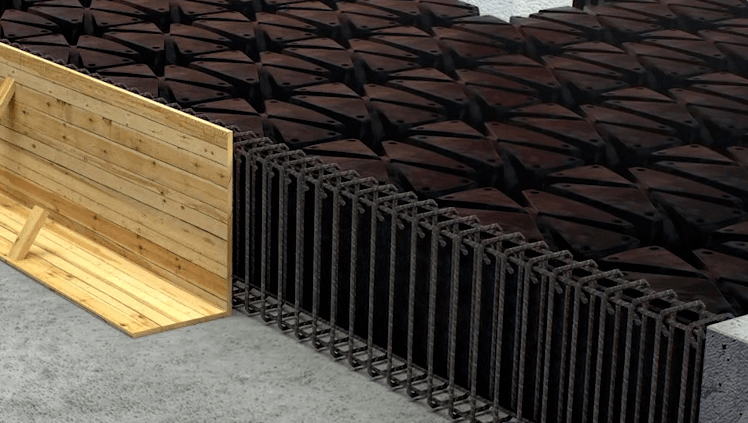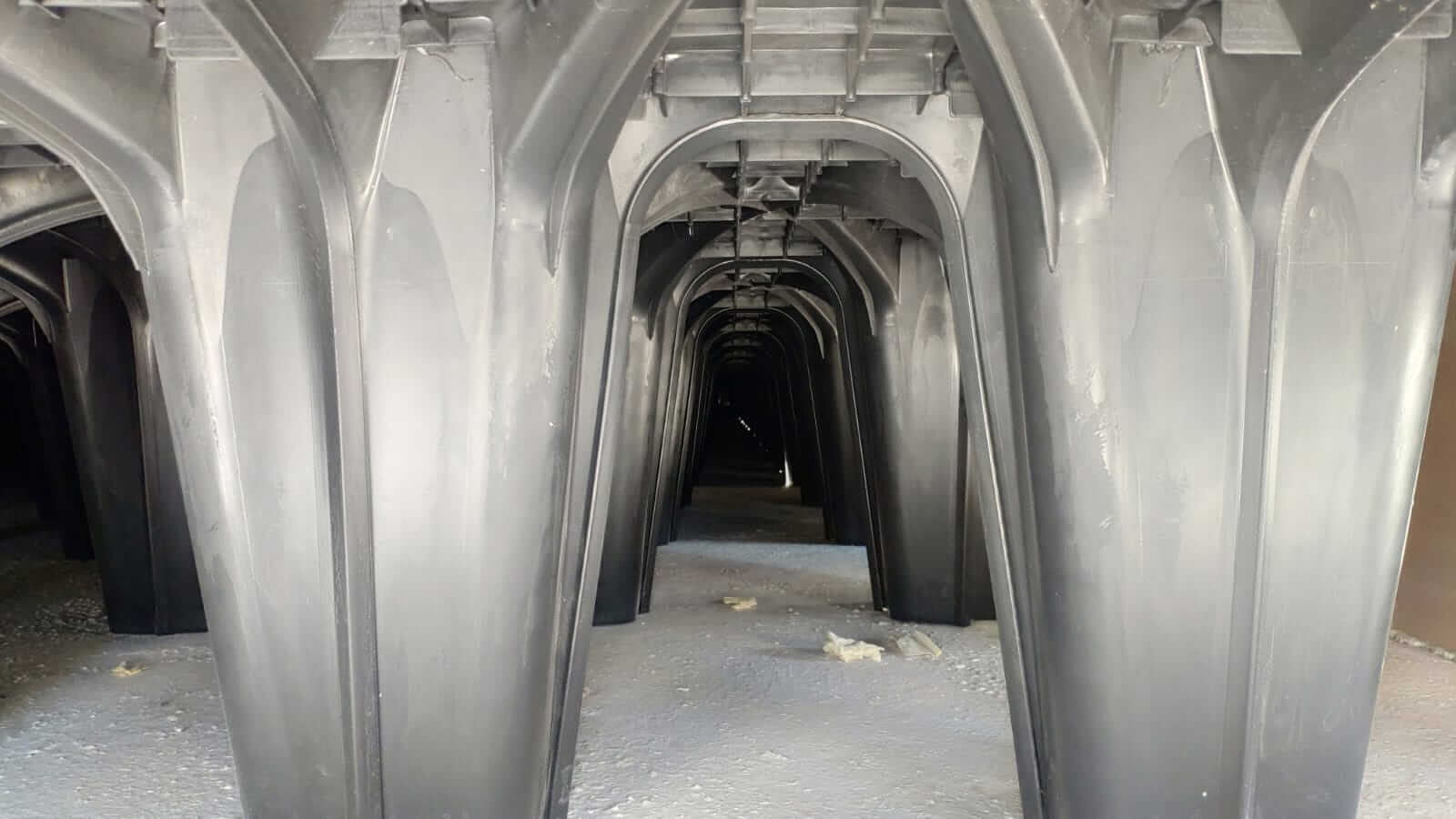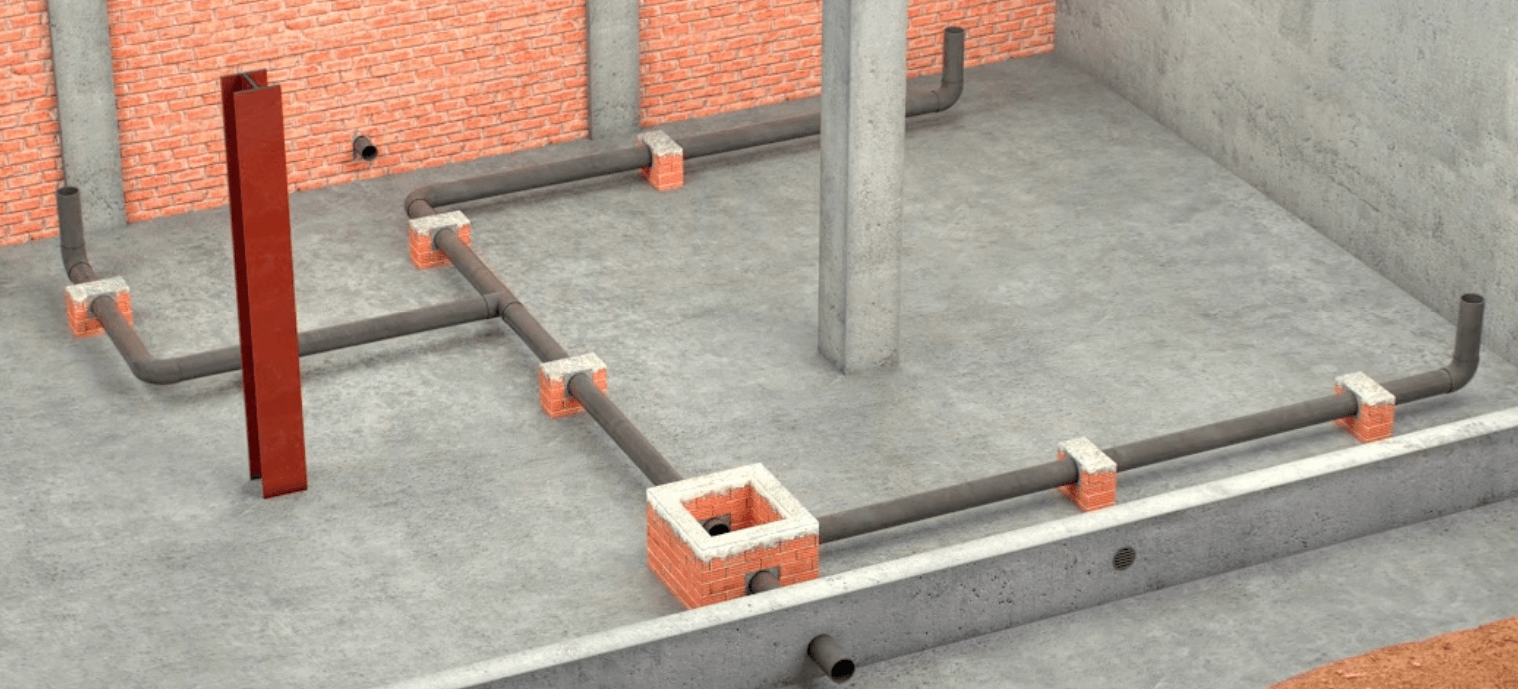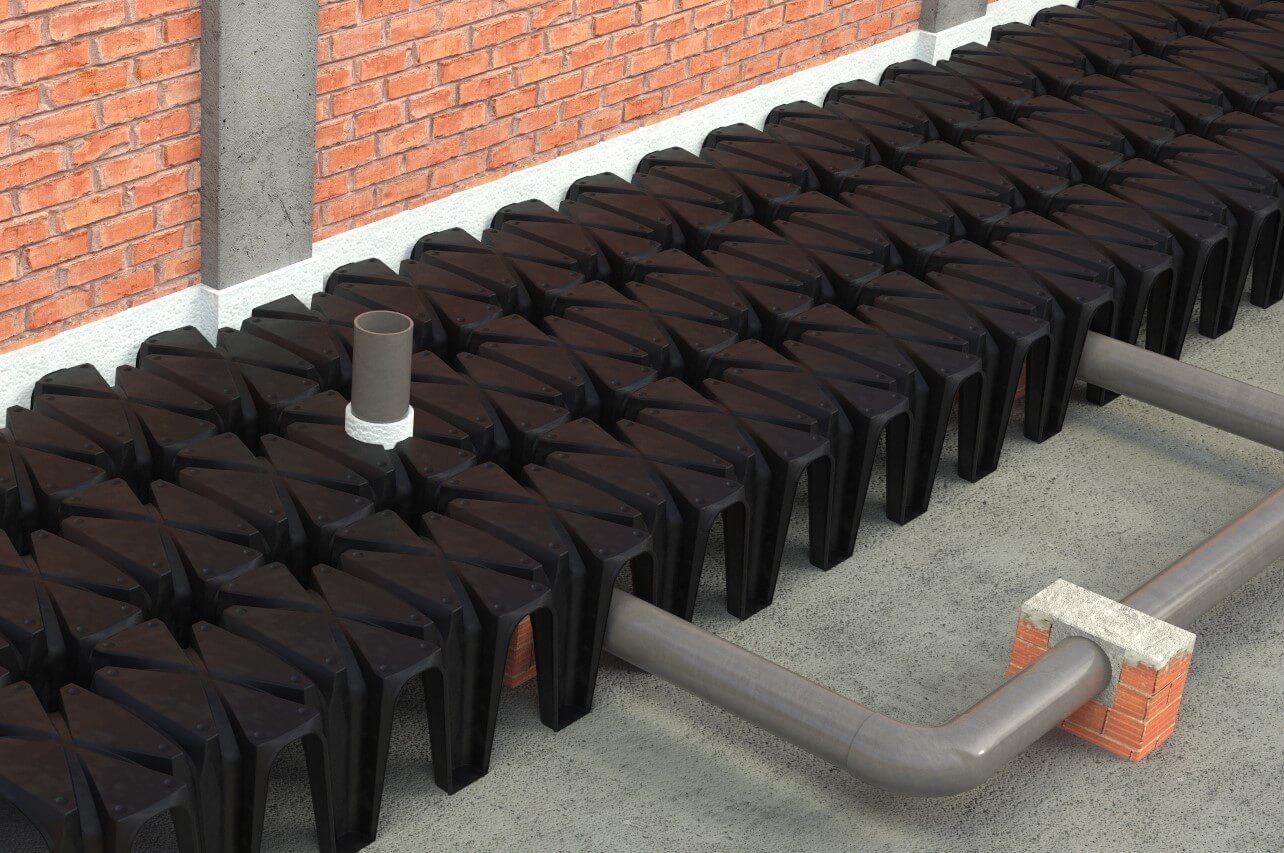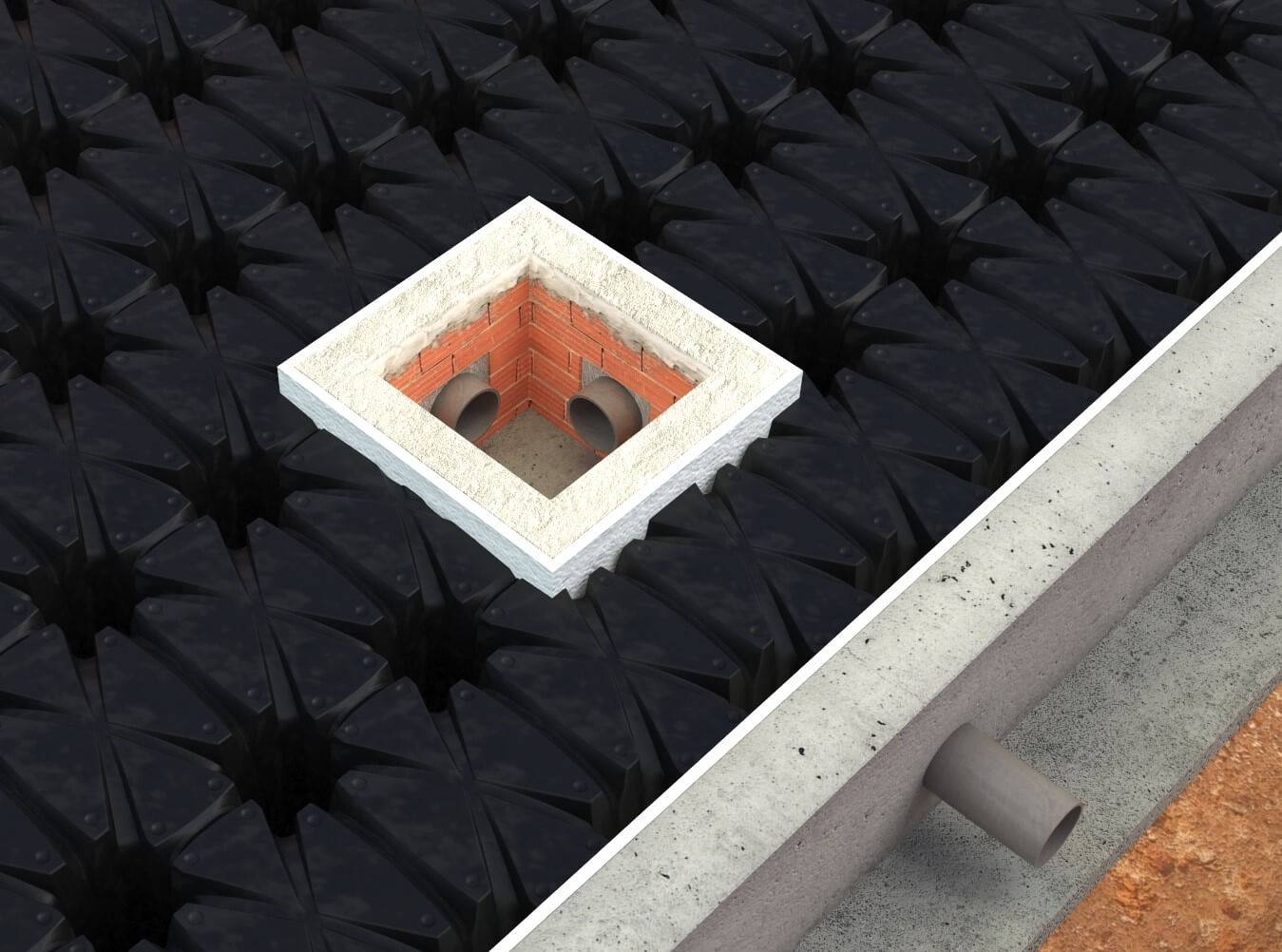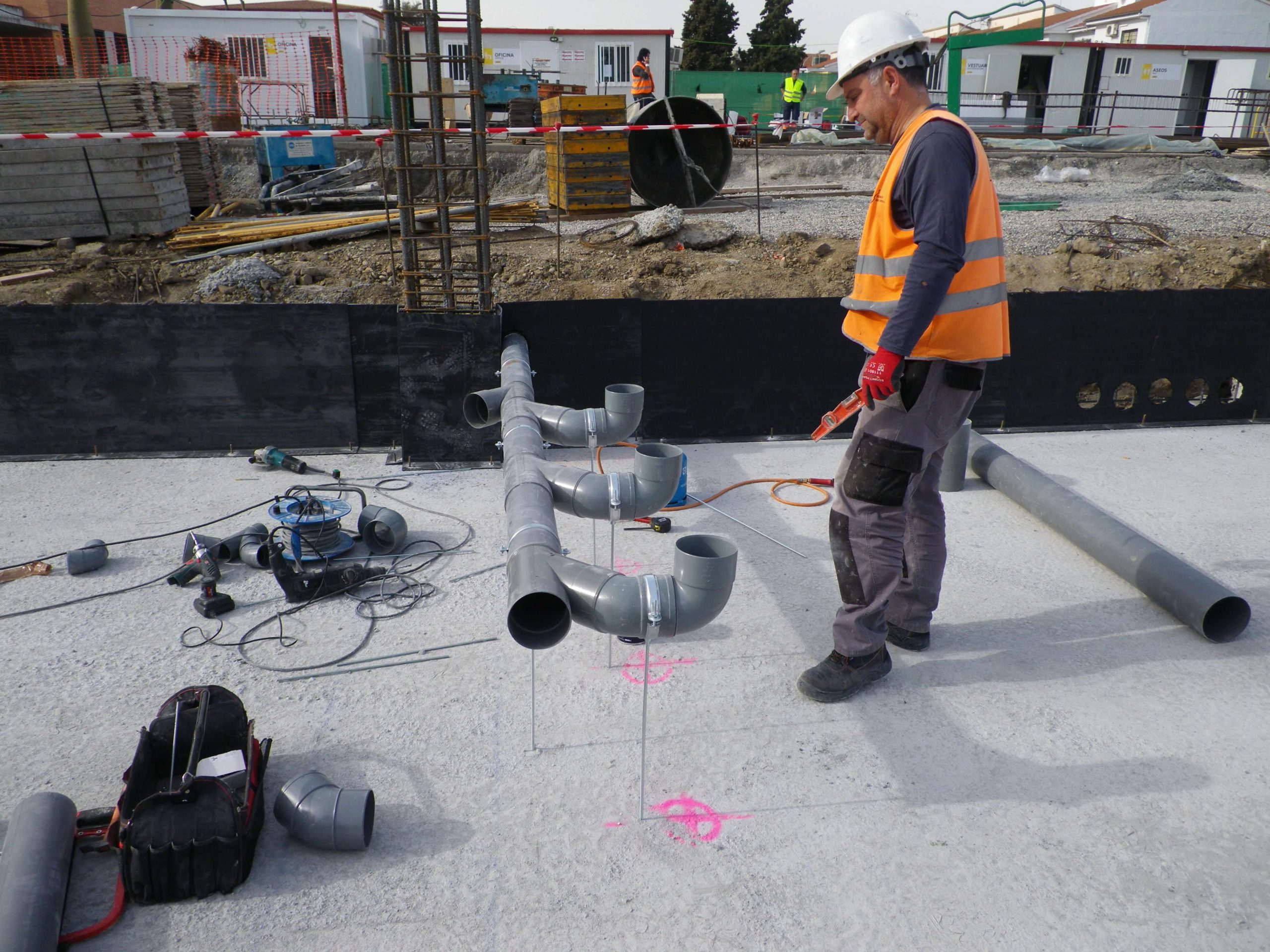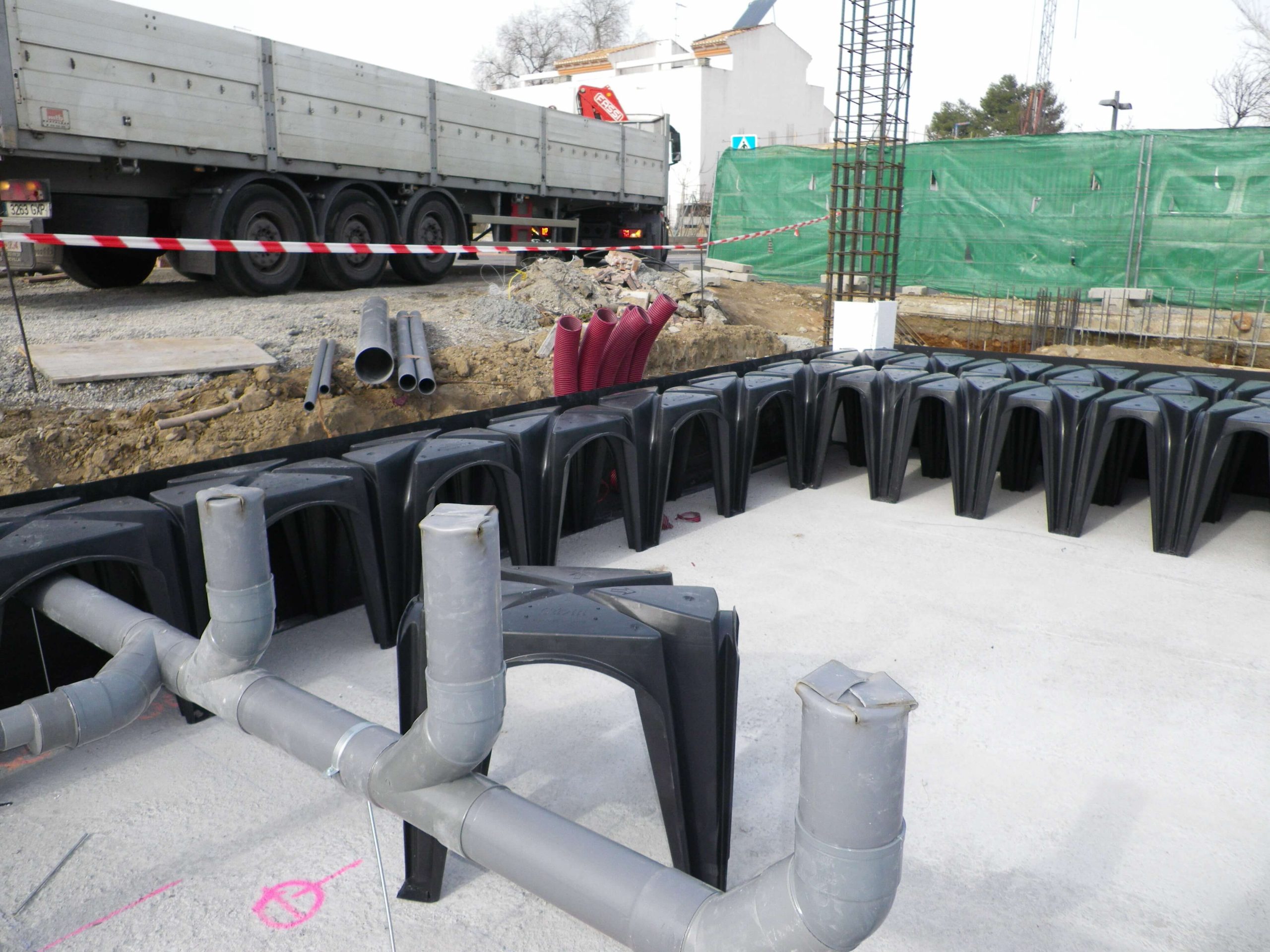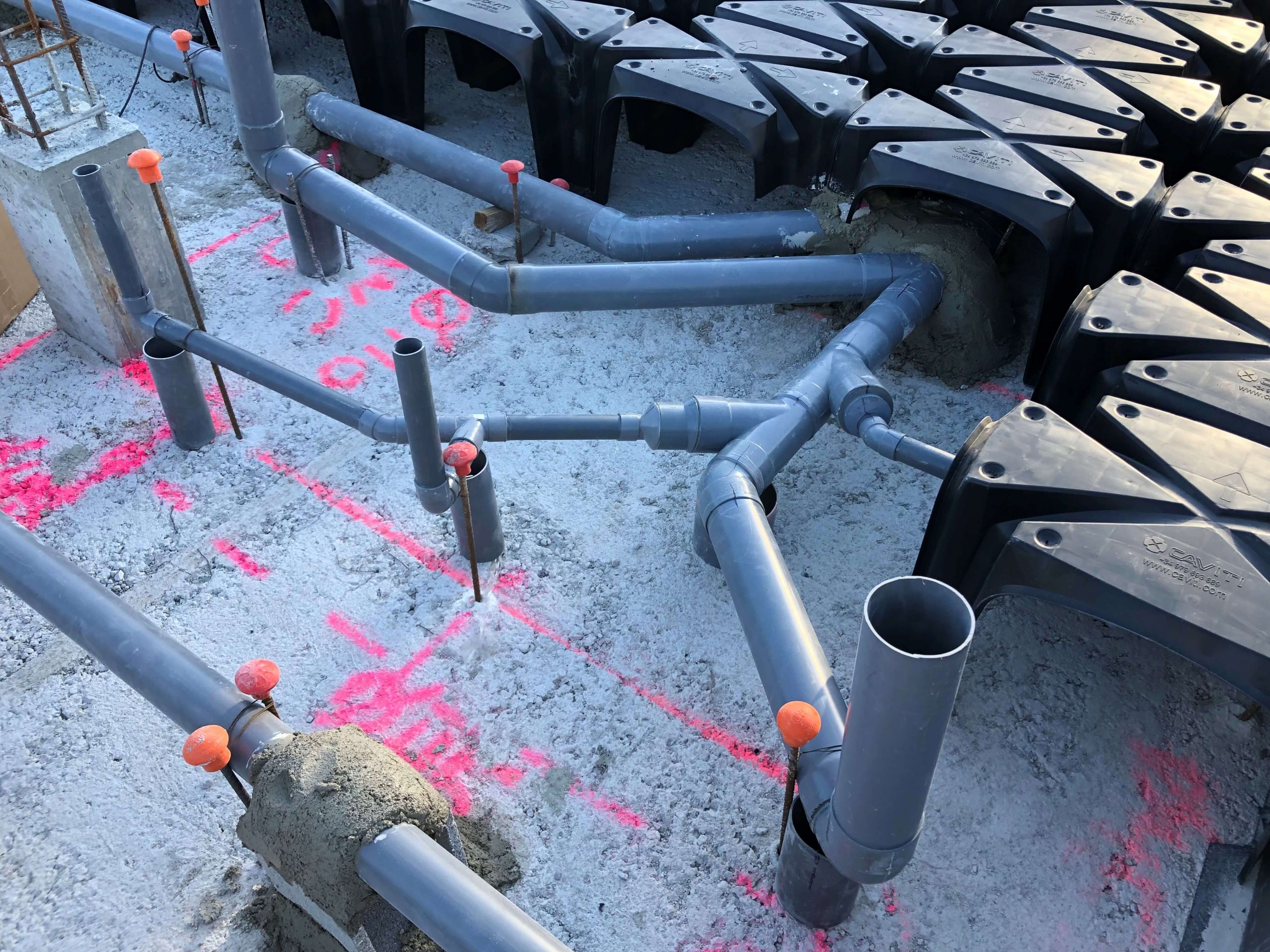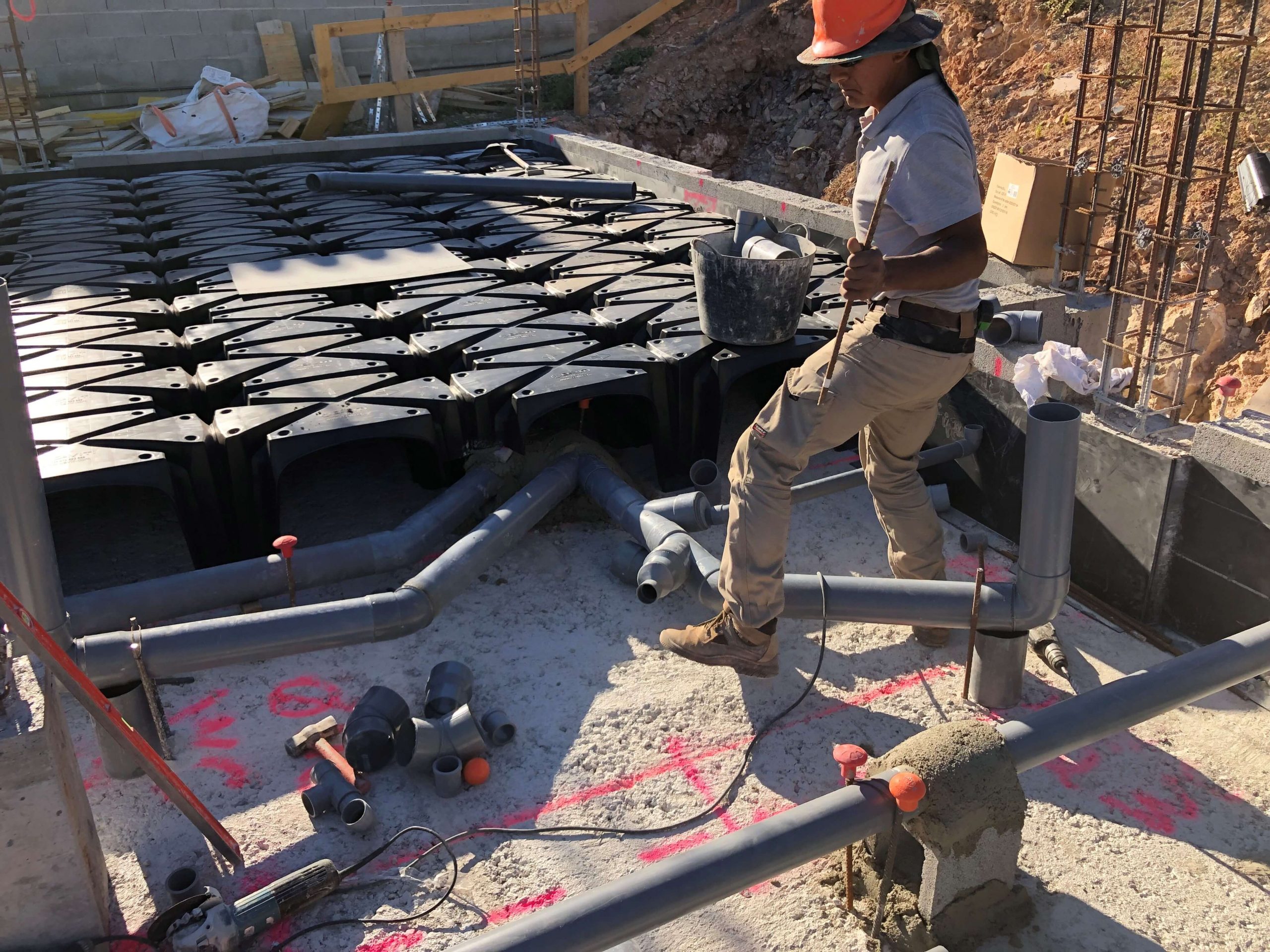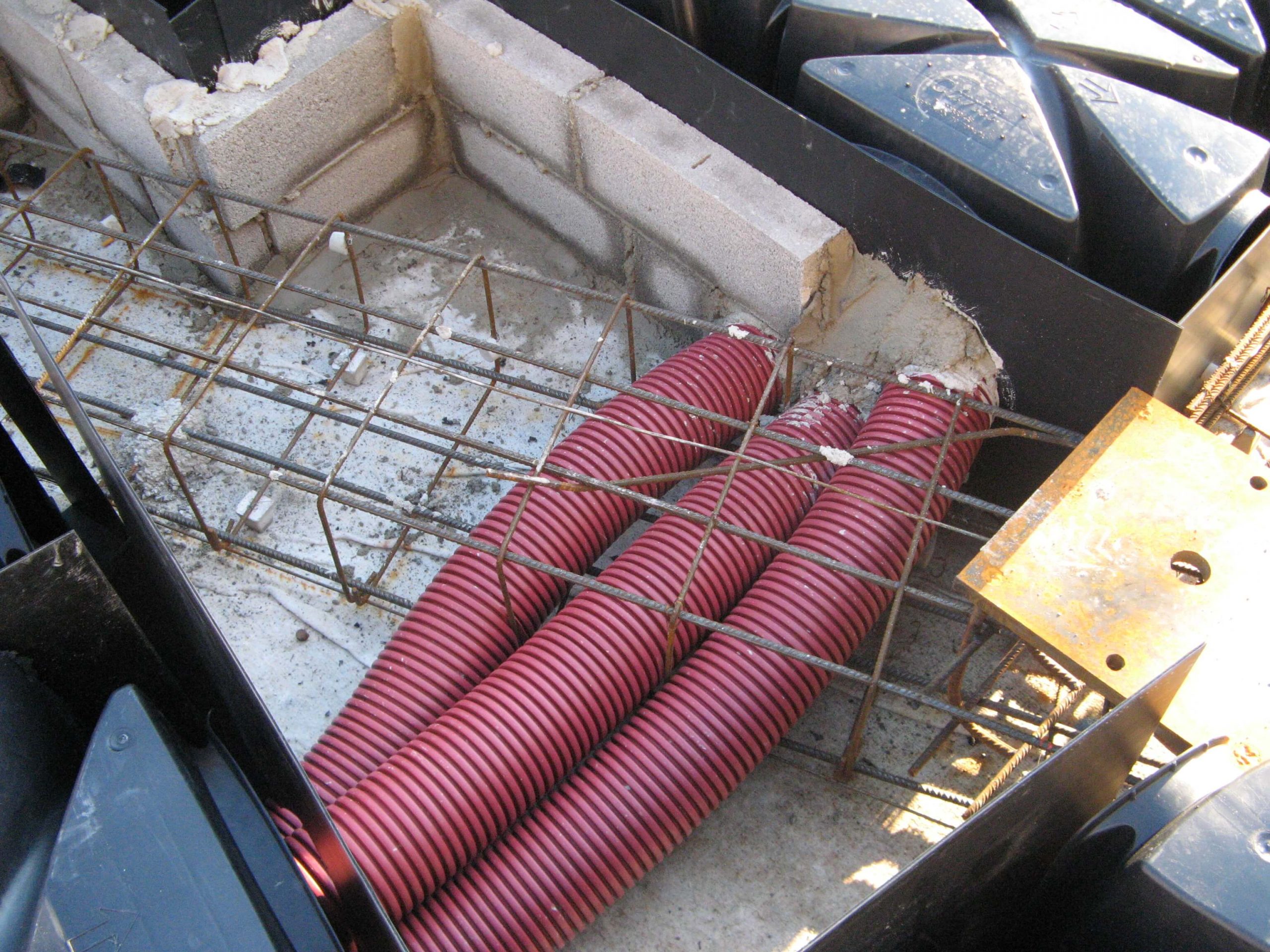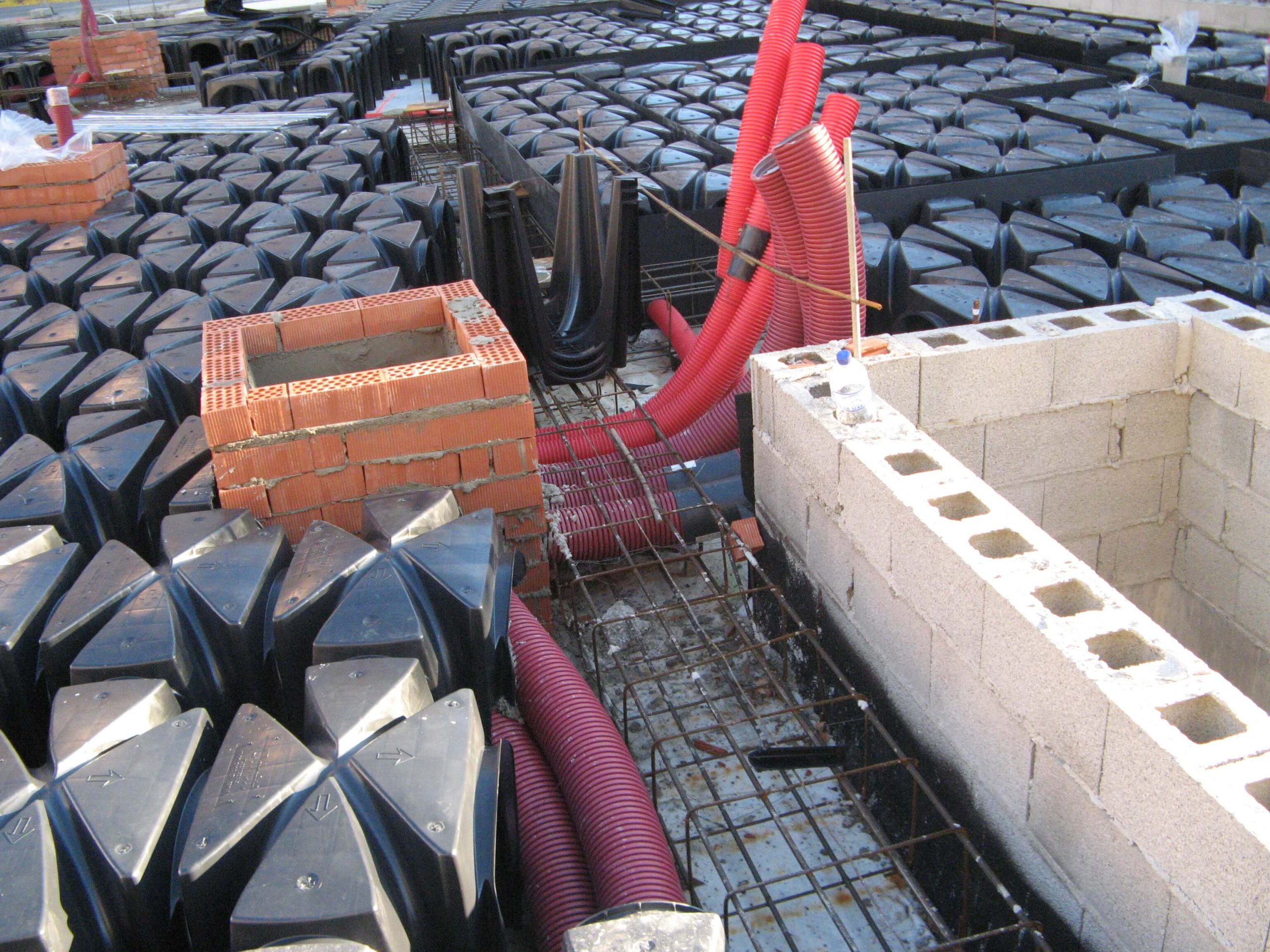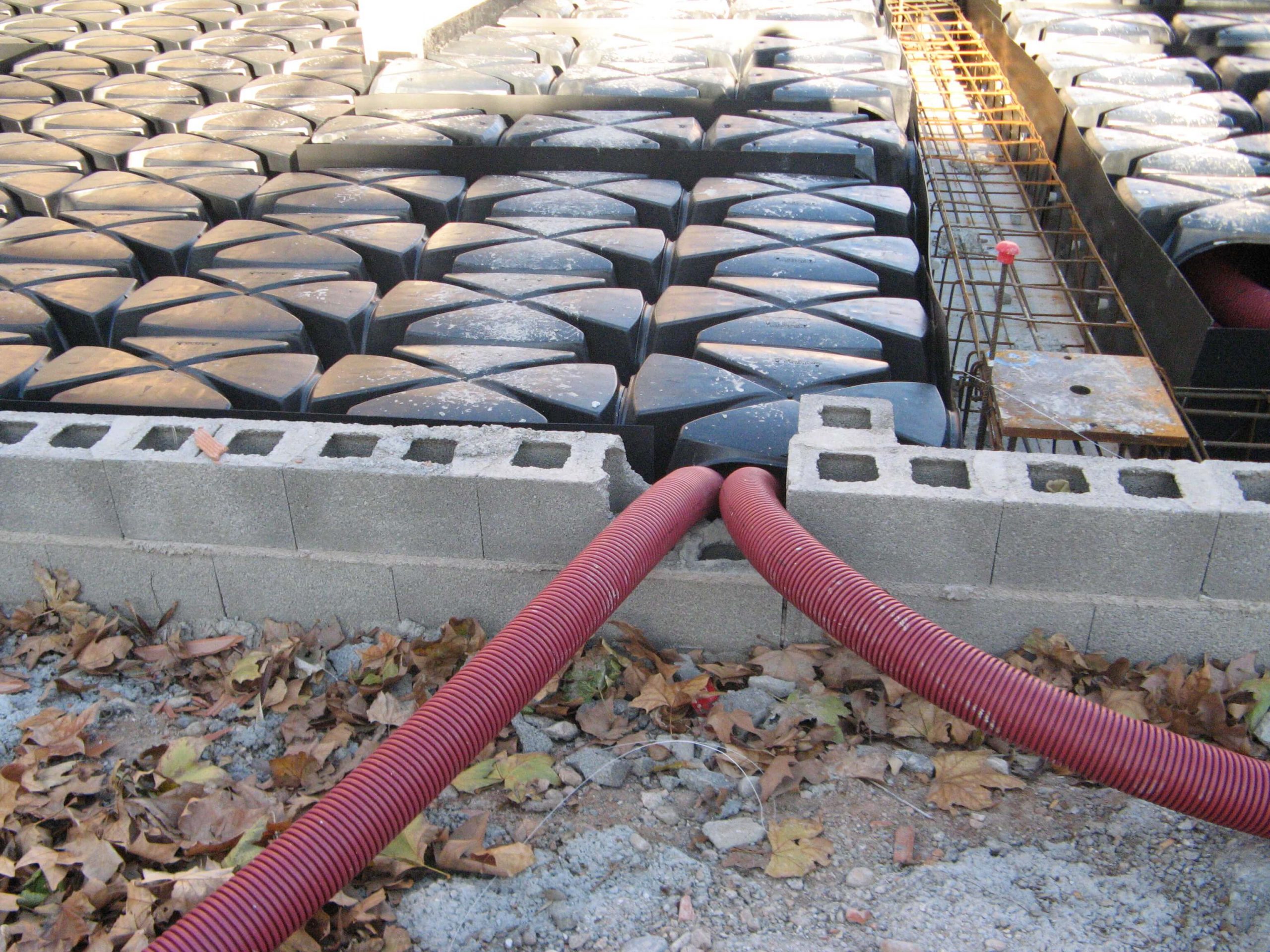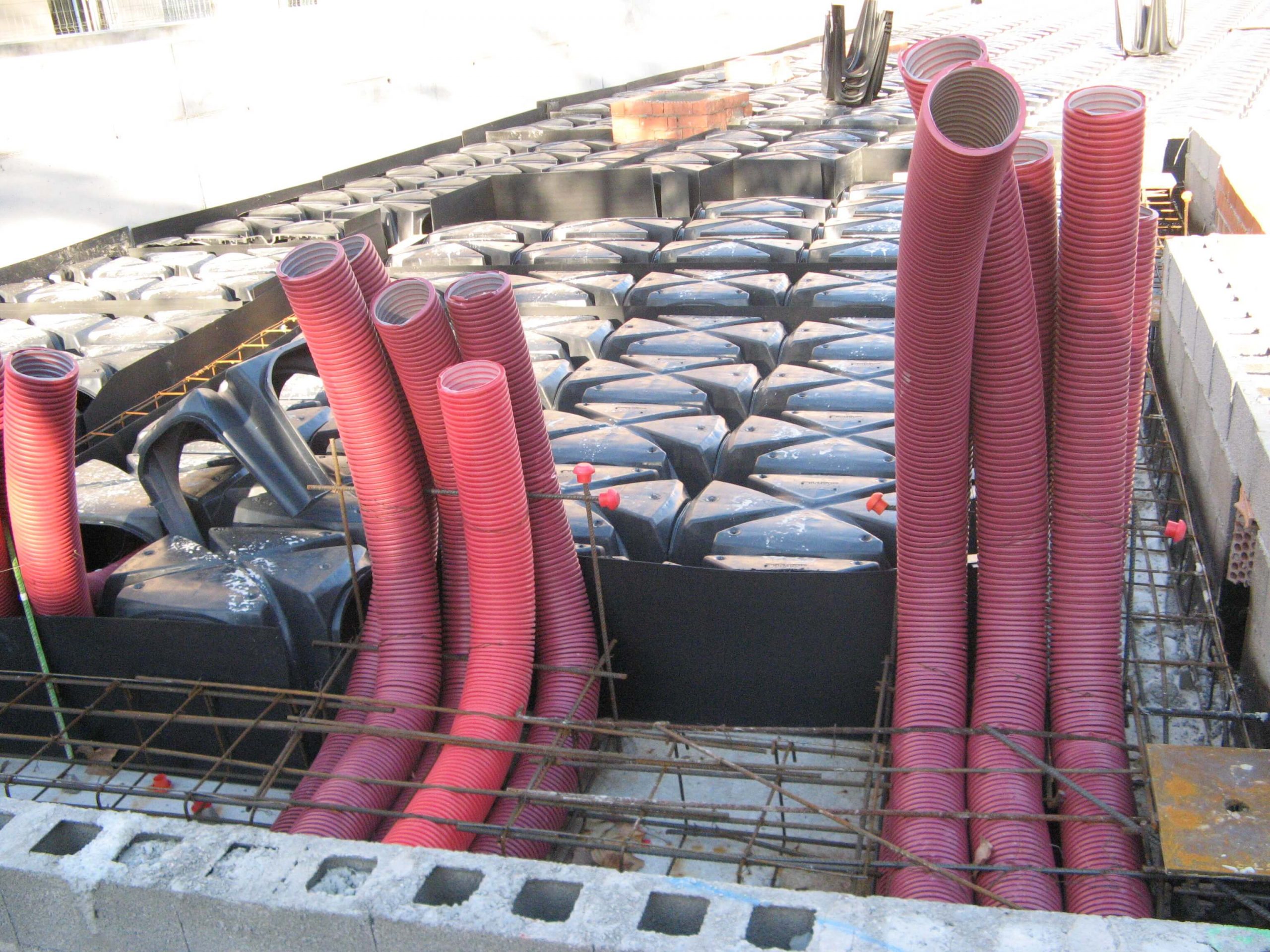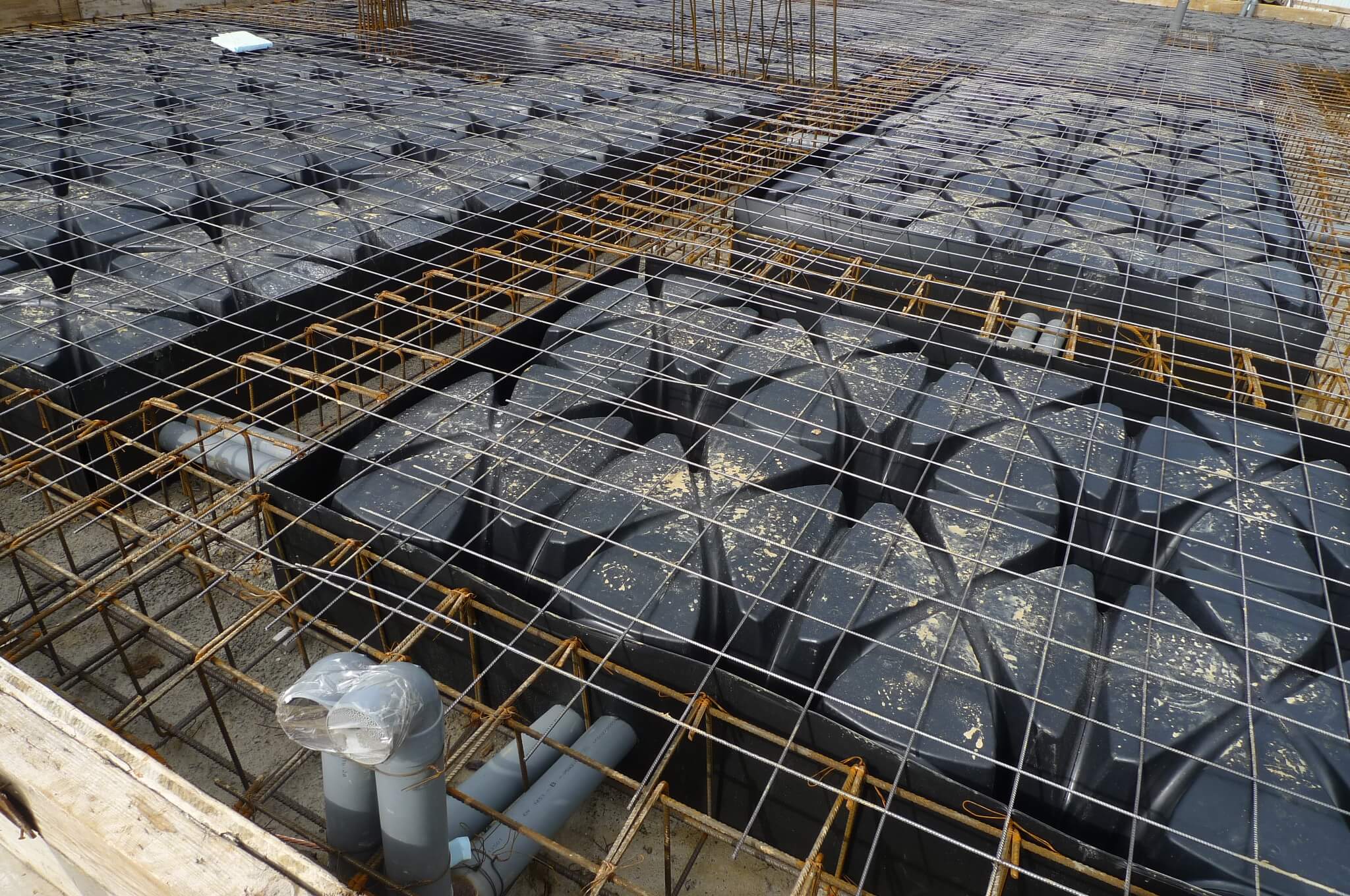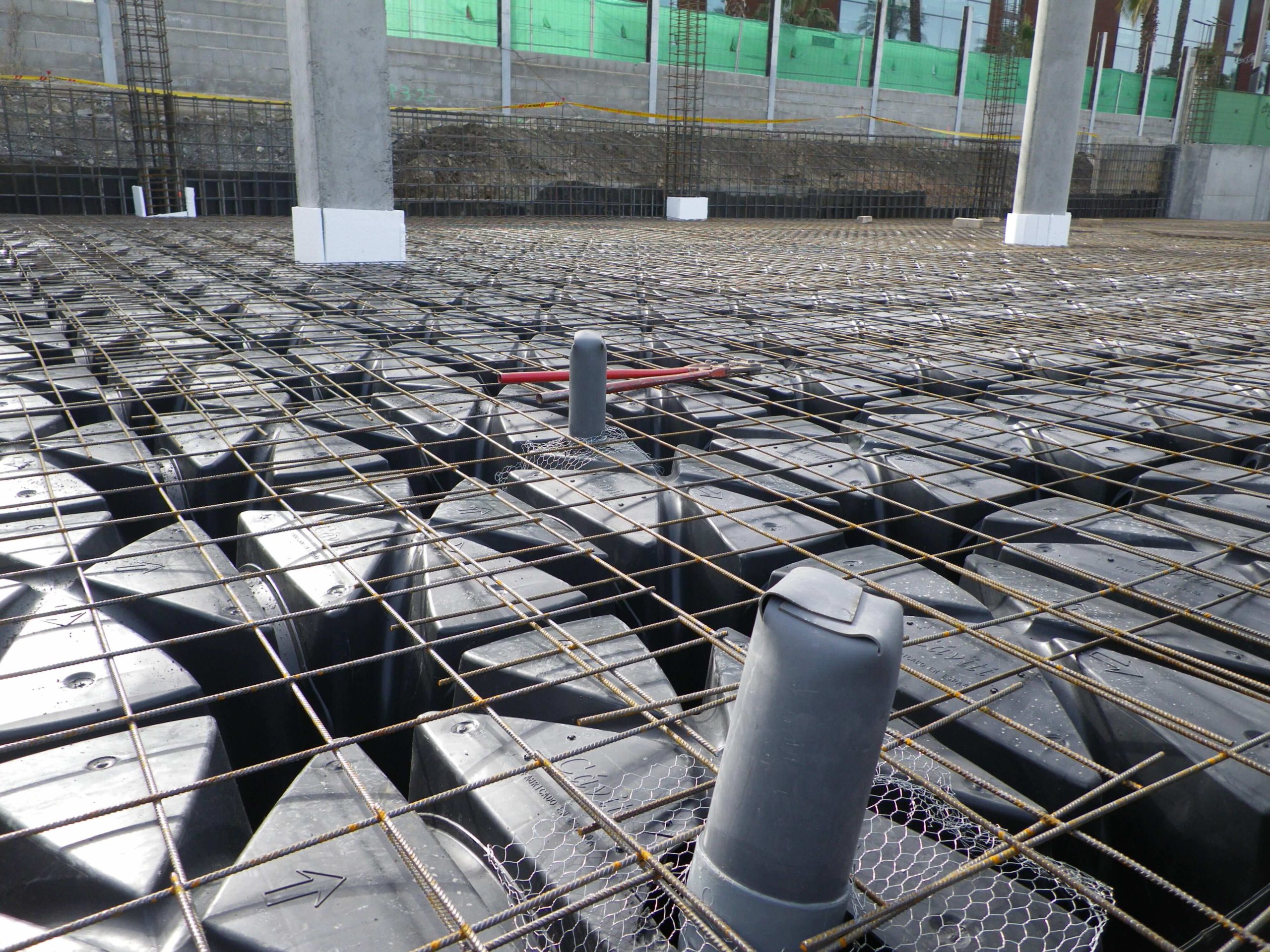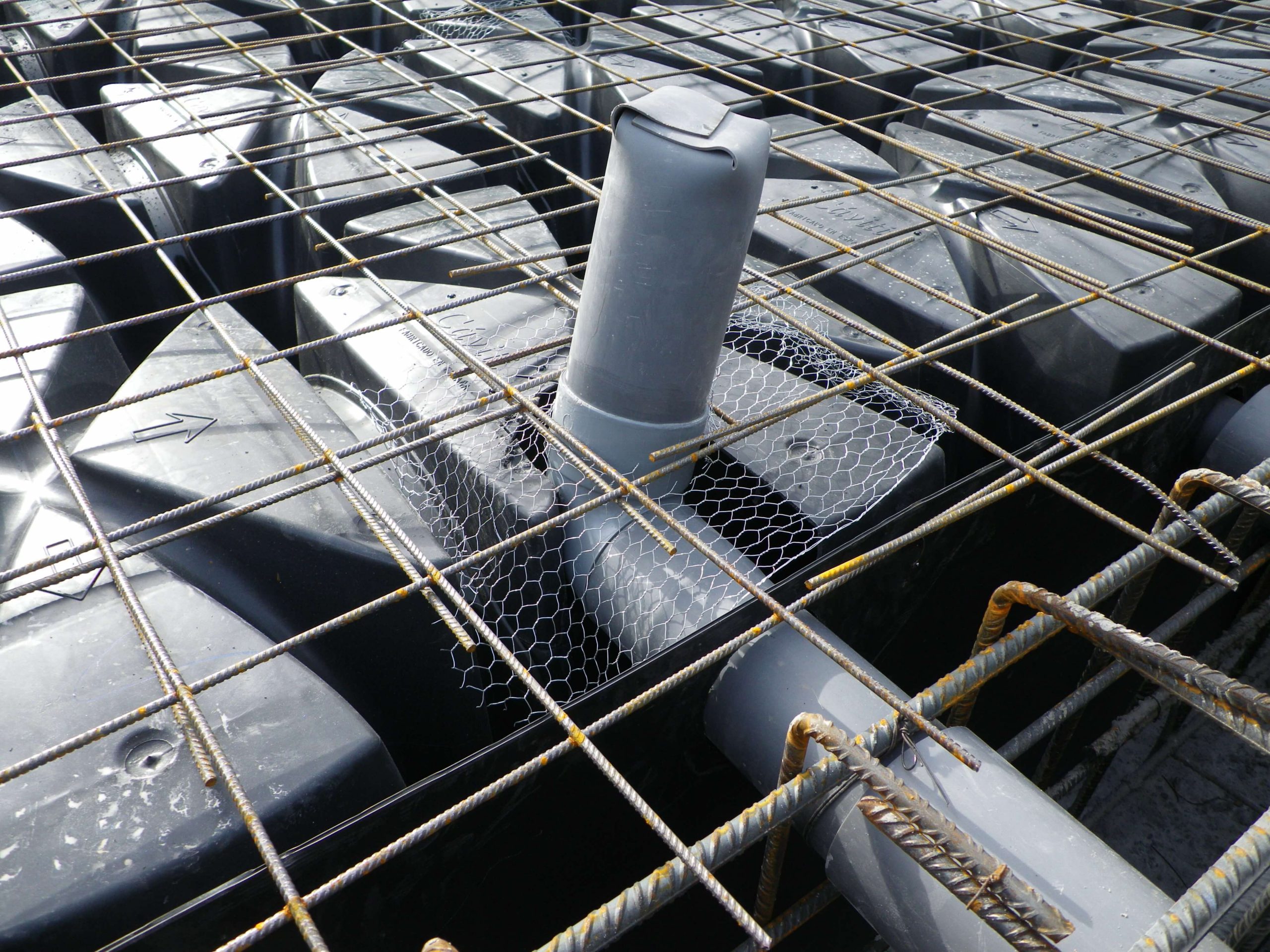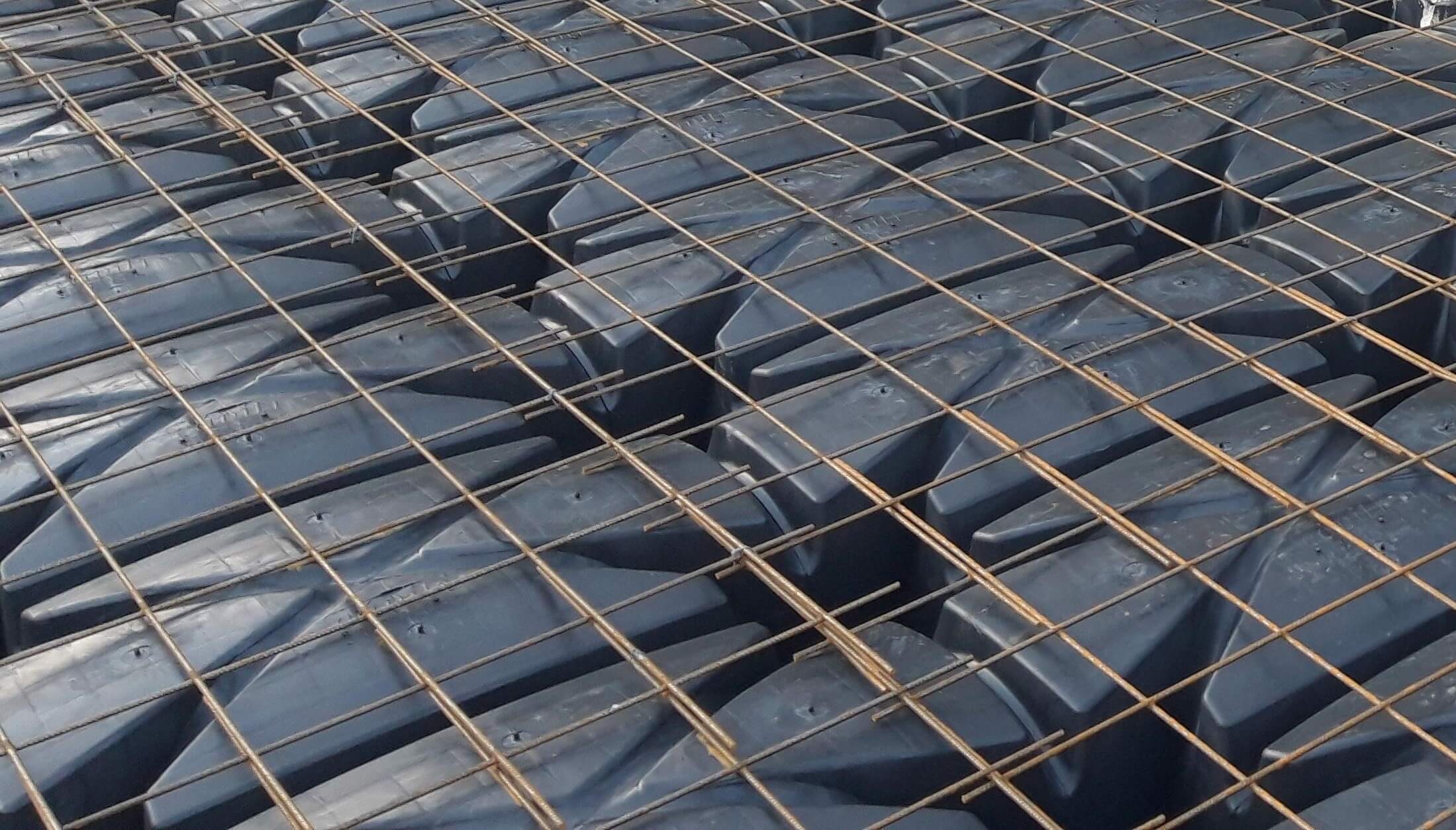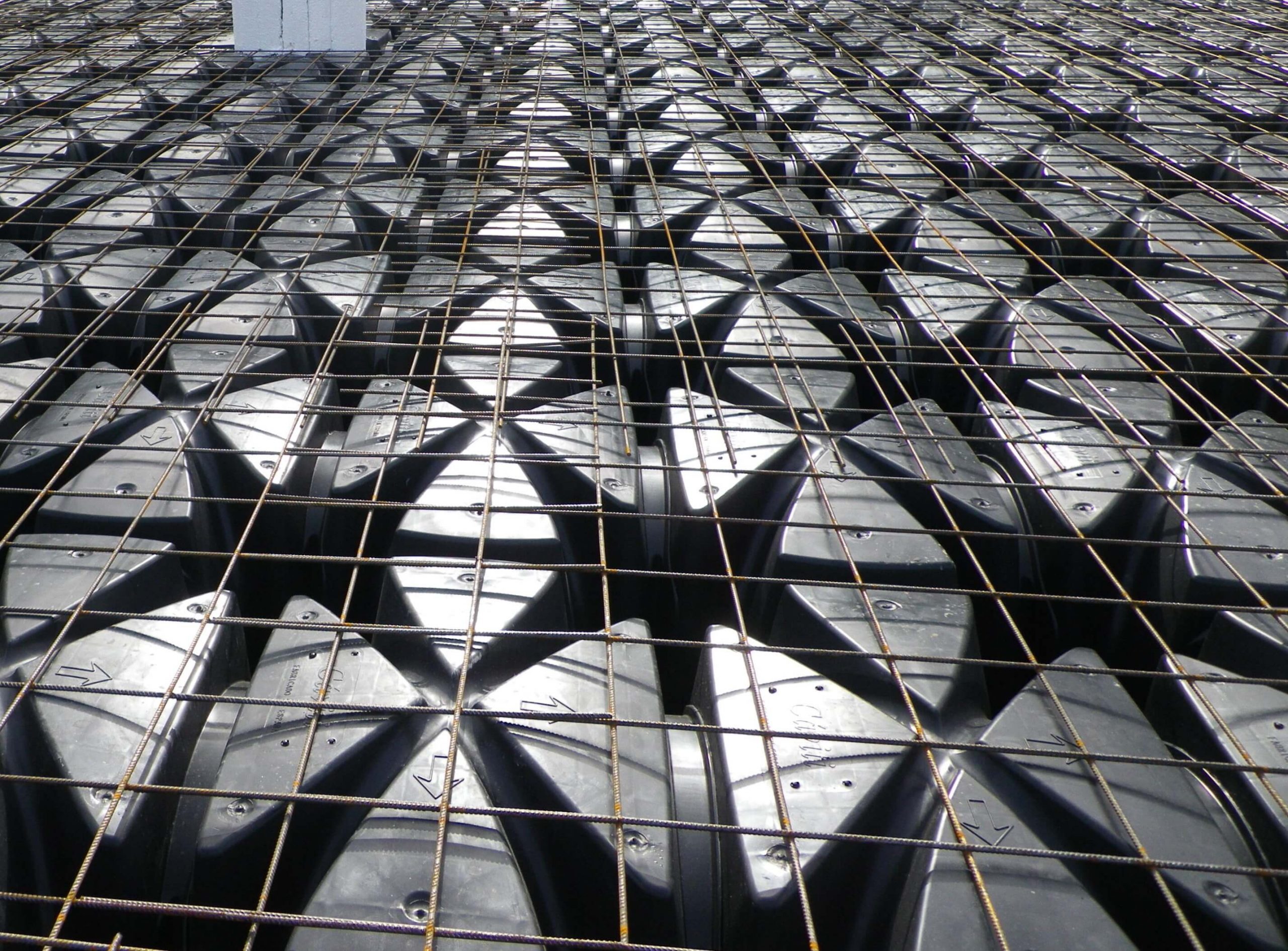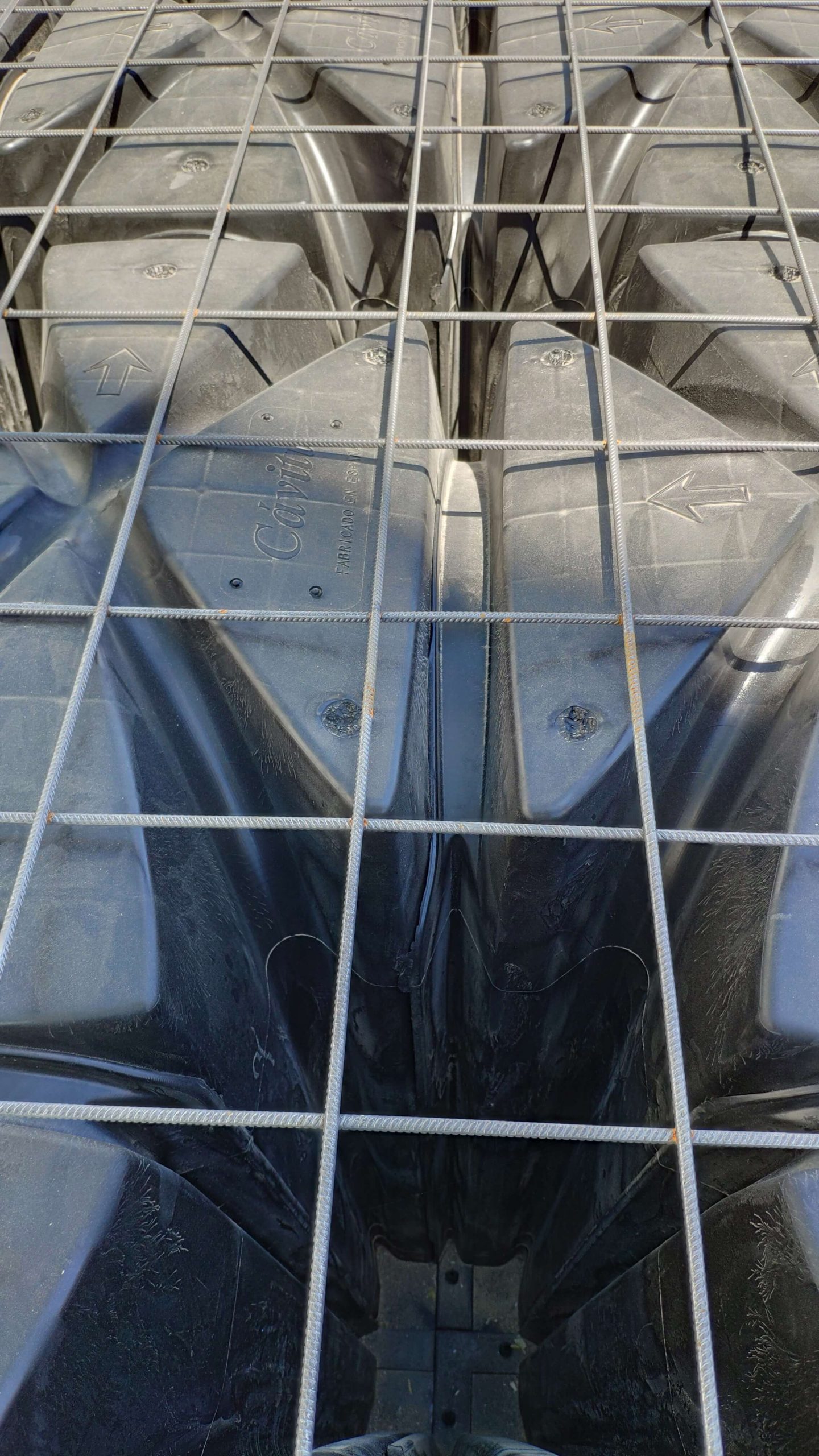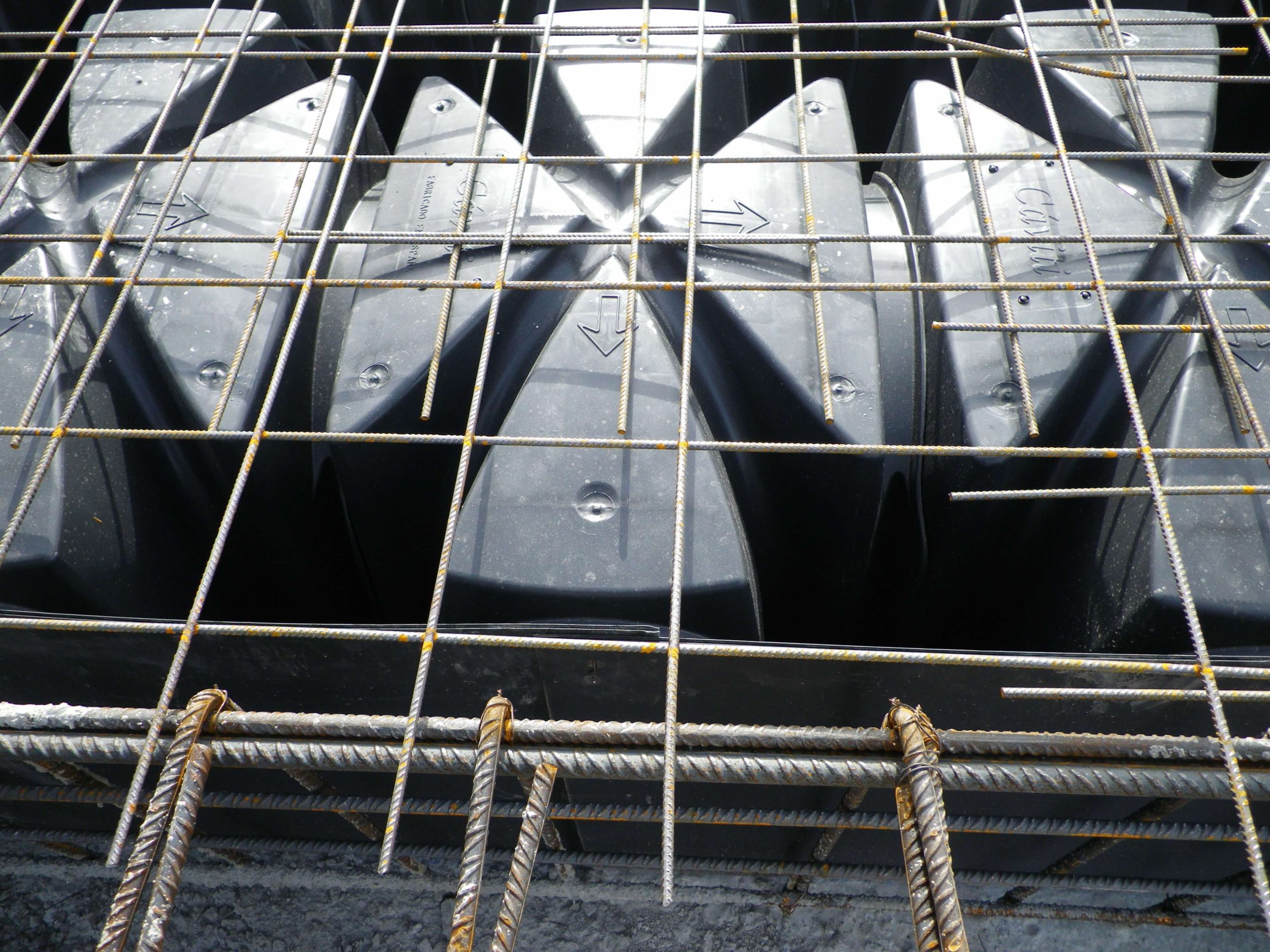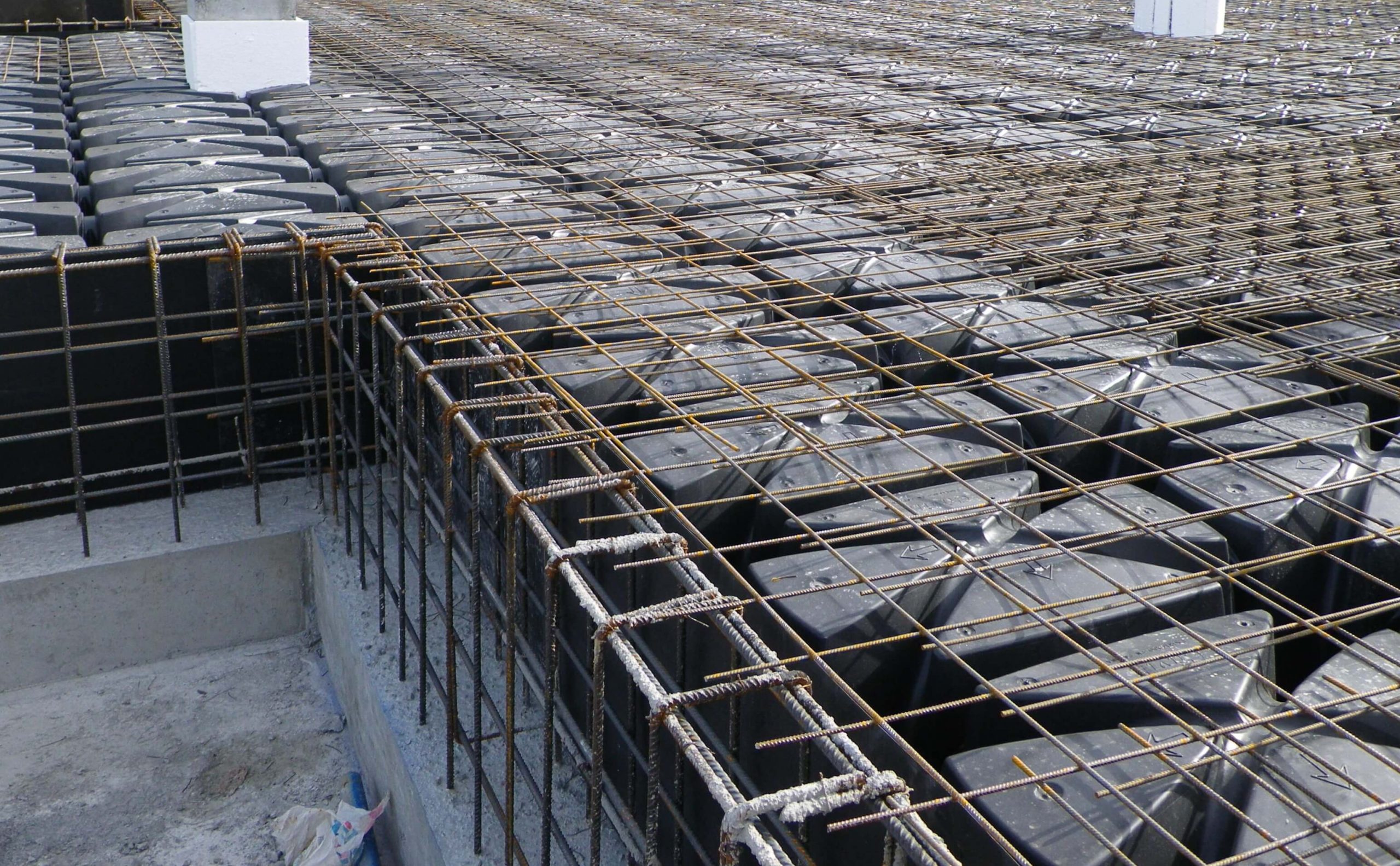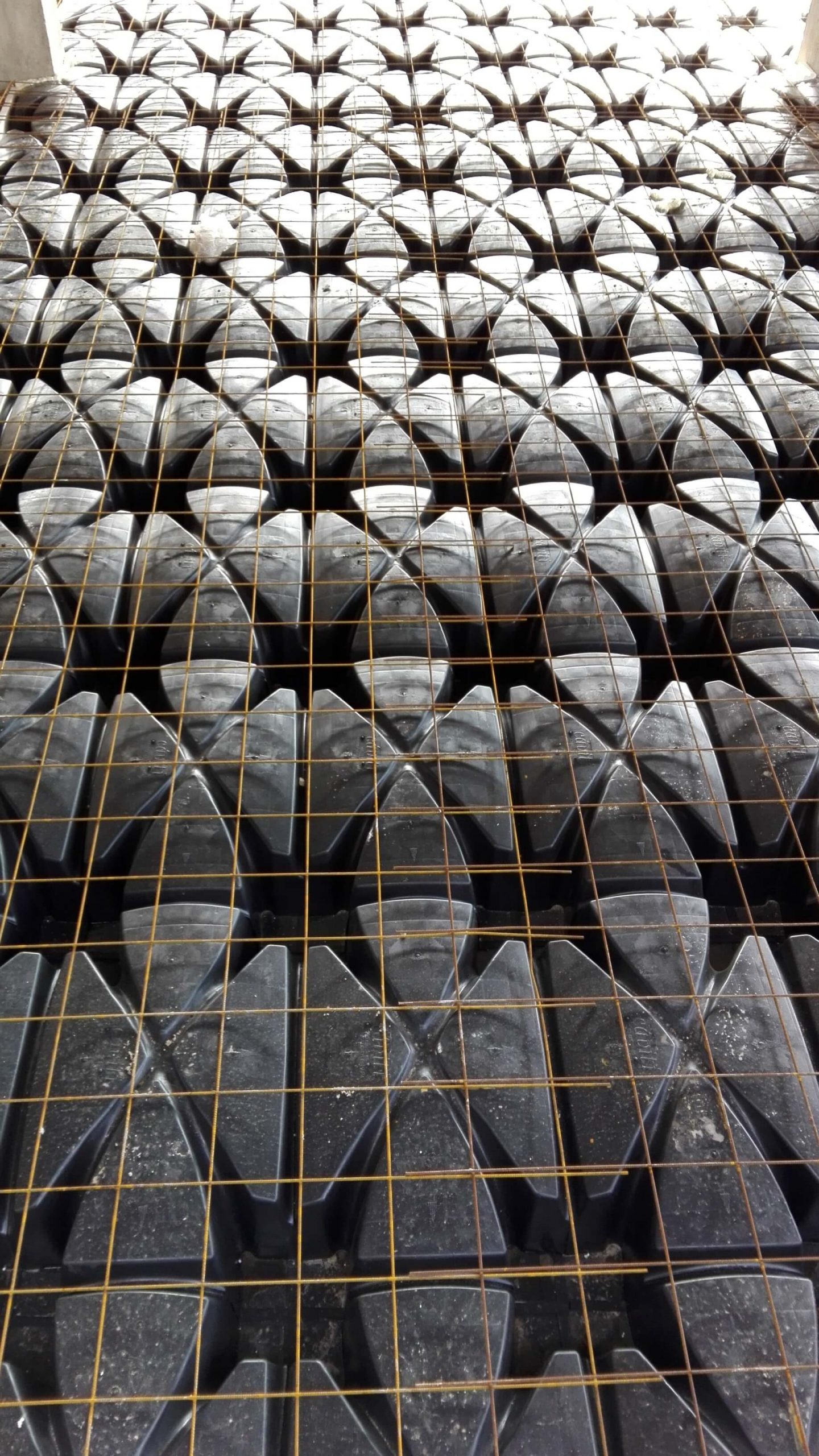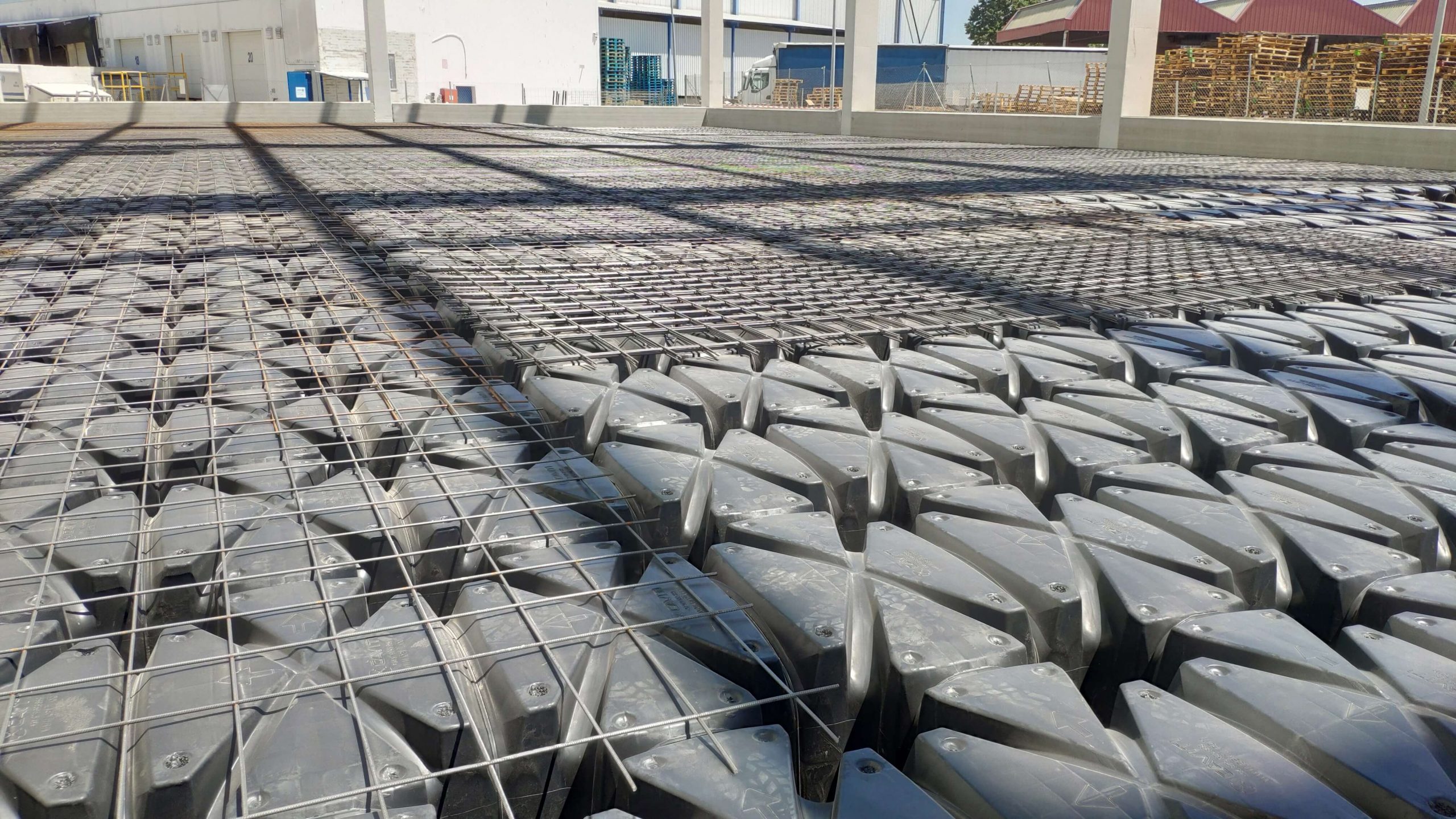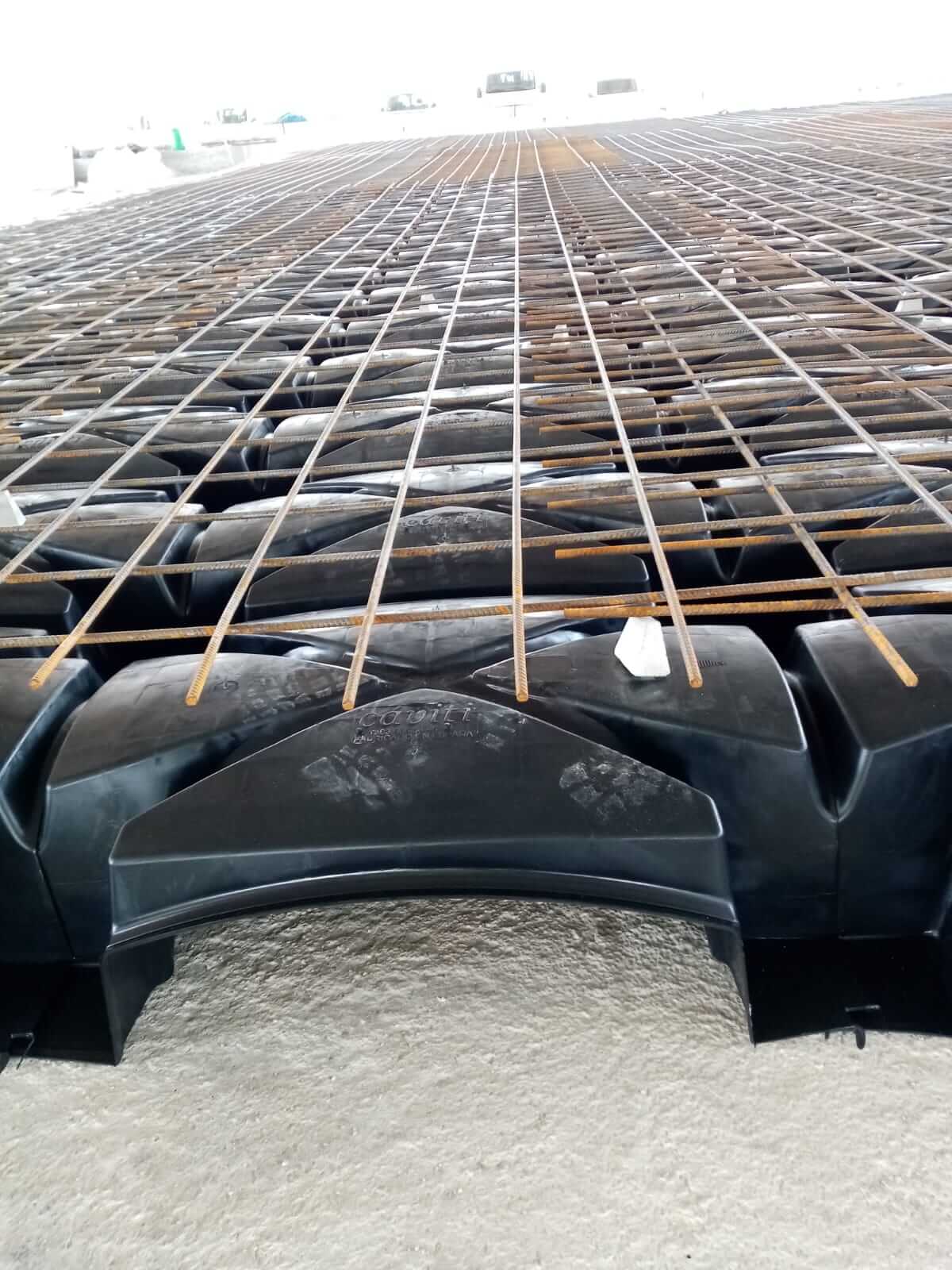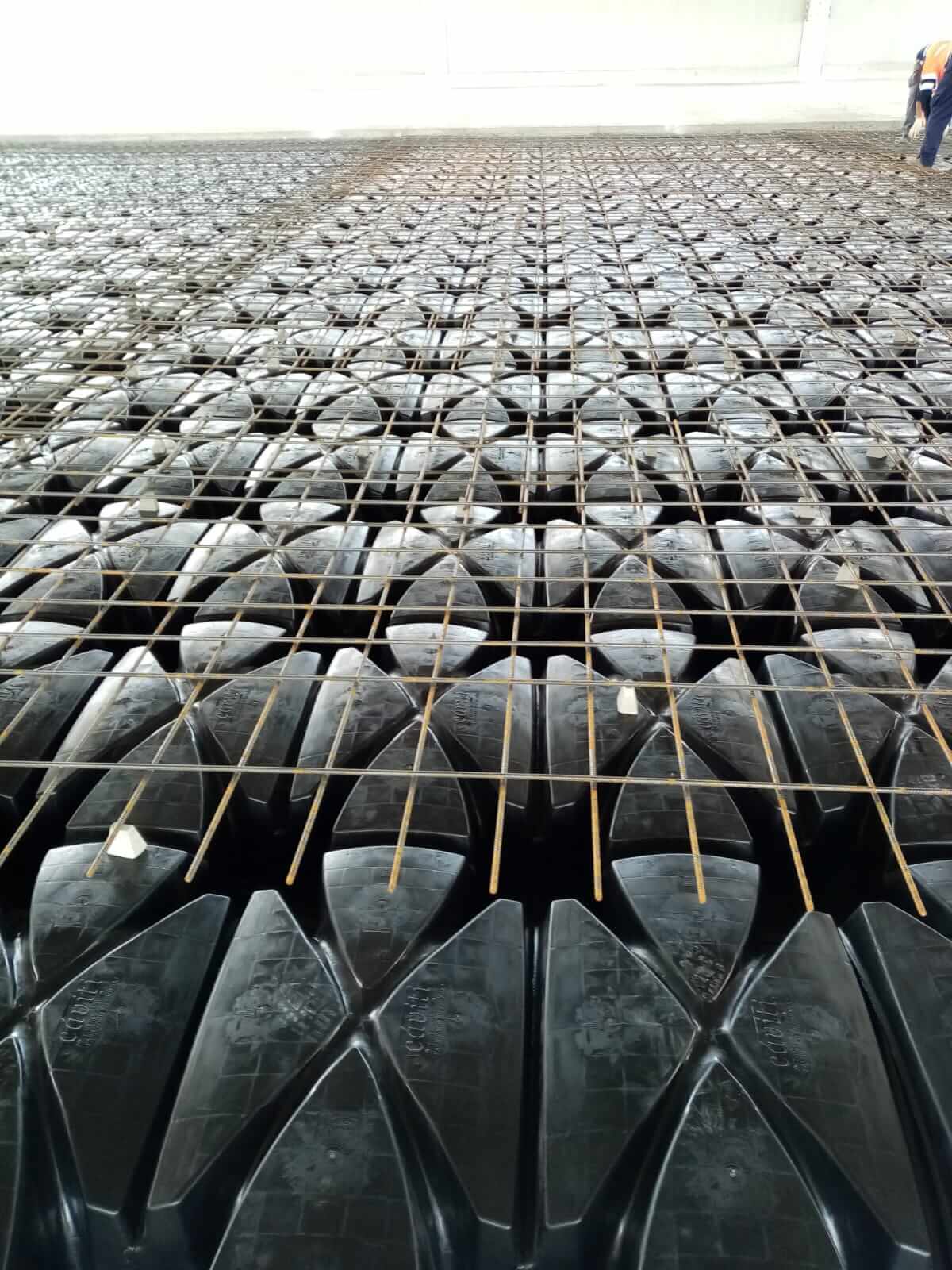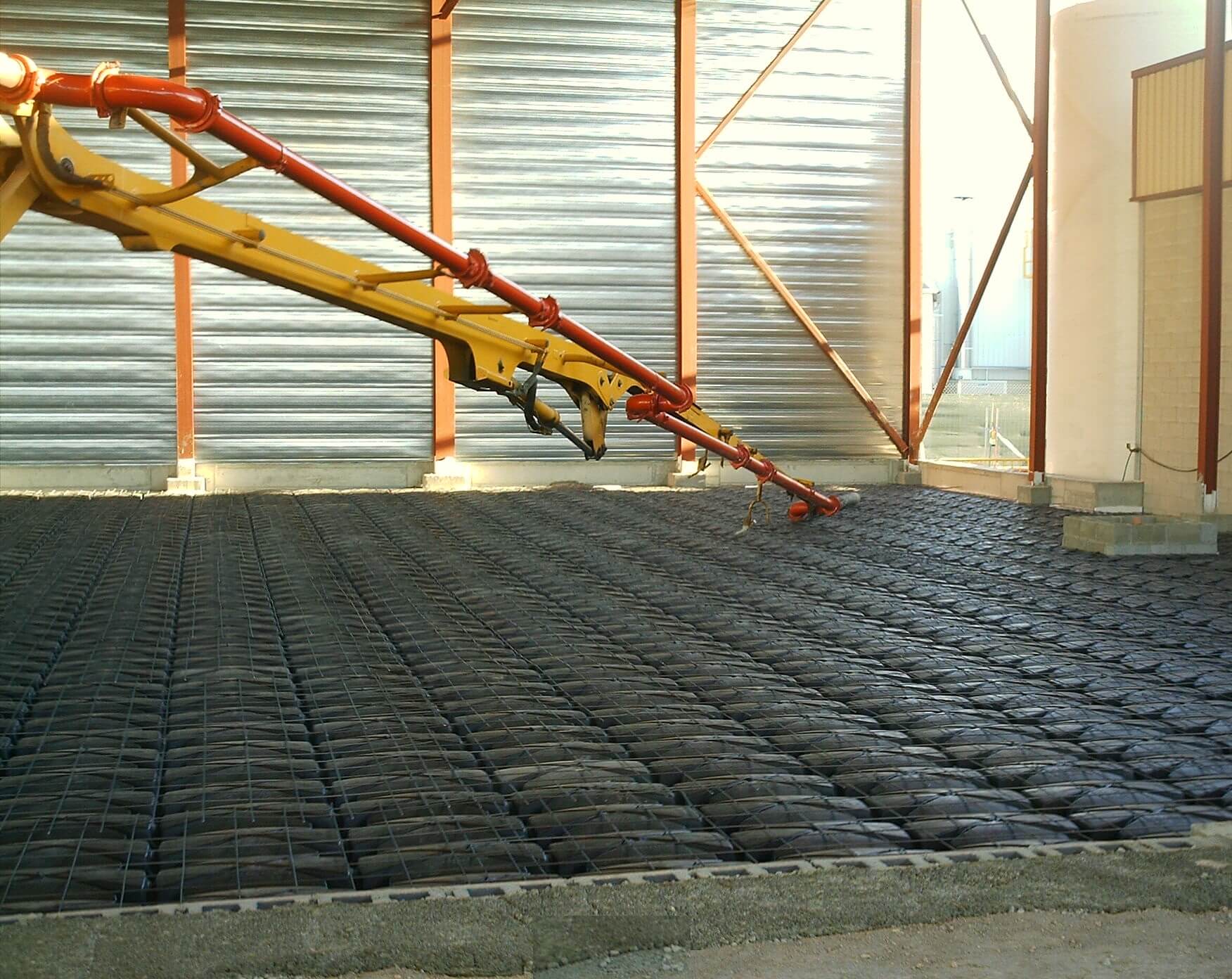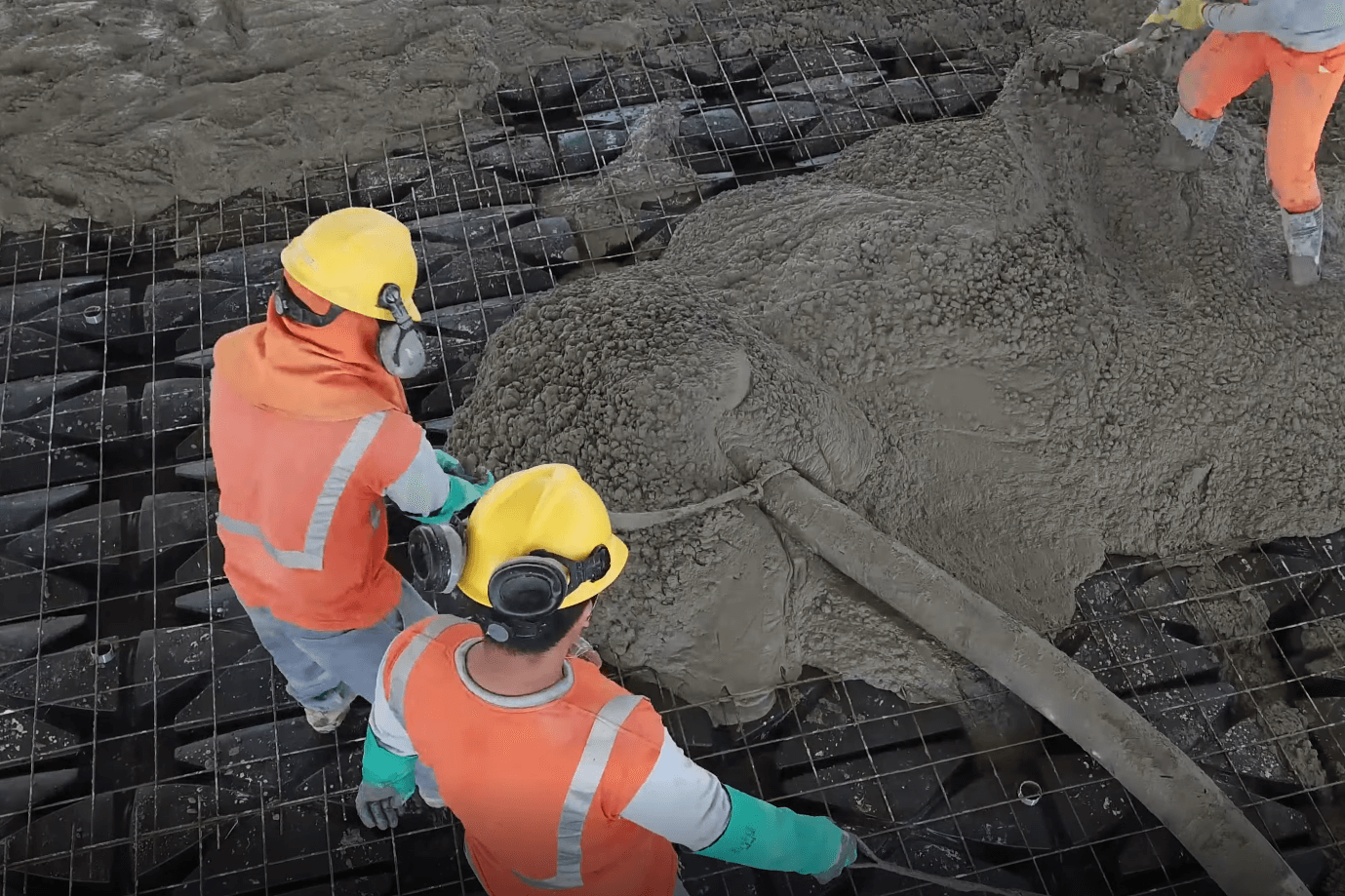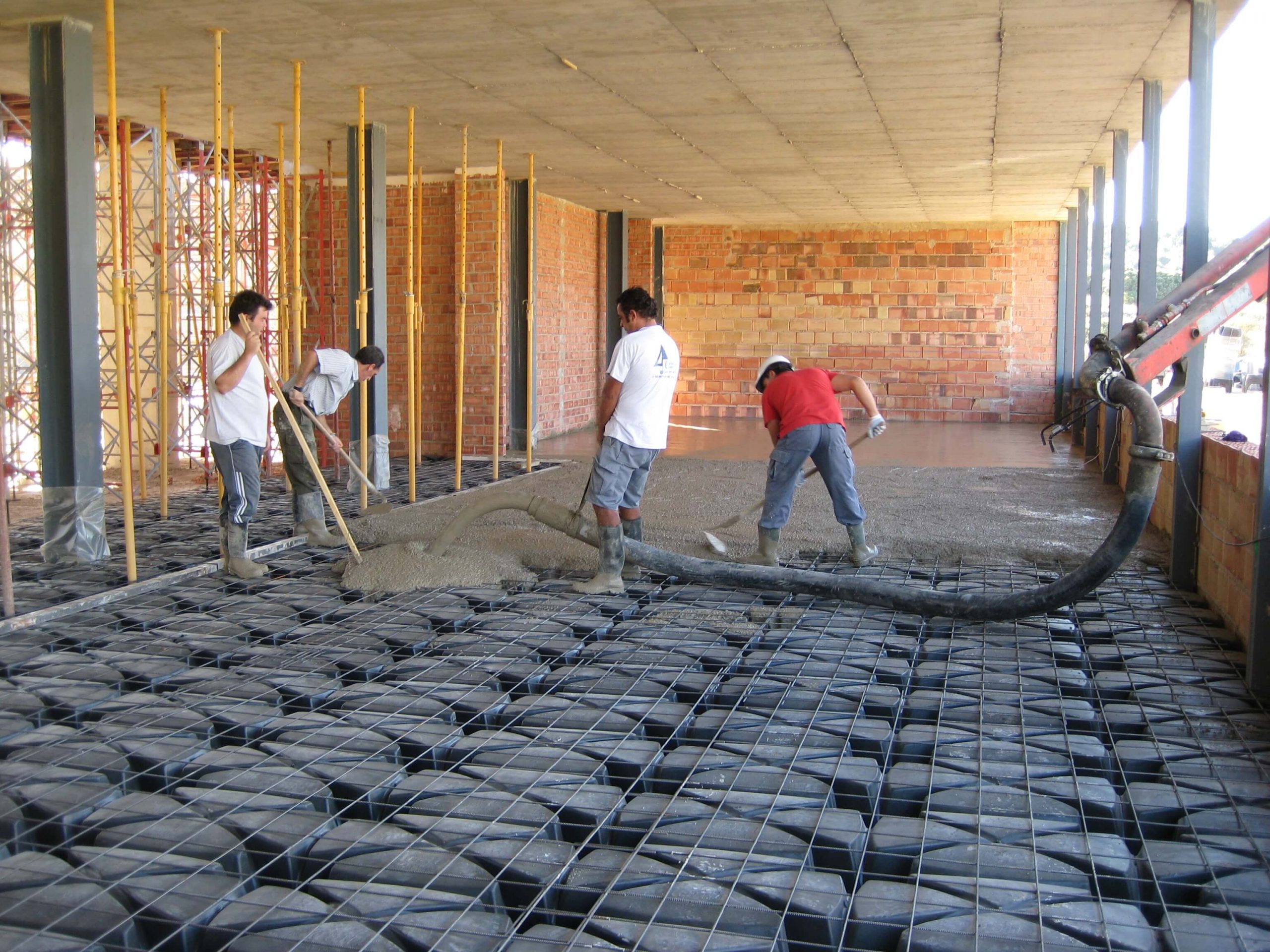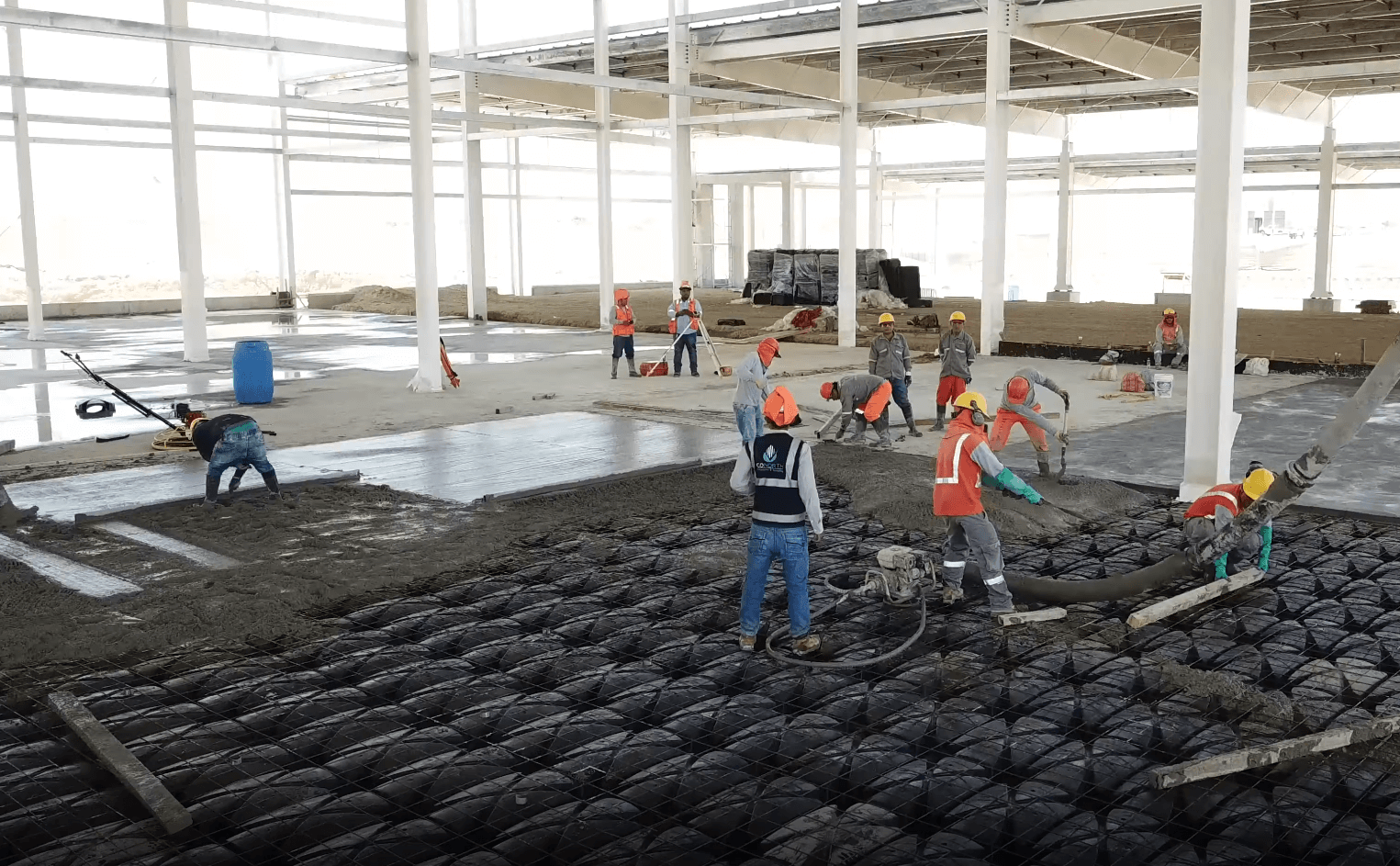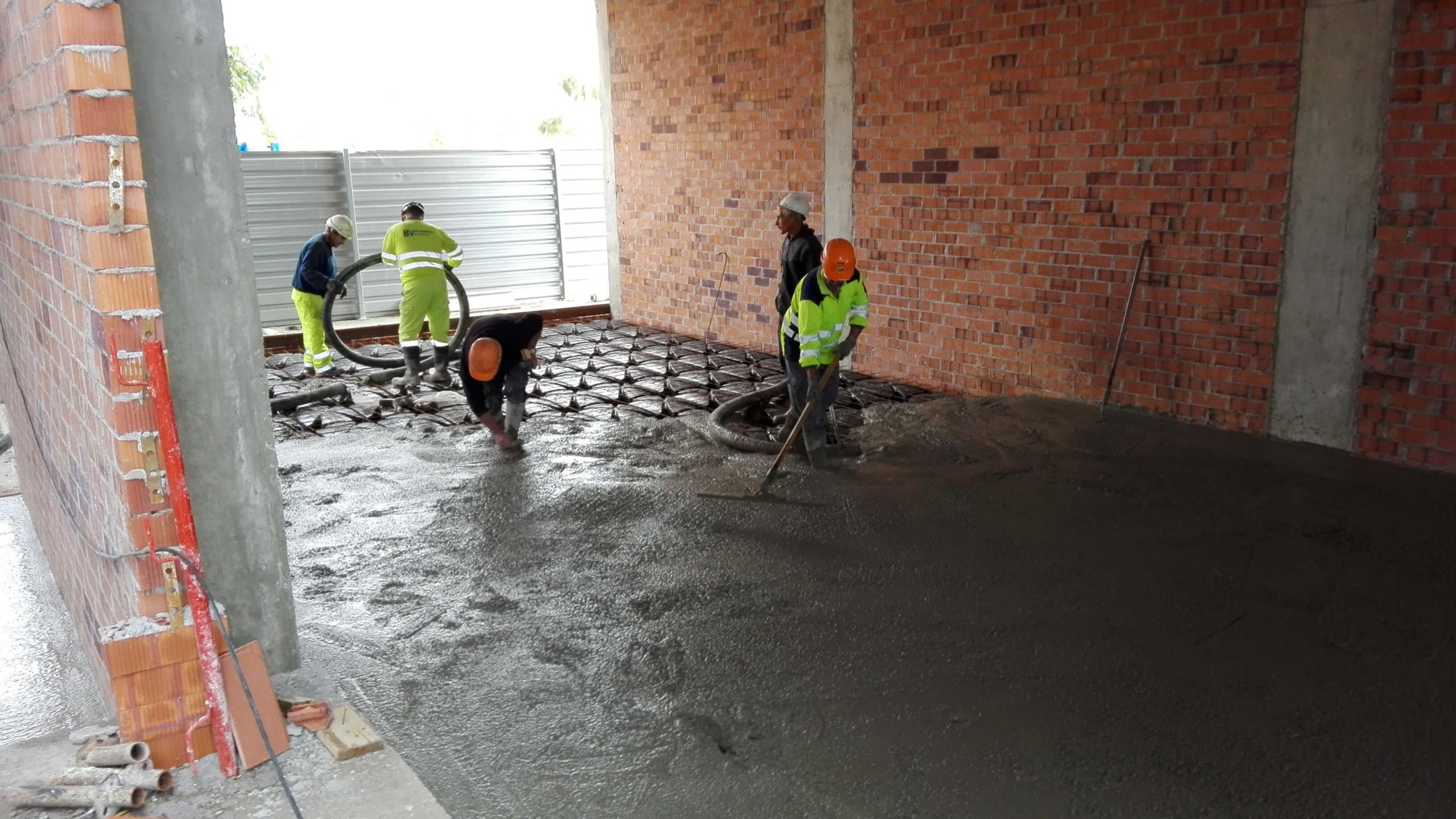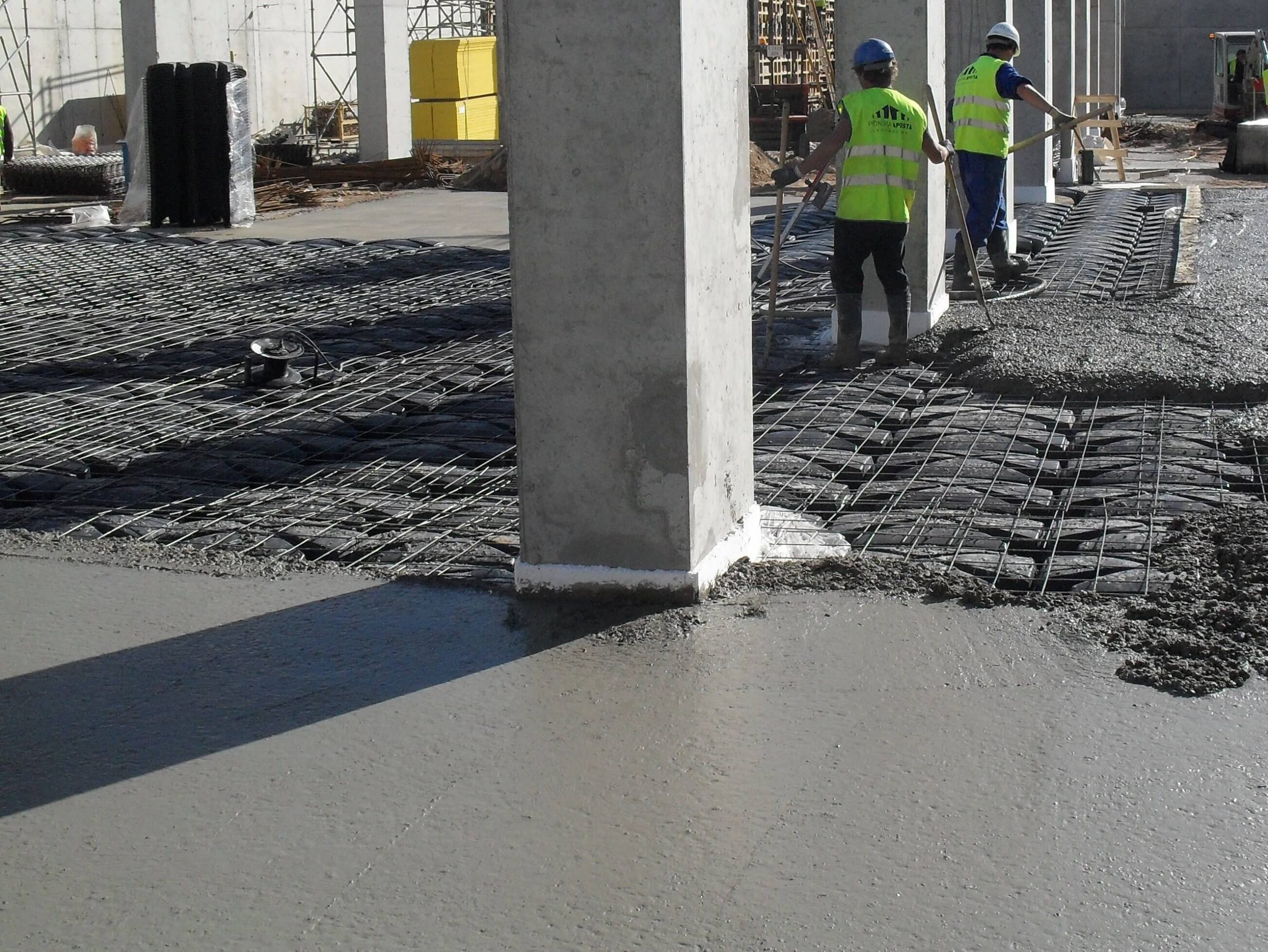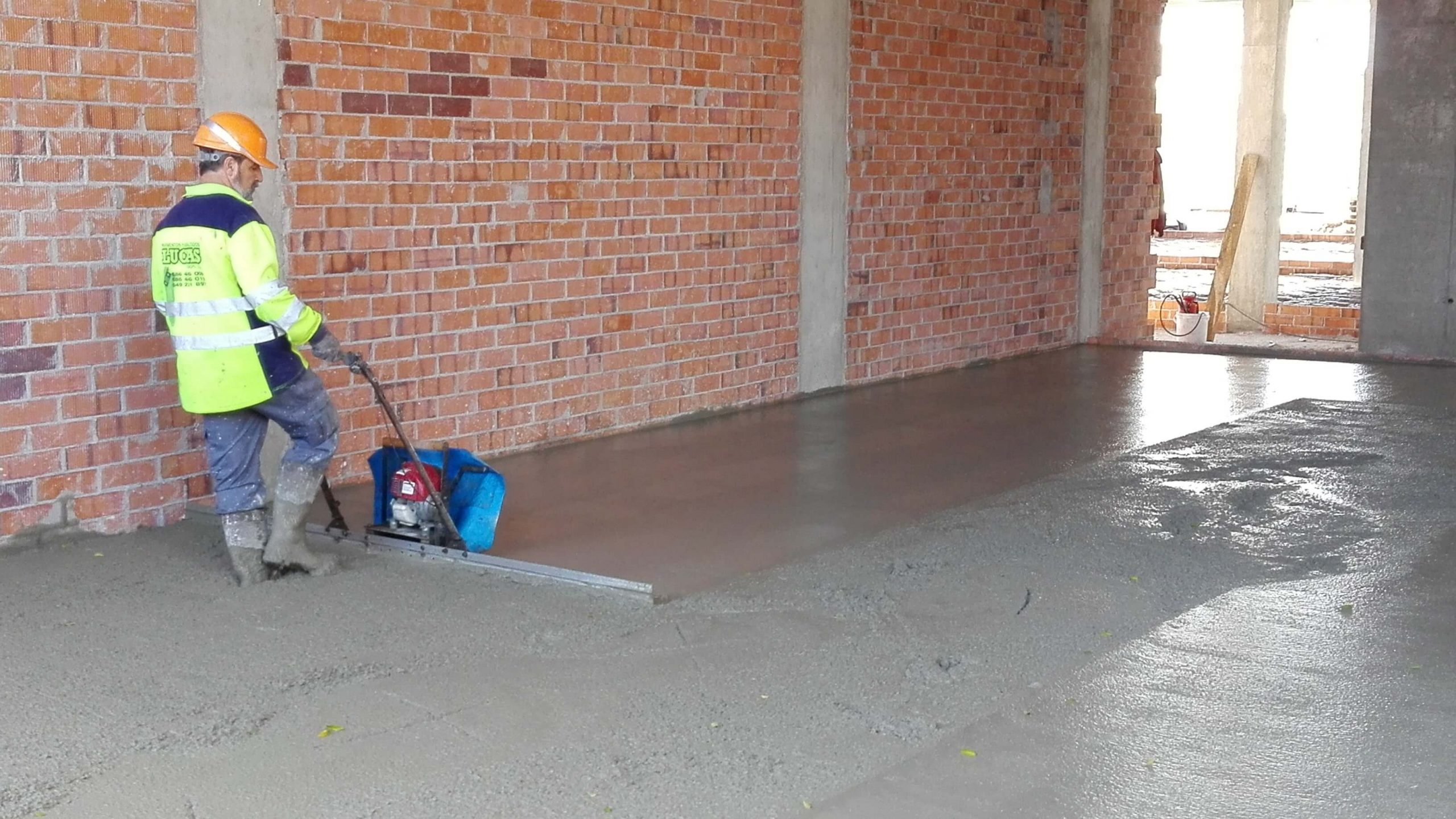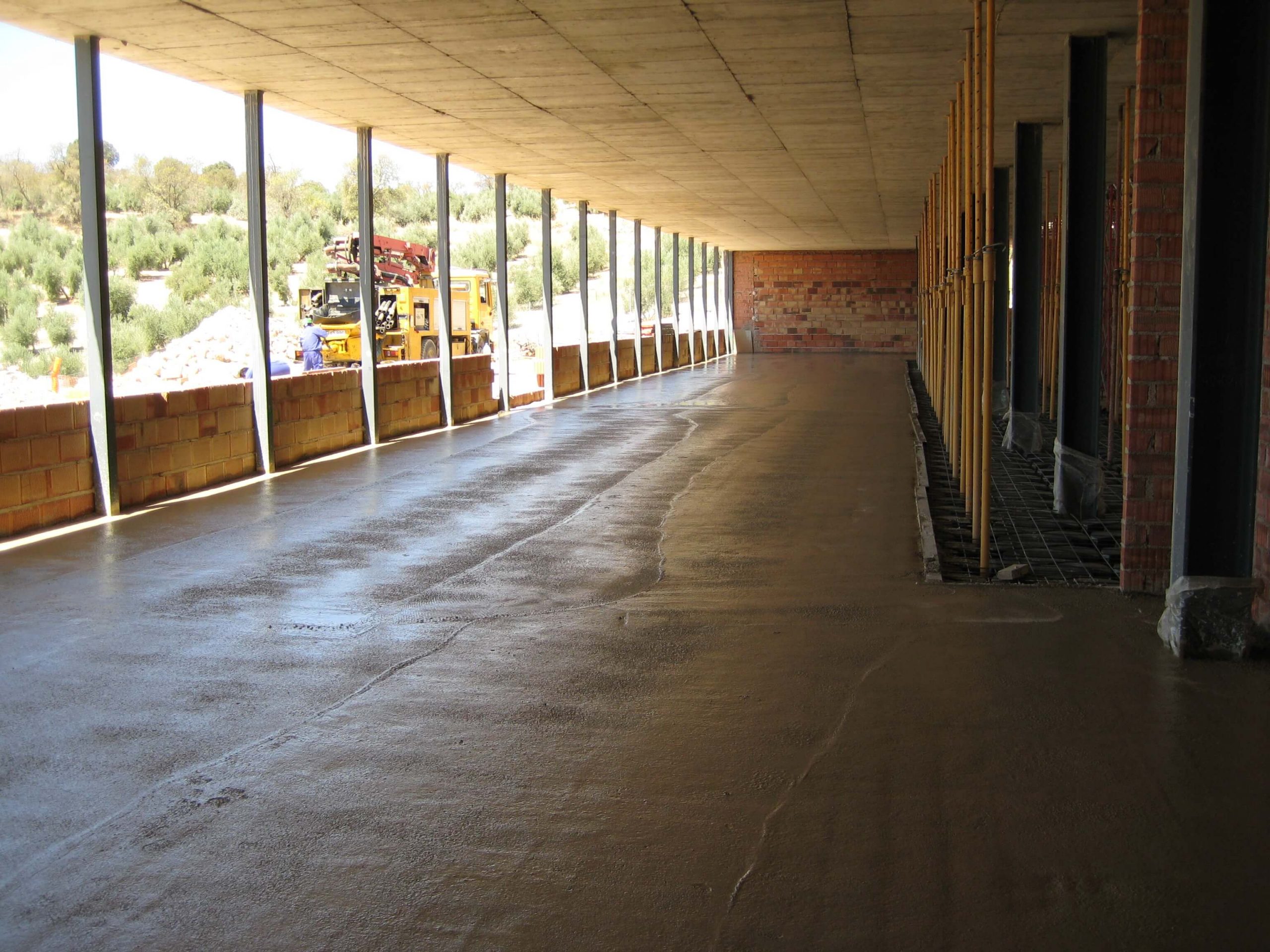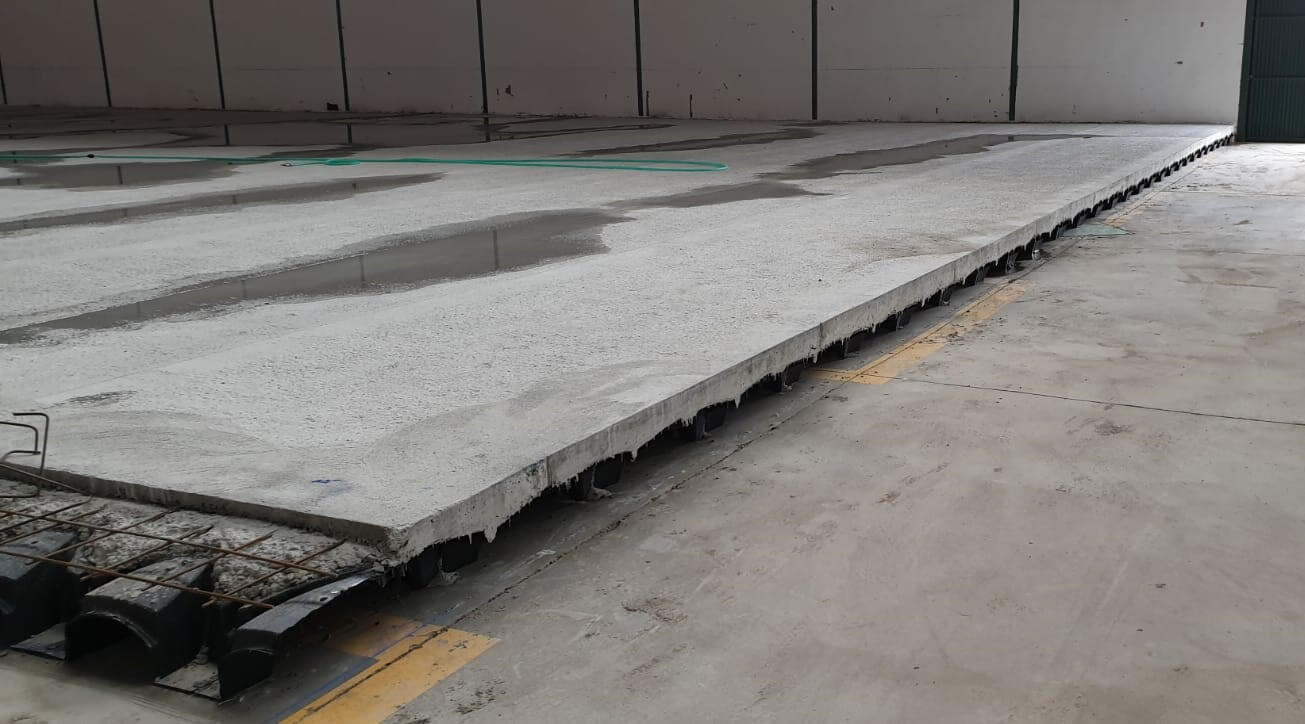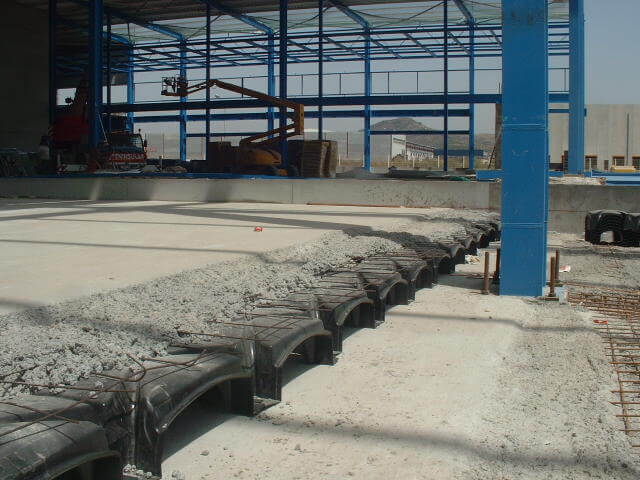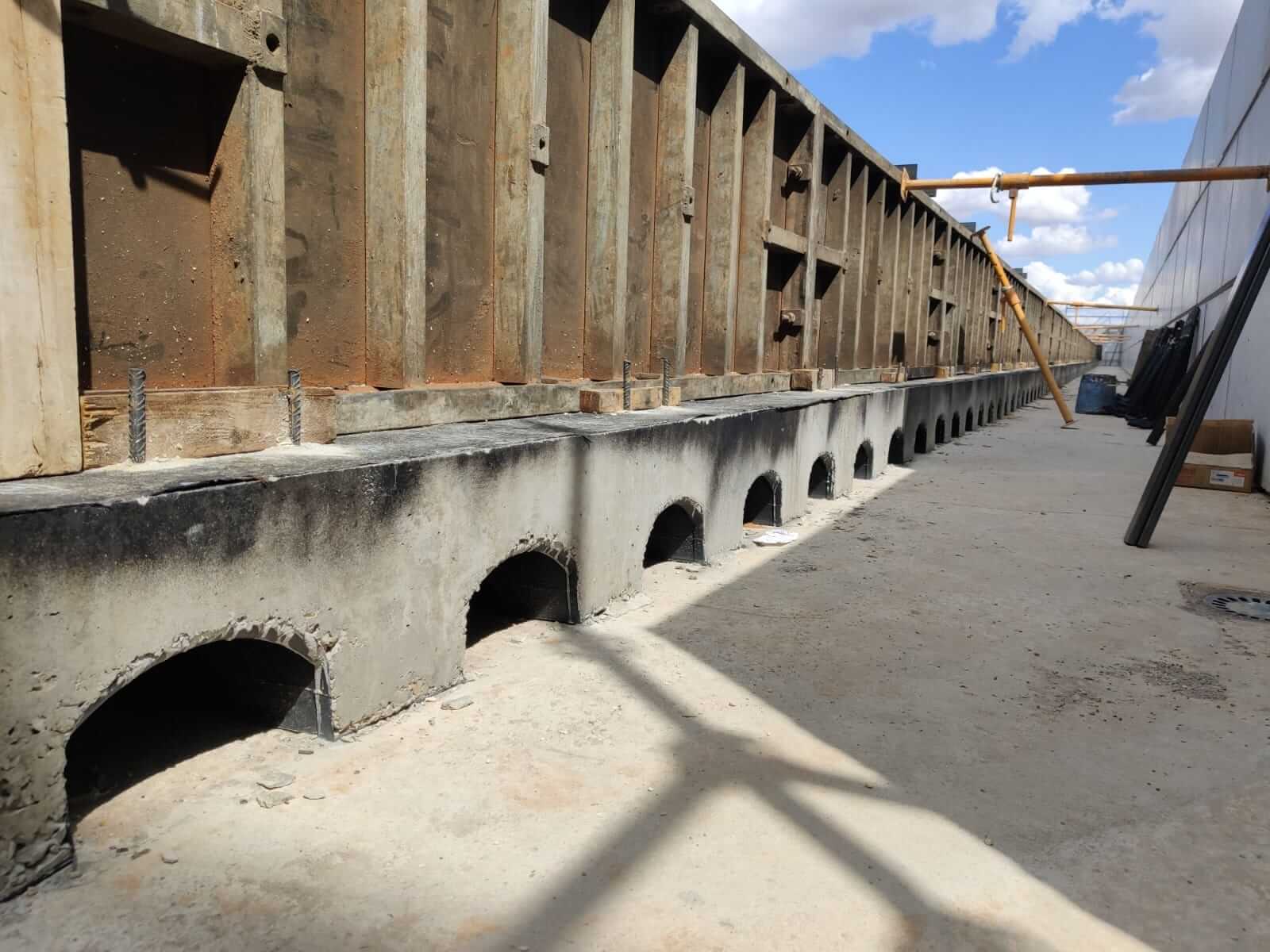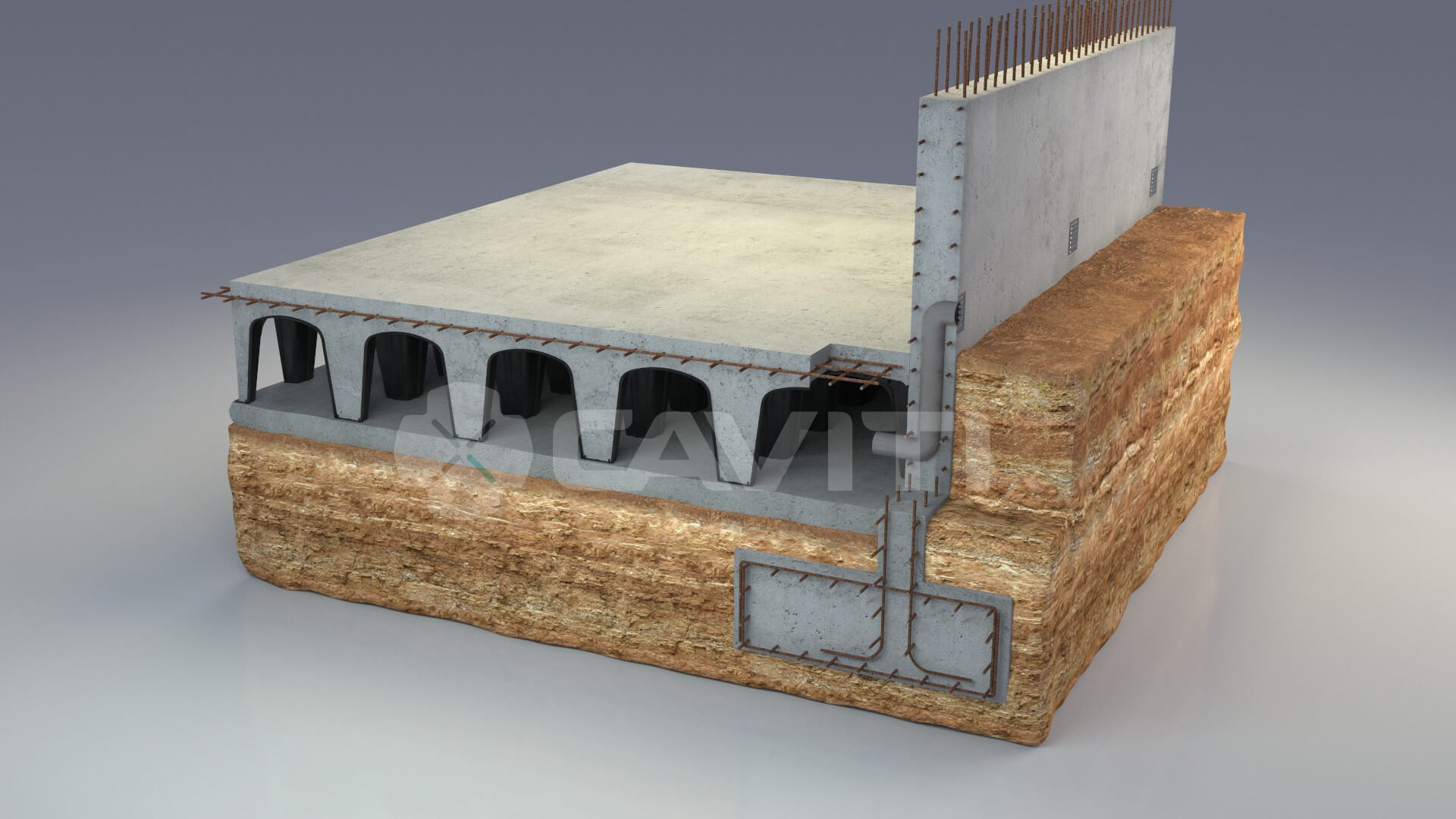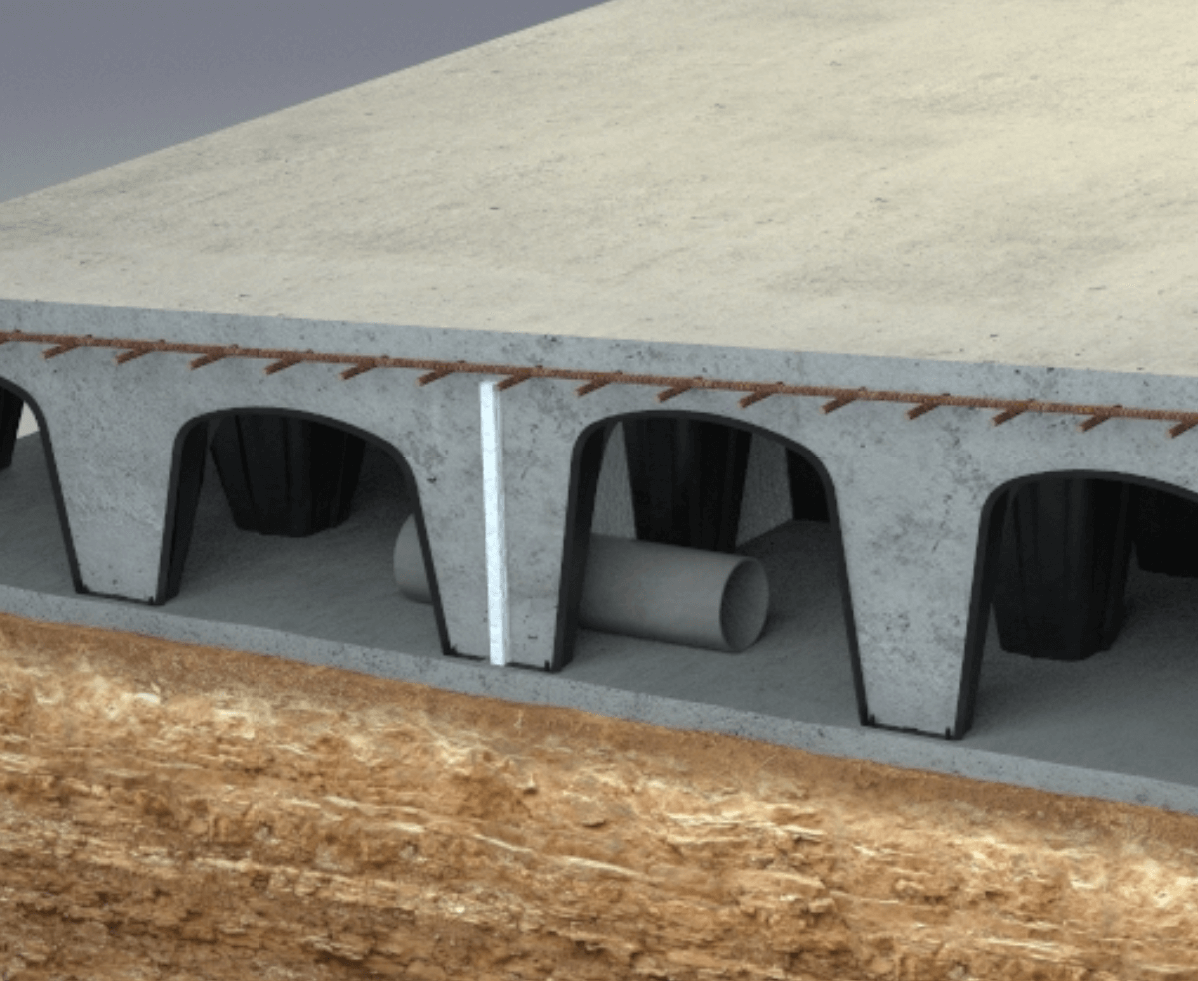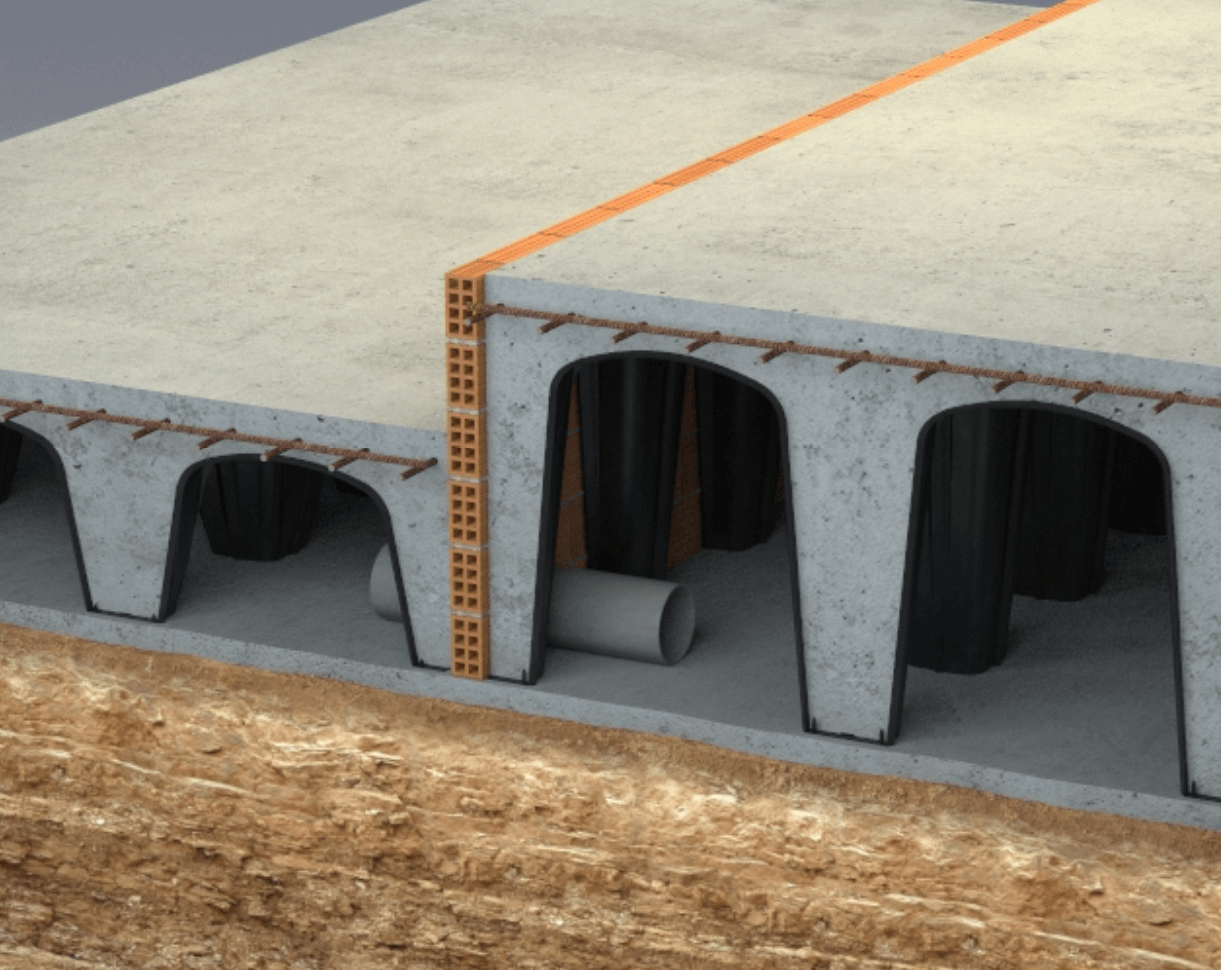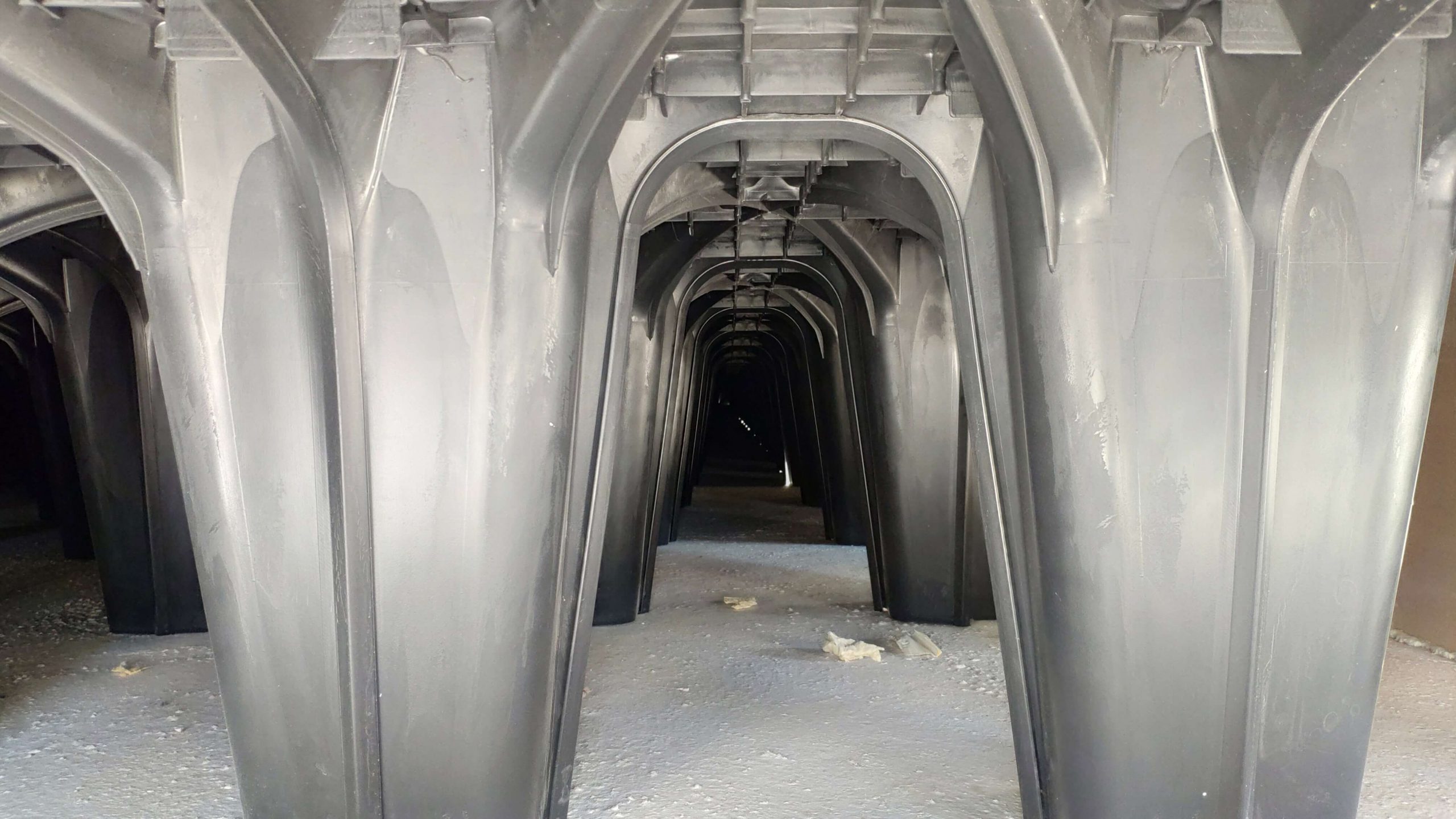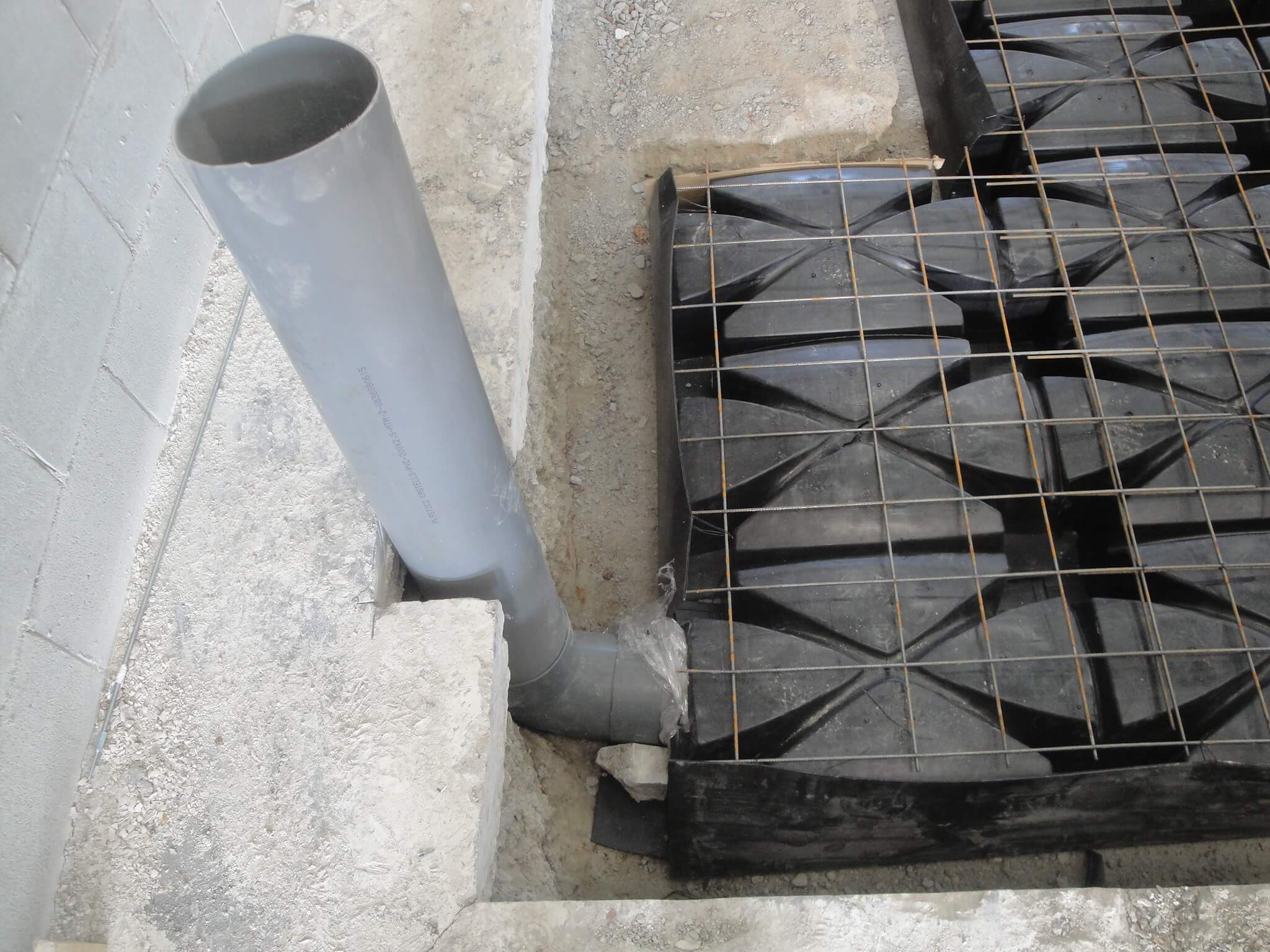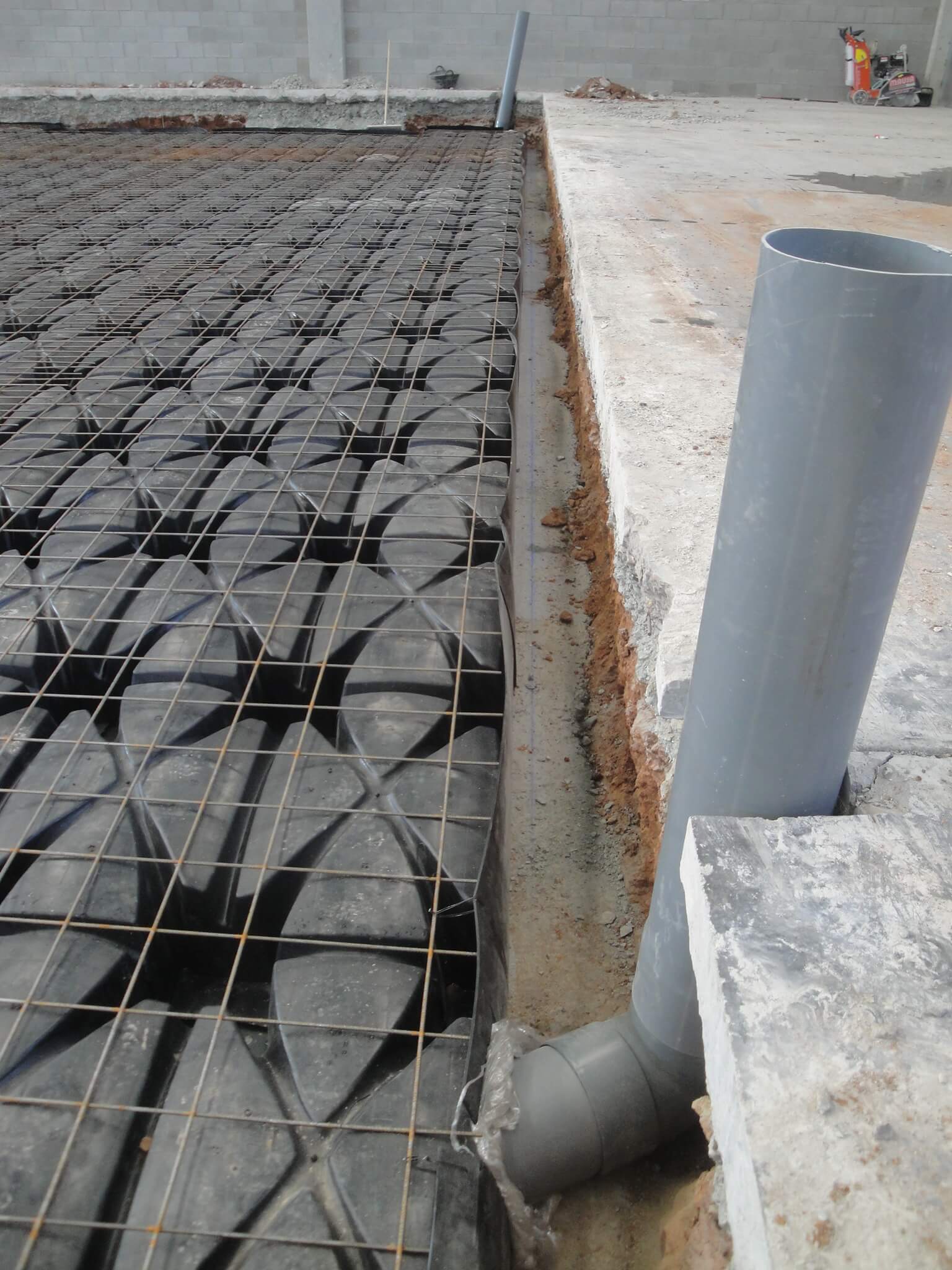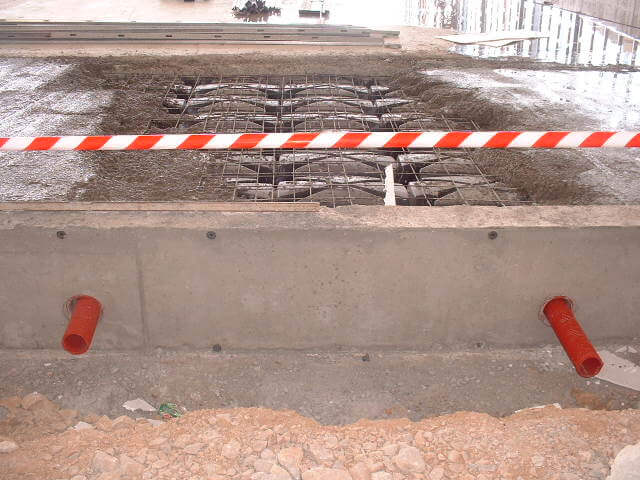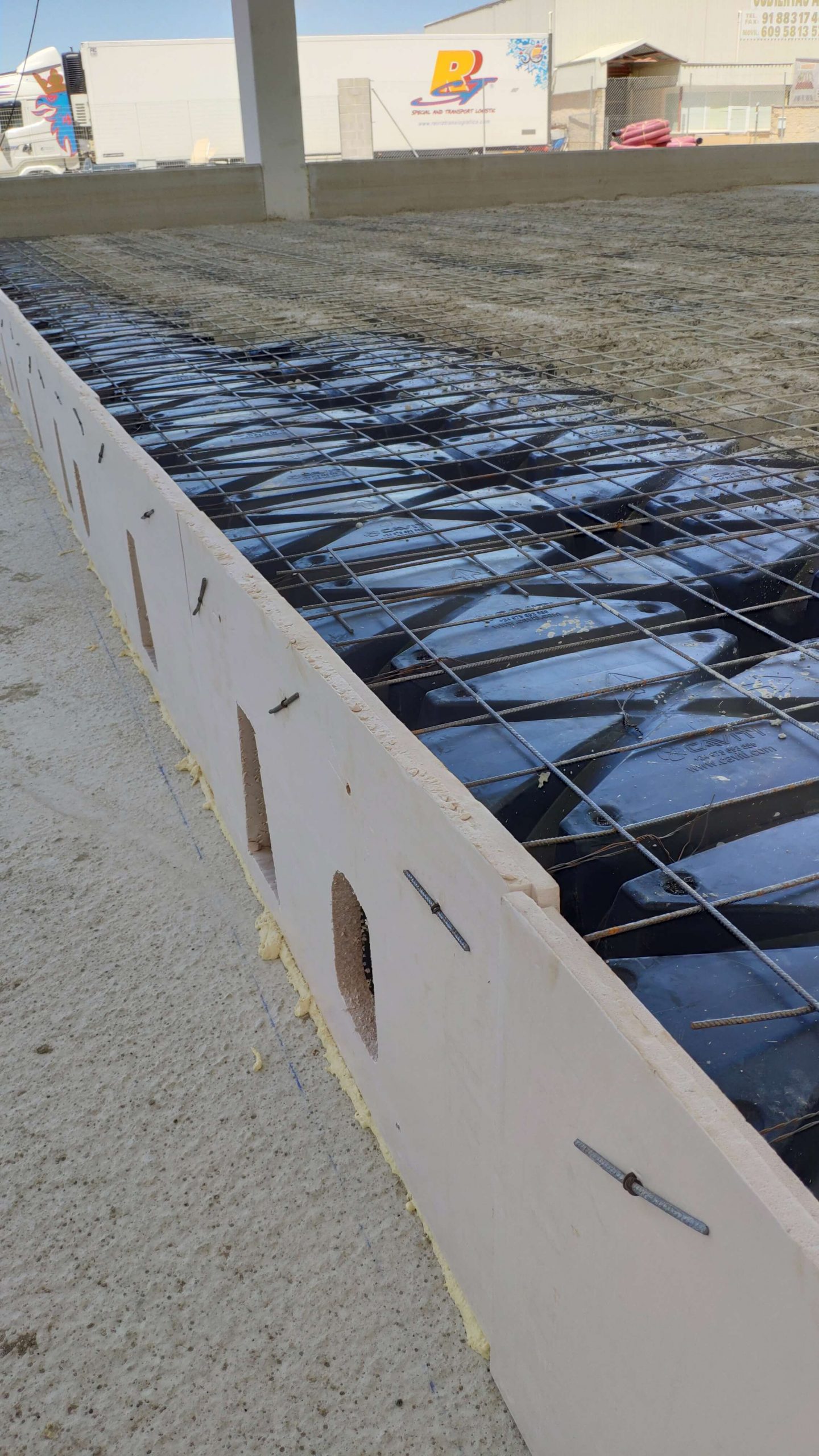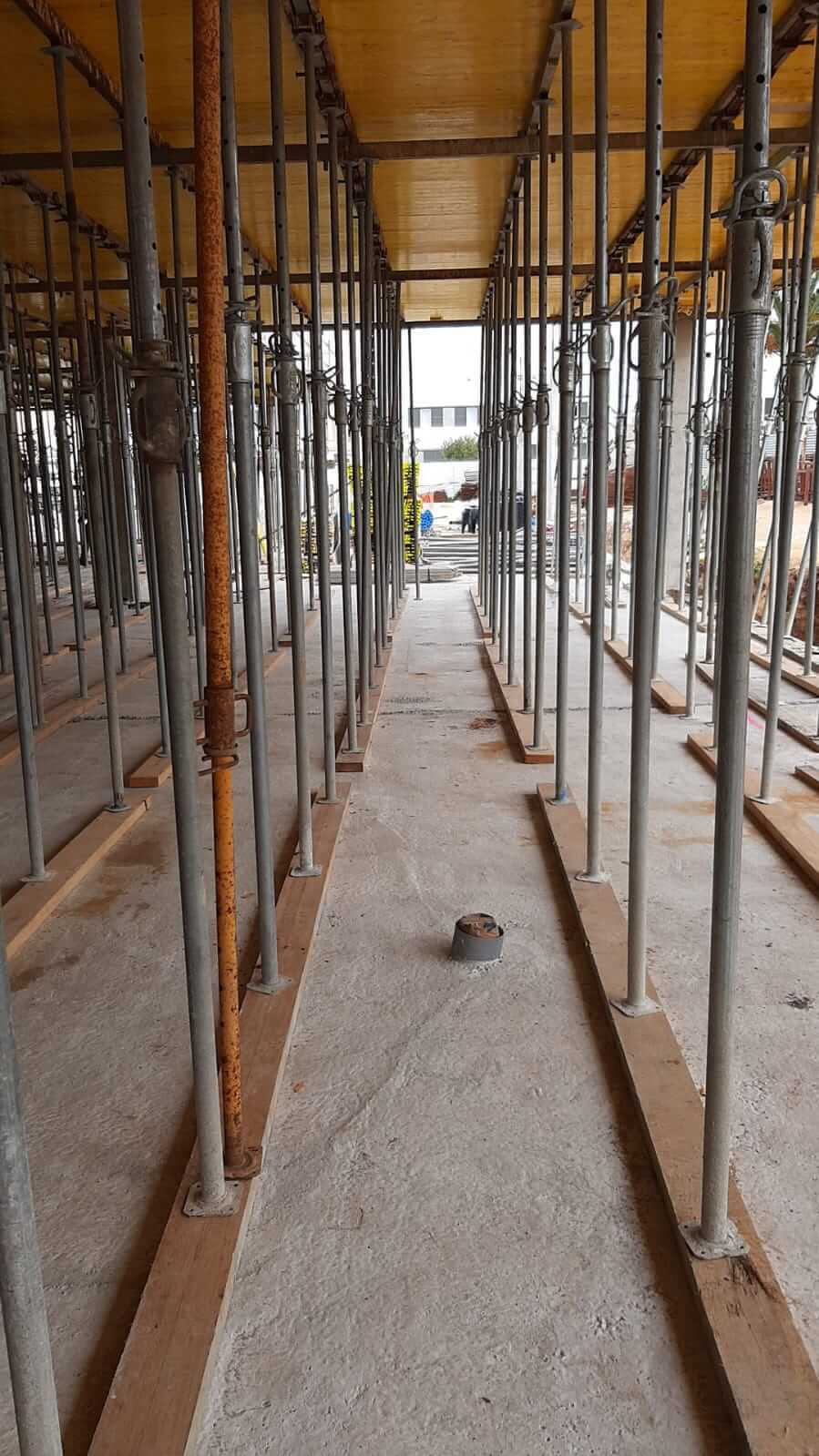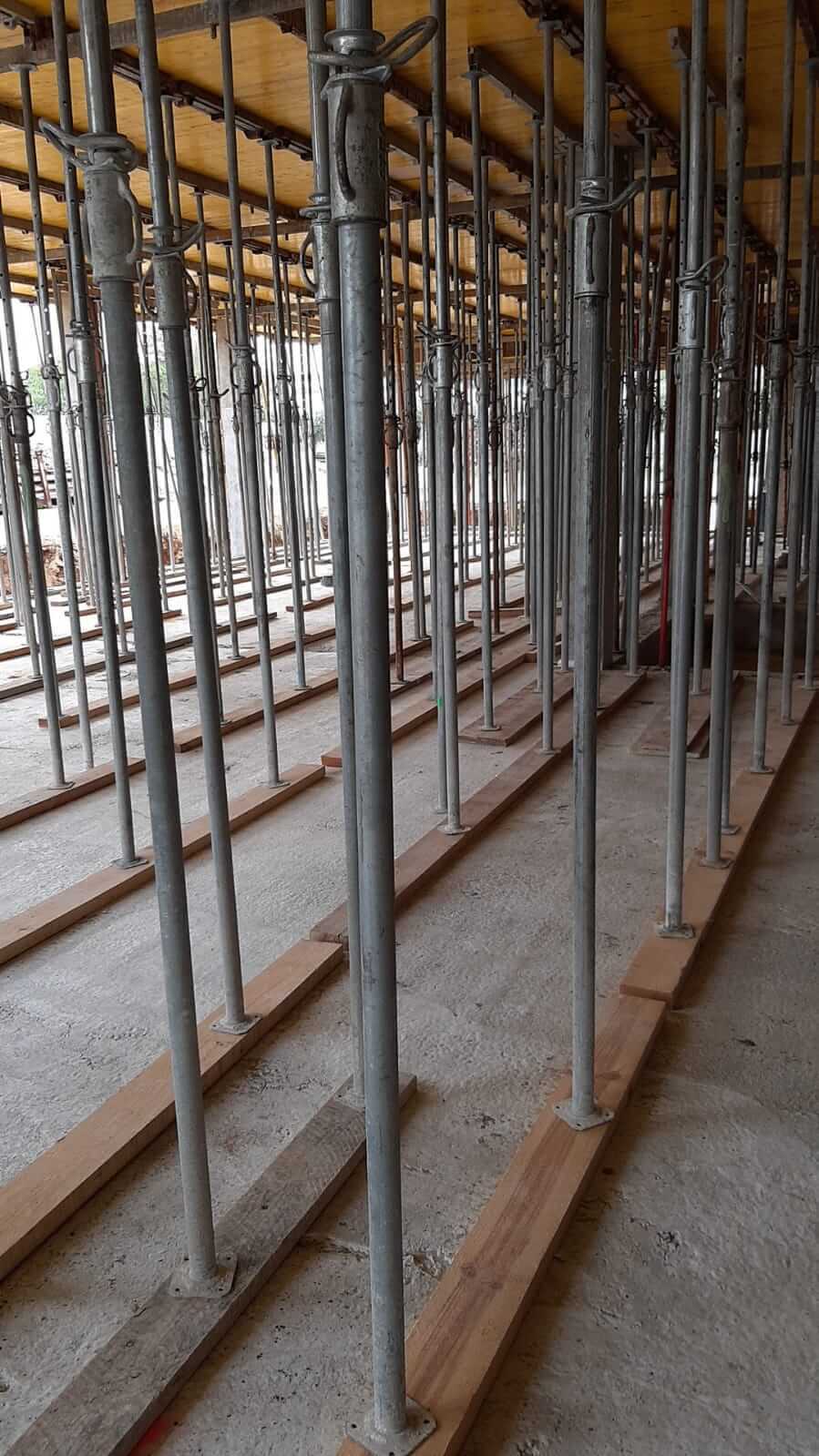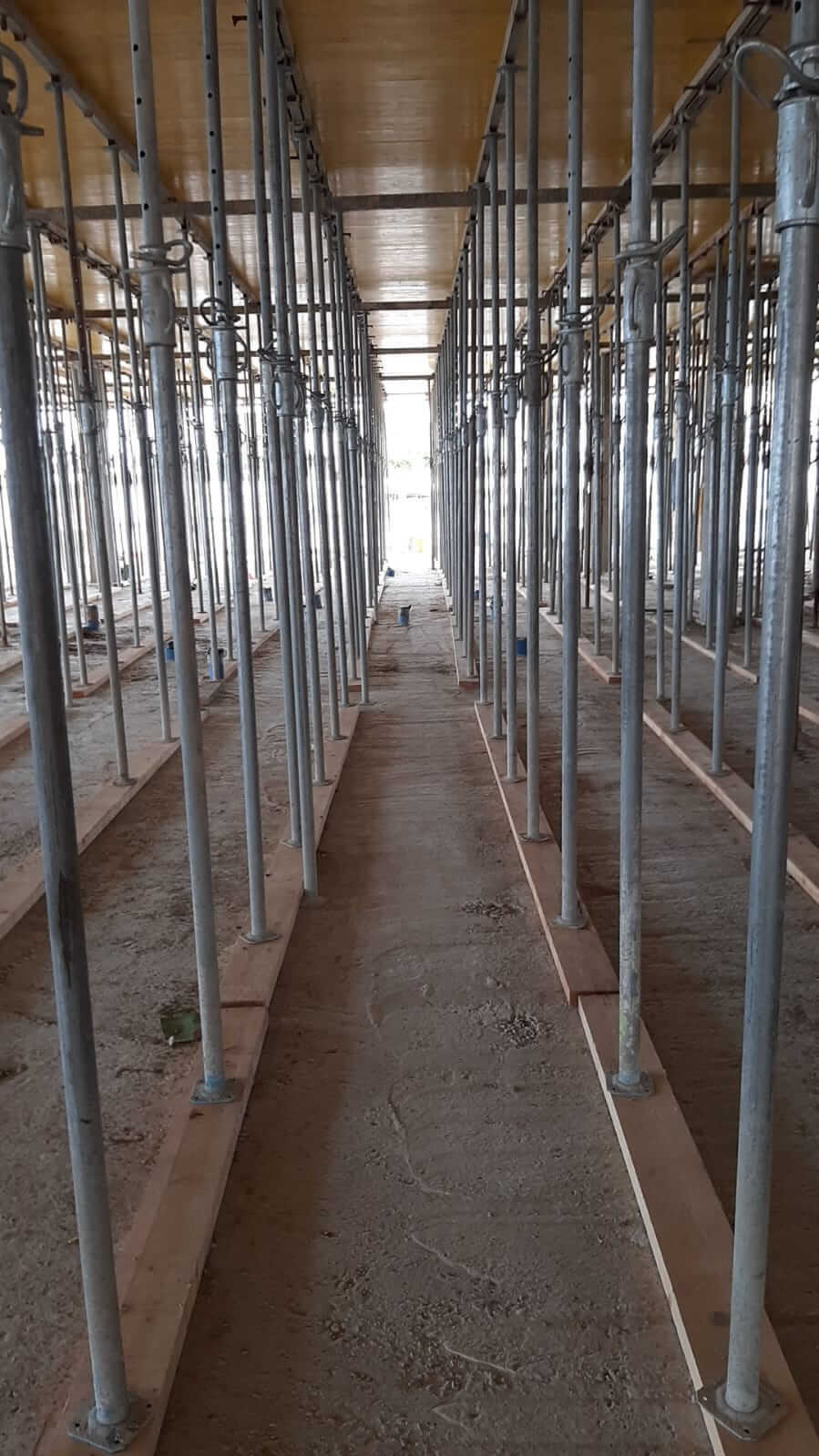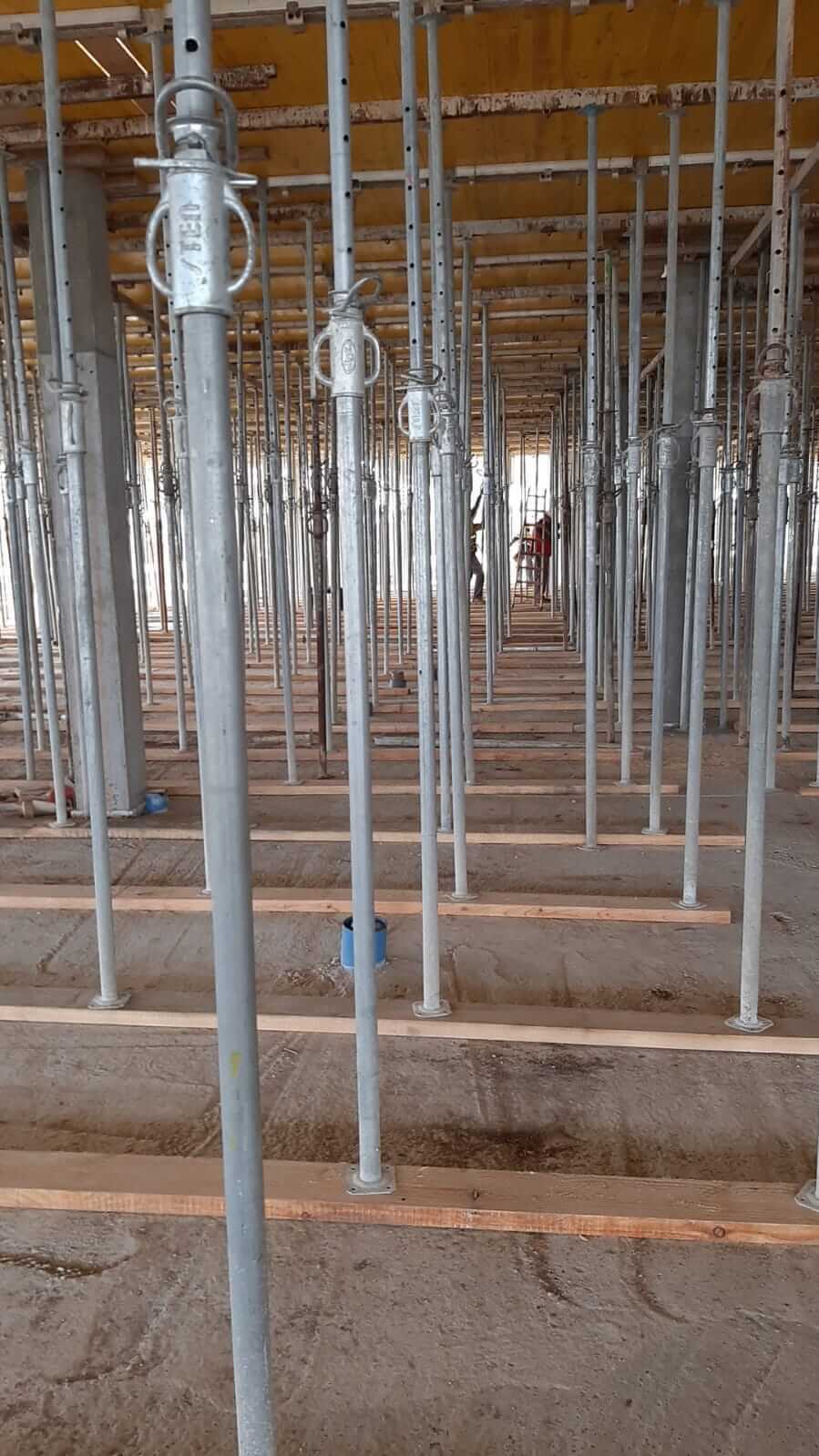Cáviti Slab
Formwork for ventilated flooring, sanitary slabs and screeds are manufactured using plastic pieces, creating a dome shape which makes them adaptable to all types of geometries, usage loads and supports.
Definition
The construction system of ventilated flooring slabs, sanitary slabs and Cáviti screeds, is devised using the dome-shaped union of plastic pieces, which generate support pillars, isolated against the ground, and a lower free space for the ventilation of the sanitary chamber, placement of facilities and control of radon gas emissions.
Caviti modules are manufactured in different heights for use depending on the needs of the project in which we are involved These pieces are joined together quickly by means of rebates, giving rise to a permanent formwork that, once concreted, features the bearing capacity to withstand large loads given the geometry it generates.
Characteristics
The Cáviti system is intended for the following uses:
- Sanitary slabs and ventilated floor section.
- Light roofing covers.
- Screeds of existing floorings.
- Refrigeration and industrial warehouses.
- Refurbishments.
- Swimming pool screeds.
- Vehicle traffic and parking areas.
- Firefighter passageways.
- Pedestrian areas and platforms.
- Sand or mortar may not be used in filling the Cáviti formwork.
- The support element must avoid large irregularities that generate poor support for the pillars generated by the system.
- For high, even, point or dynamic loads, the section must be sized in collaboration with the Cáviti technical department (caviti@caviti.com).
- Compression layers less than 5 cm, or not reinforced, would not meet the standard.
- Concrete with resistance not less than 25 N/mm2 (HA25) must be used.
- The support on expansive terrain or with a very low bearing capacity, must be sized in collaboration with the technical department of Cáviti (caviti@caviti.com).
- All cases not specified in our Suitability for Use Document (DAU 14/086).
The flatness of the support (not horizontality) is one of the most important issues in the installation phase, since faulty supports of the system pillars can generate weak points in its resistance.
Another of the standout issues is that referring to the bearing capacity of the support ground, for this reason, it is advisable to build cleaning concrete pre-screeds that will allow us to improve the behaviour of the piece as a whole from the viewpoint of resistance and of the assembly itself.
In cases in which the terrain has sufficient resistance and the flatness indicated above is taken care of, the Cáviti modules can be supported directly on it.
The perimeters must not present any special condition, and may be reinforced concrete walls, masonry walls, pillars, bands, braces, beams or foundation footings. These encounters are easily resolved by cutting the piece “on demand” and adapting it to the geometry in question.
In these cases, as a sealing element, concrete joint and thermal bridge break, Cáviti recommends the placement of polystyrene sheets for the most suitable functioning of the system.
Only in situations in which the perimeter solids are concreted at the same time as the floor, the perimeter profile must be placed, as formboards or permanent vertical formwork, in order to blind the arches of the system and avoid losses of concrete under the piece, in other cases it would not be necessary.
The concreting phase does not have specific peculiarities, once the mesh is placed, the concrete is poured over the domes either with a platform or with a bucket, it being important to carry out a subsequent not very deep vibration in the confluence areas of the pieces where the system’s pillars are generated. As in any screed, manual or mechanical trowelling is feasible.
El departamento técnico de Cáviti recomienda la utilización de hormigones de resistencia 20N/mm2 (HM20) para los hormigones de limpieza y de 25N/mm2 (HA25) para la solera Cáviti propiamente dichas, pilares y capa de compresión.
In any event, special resistances or specific environments depending on where the work is located, will be defined in the project phase.
HA-25/B/25/IIa, HM-20/B/25/IIa or higher performance concretes are considered suitable for normal exposure classes with high humidity.
Electro-welded meshes will be used that meet the technical requirements set forth in UNE 36092:96, with the name B-500T and dimensions ME 15×15, ME 15×20, ME 20×20 and diameters of 6 mm.
